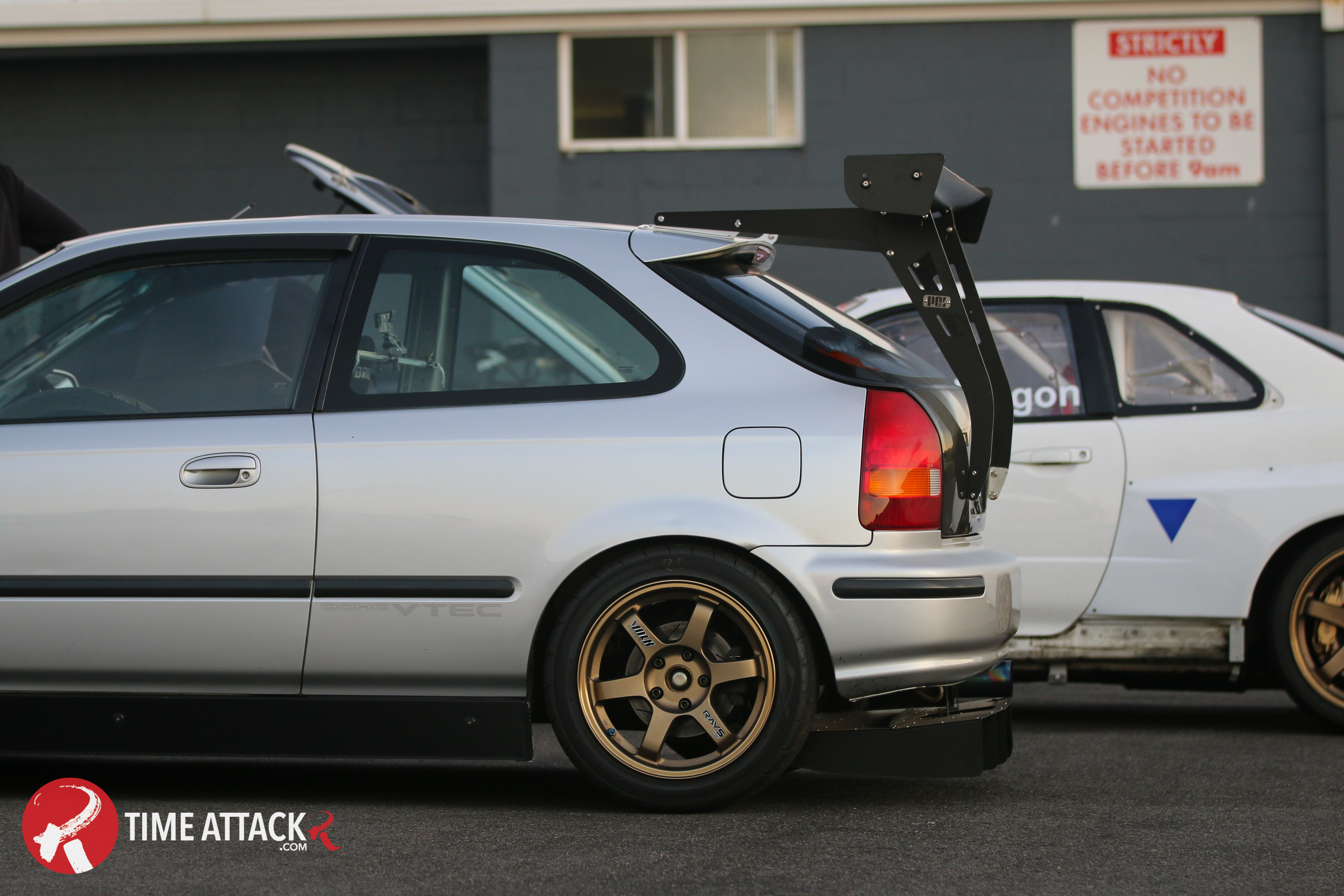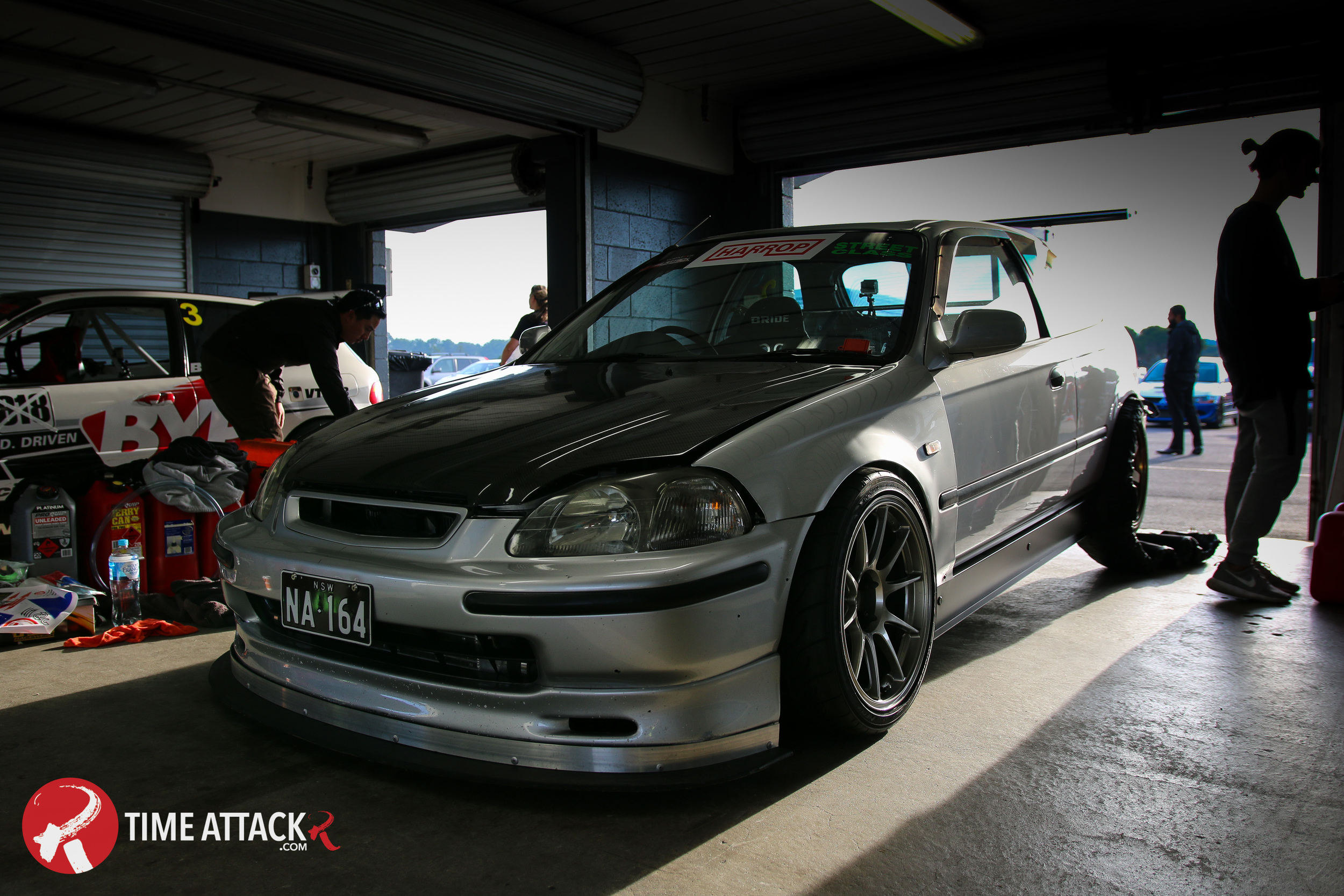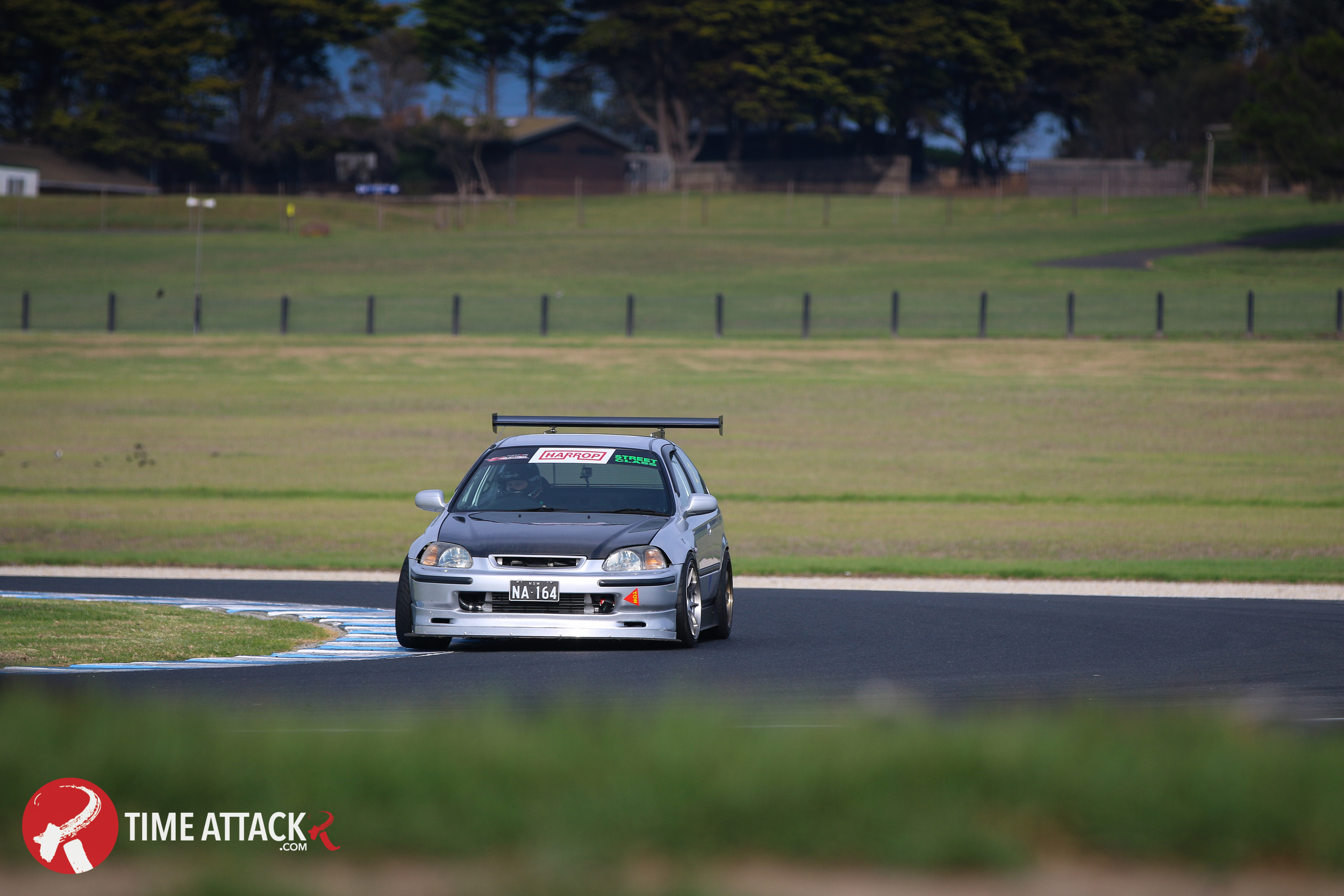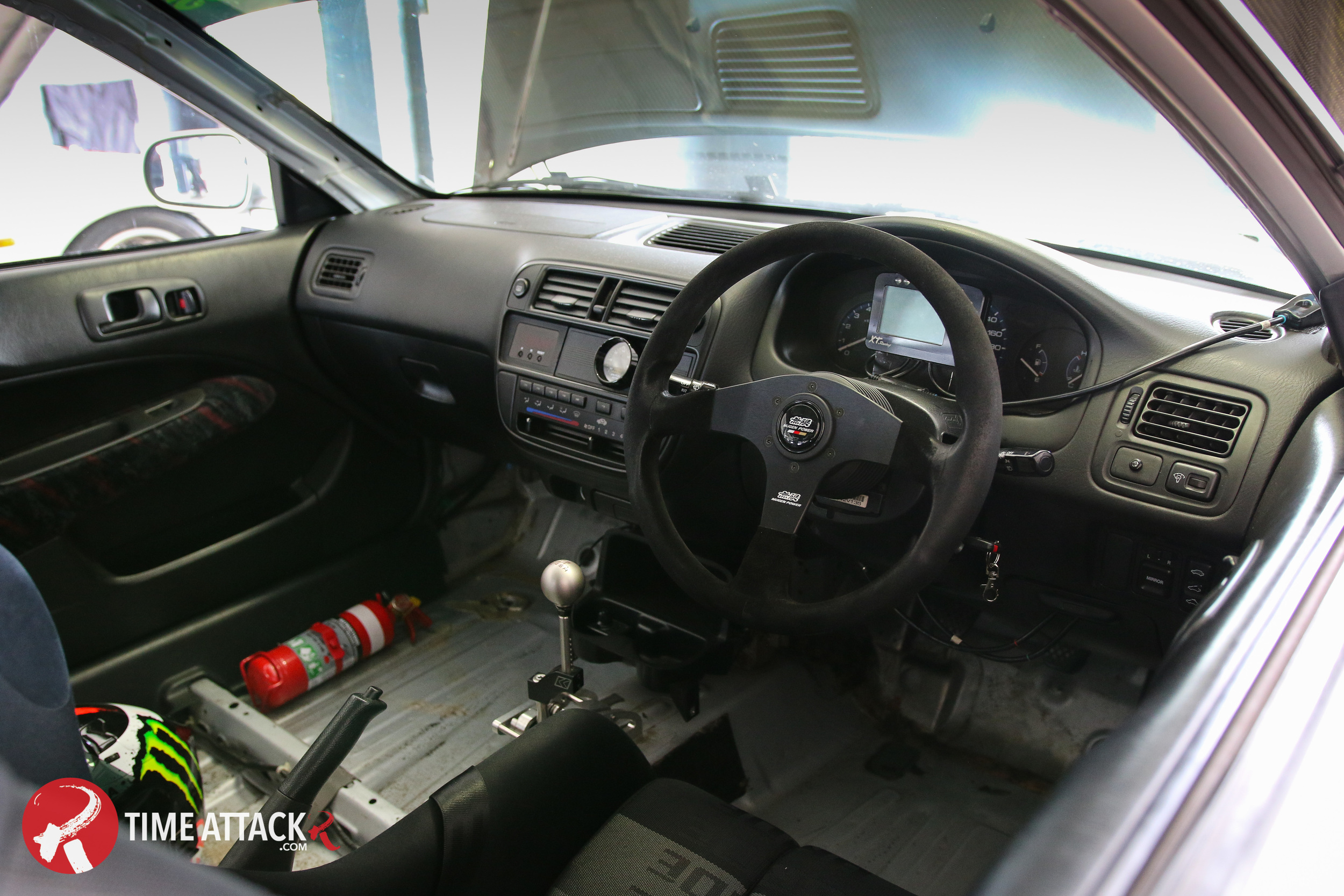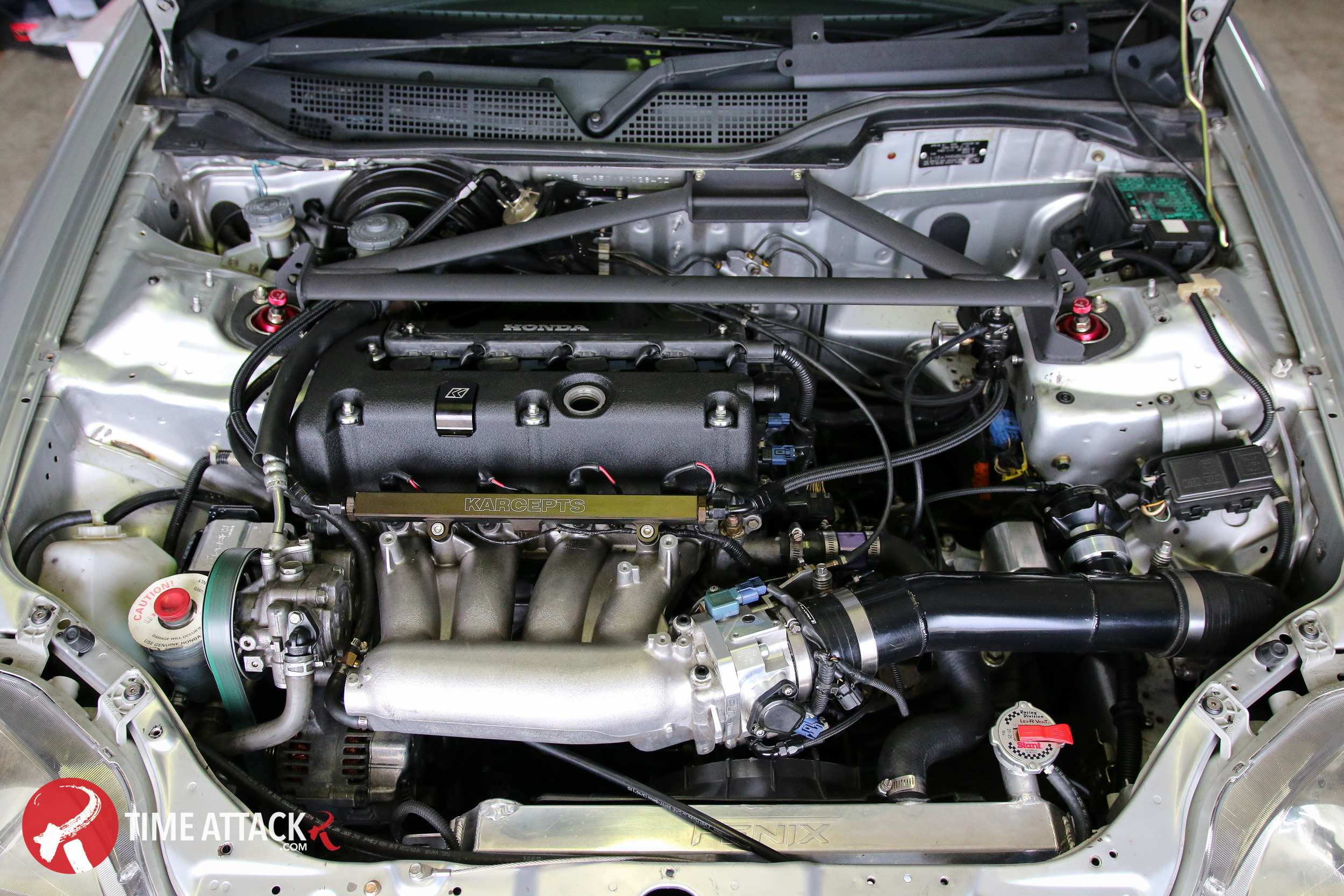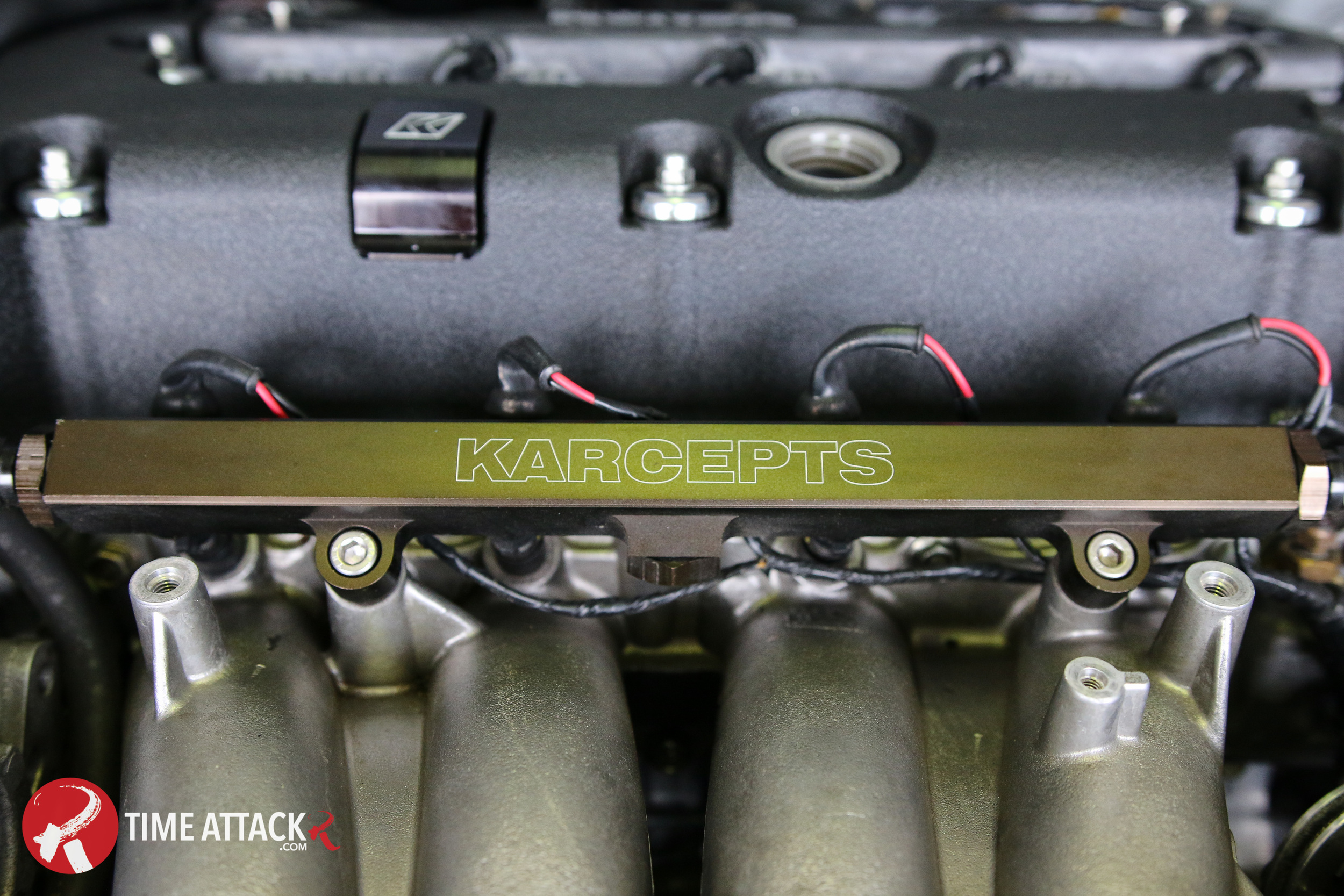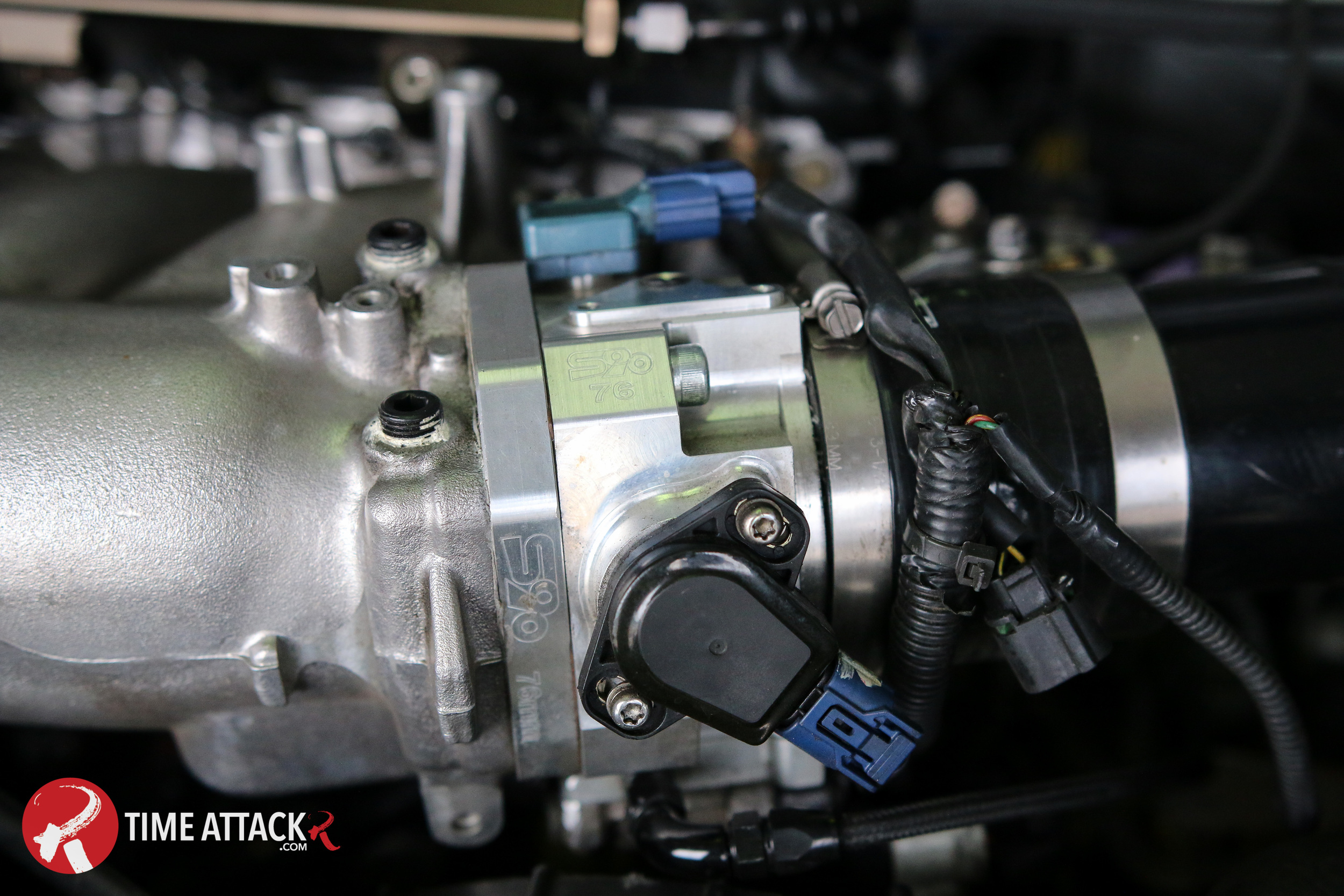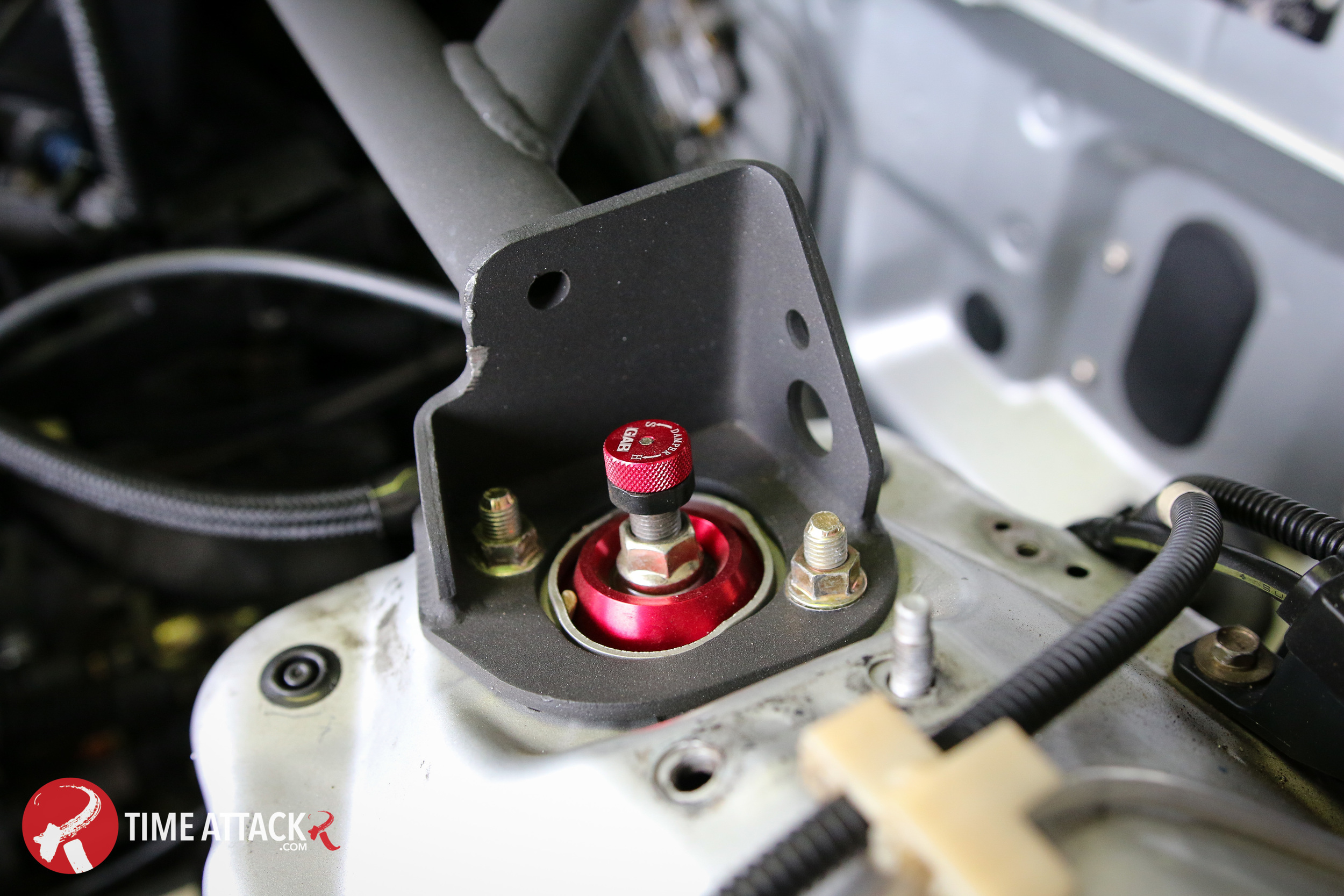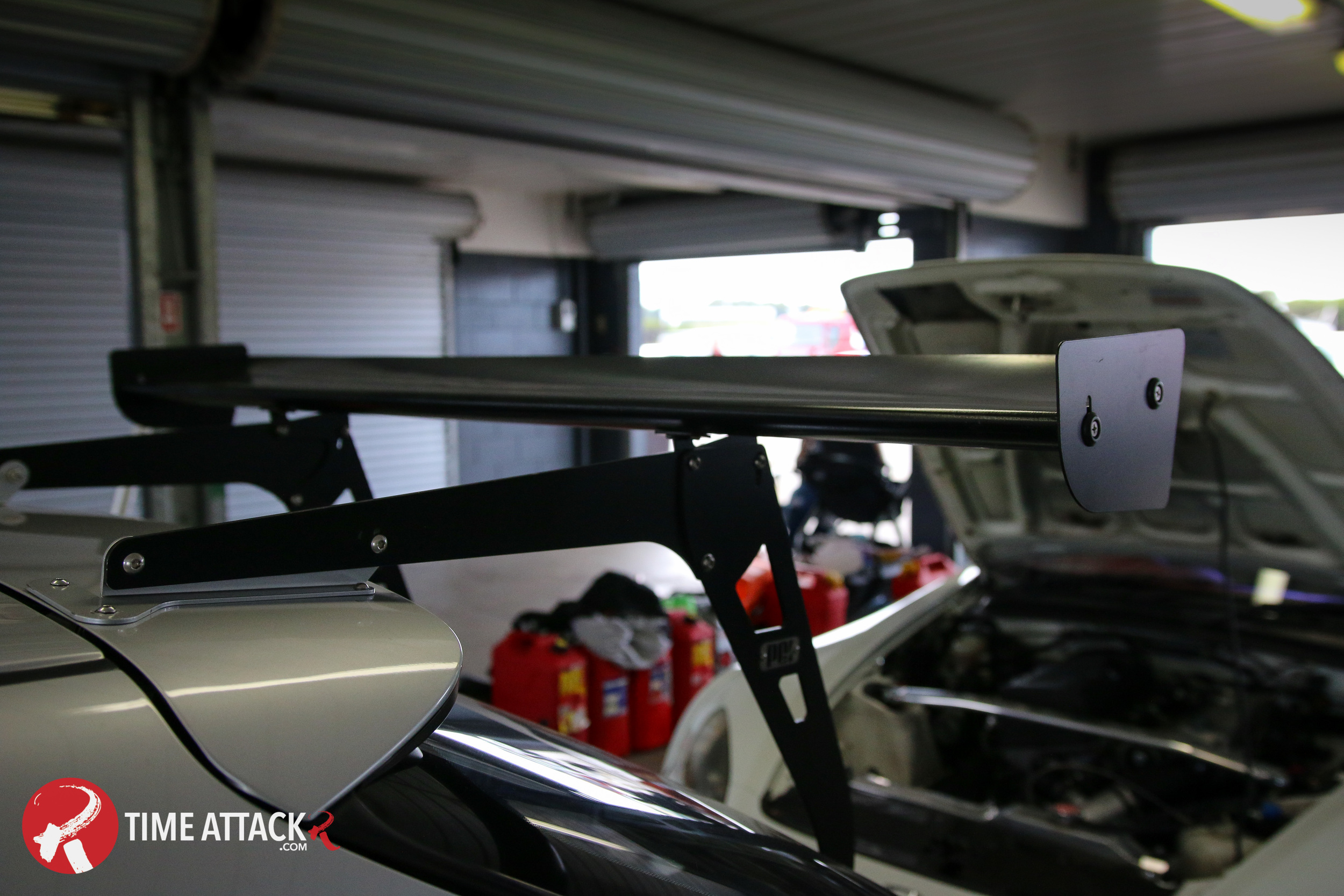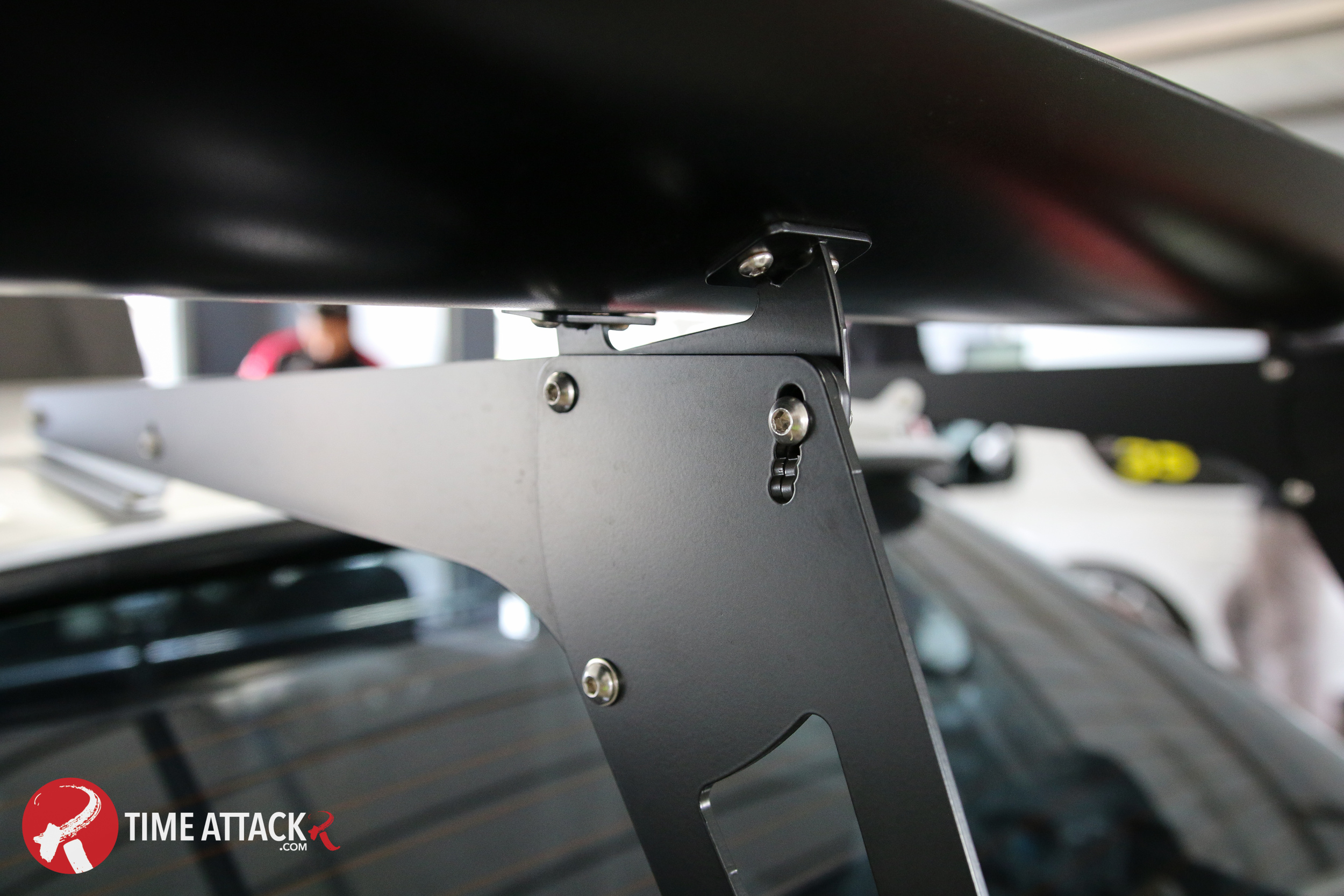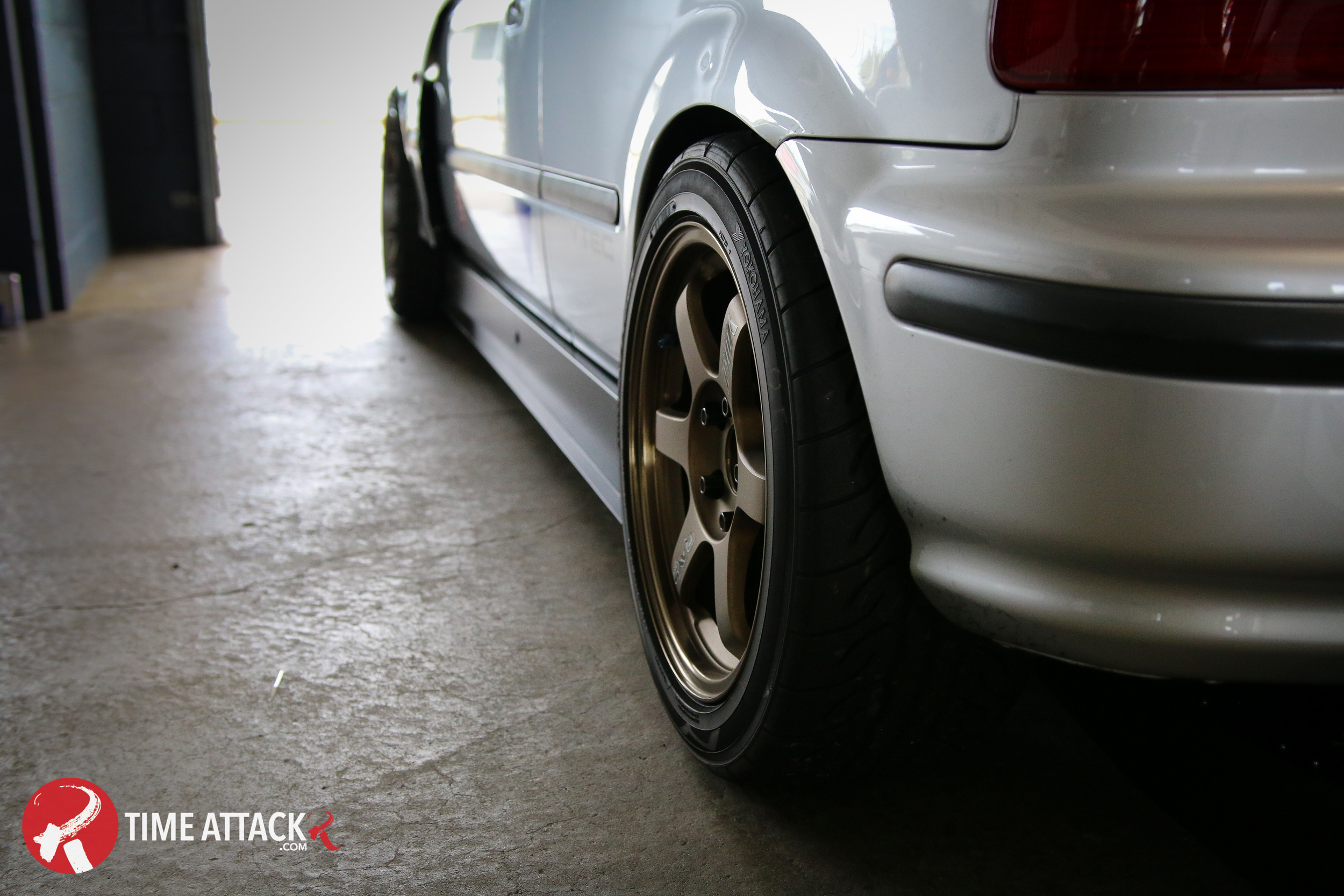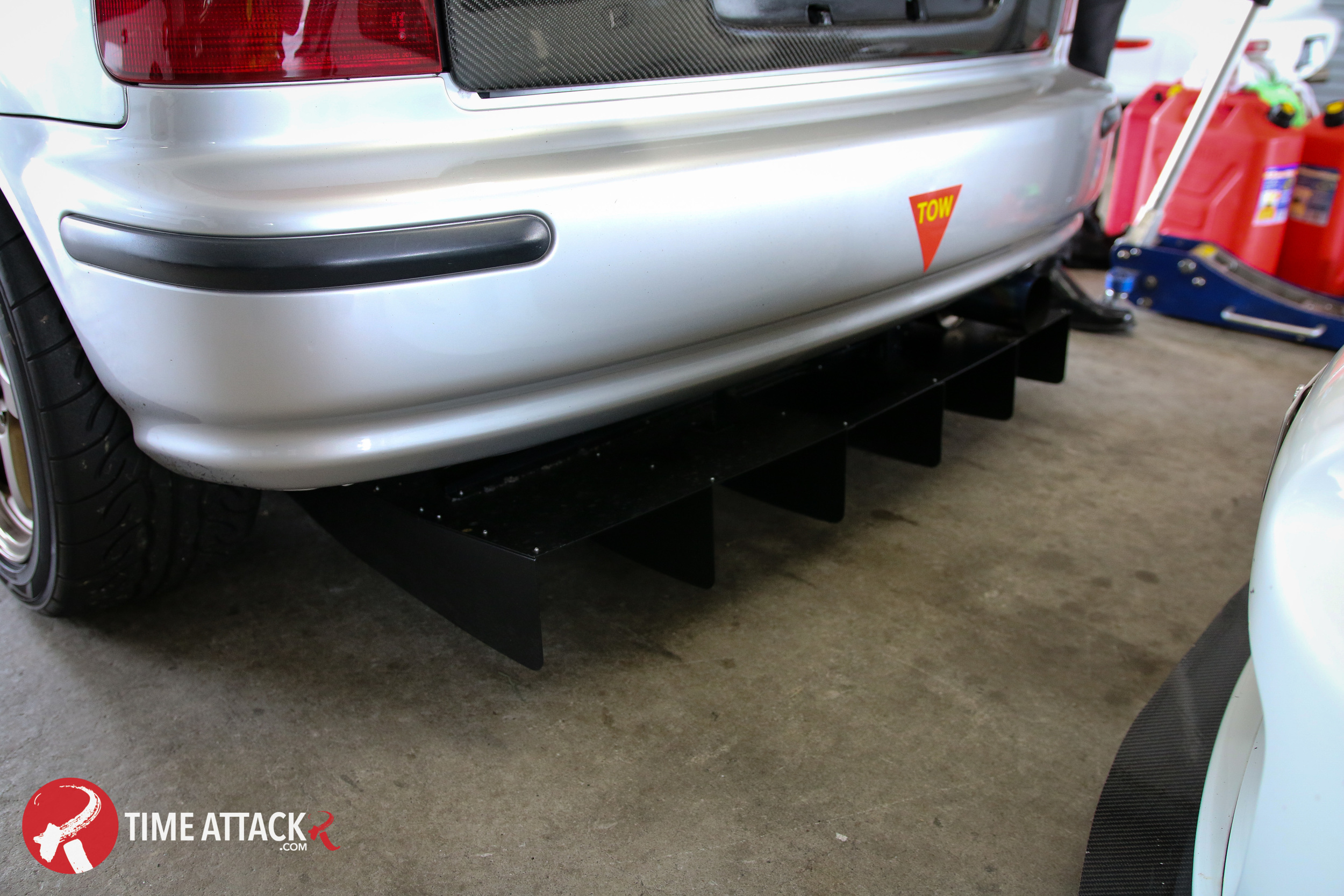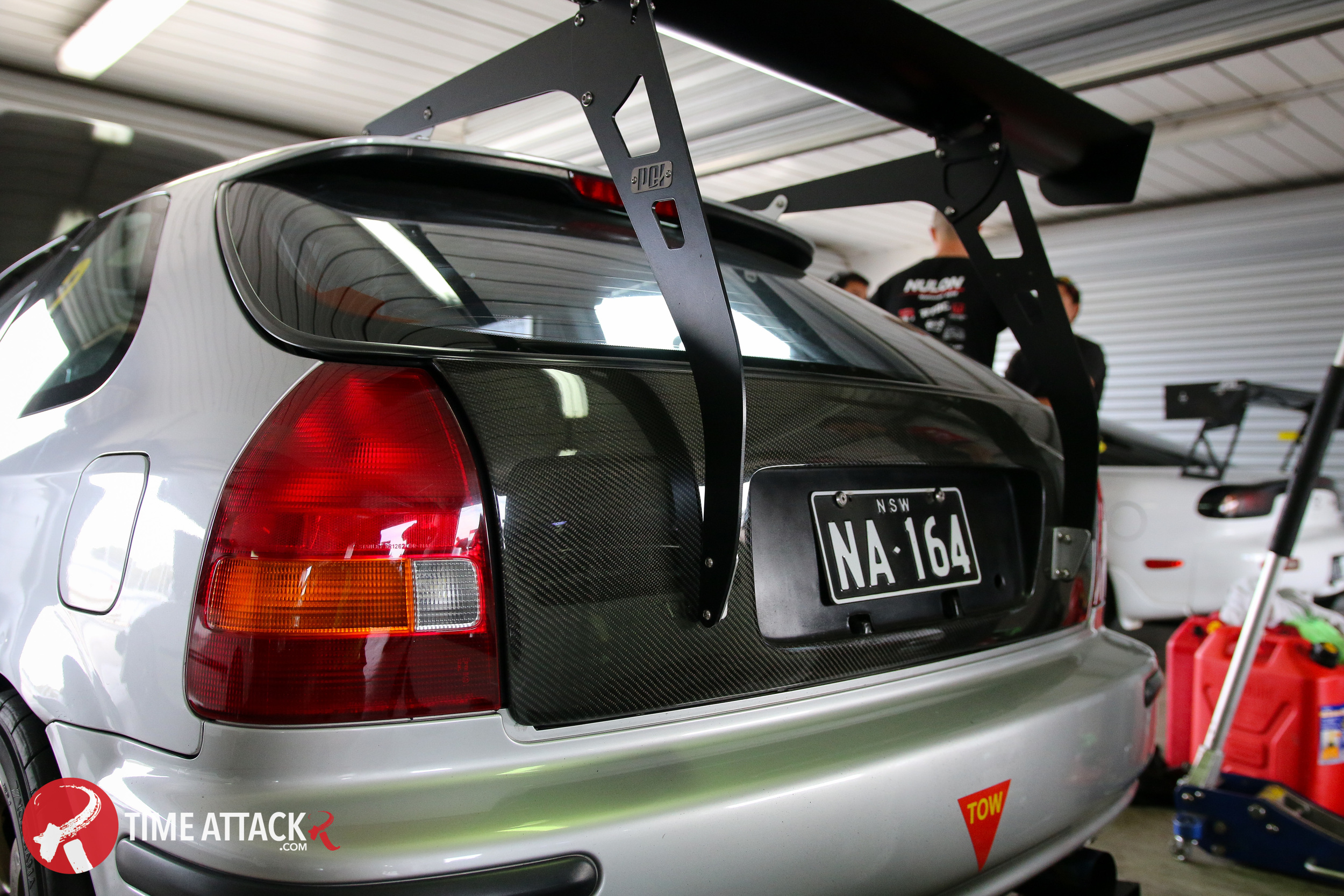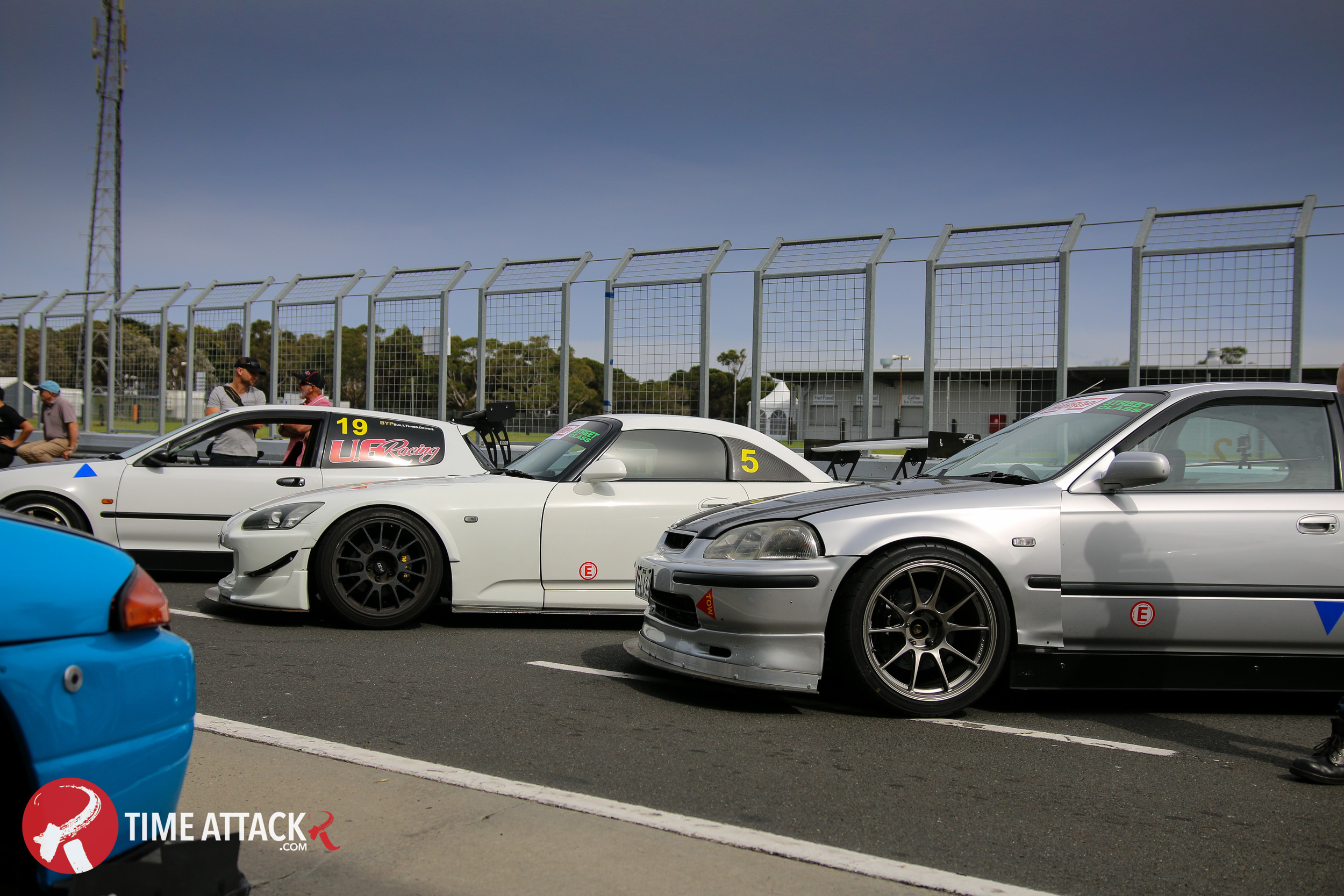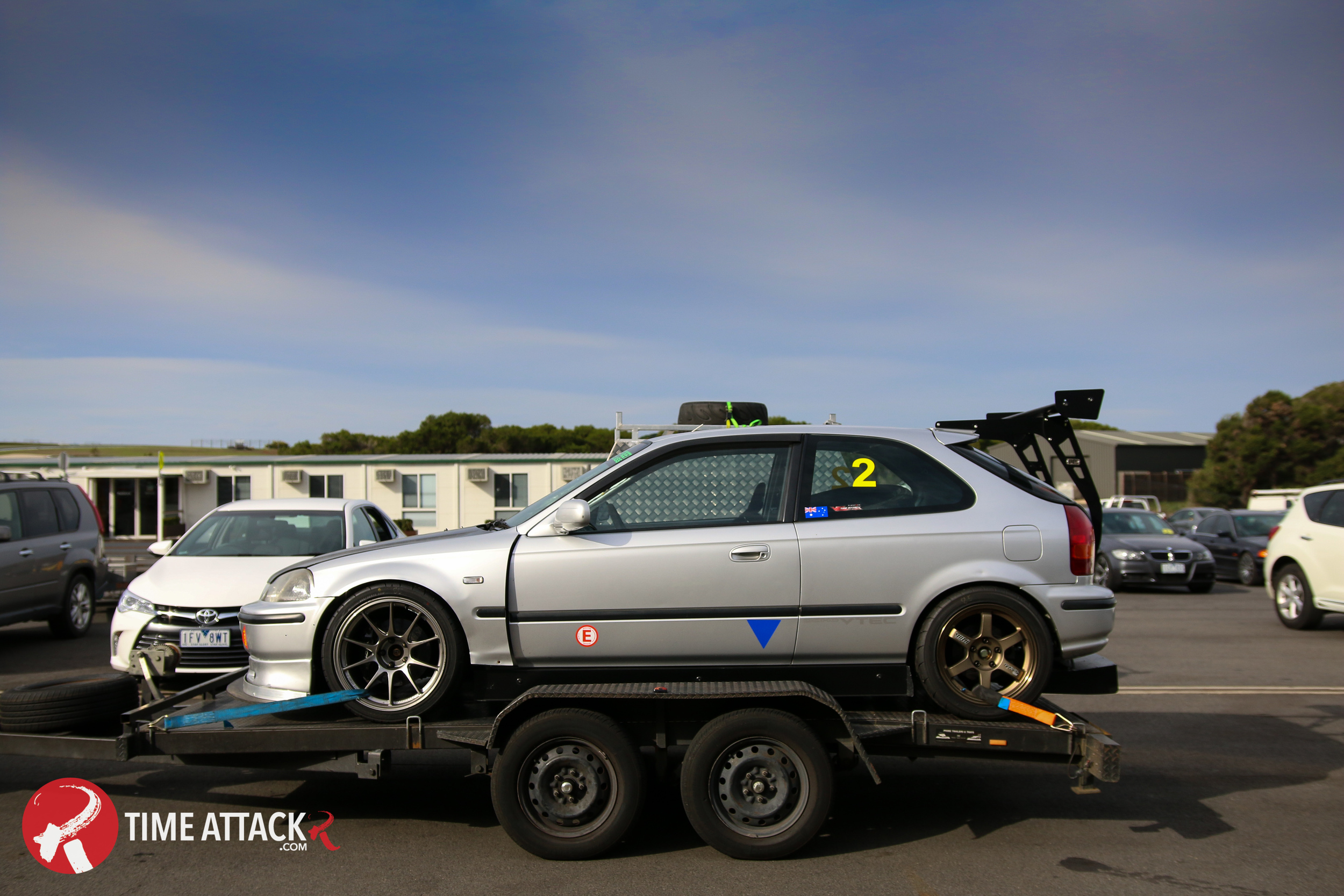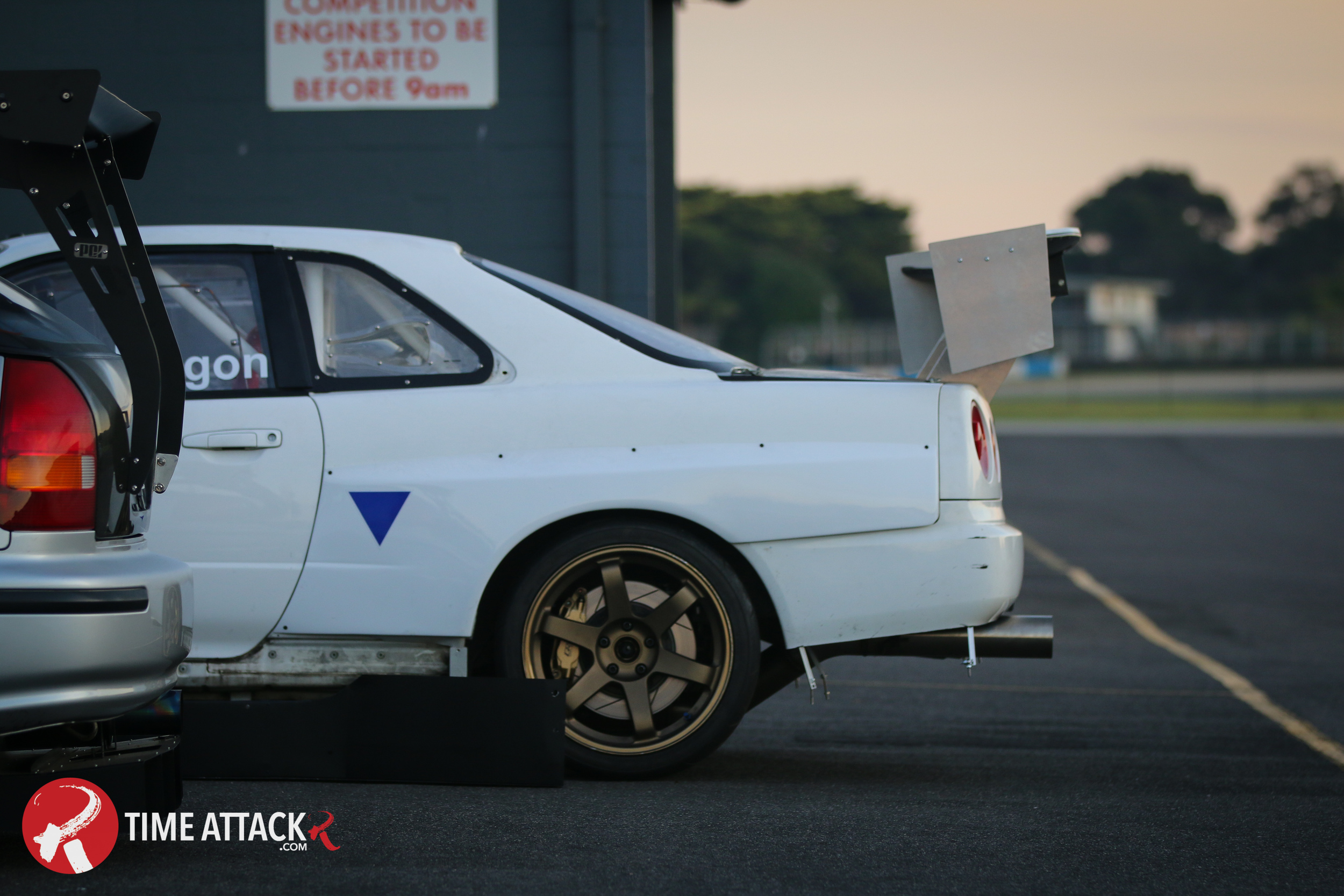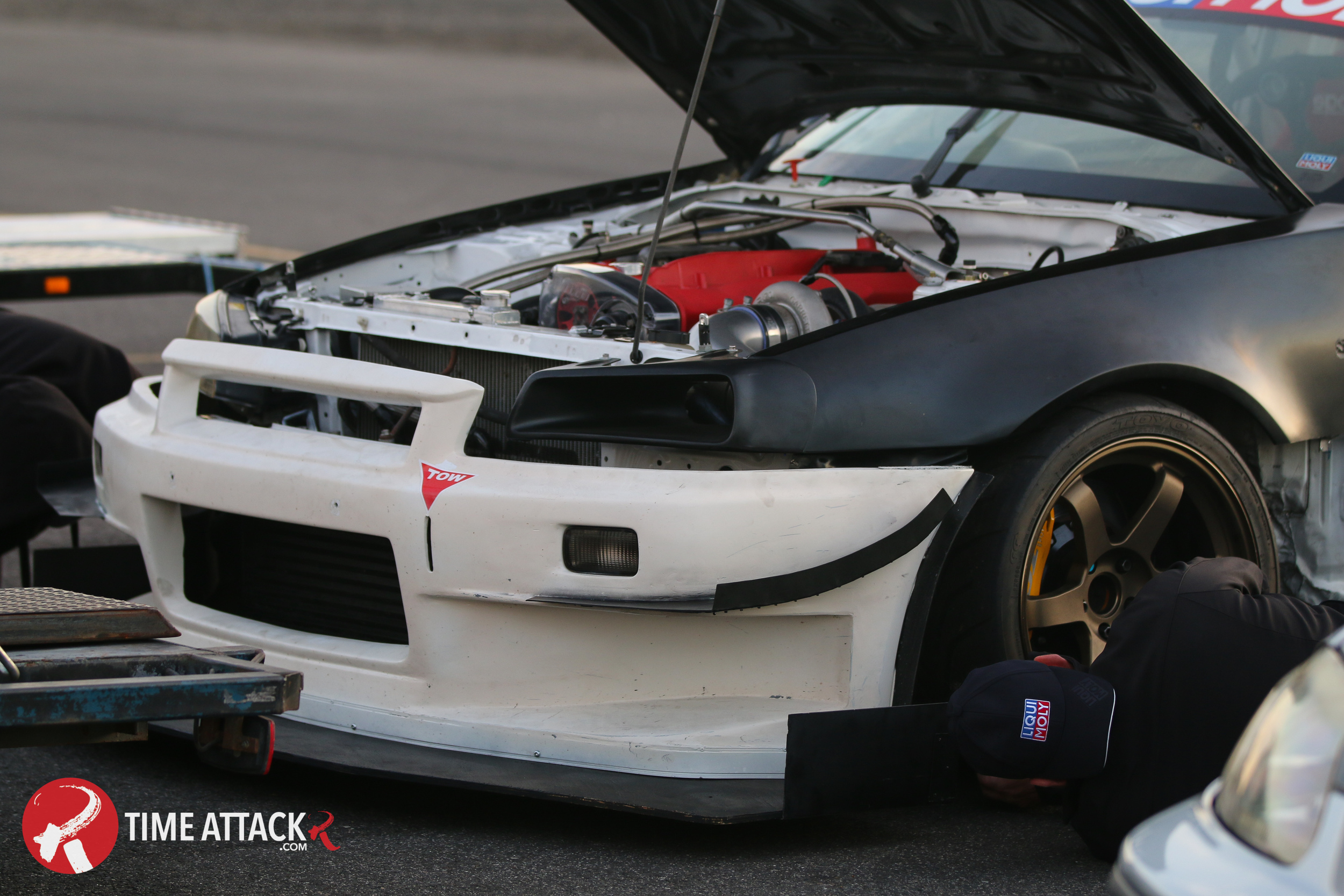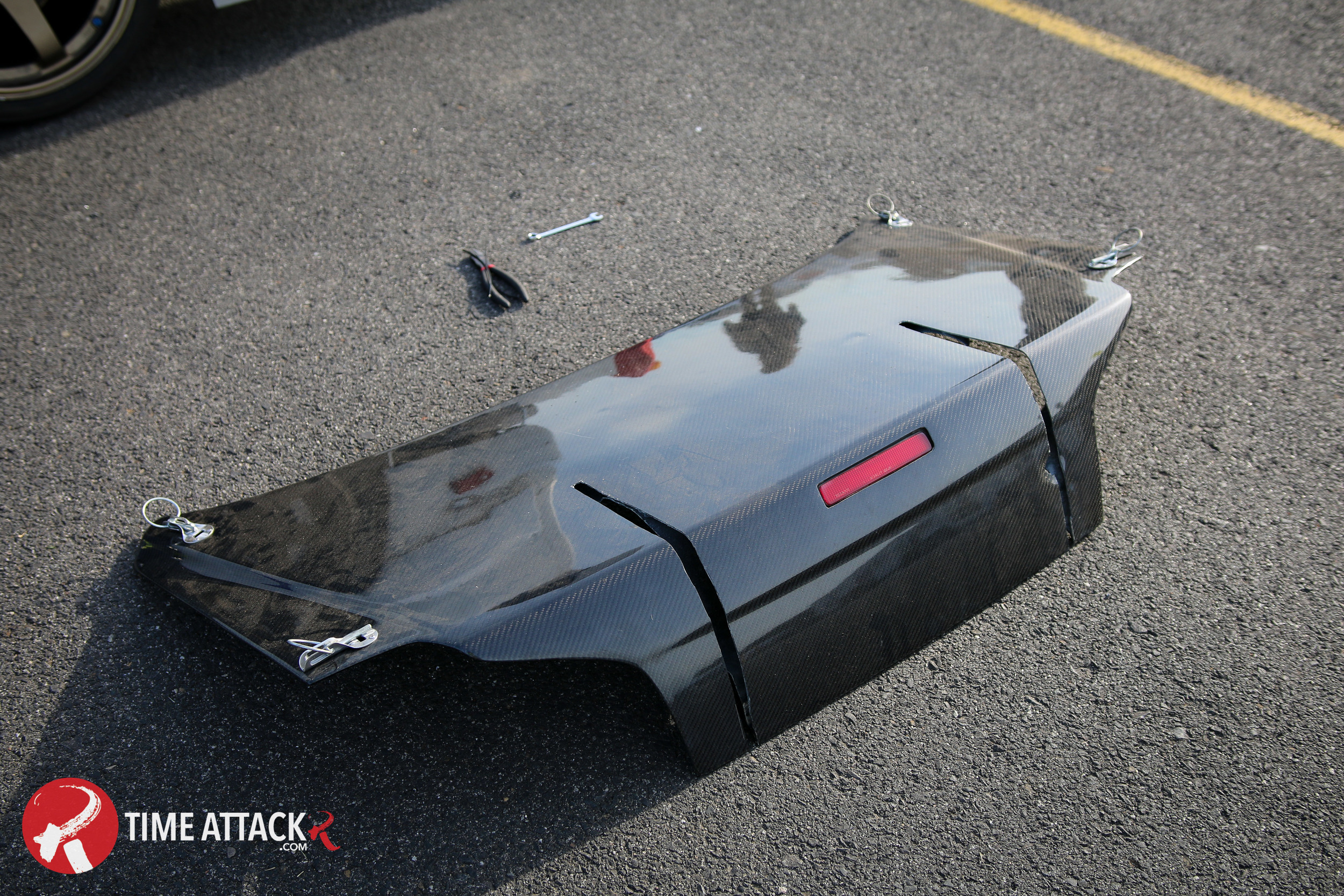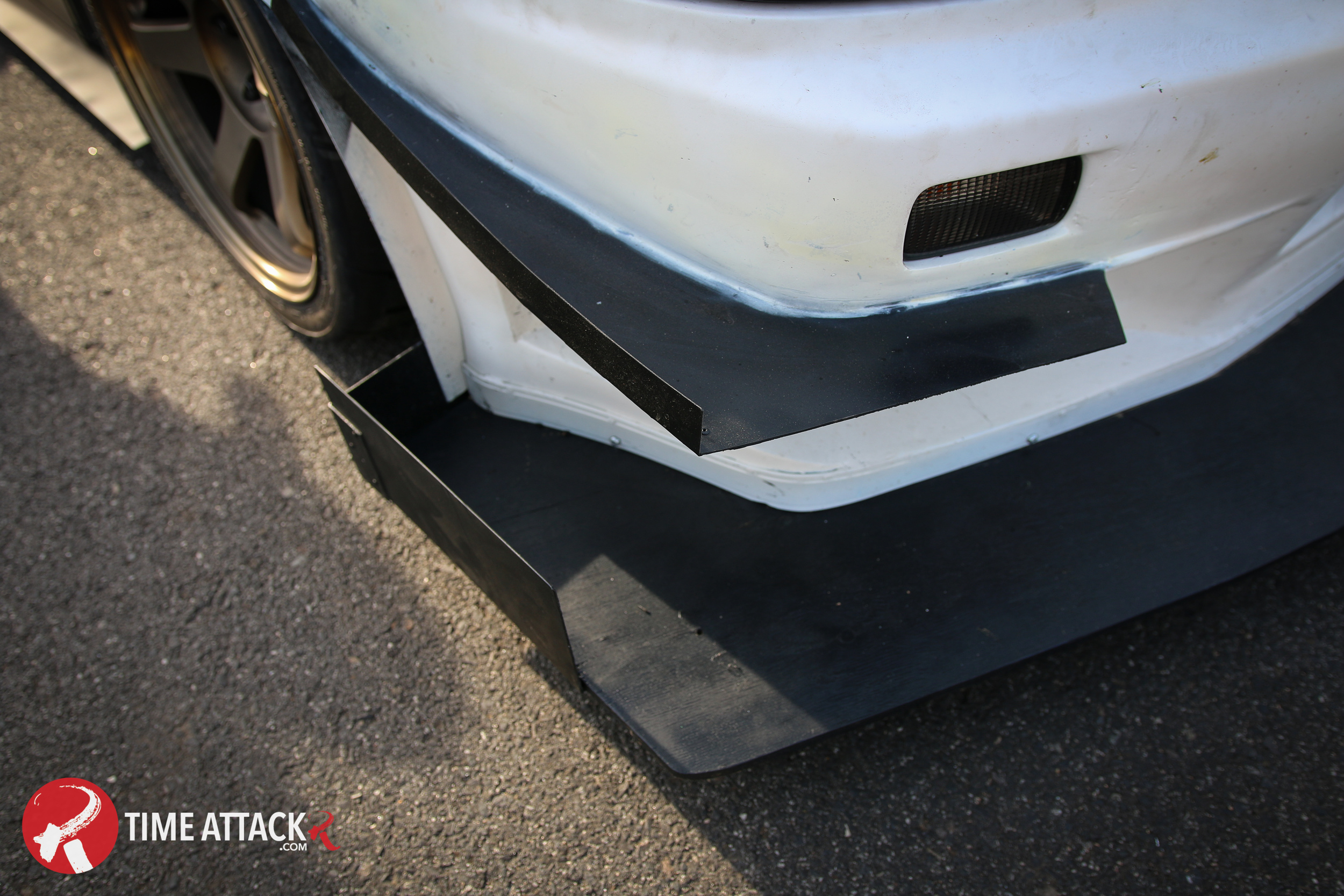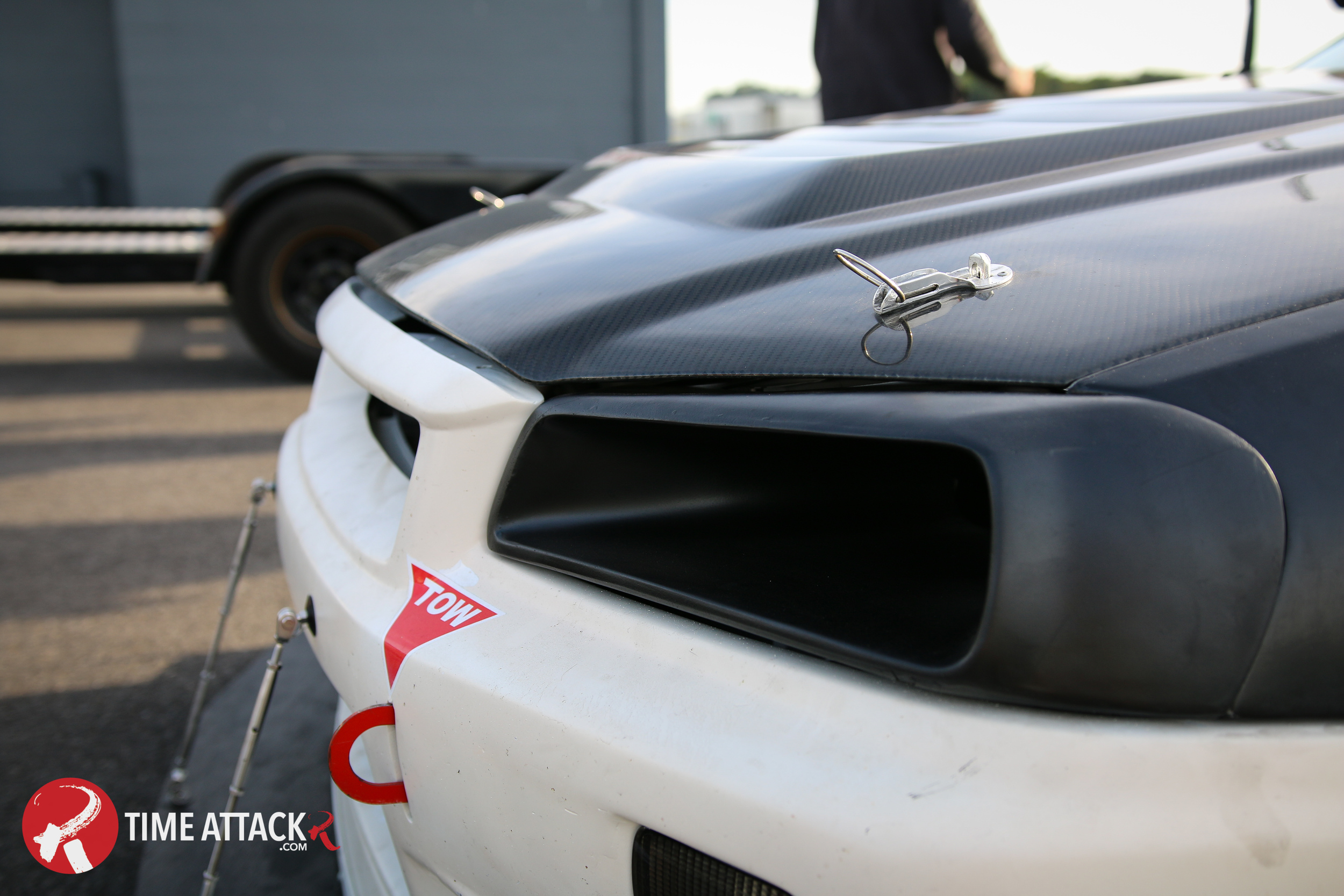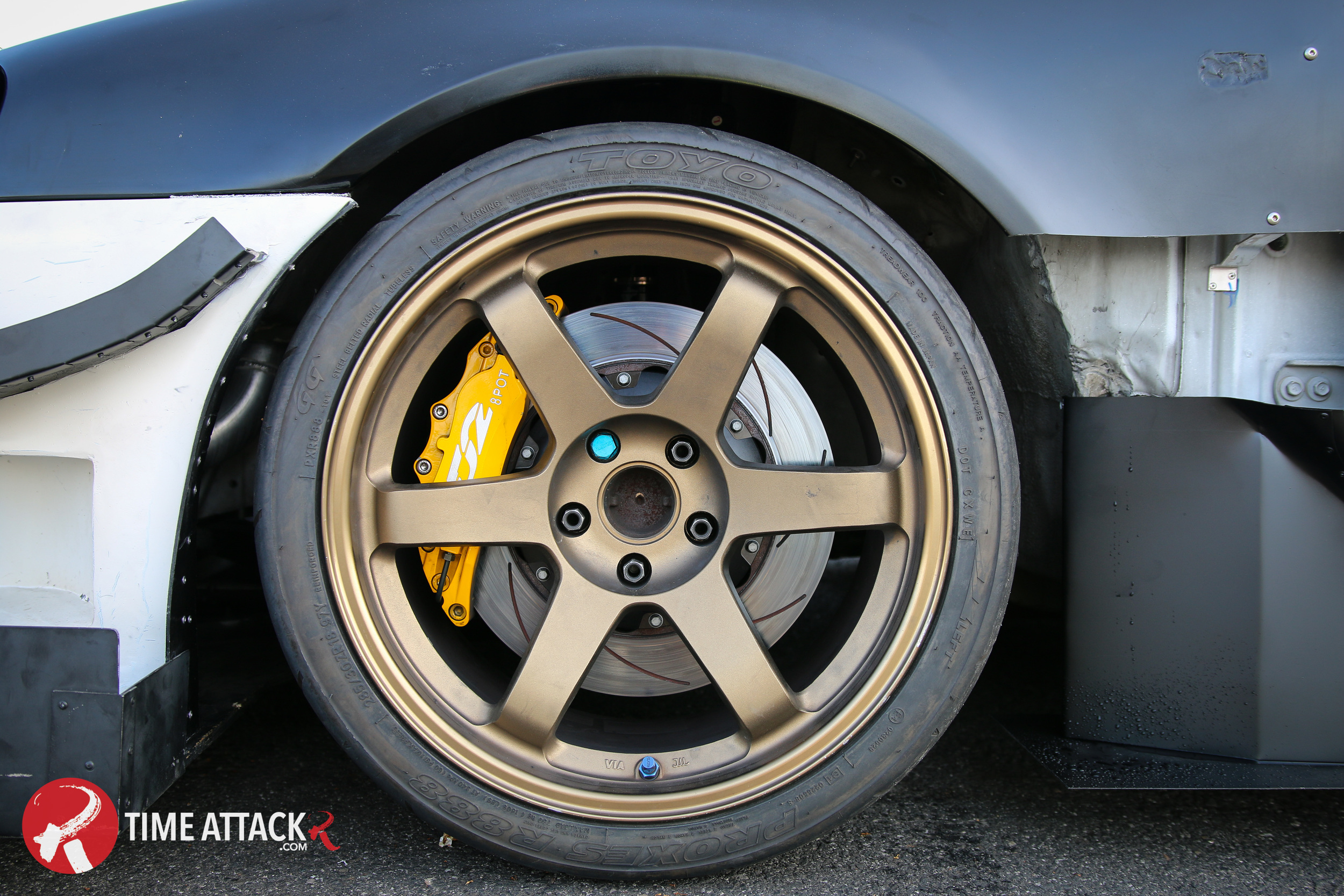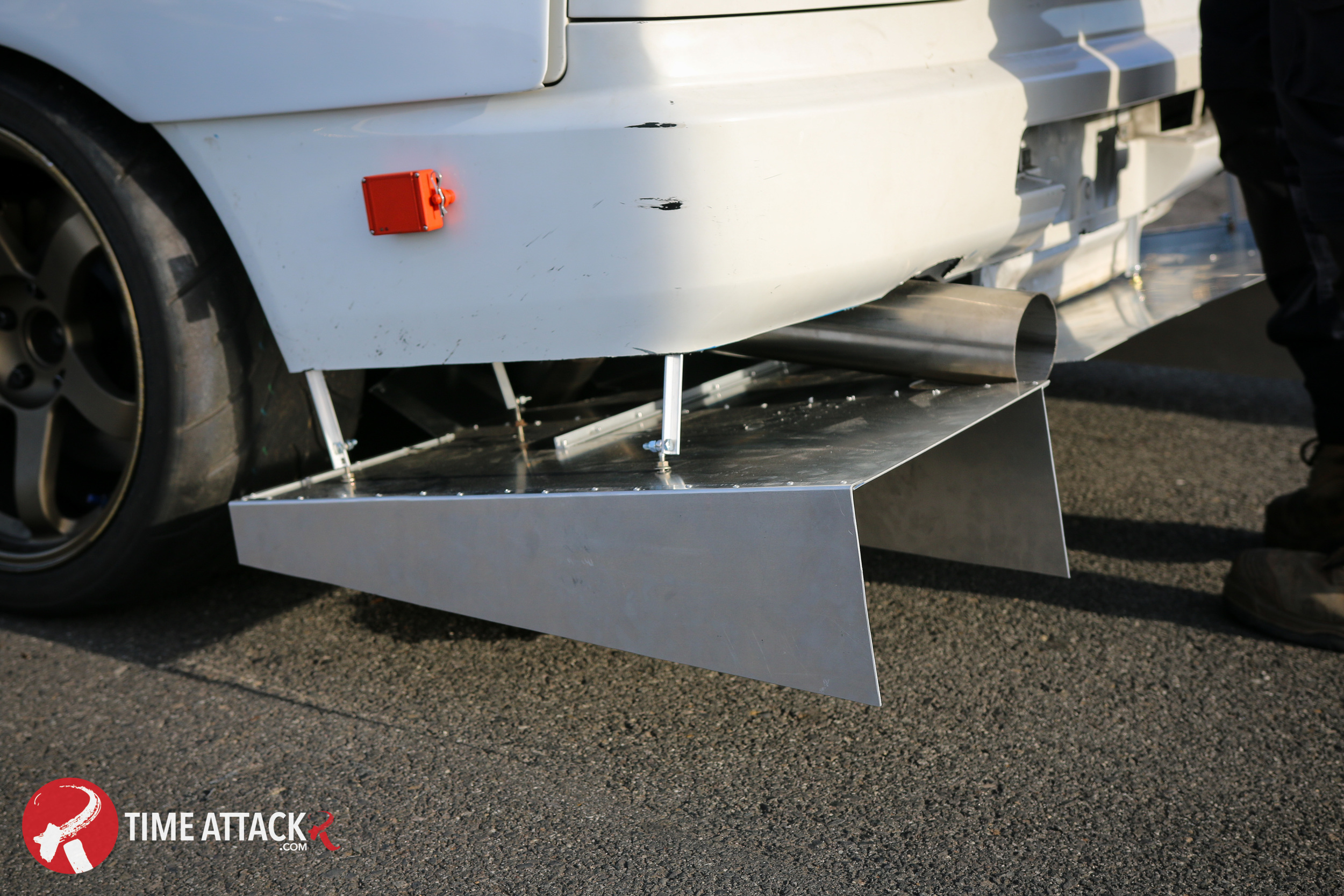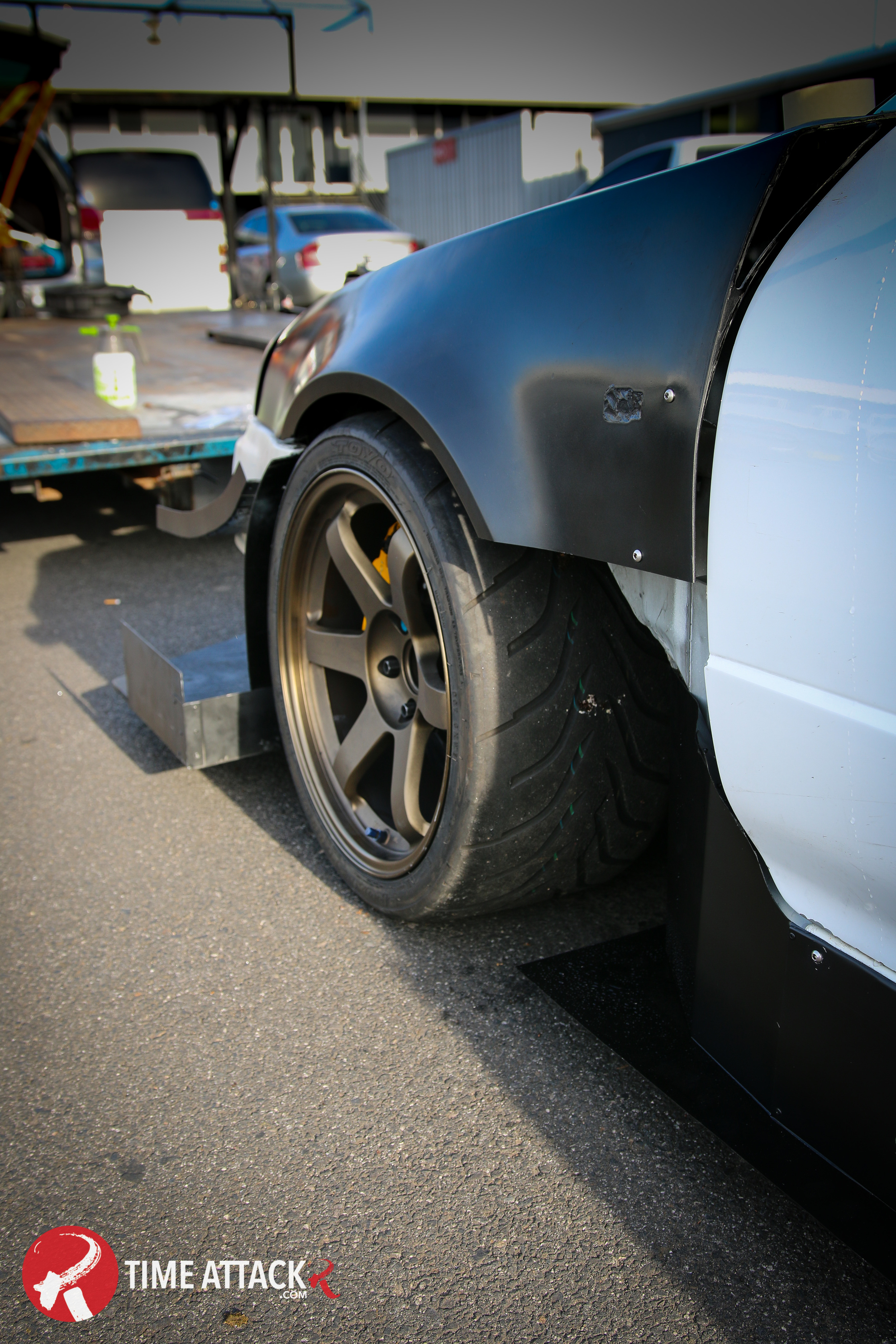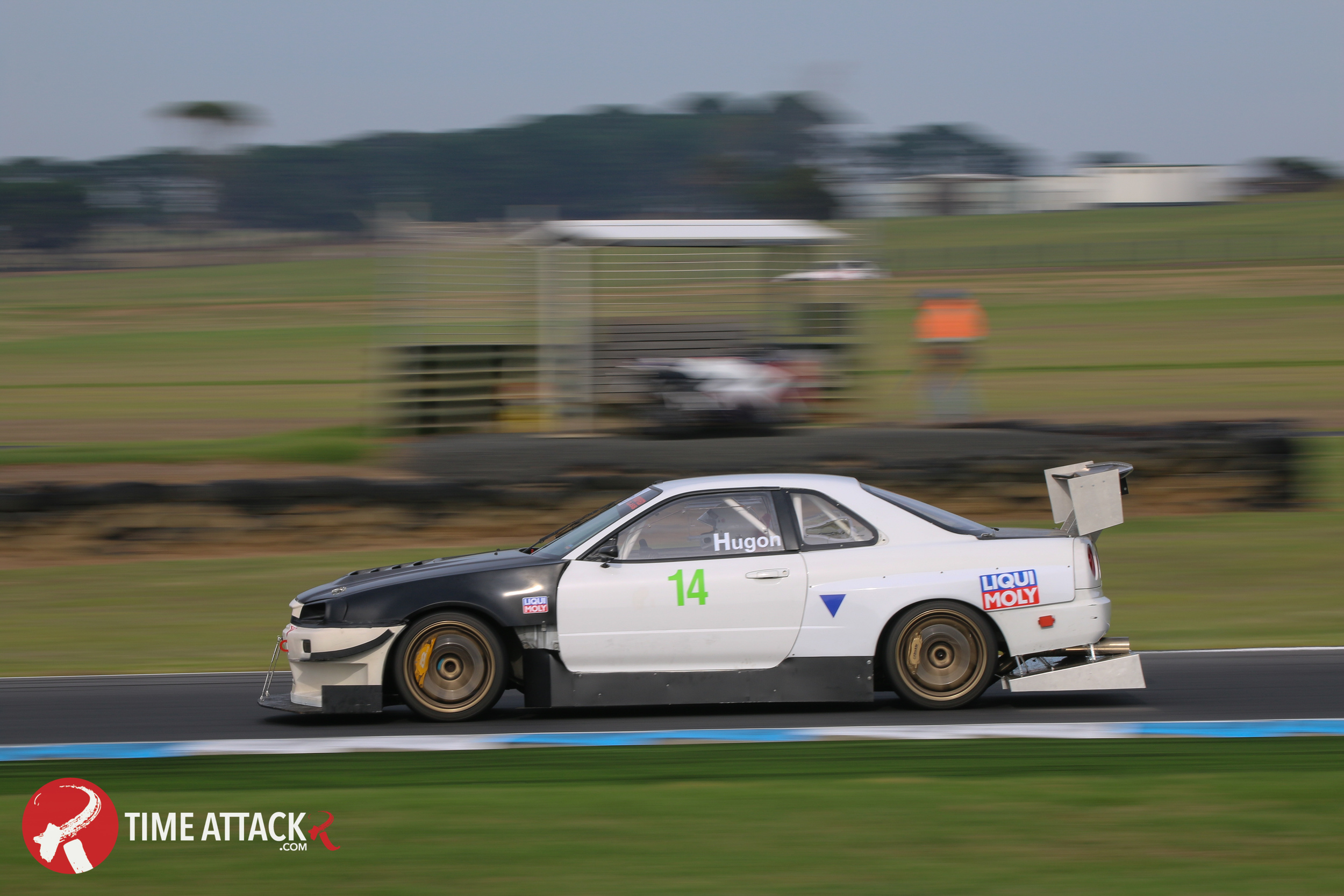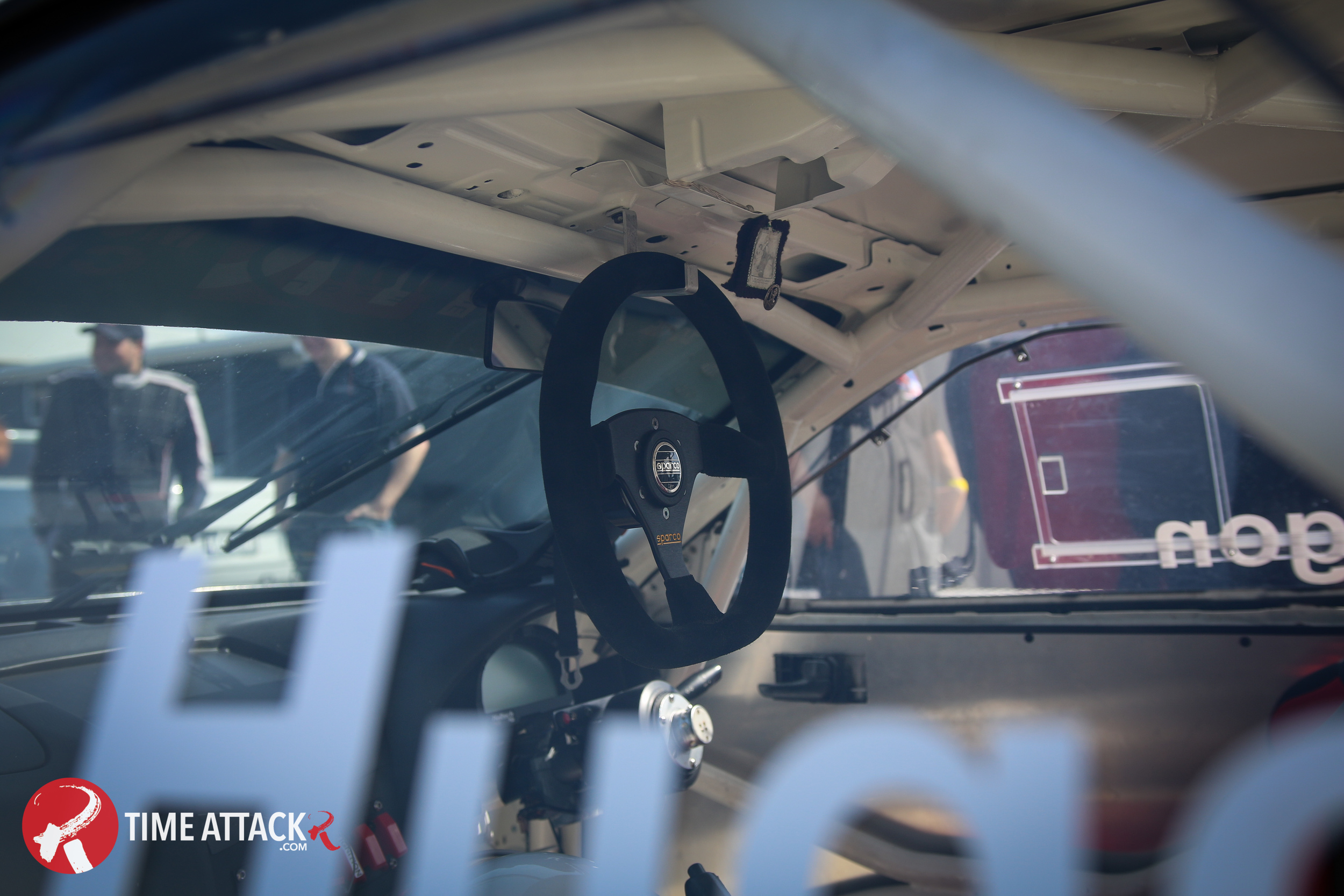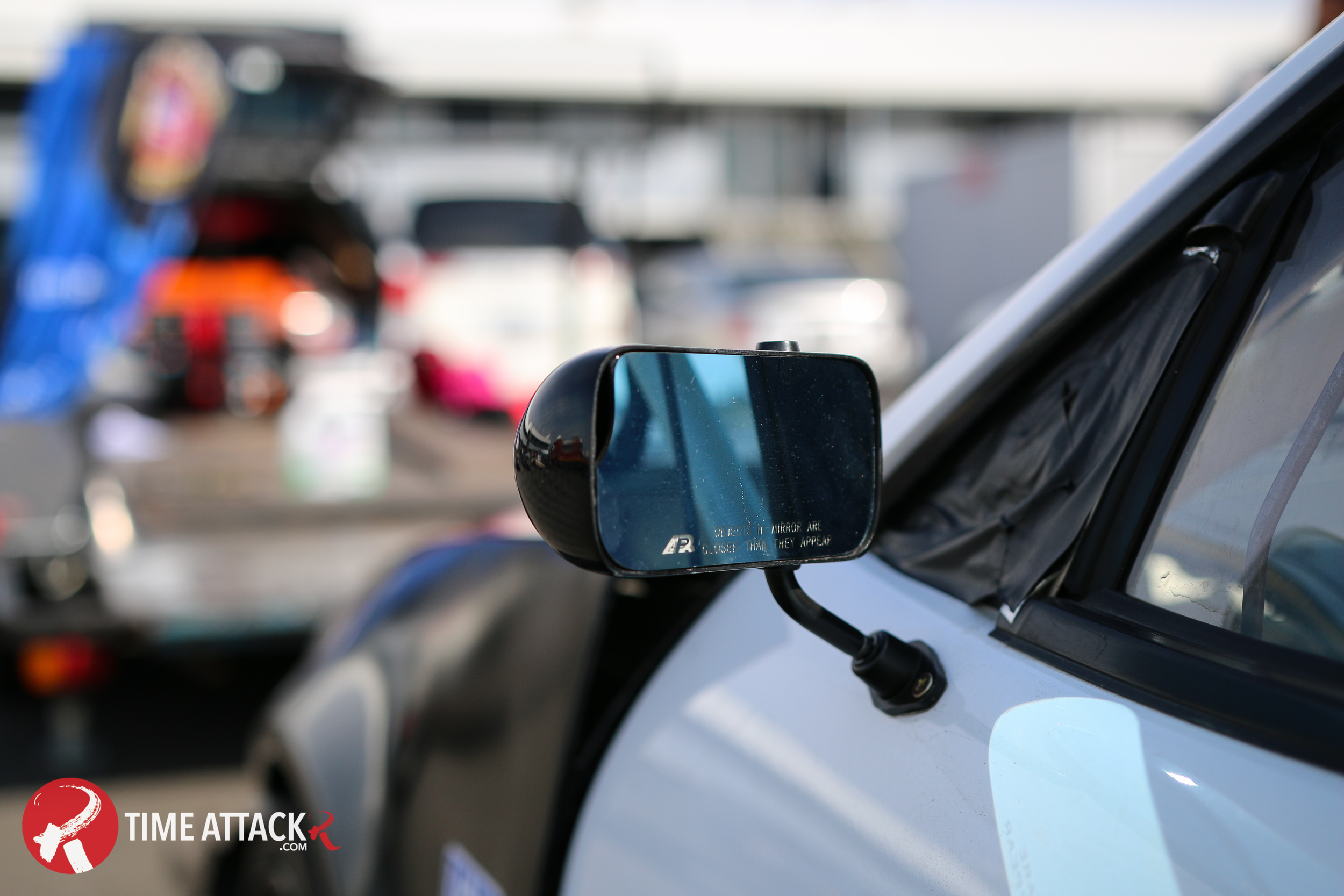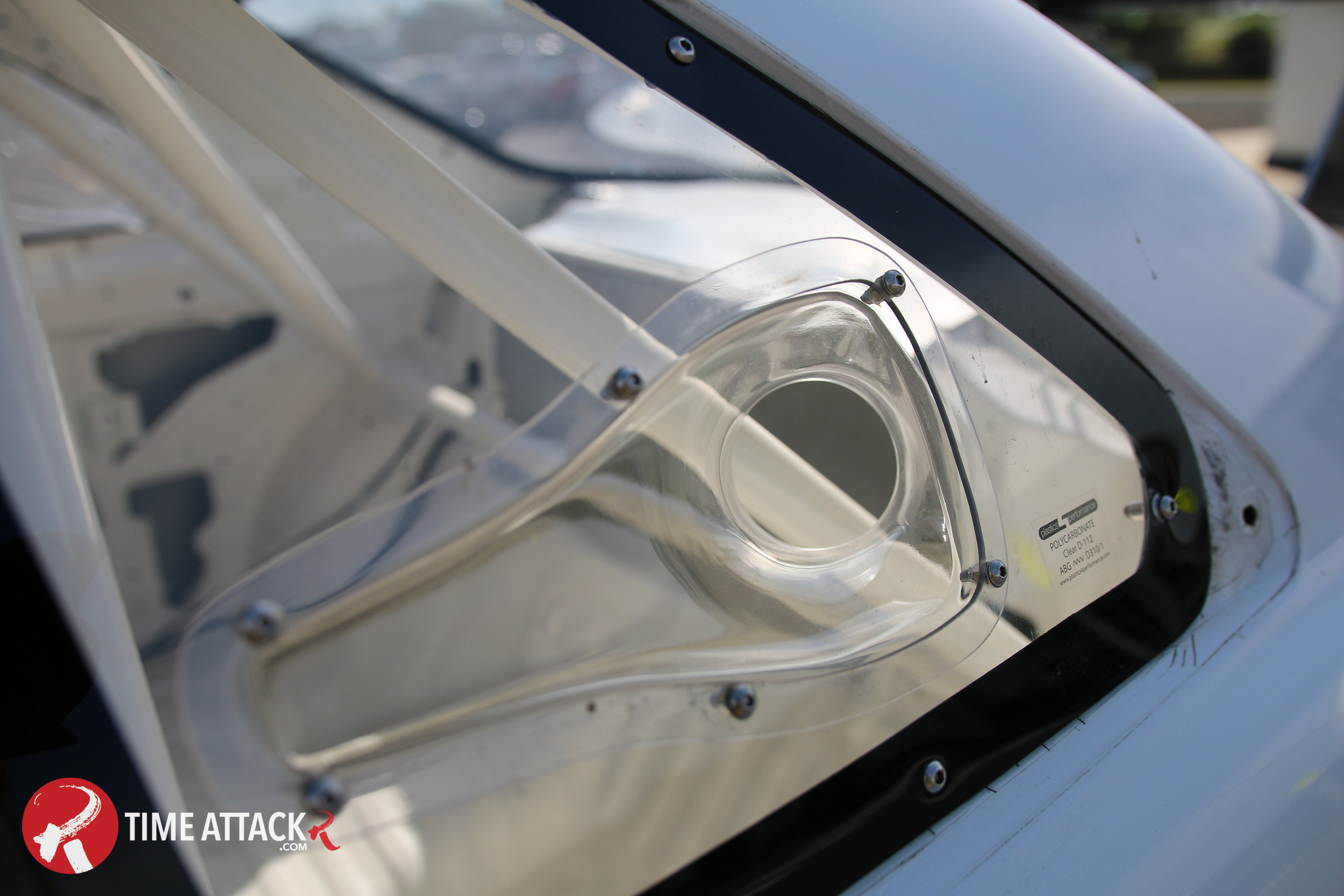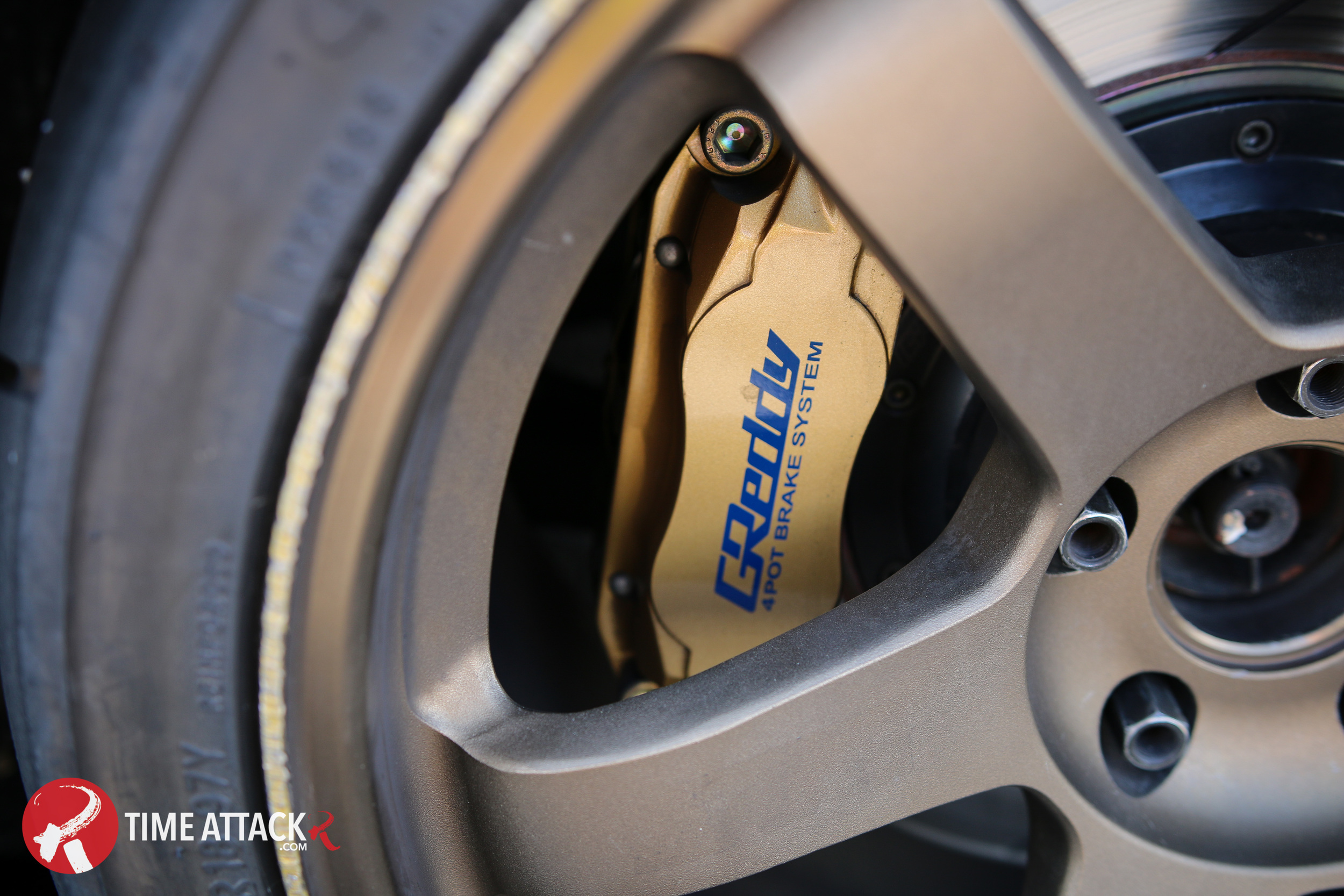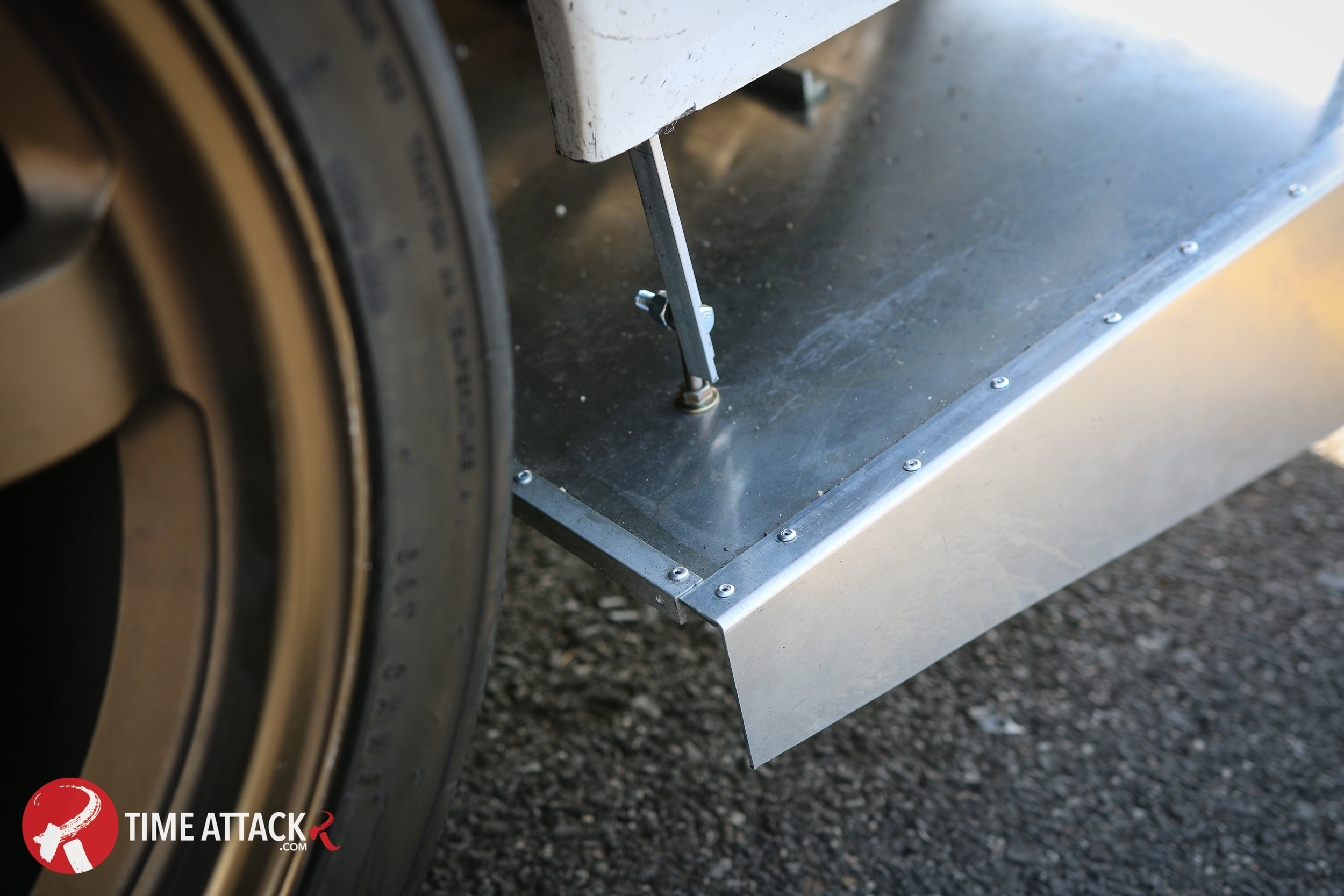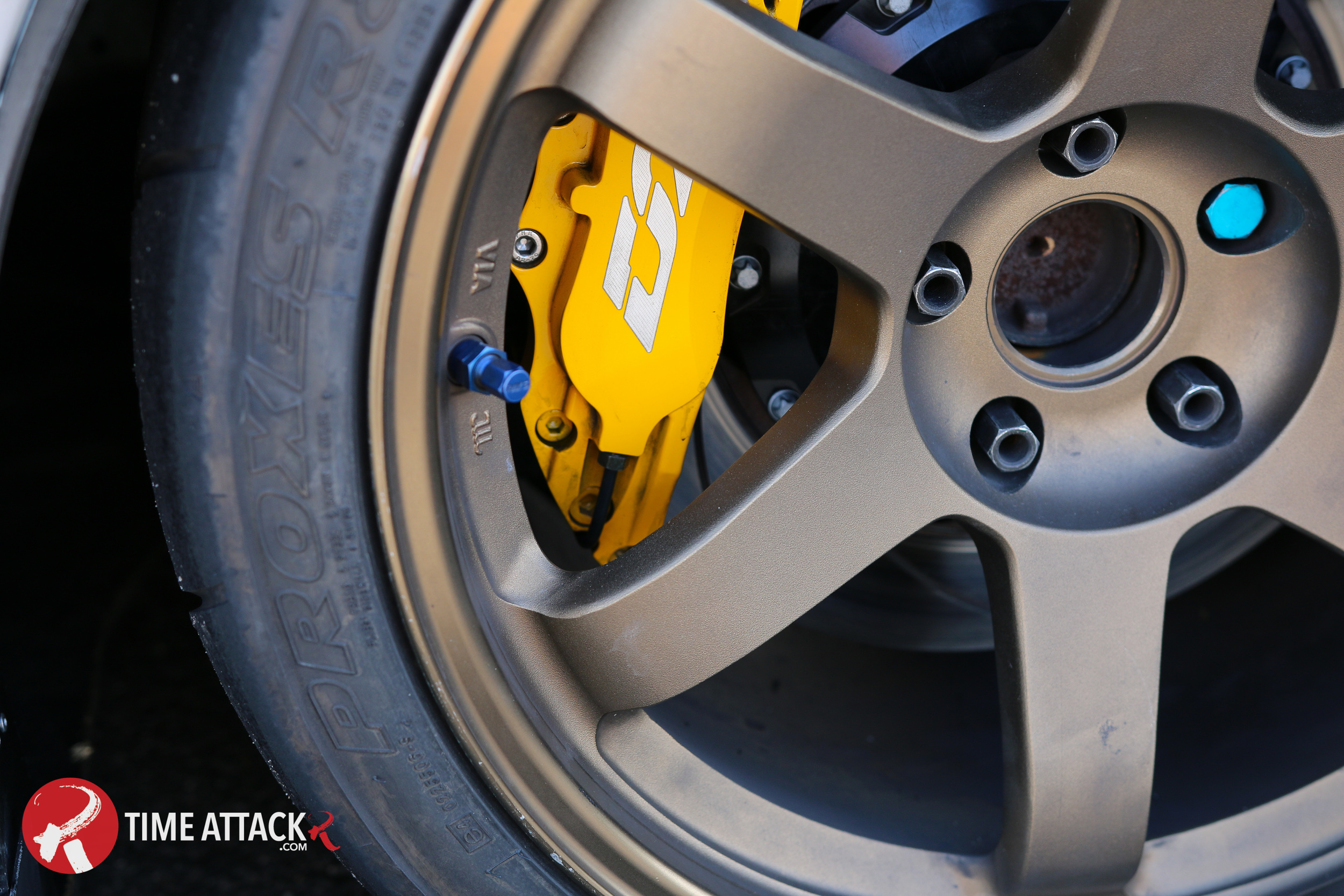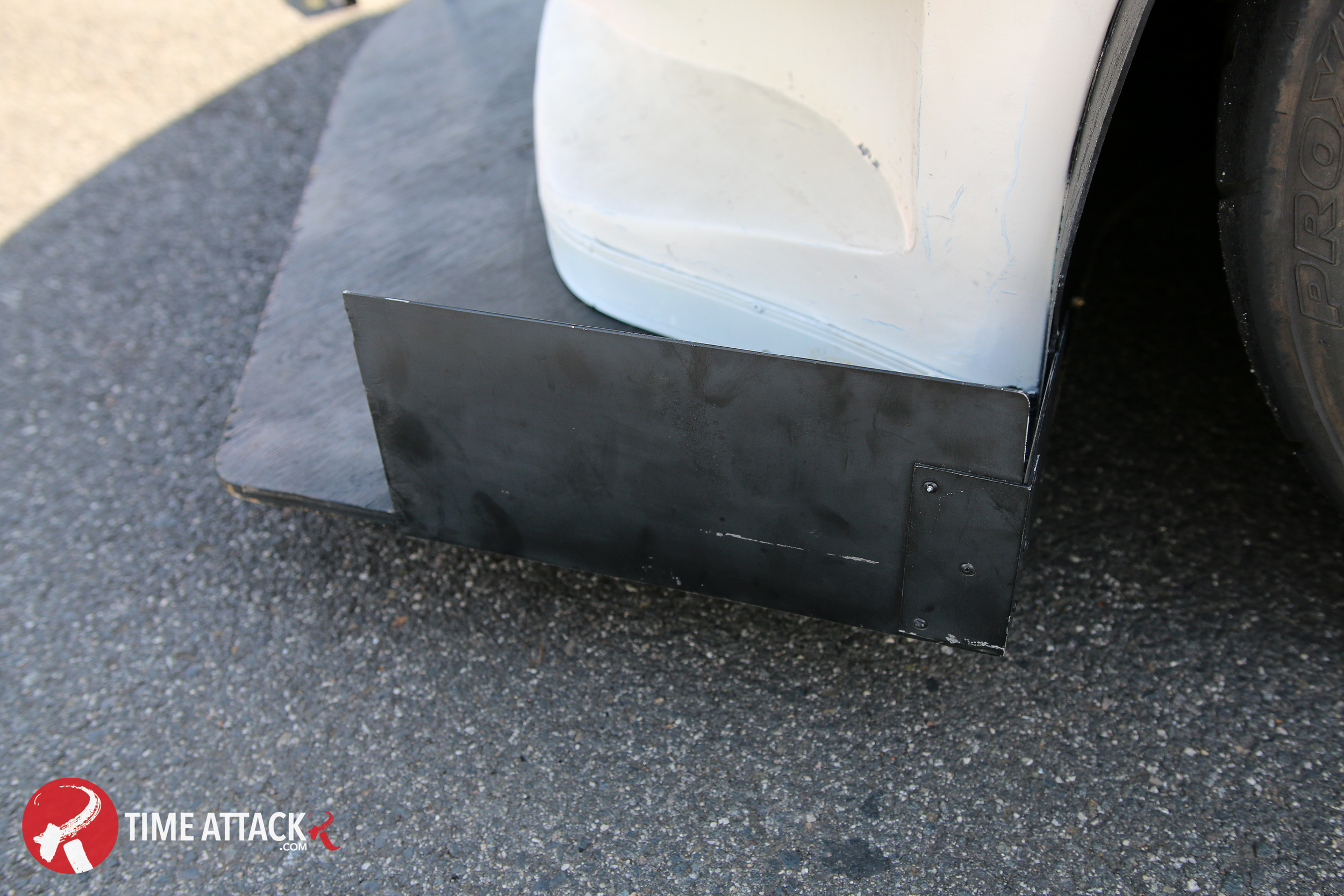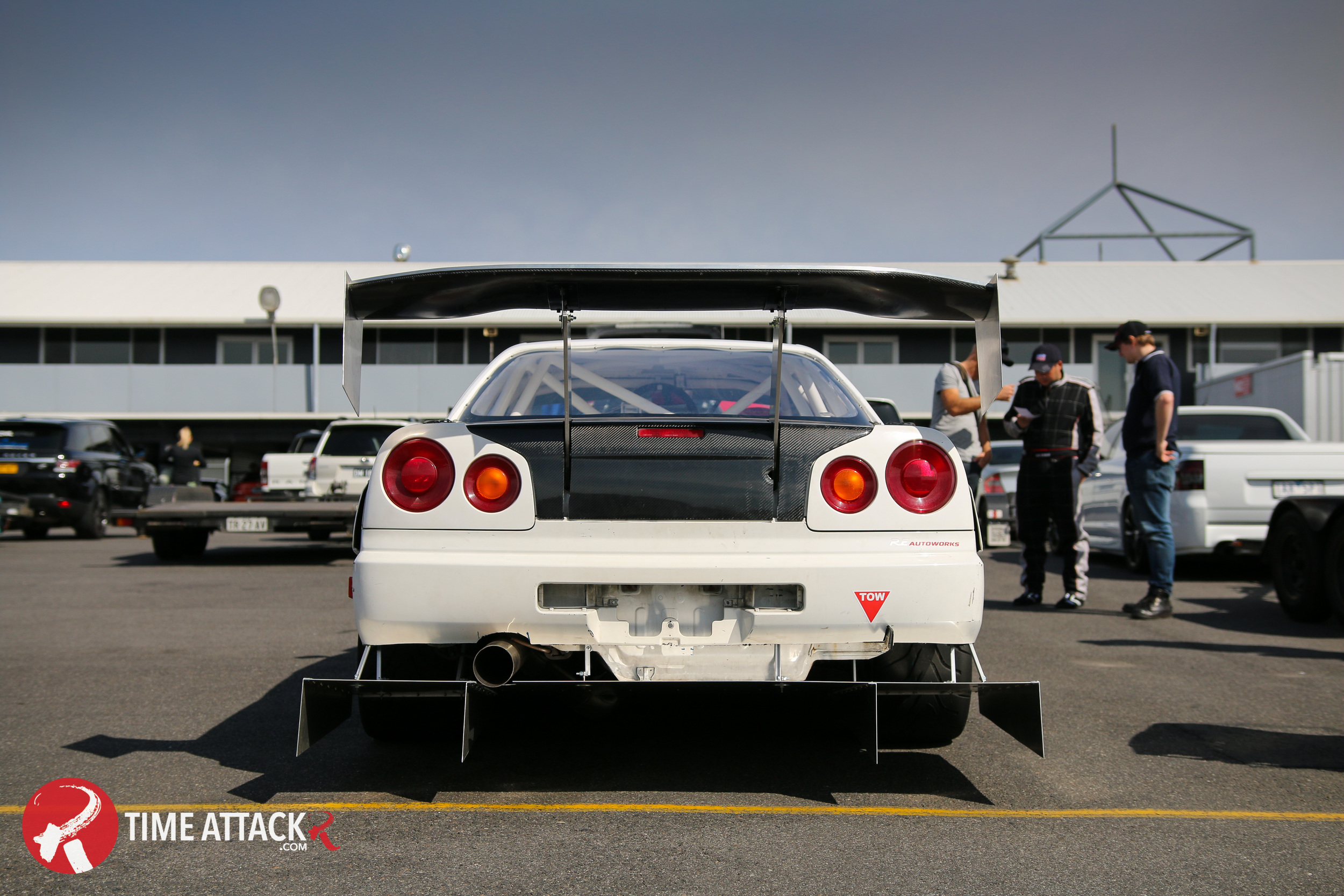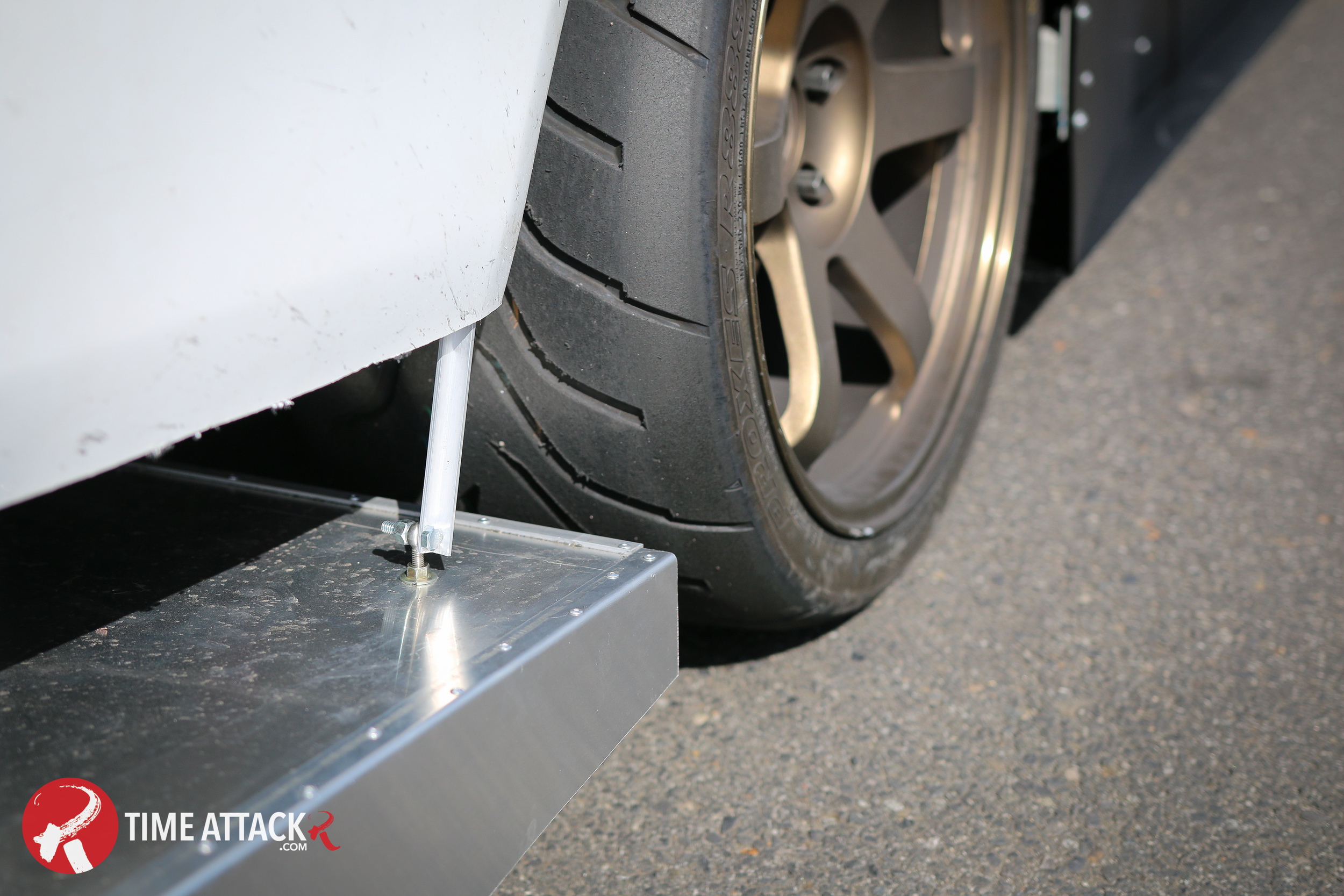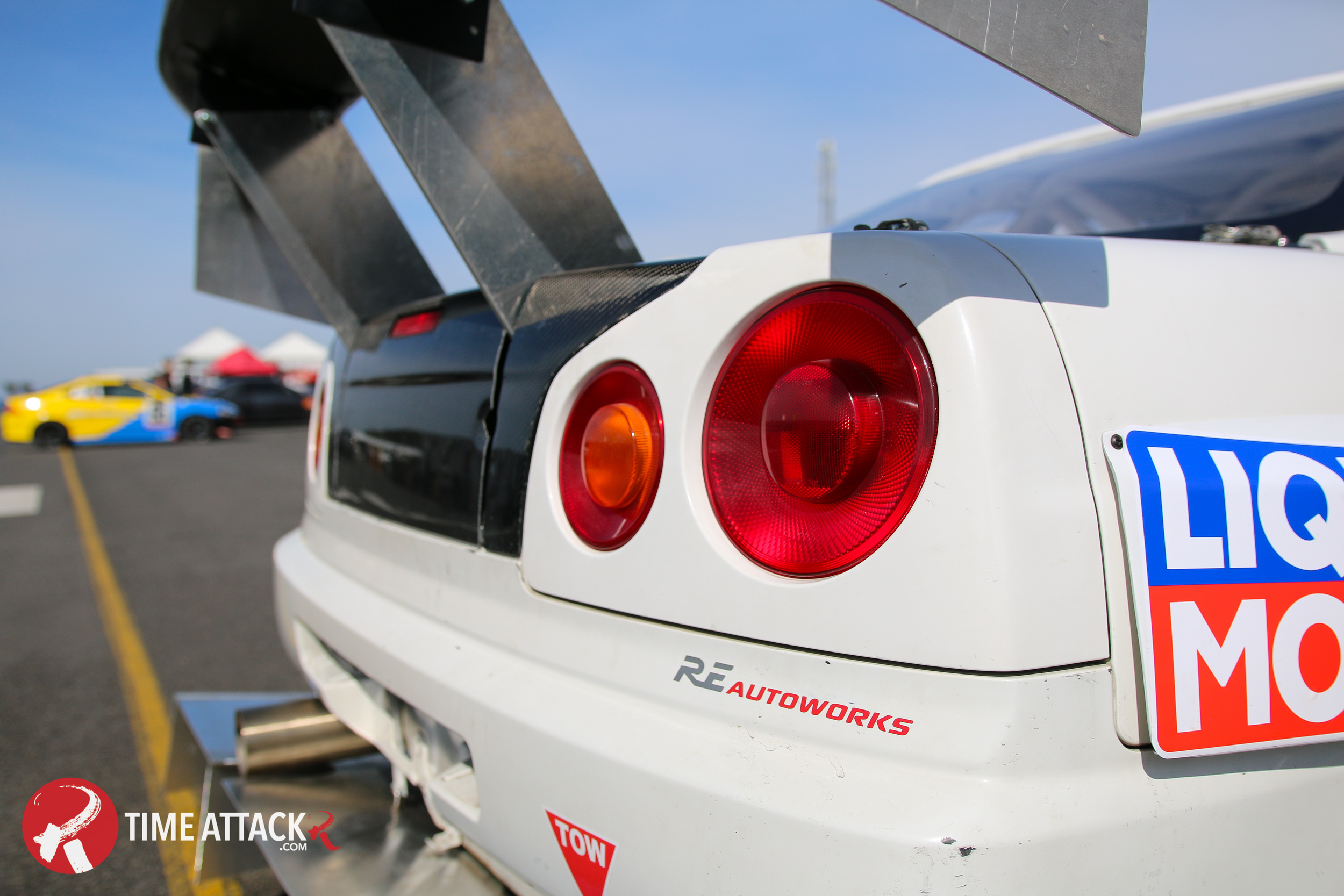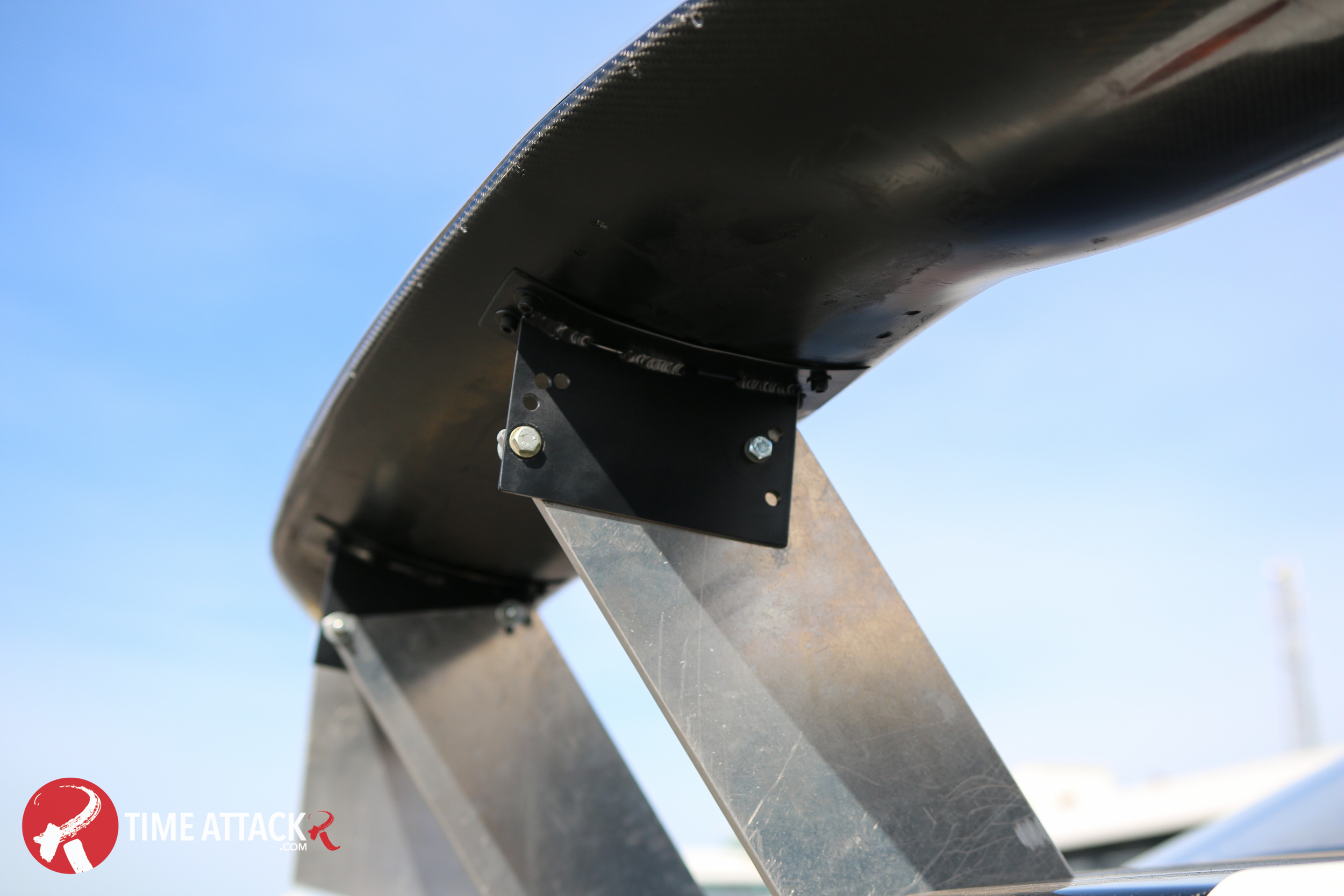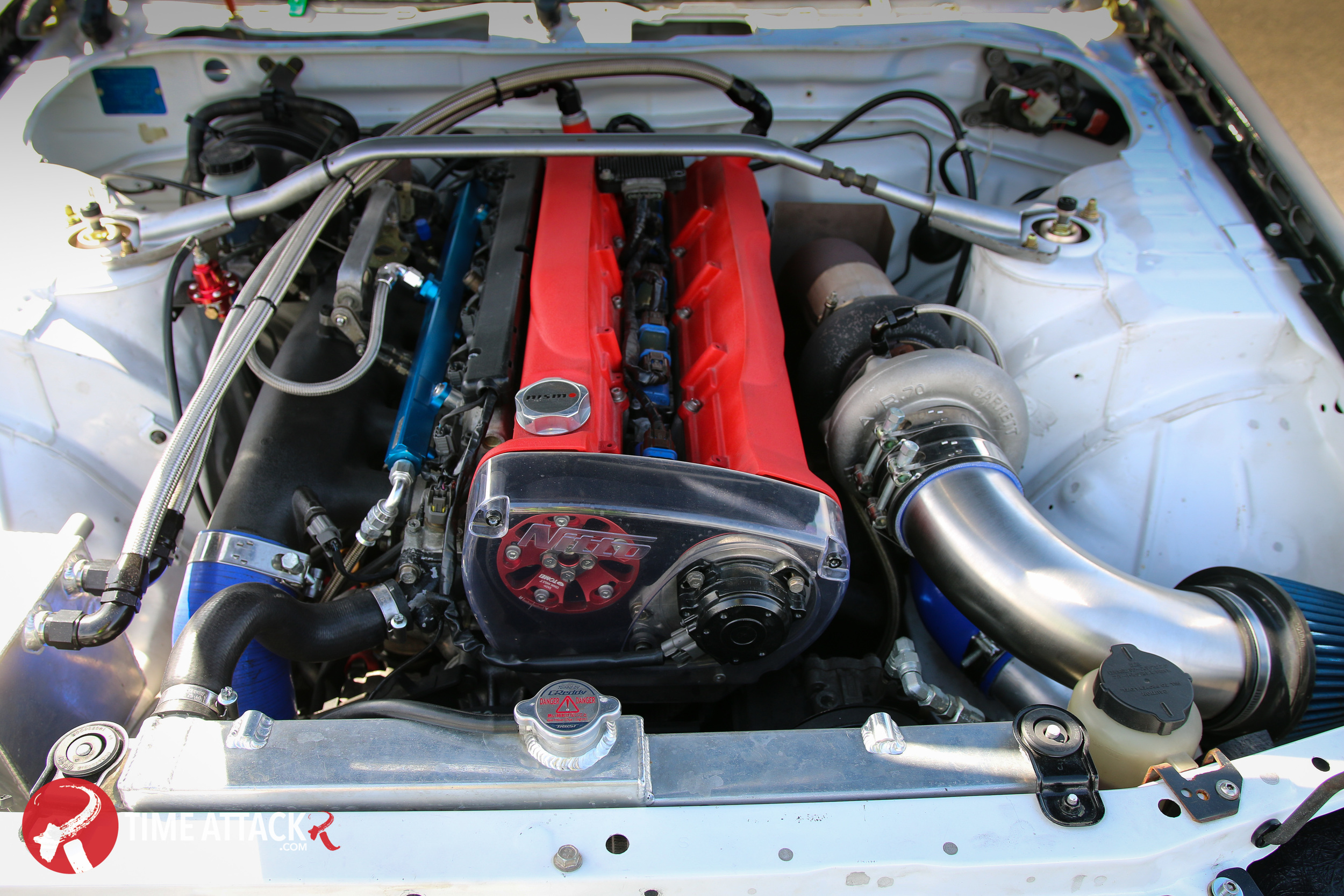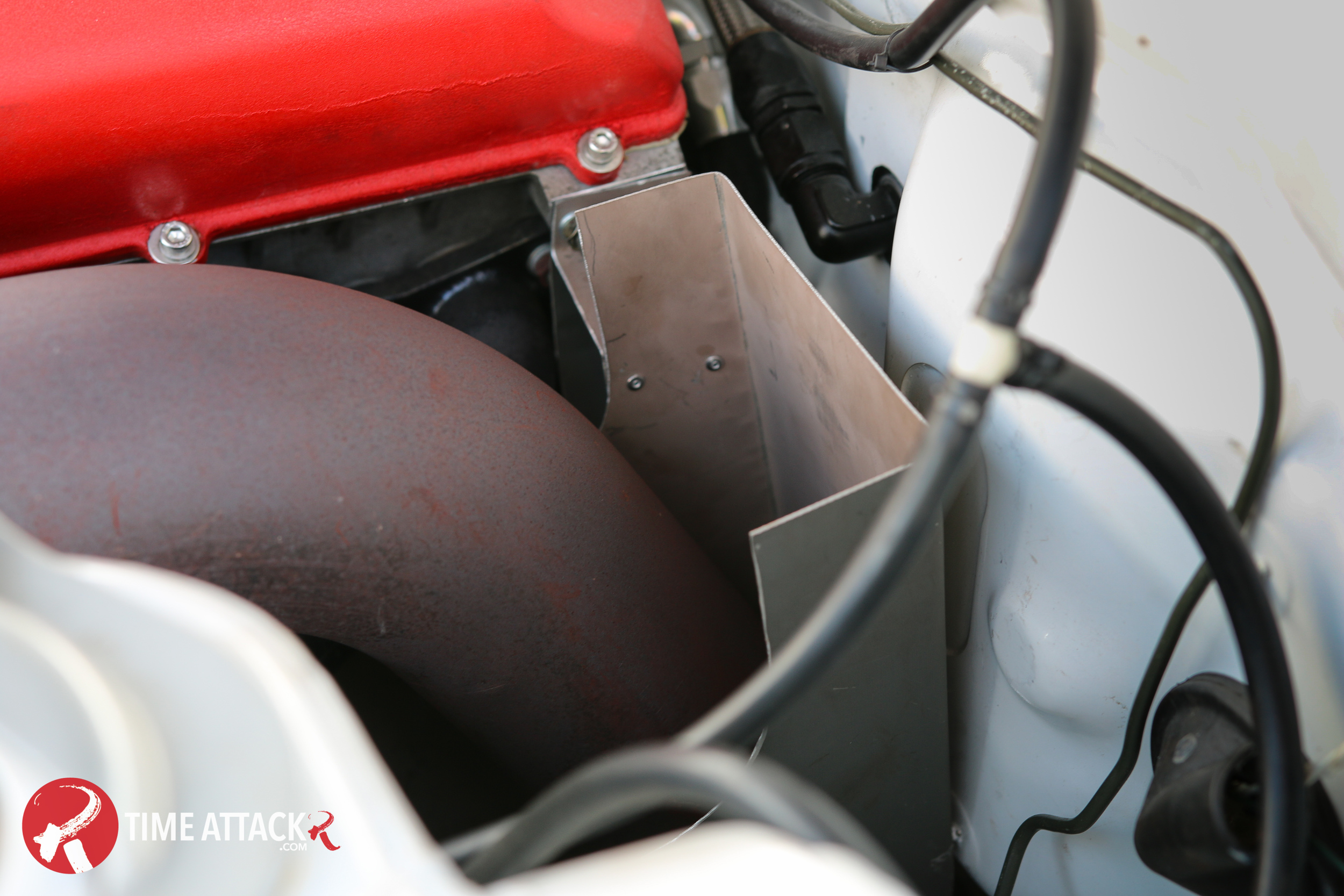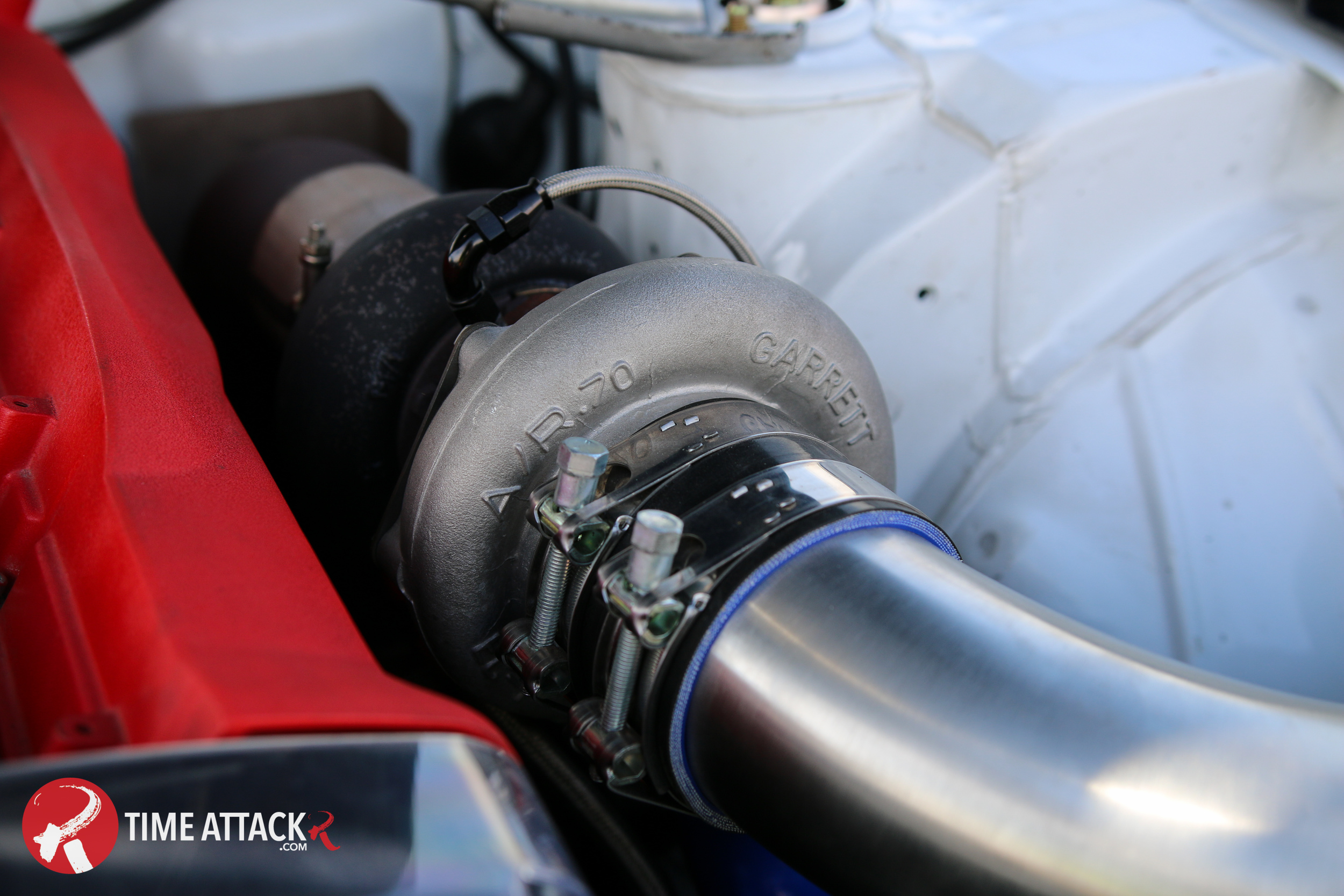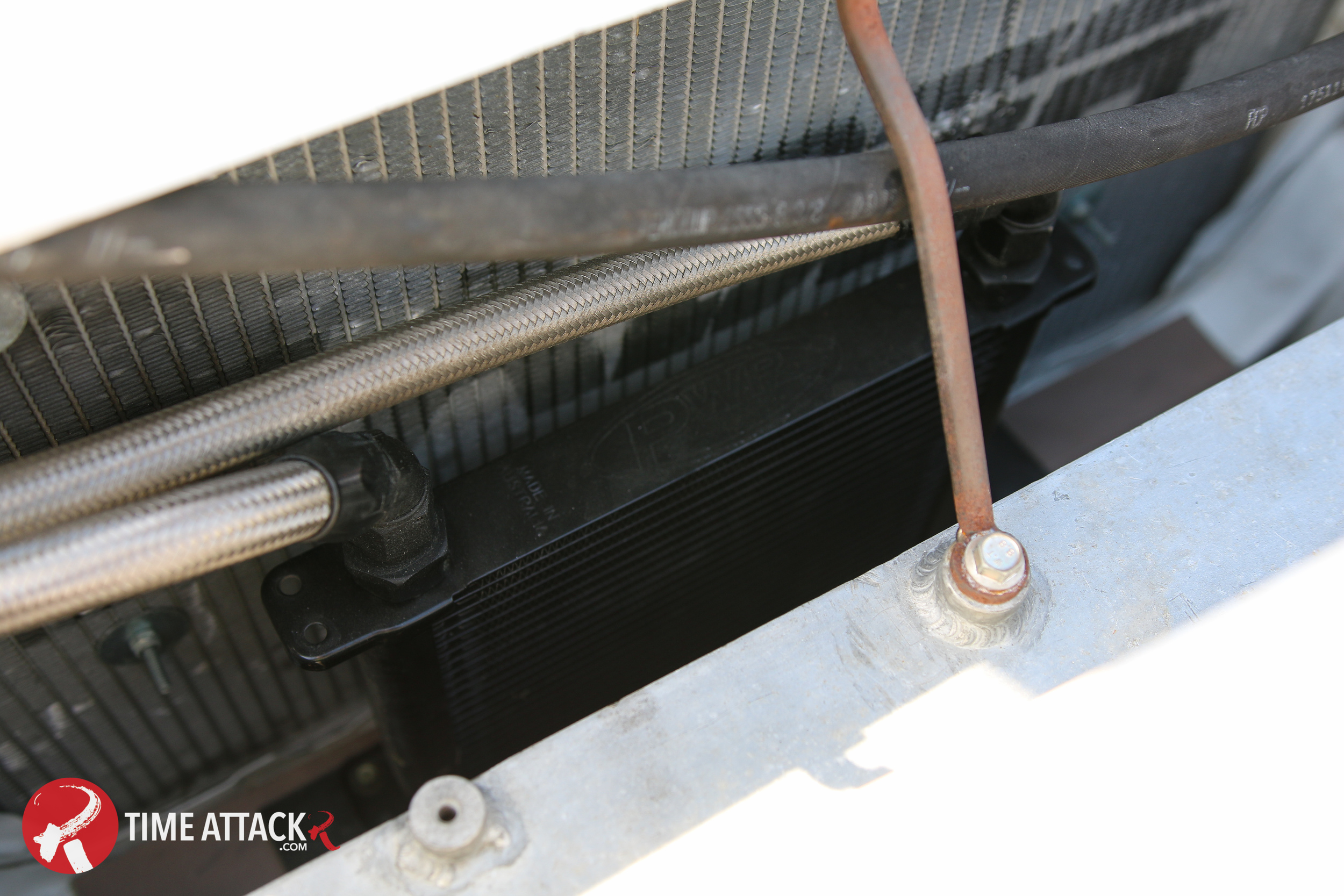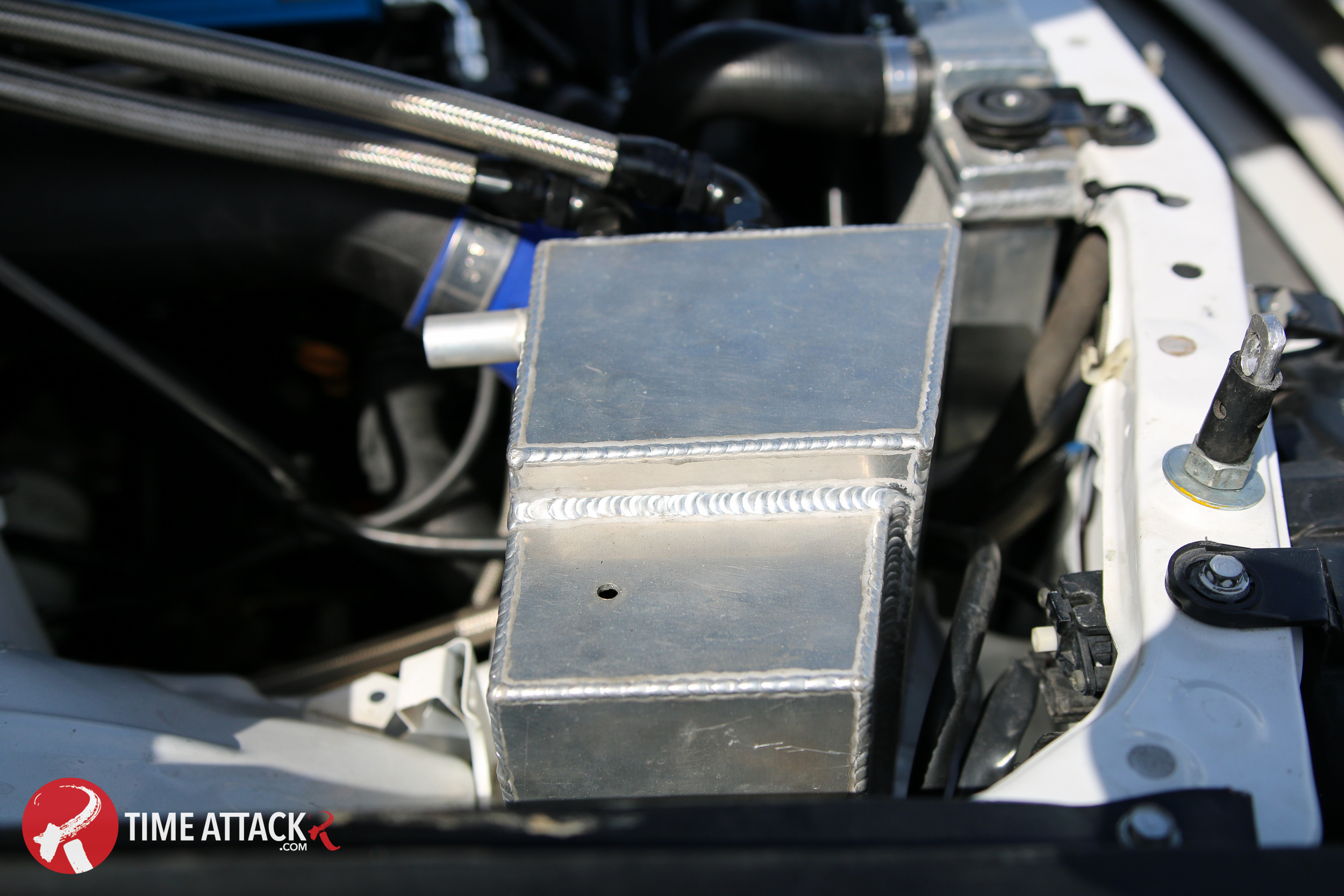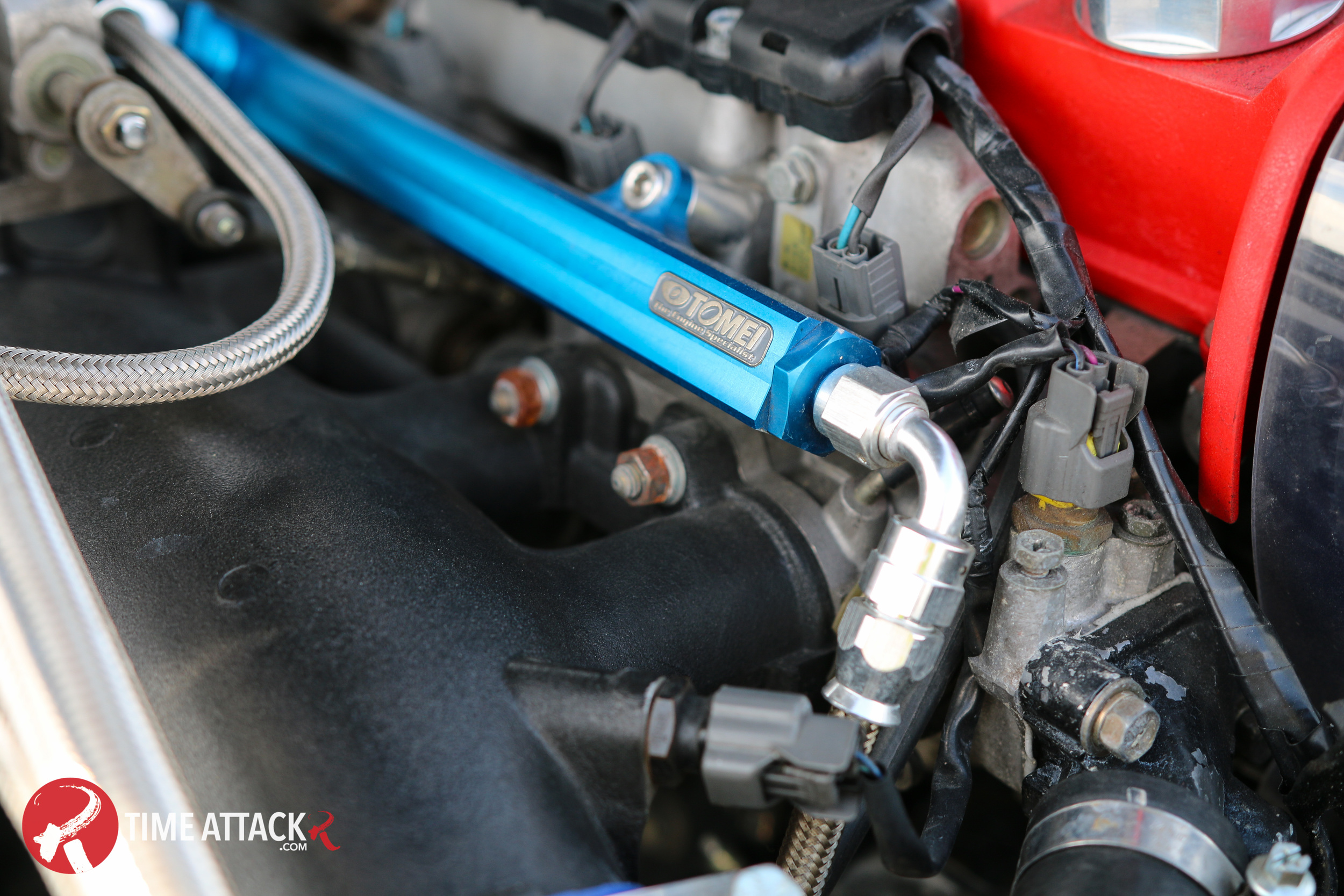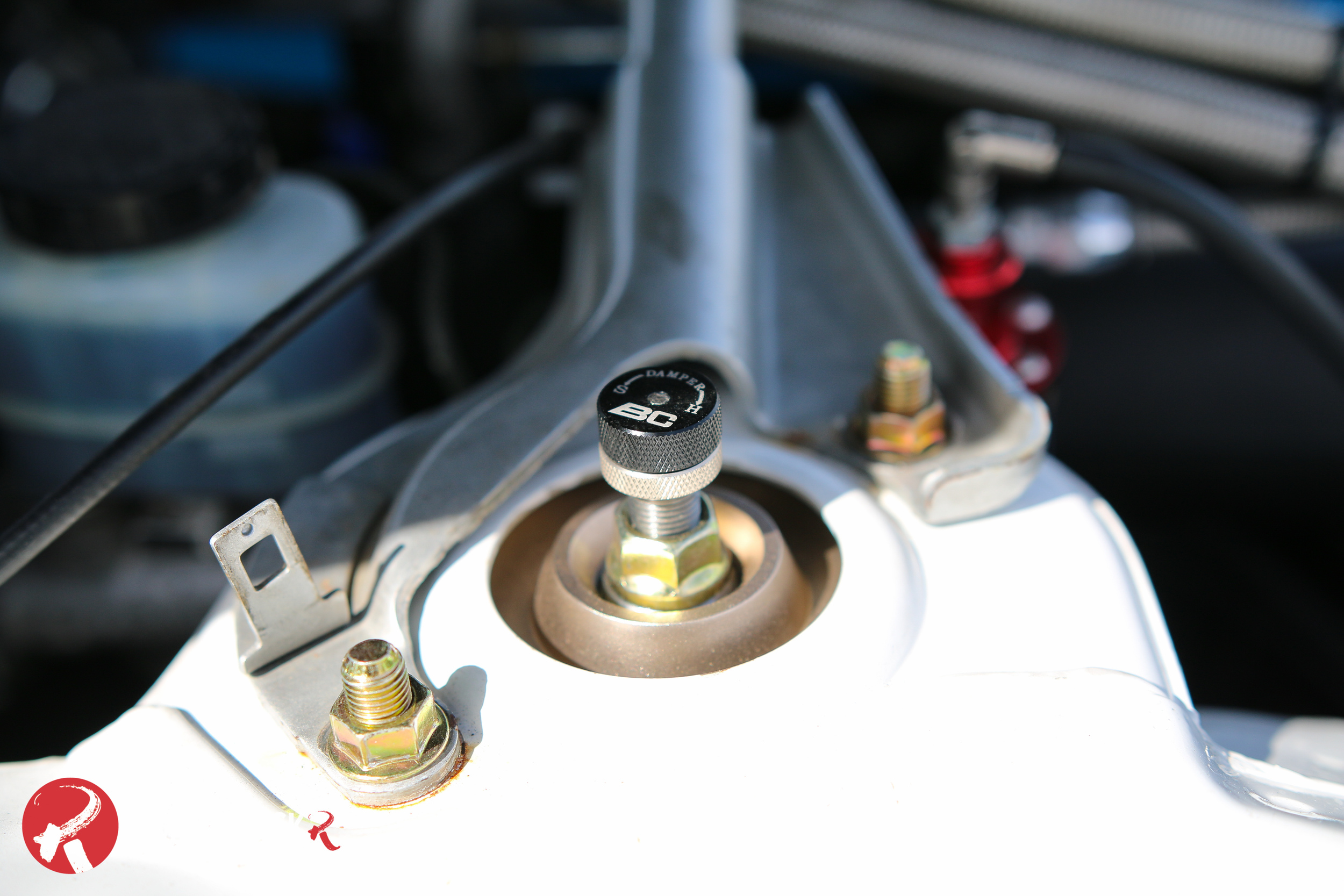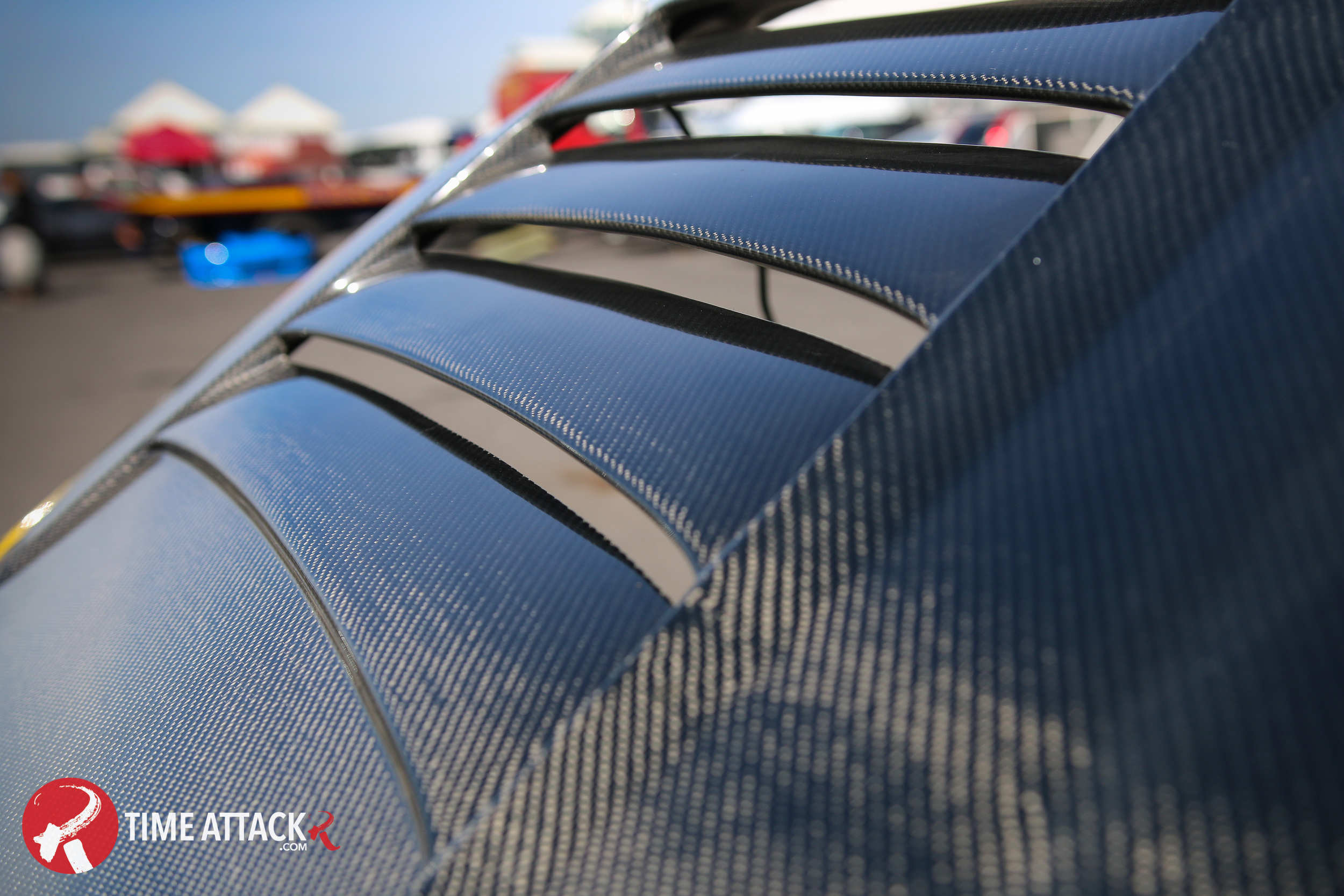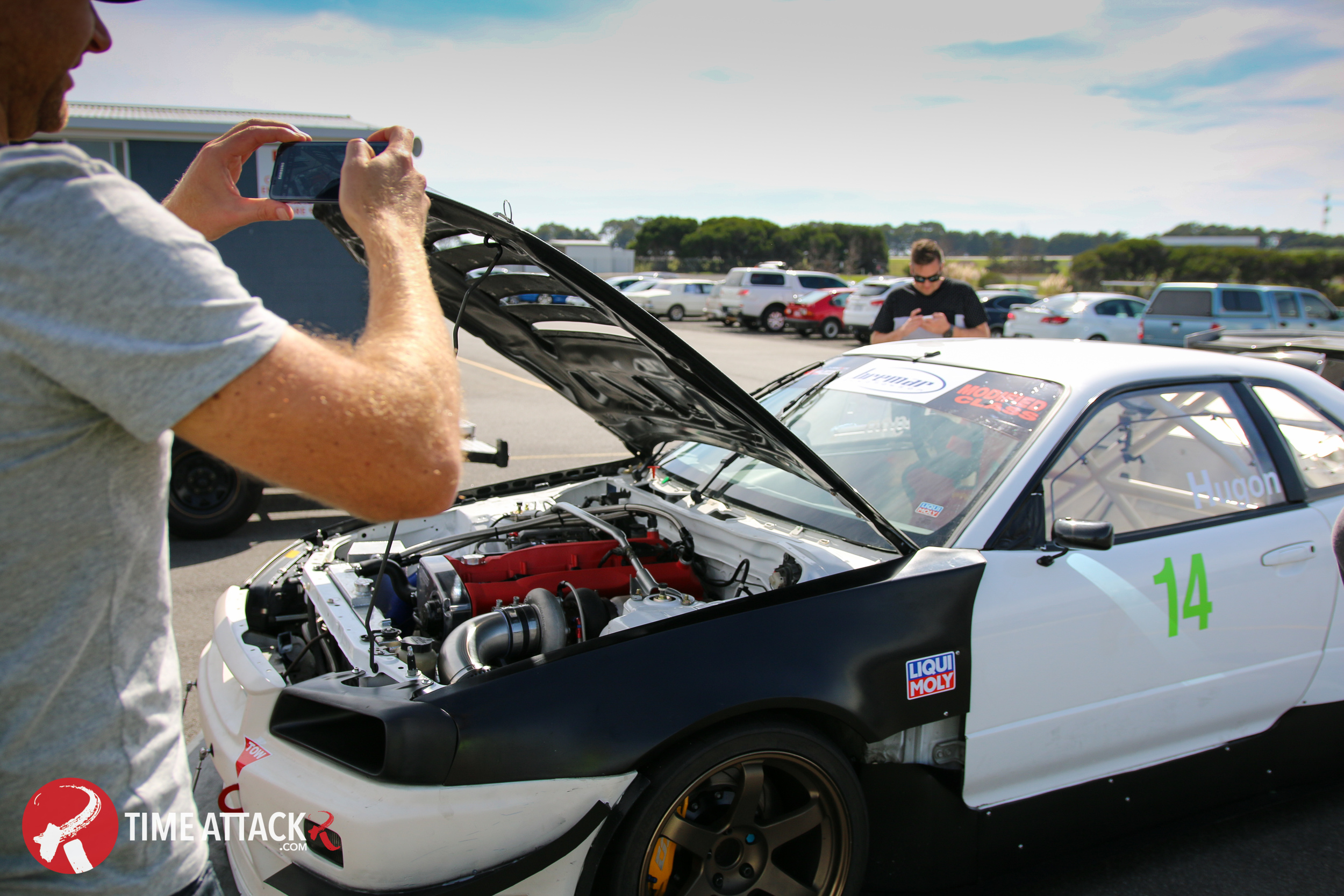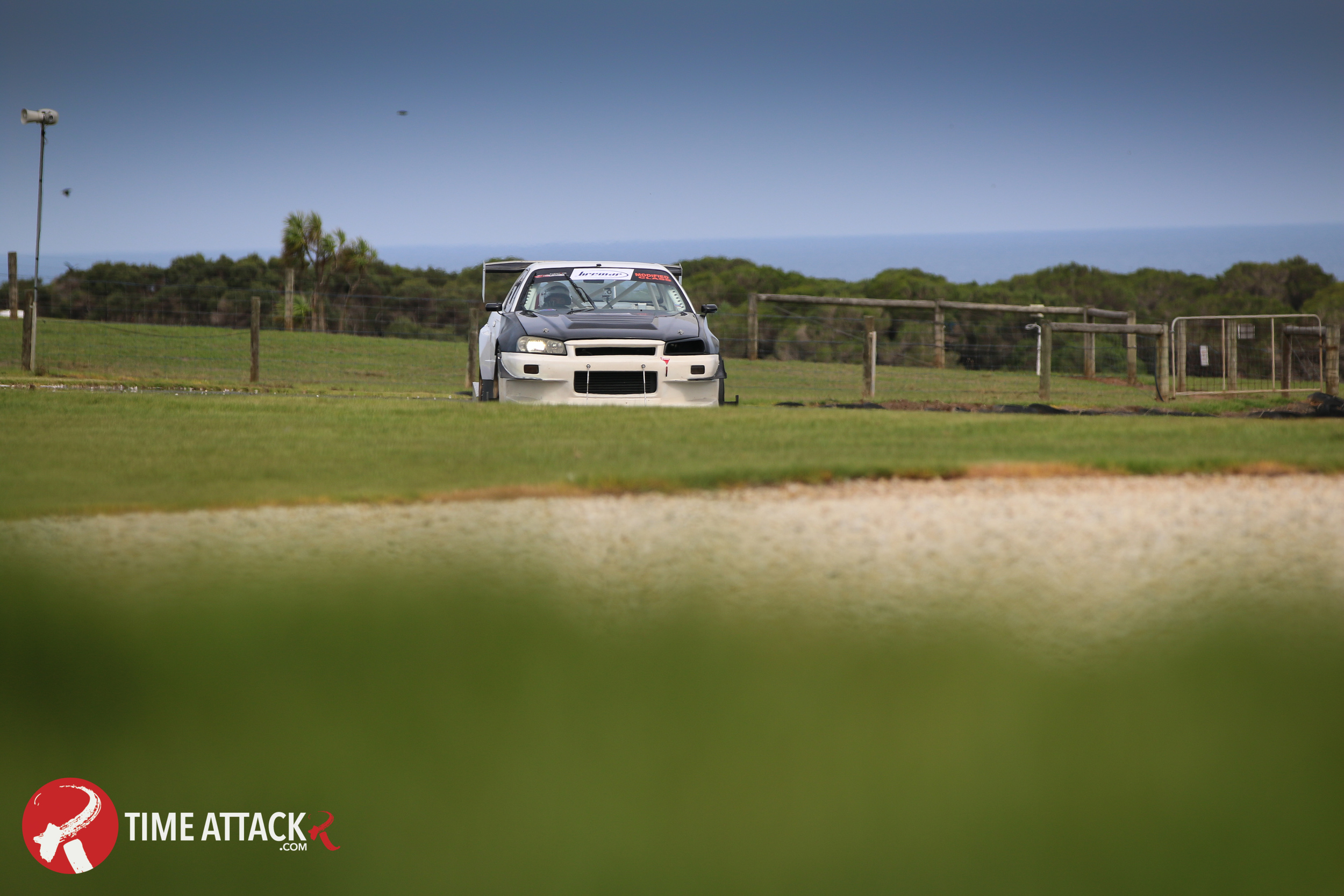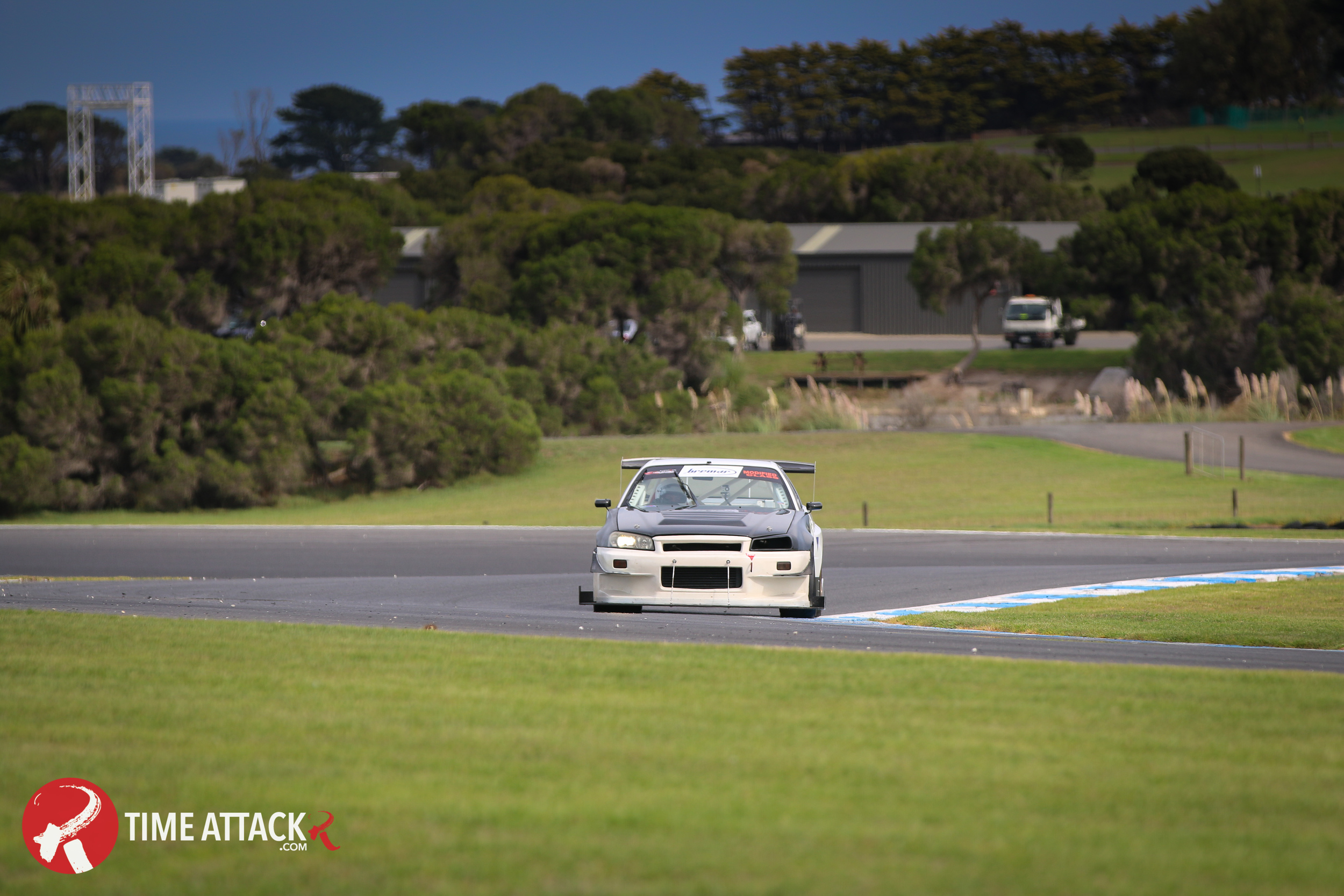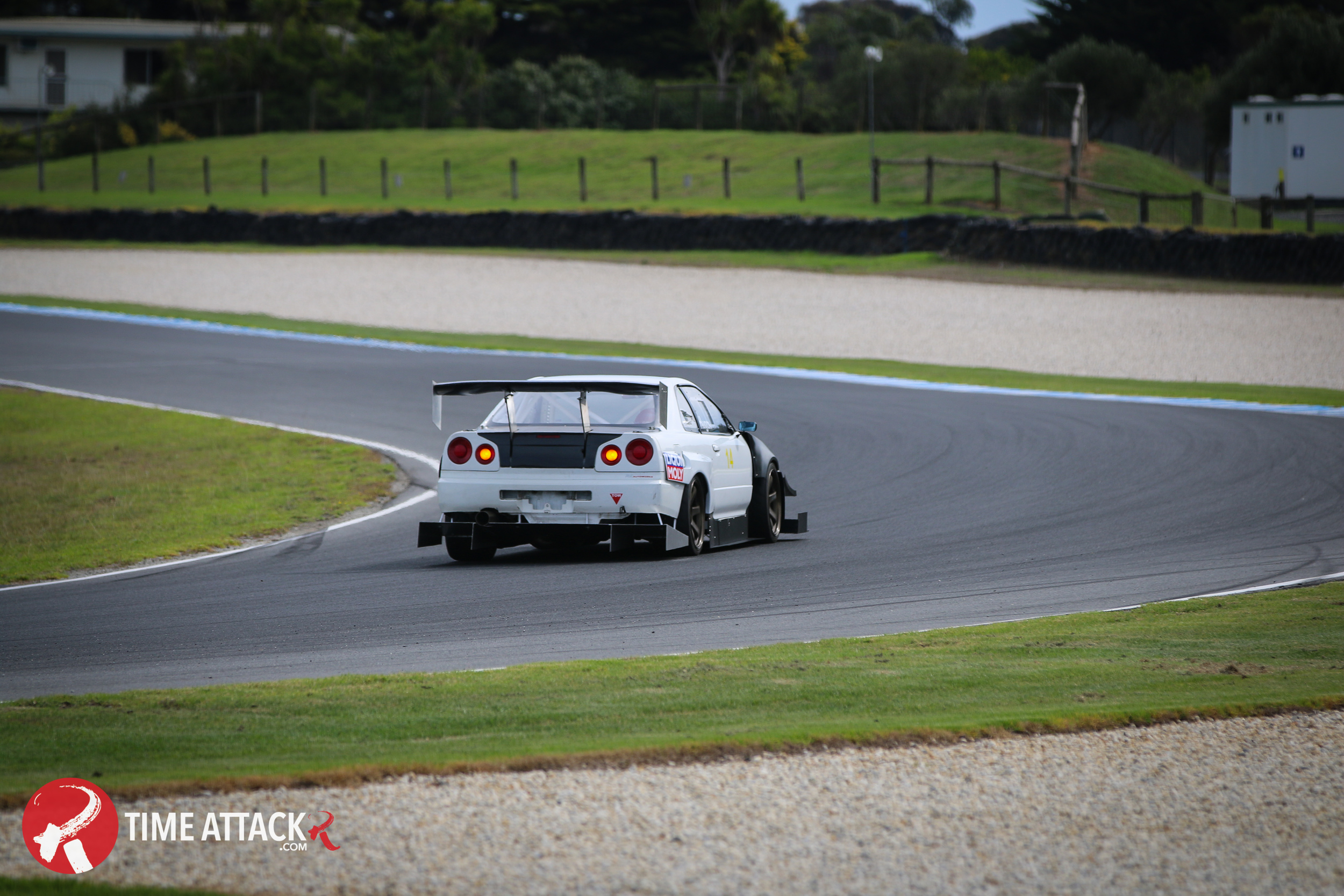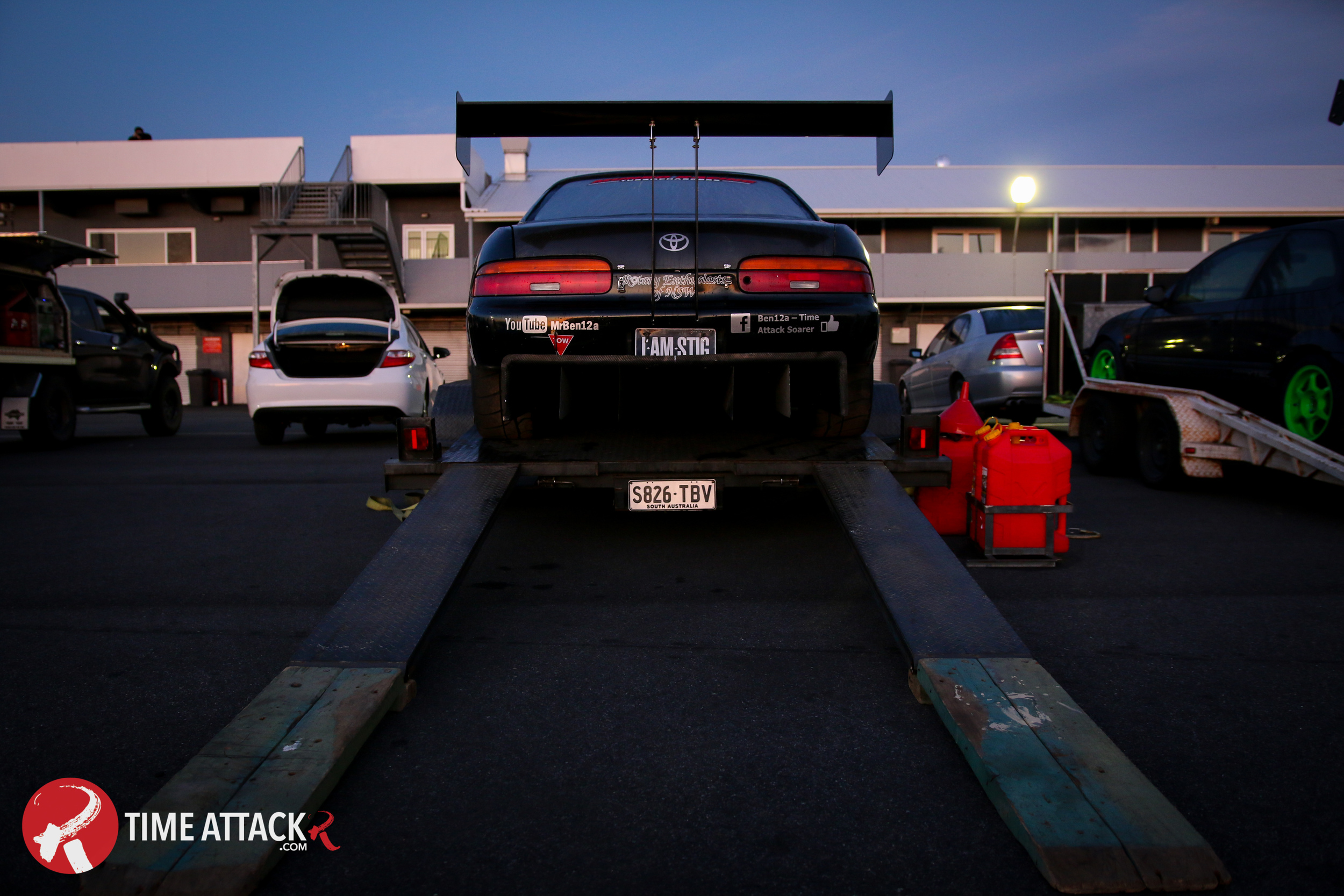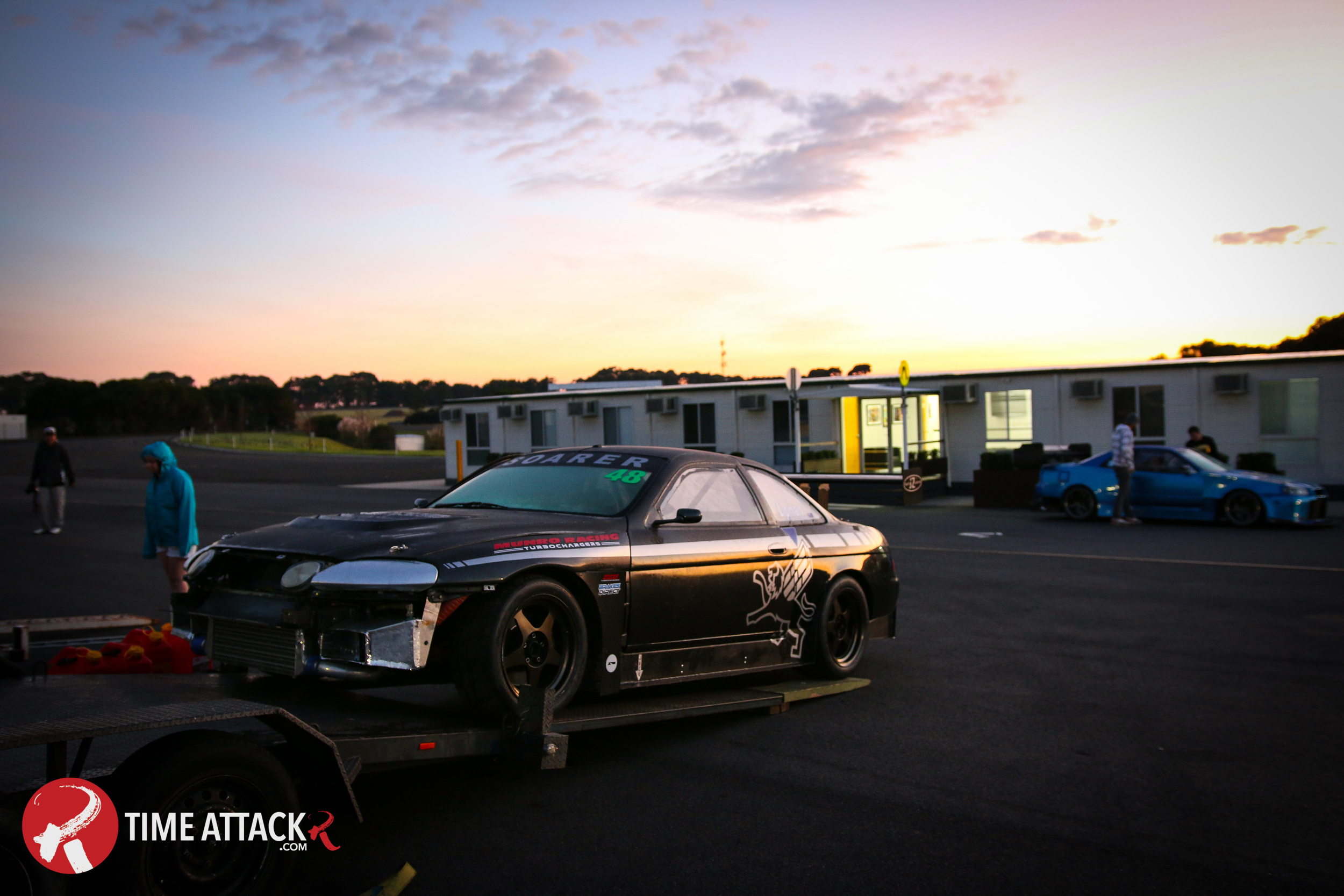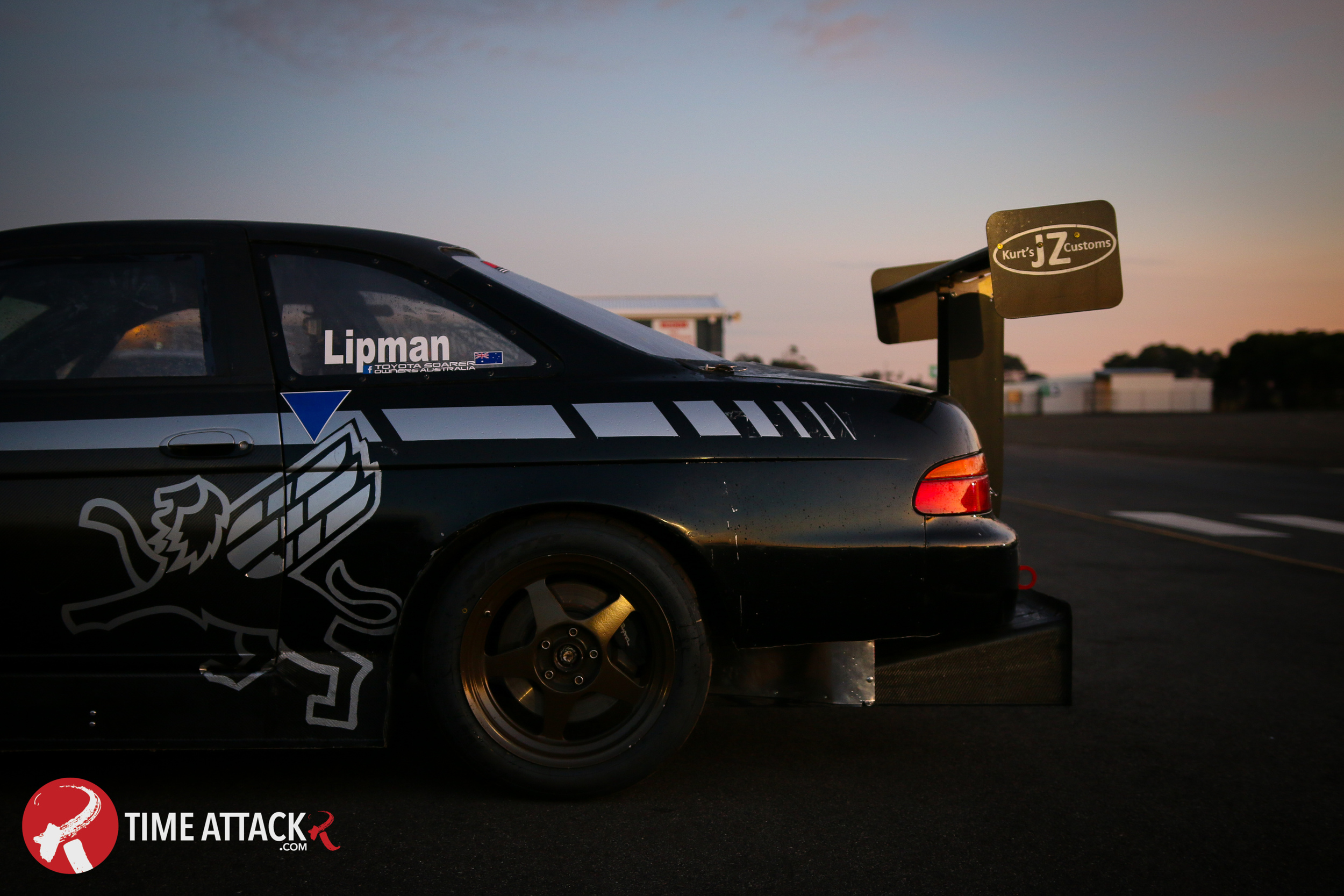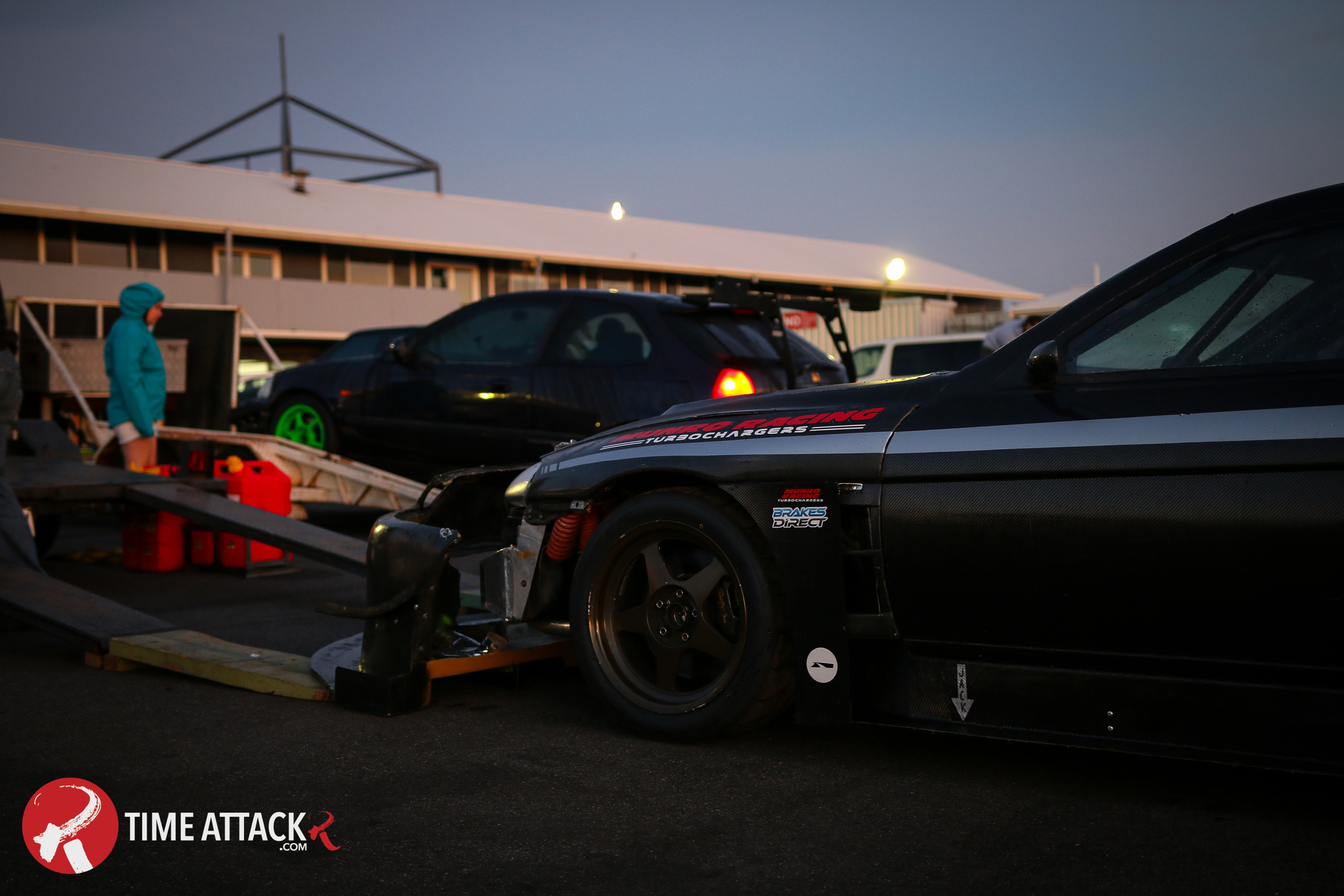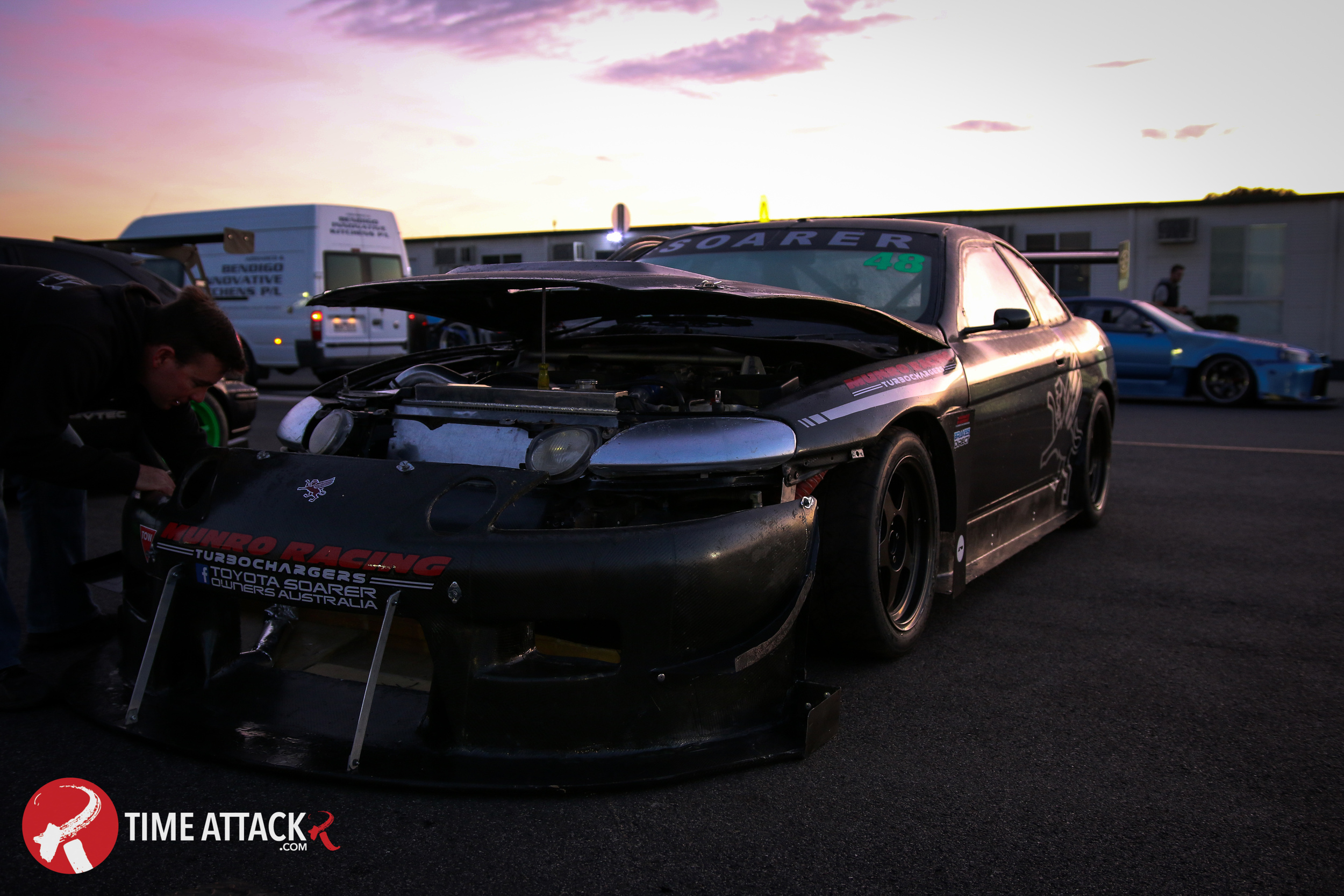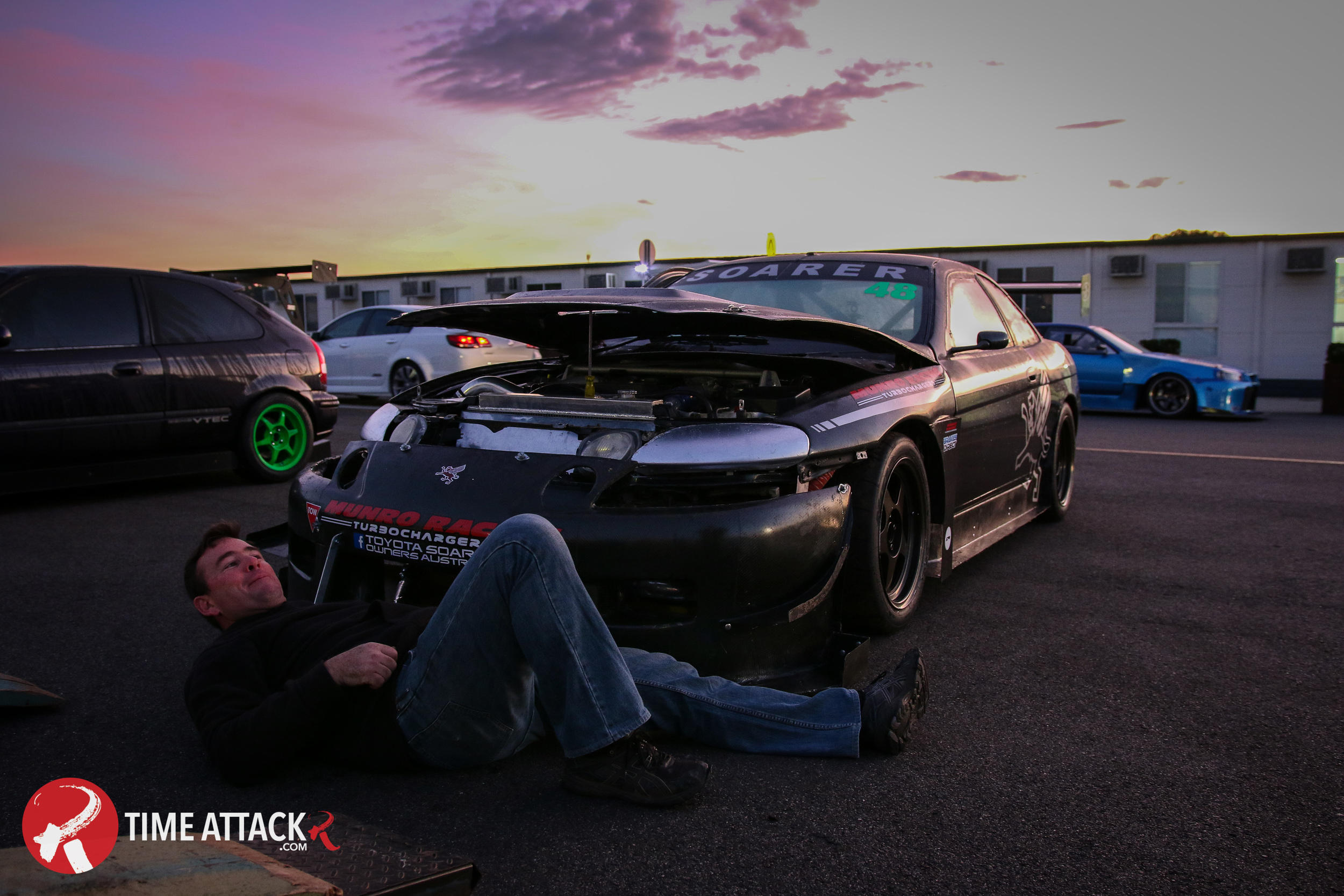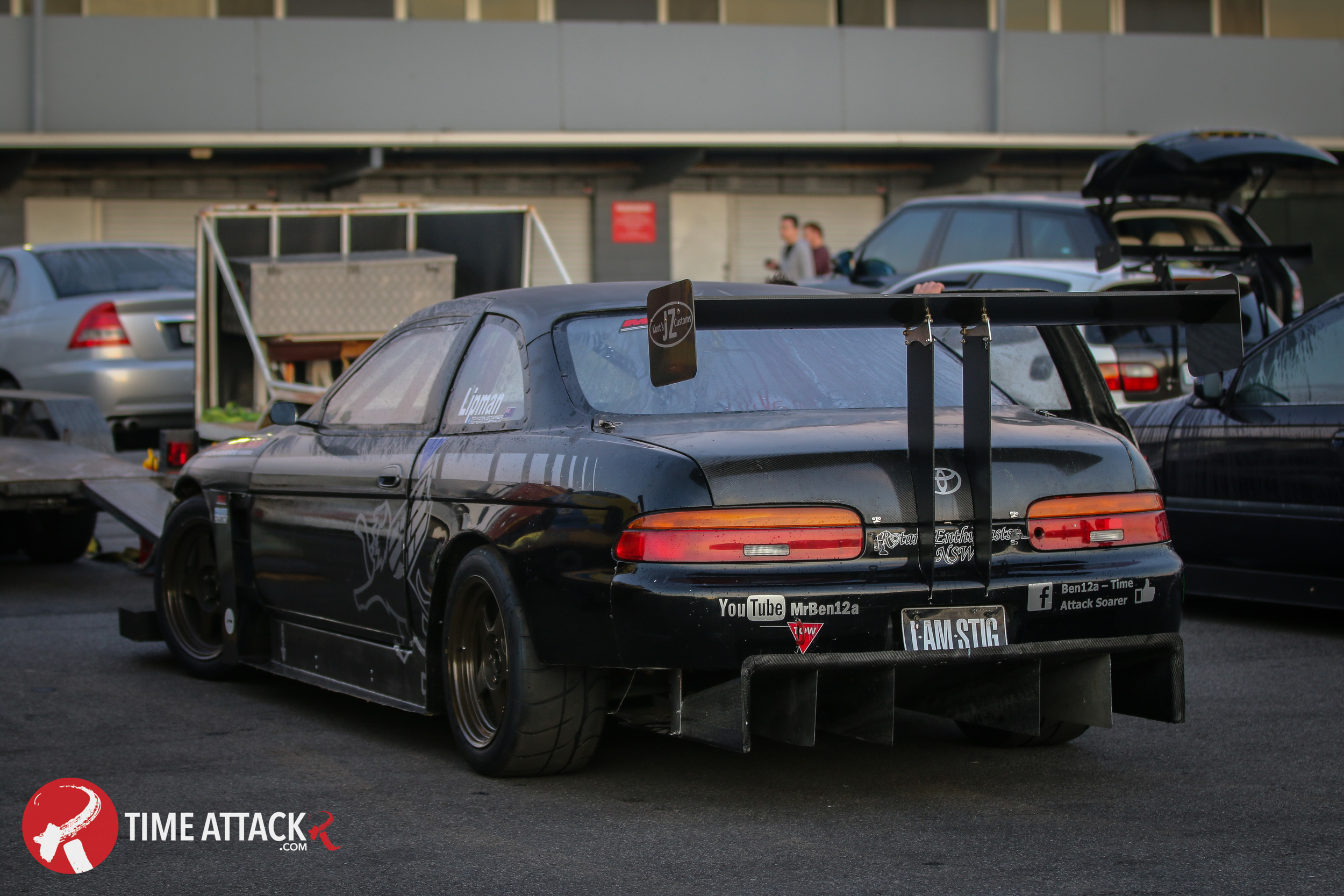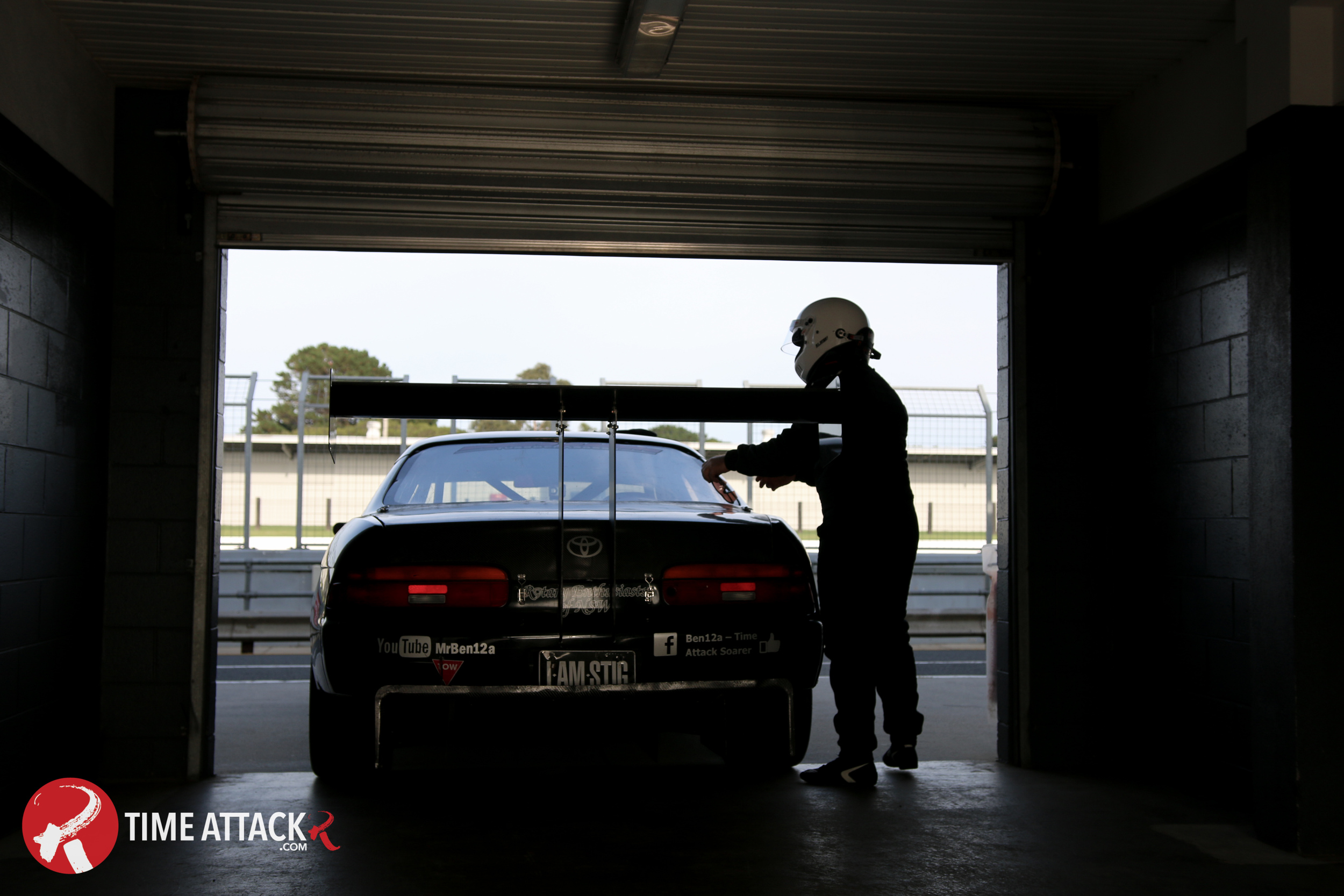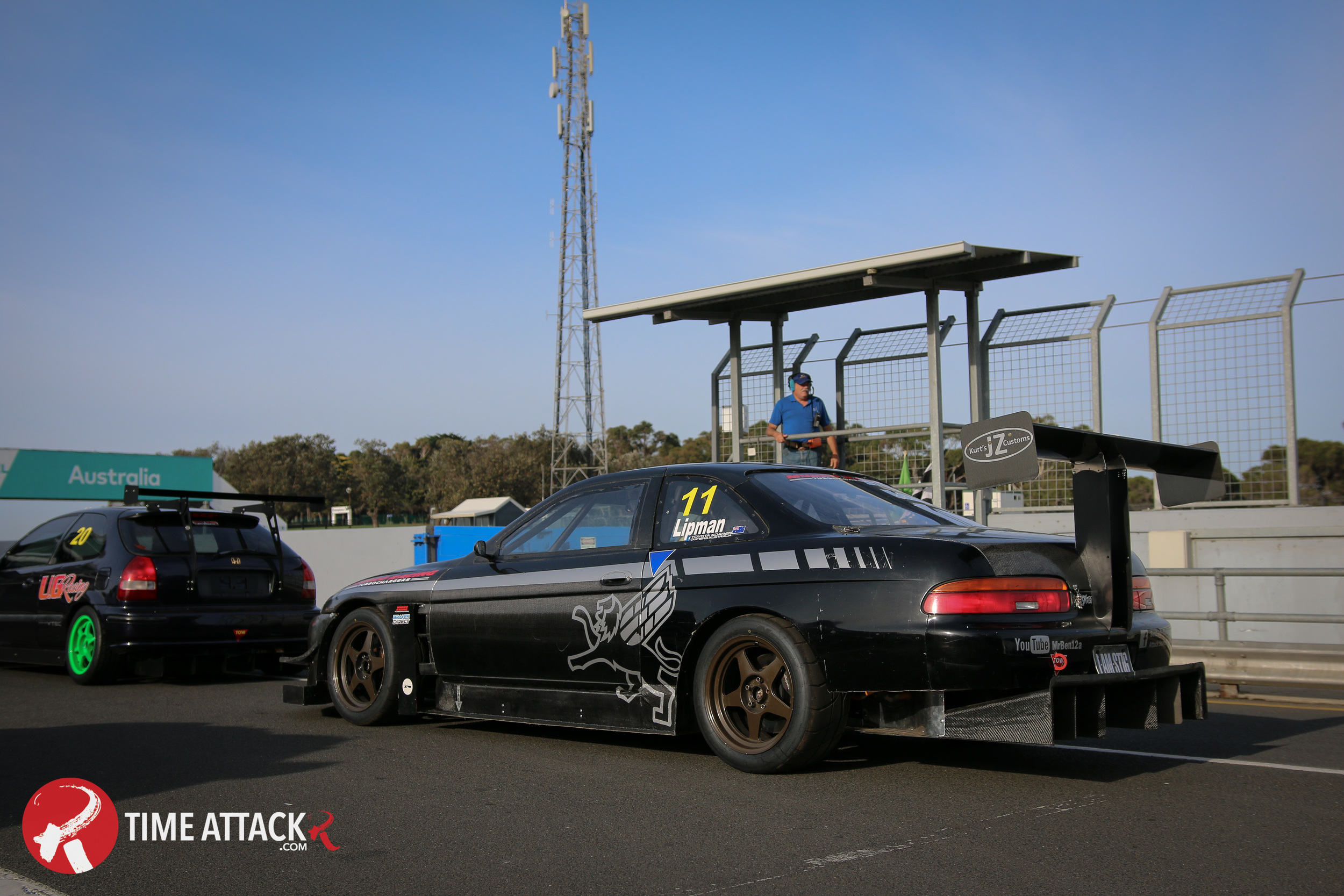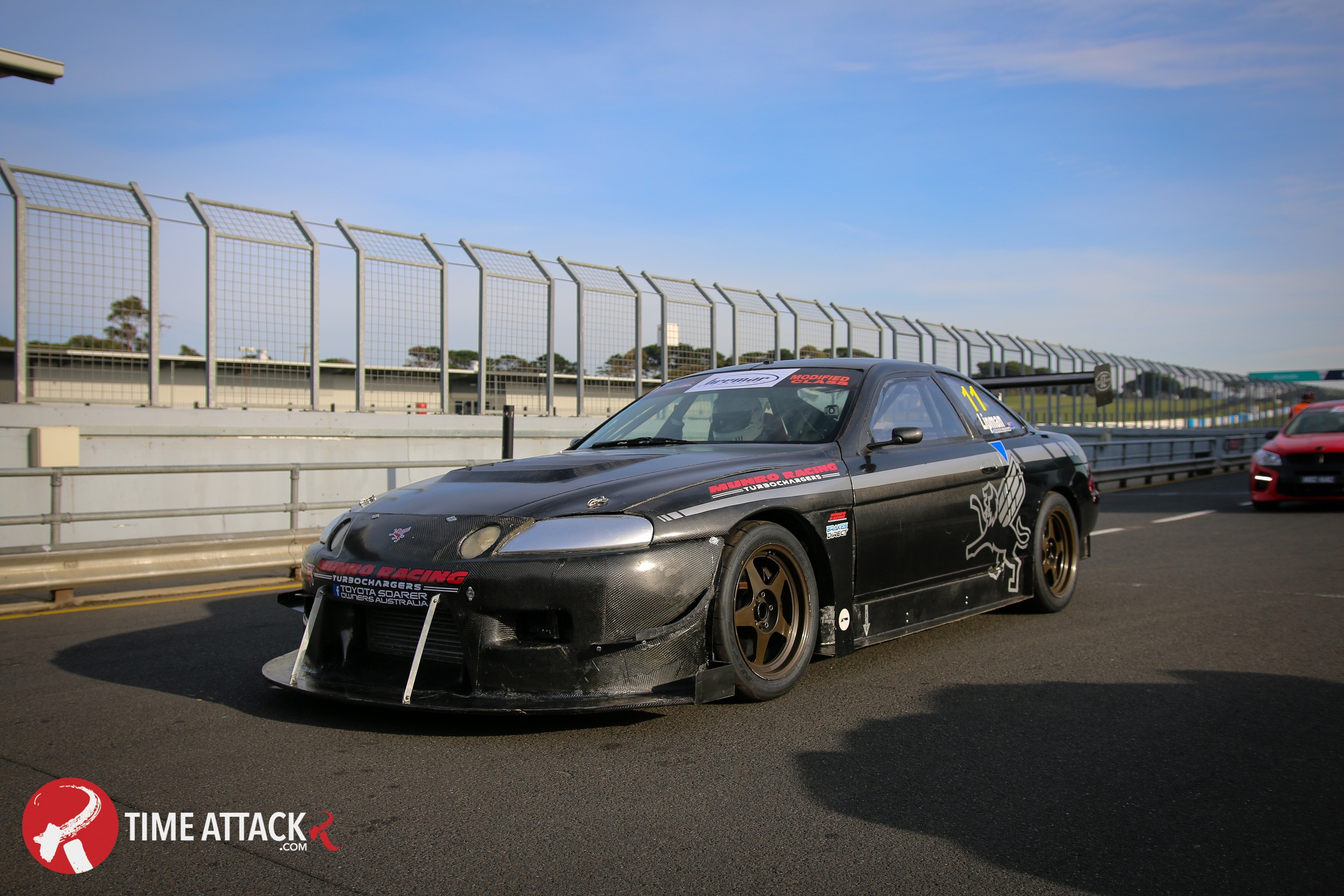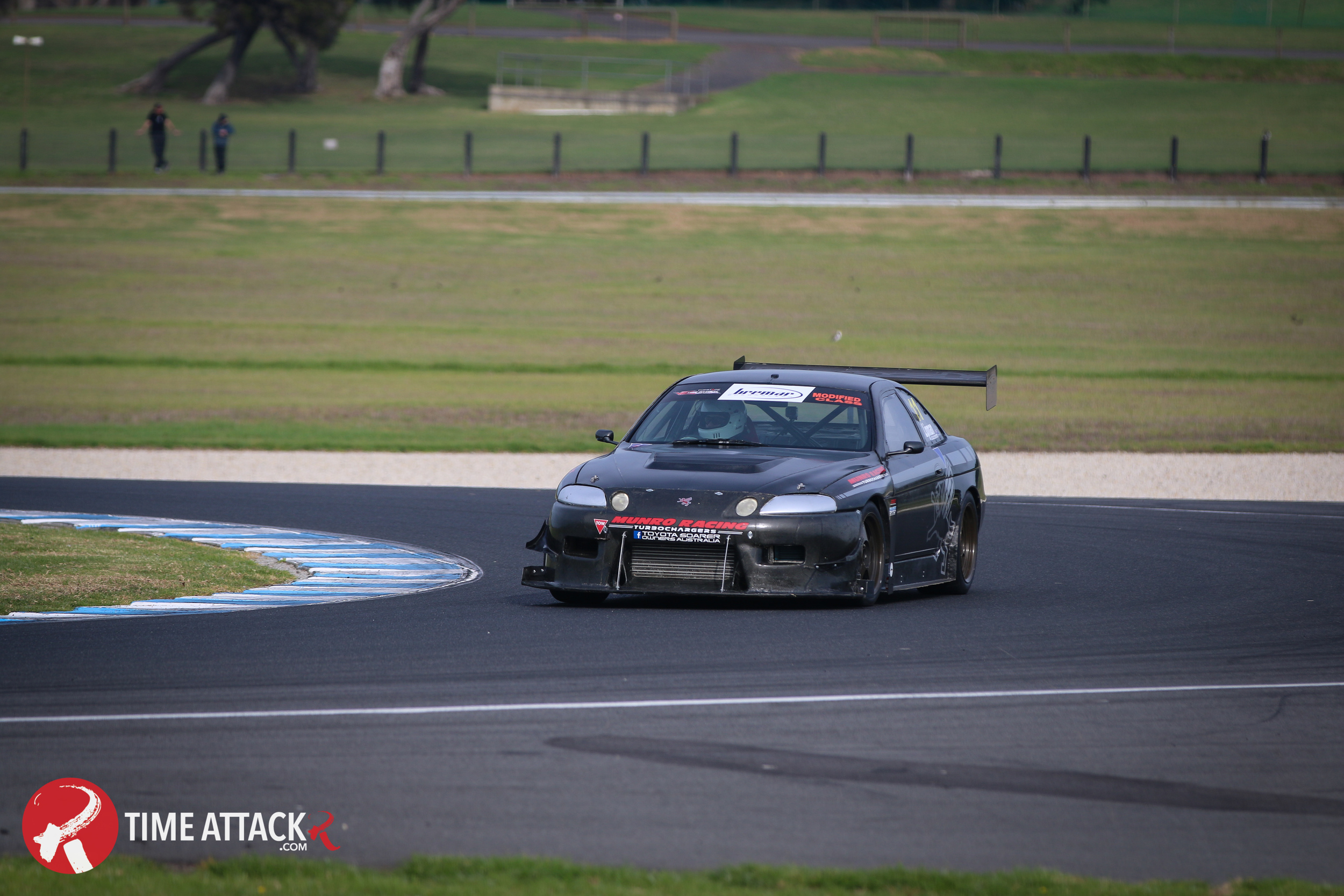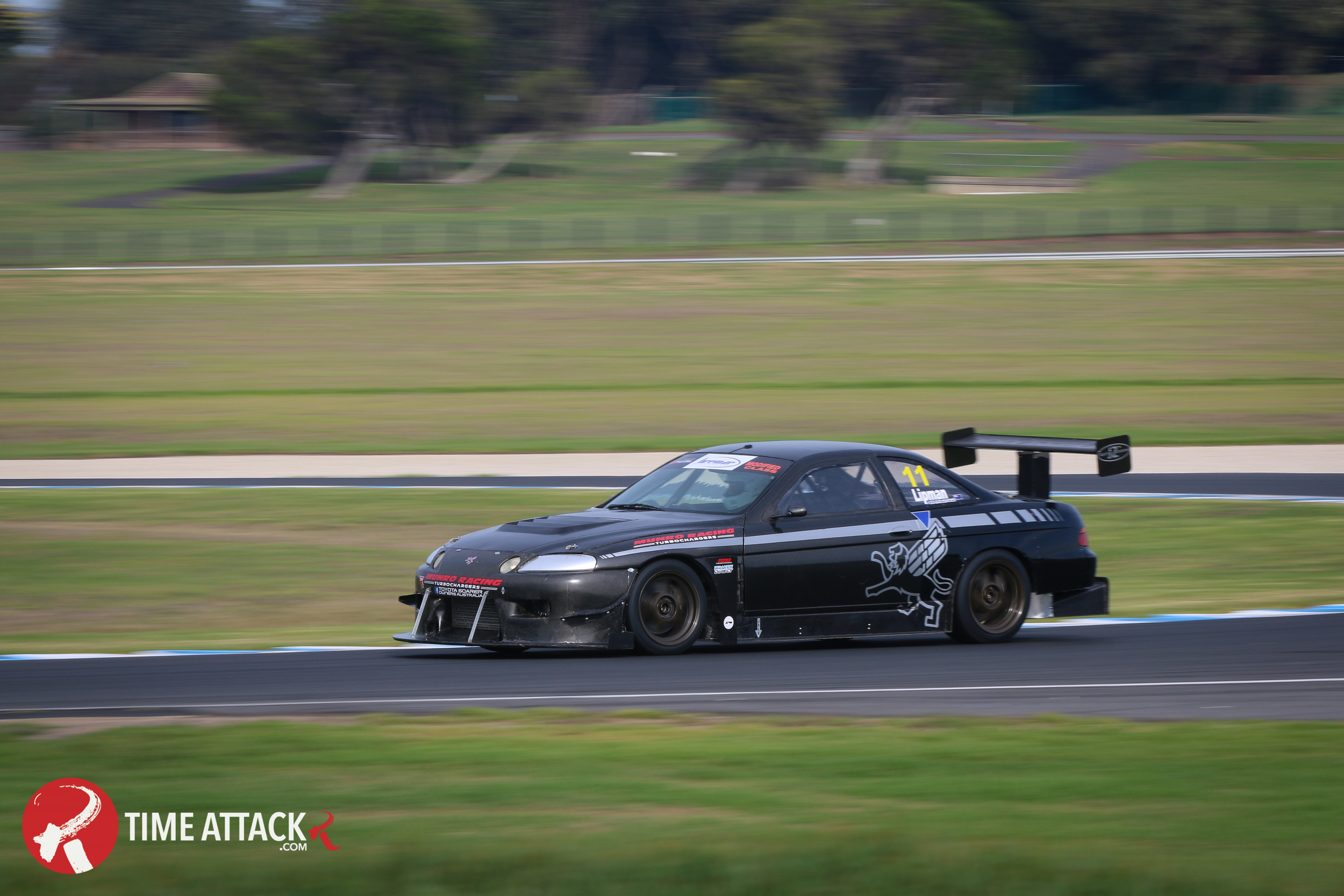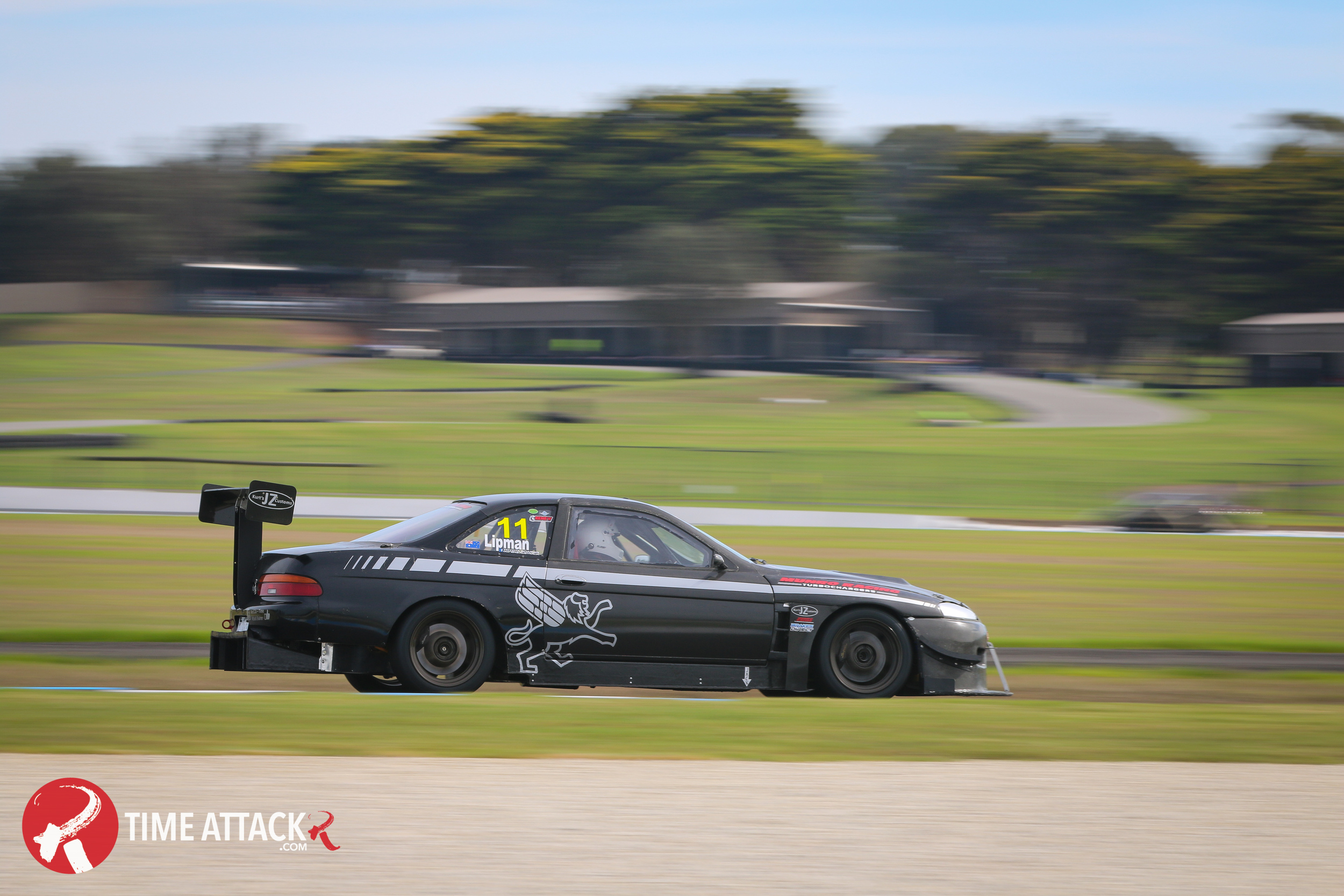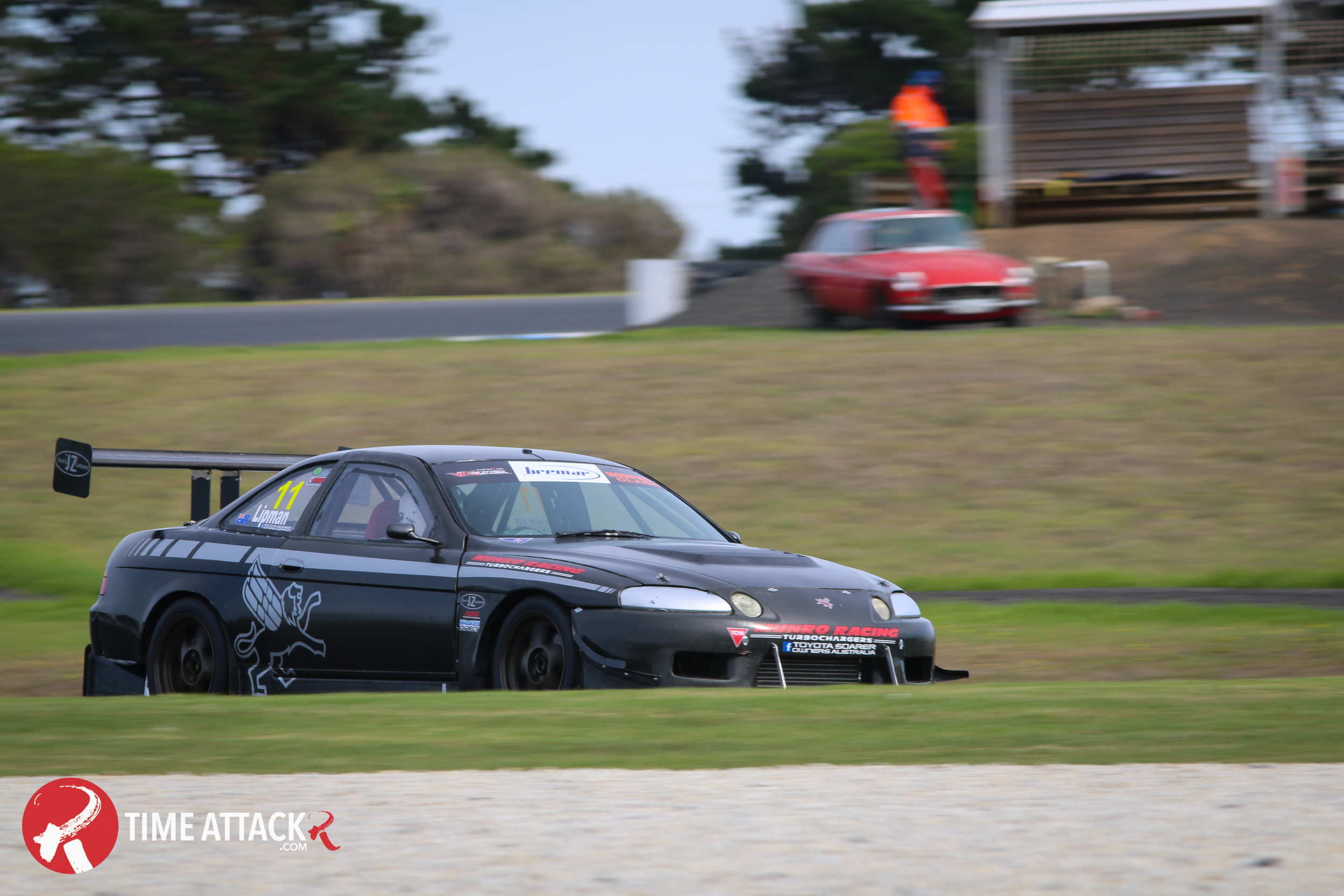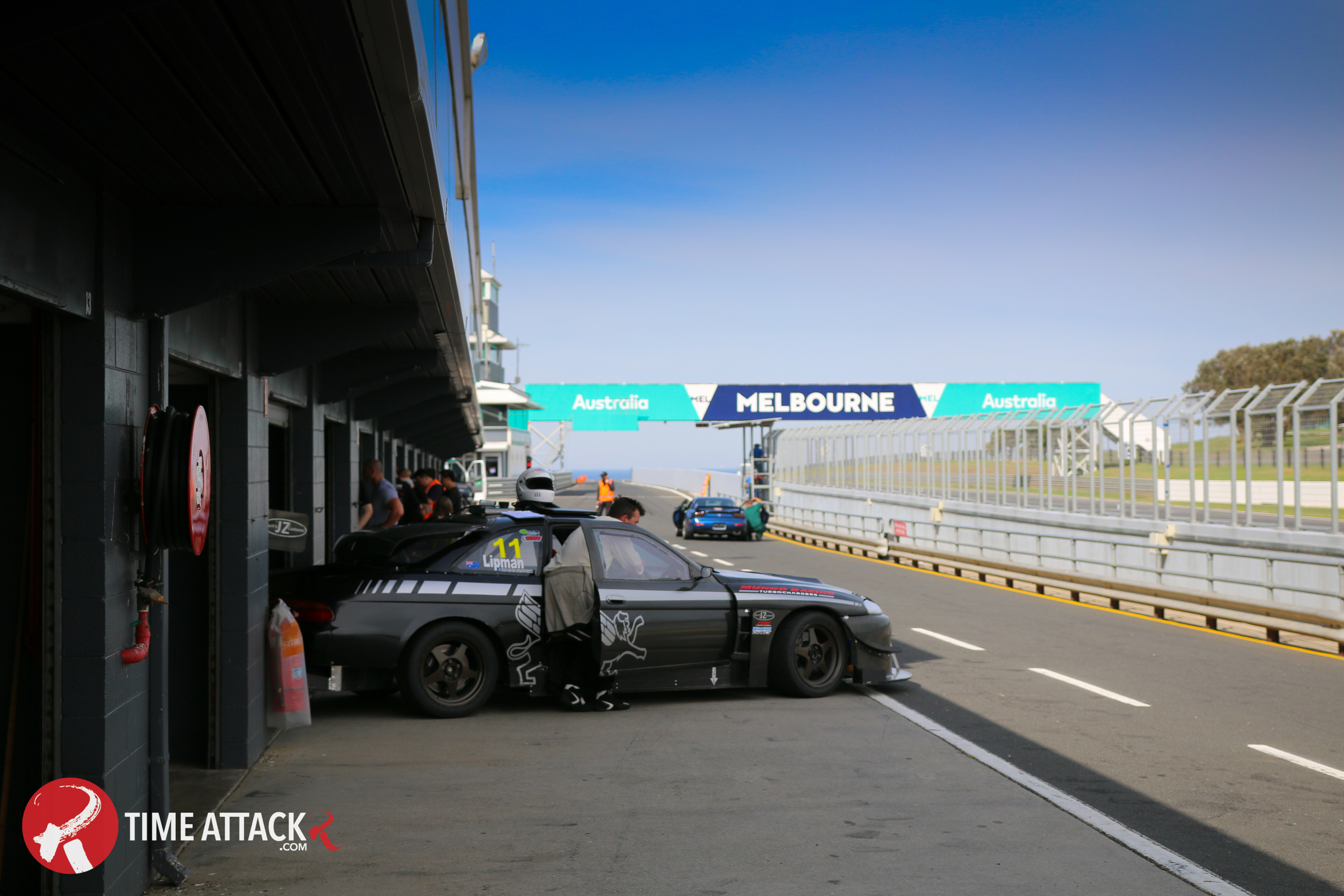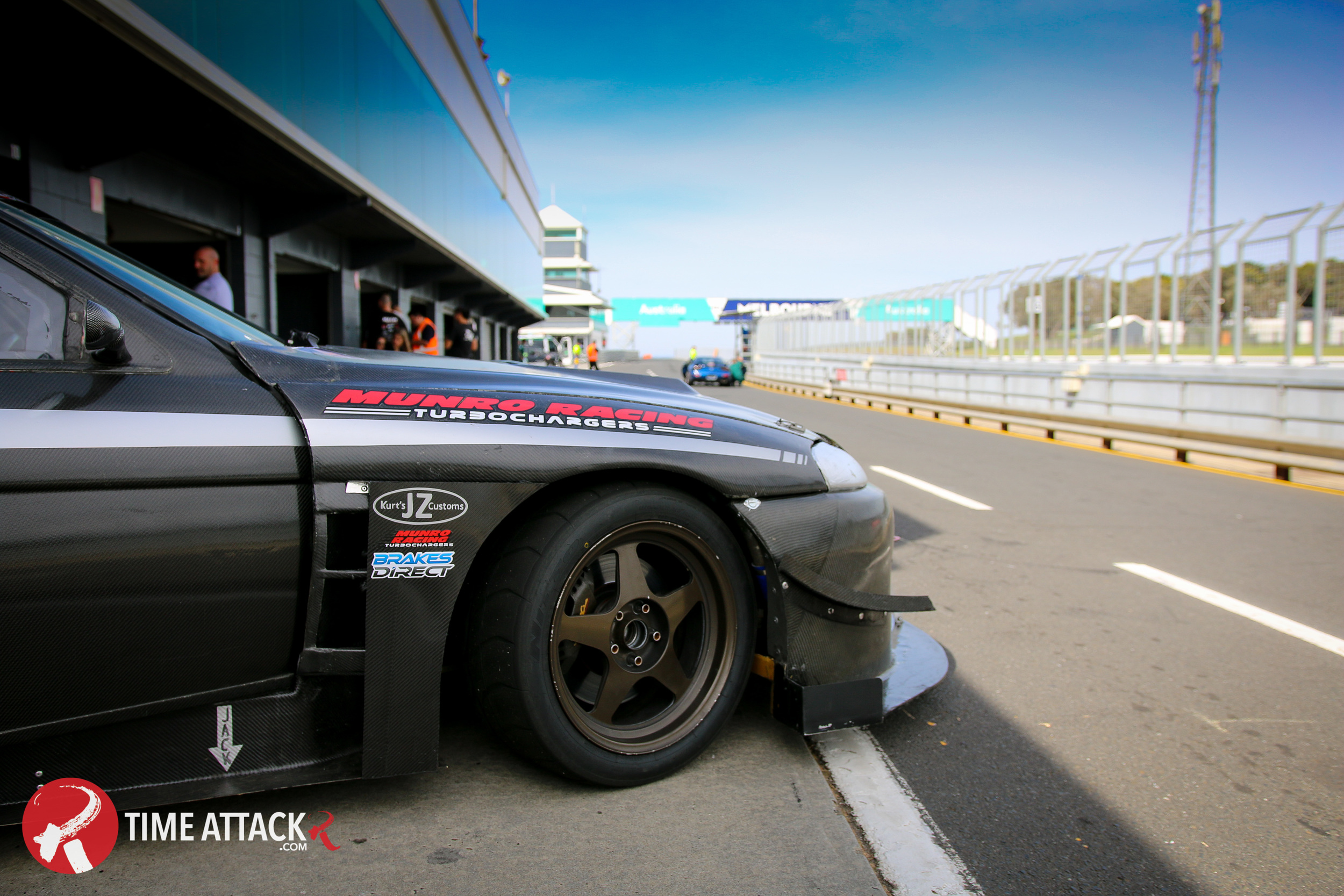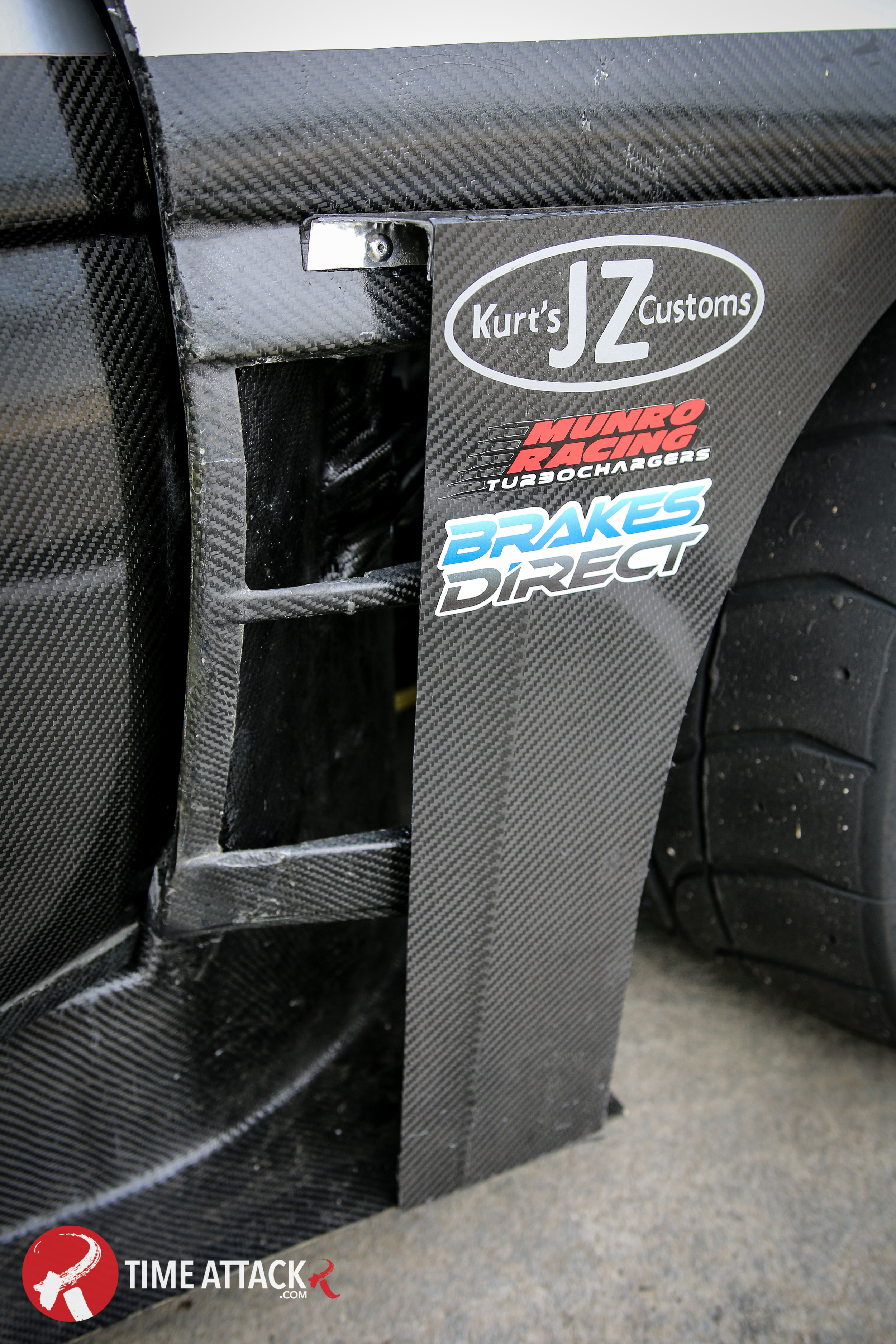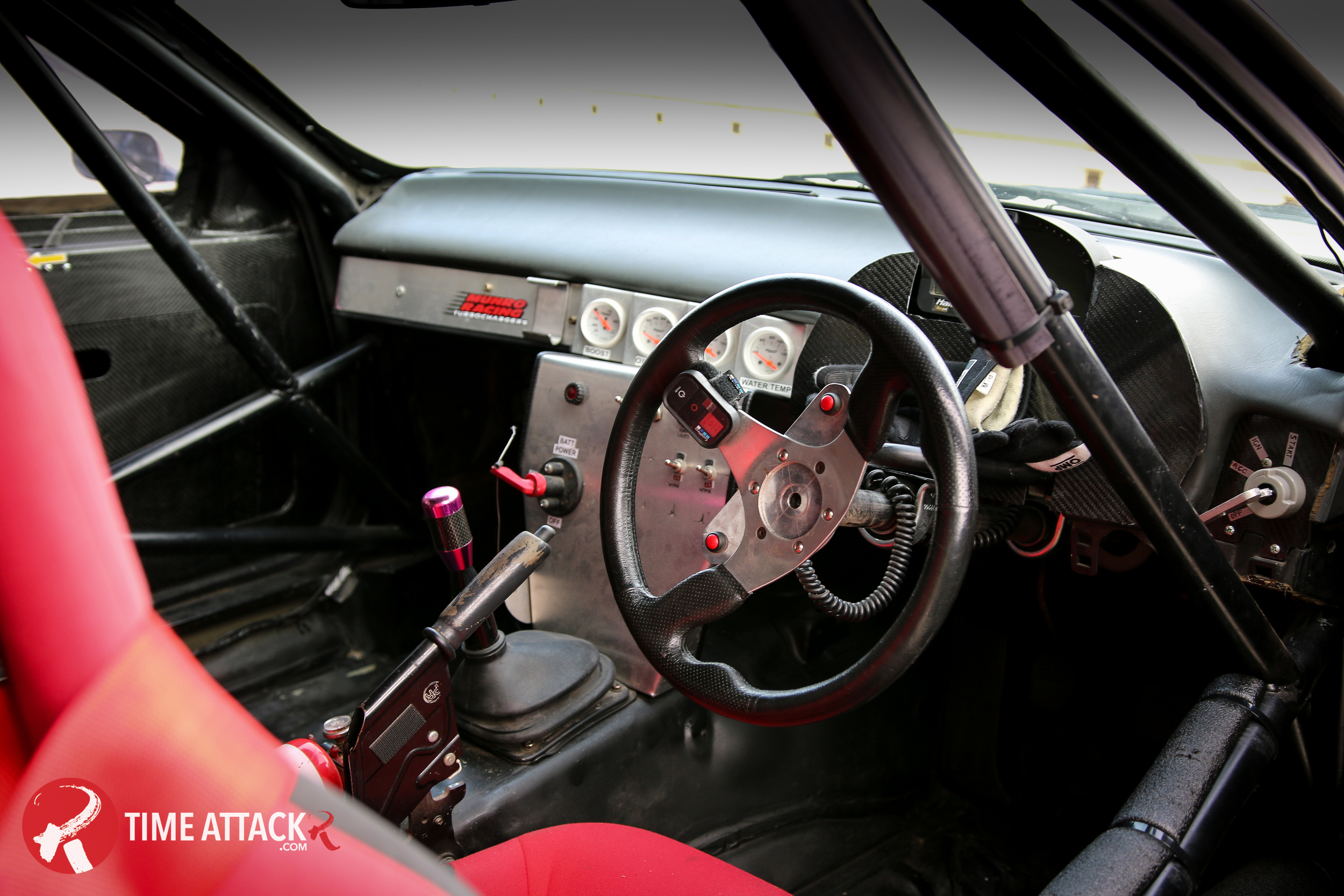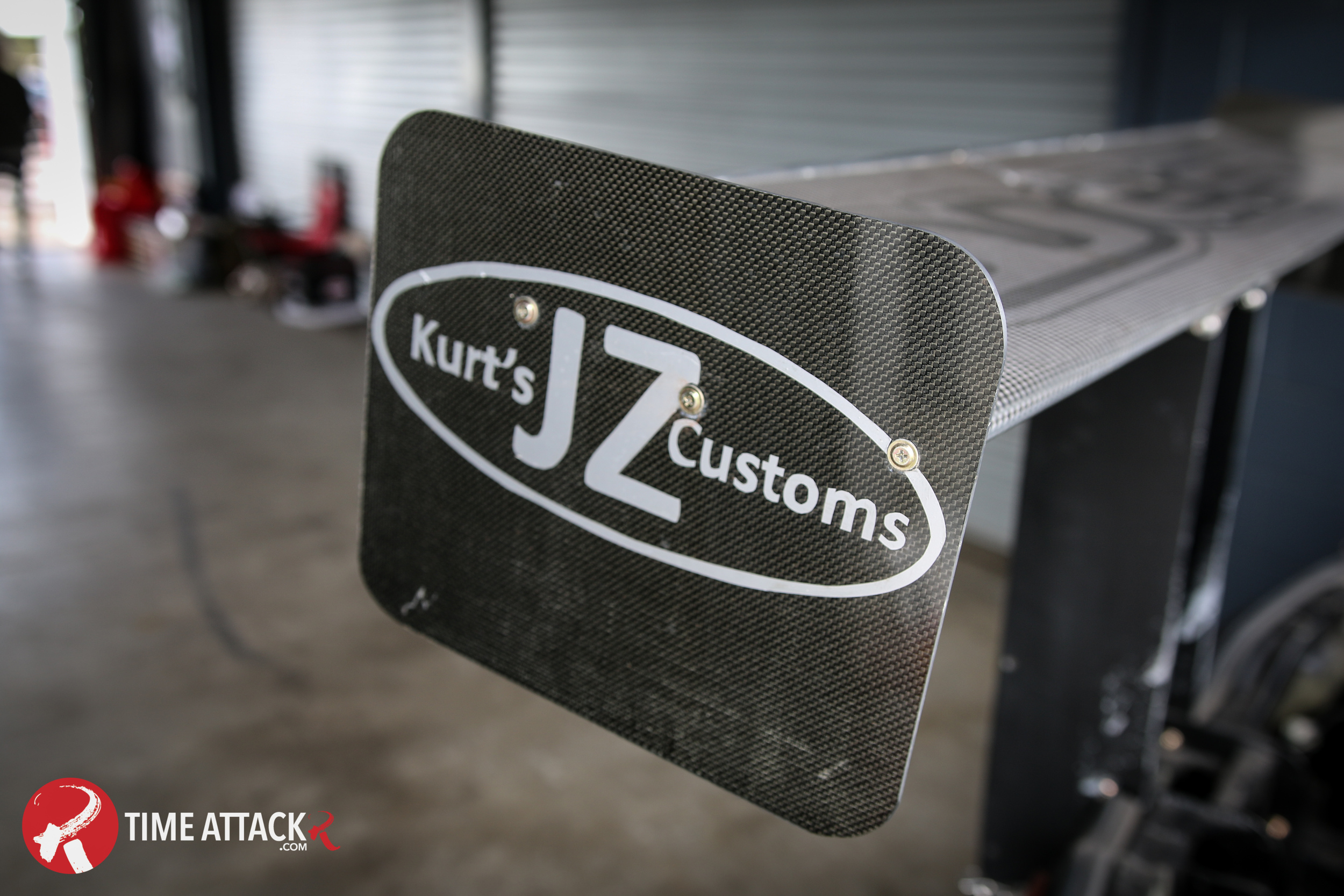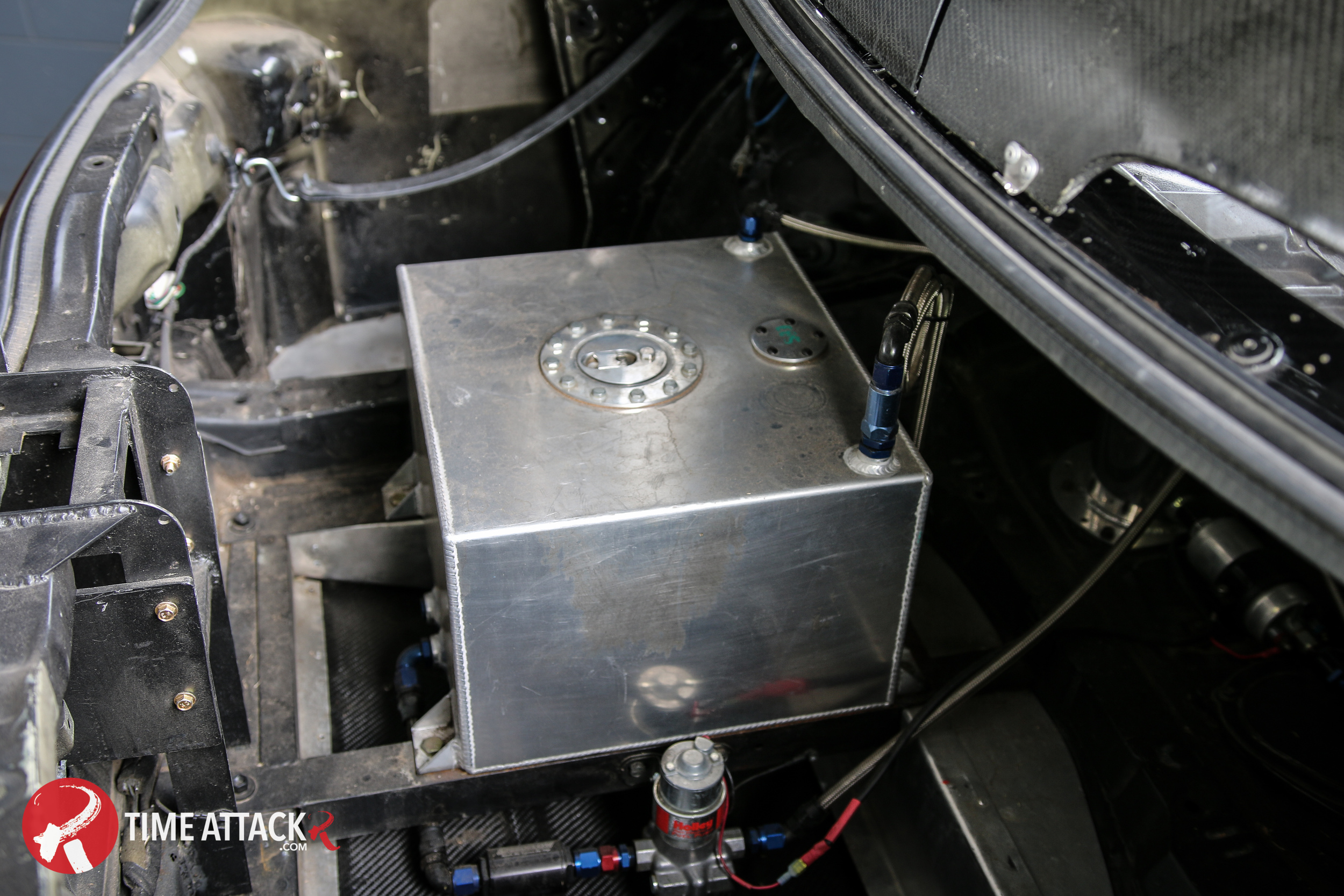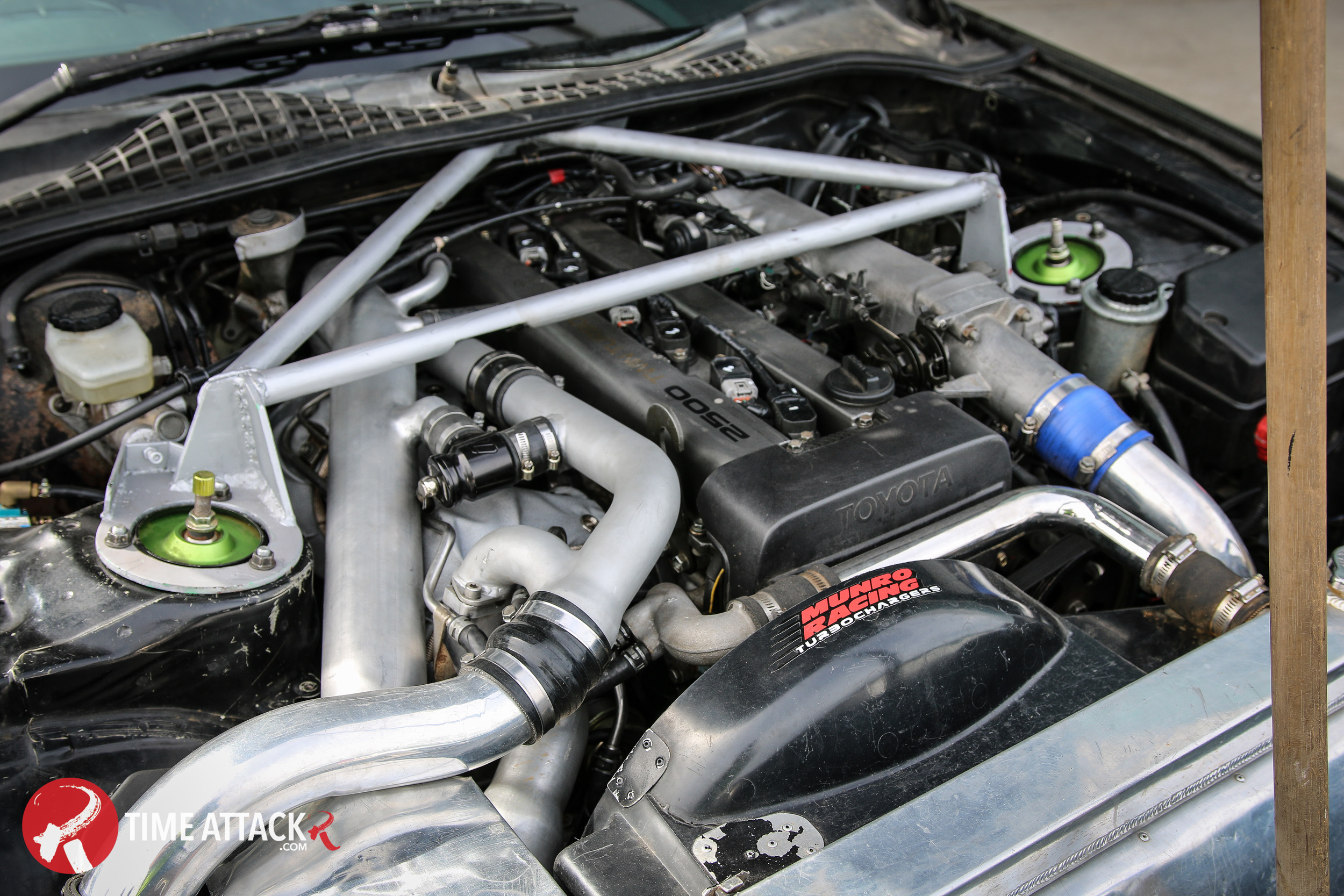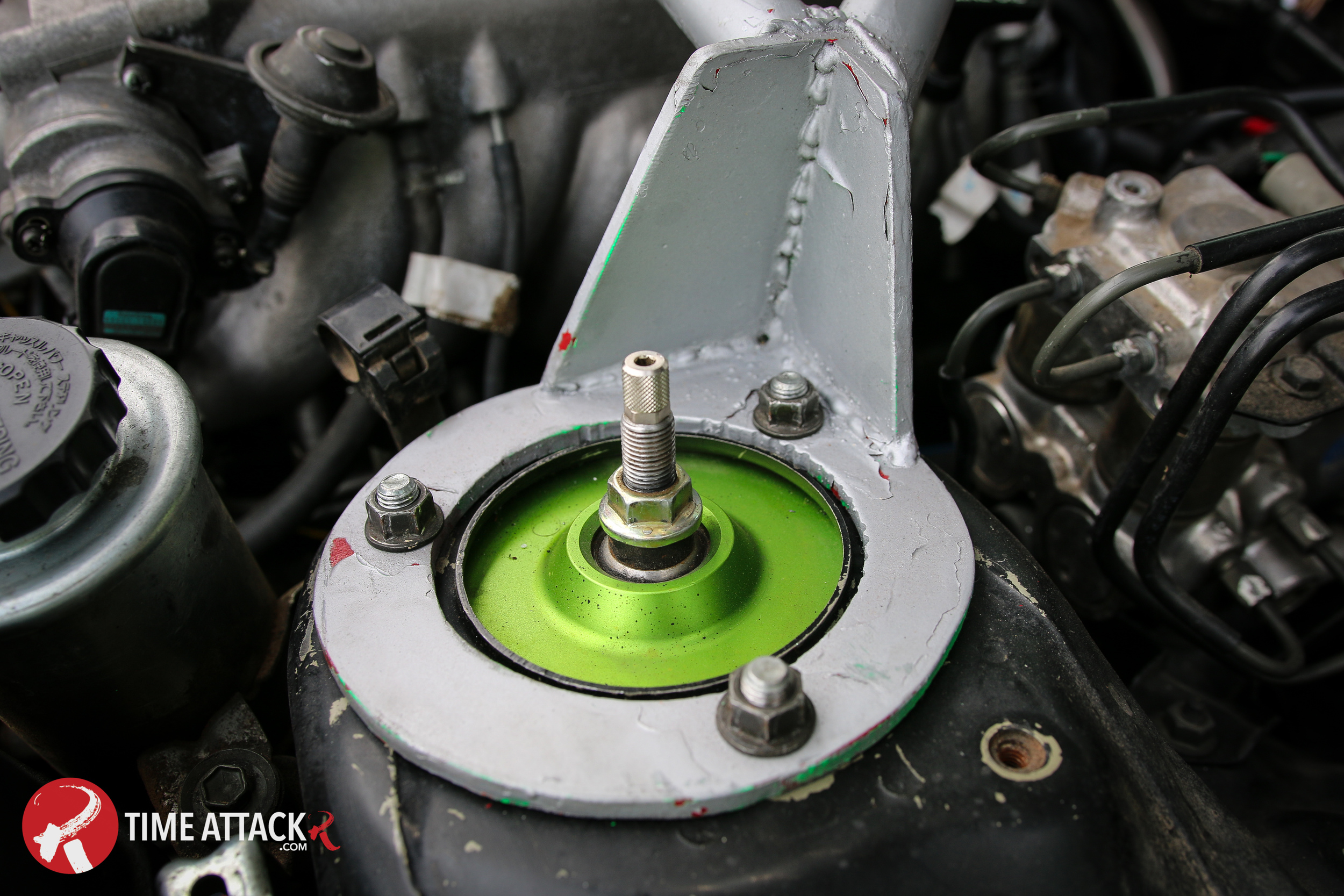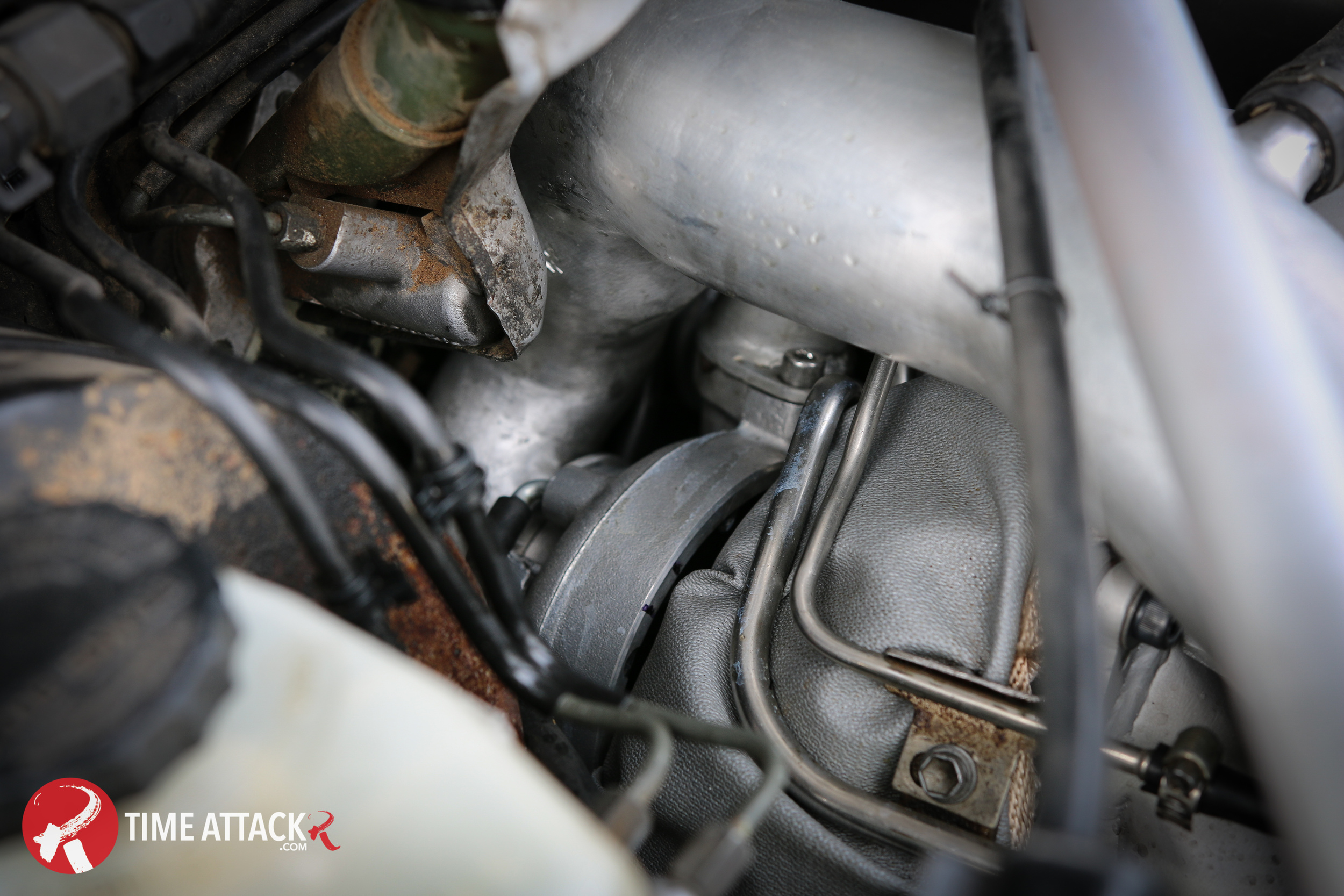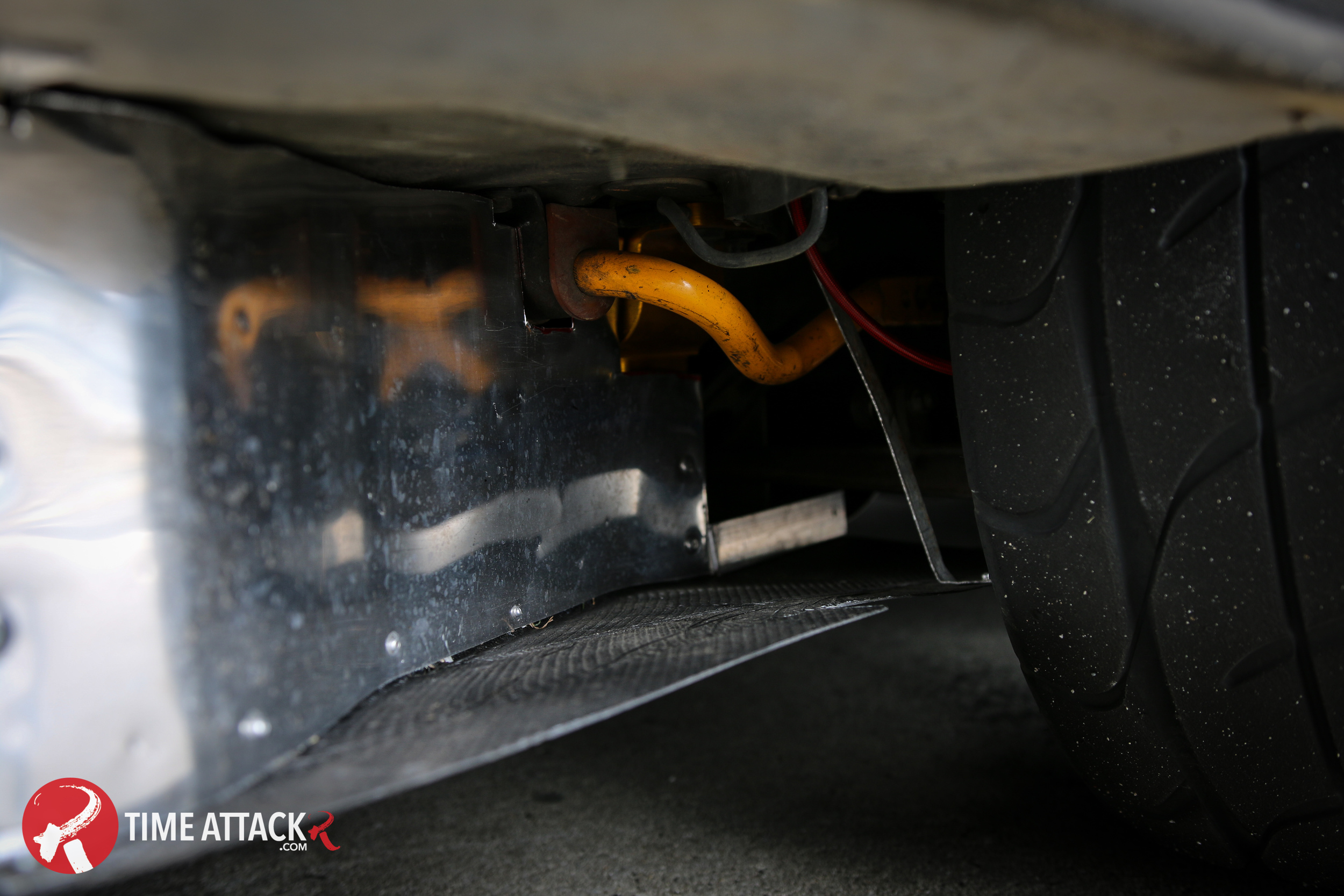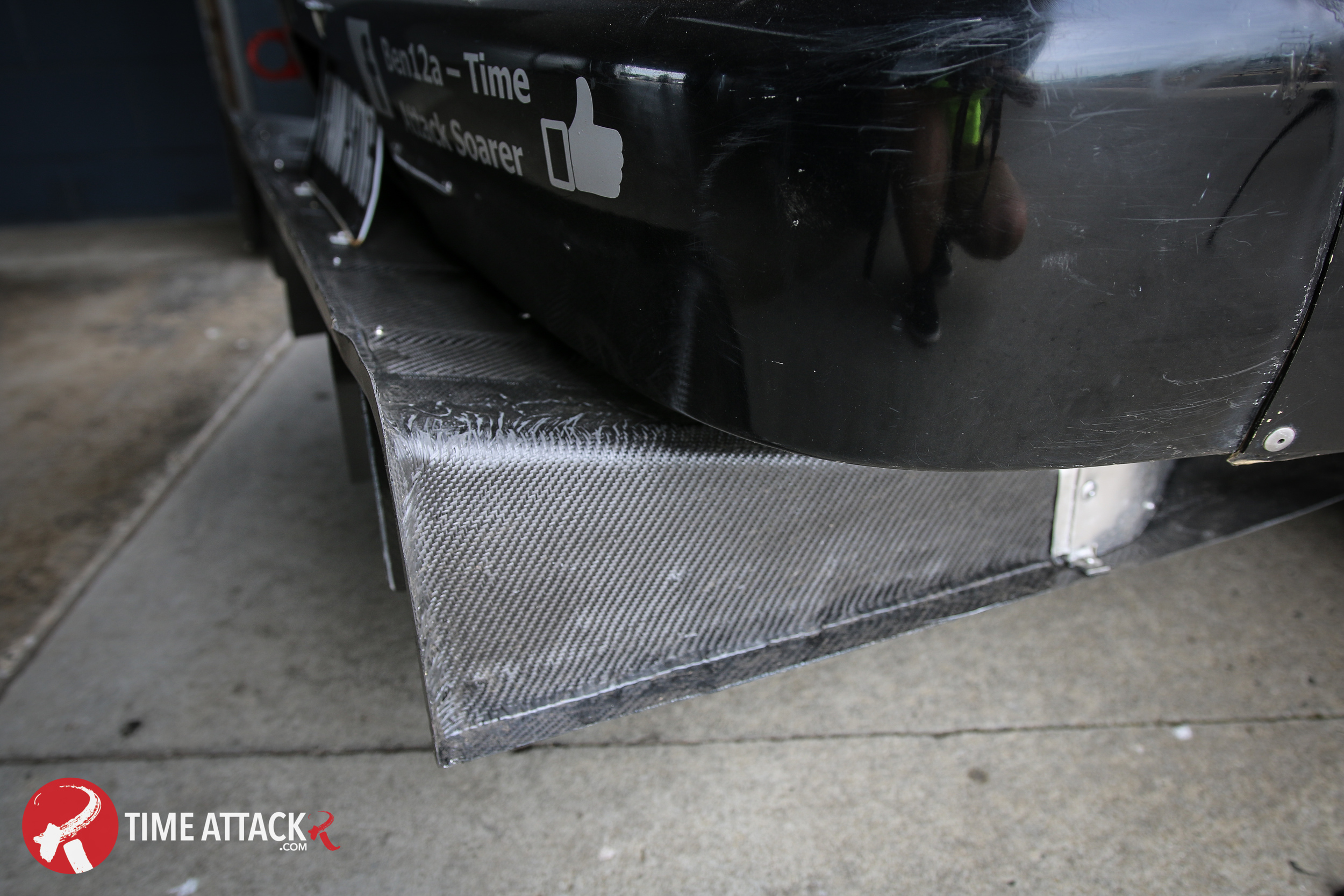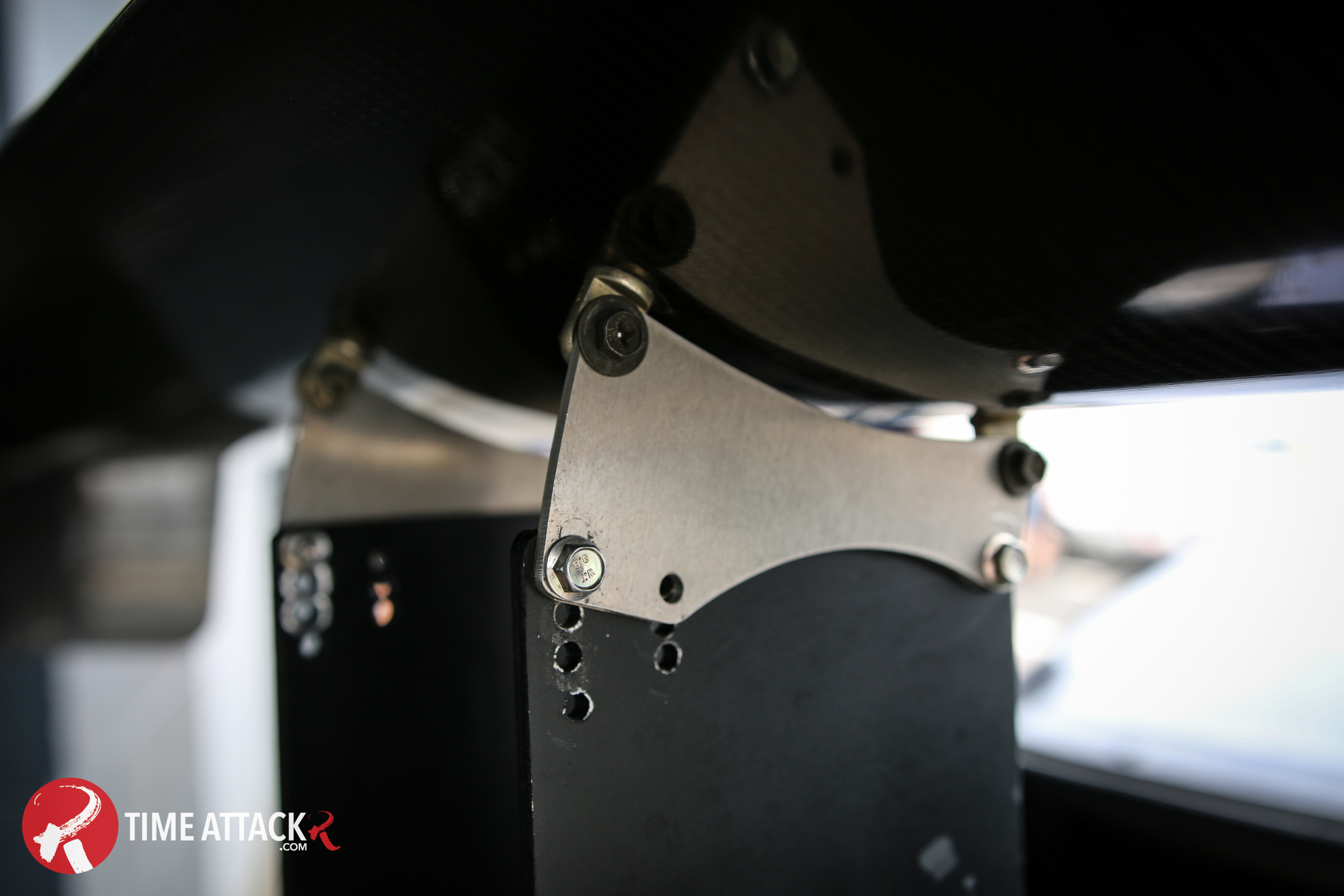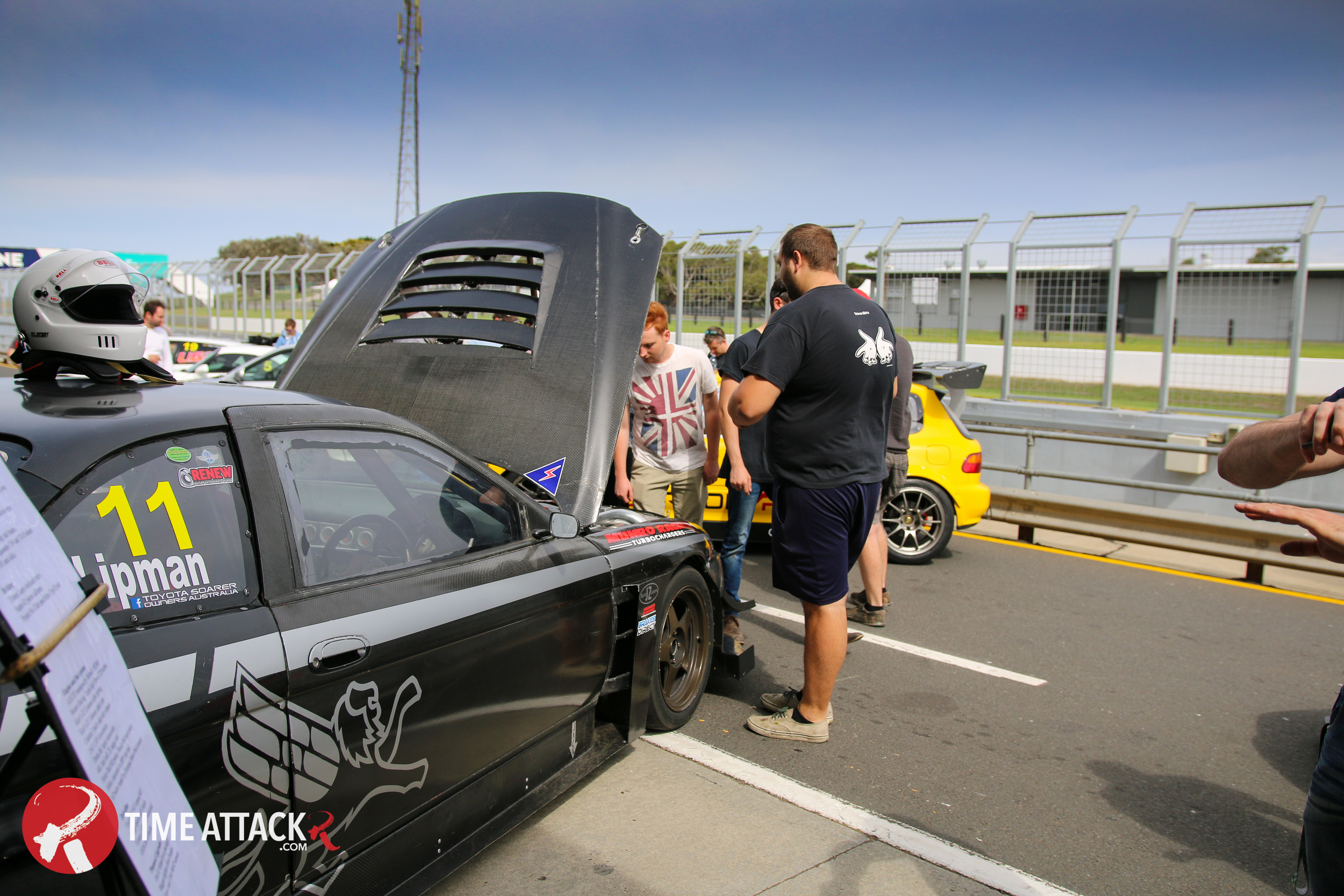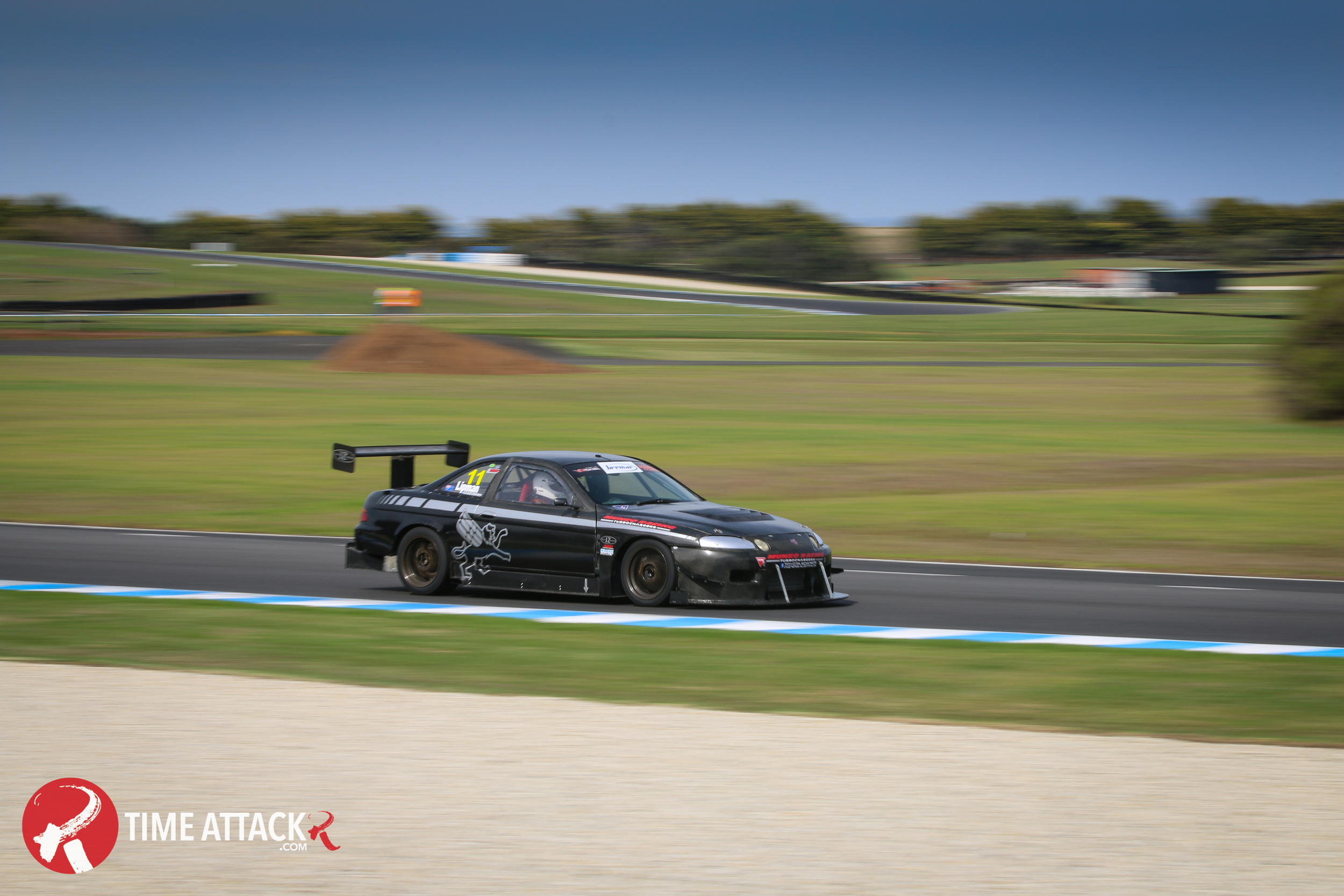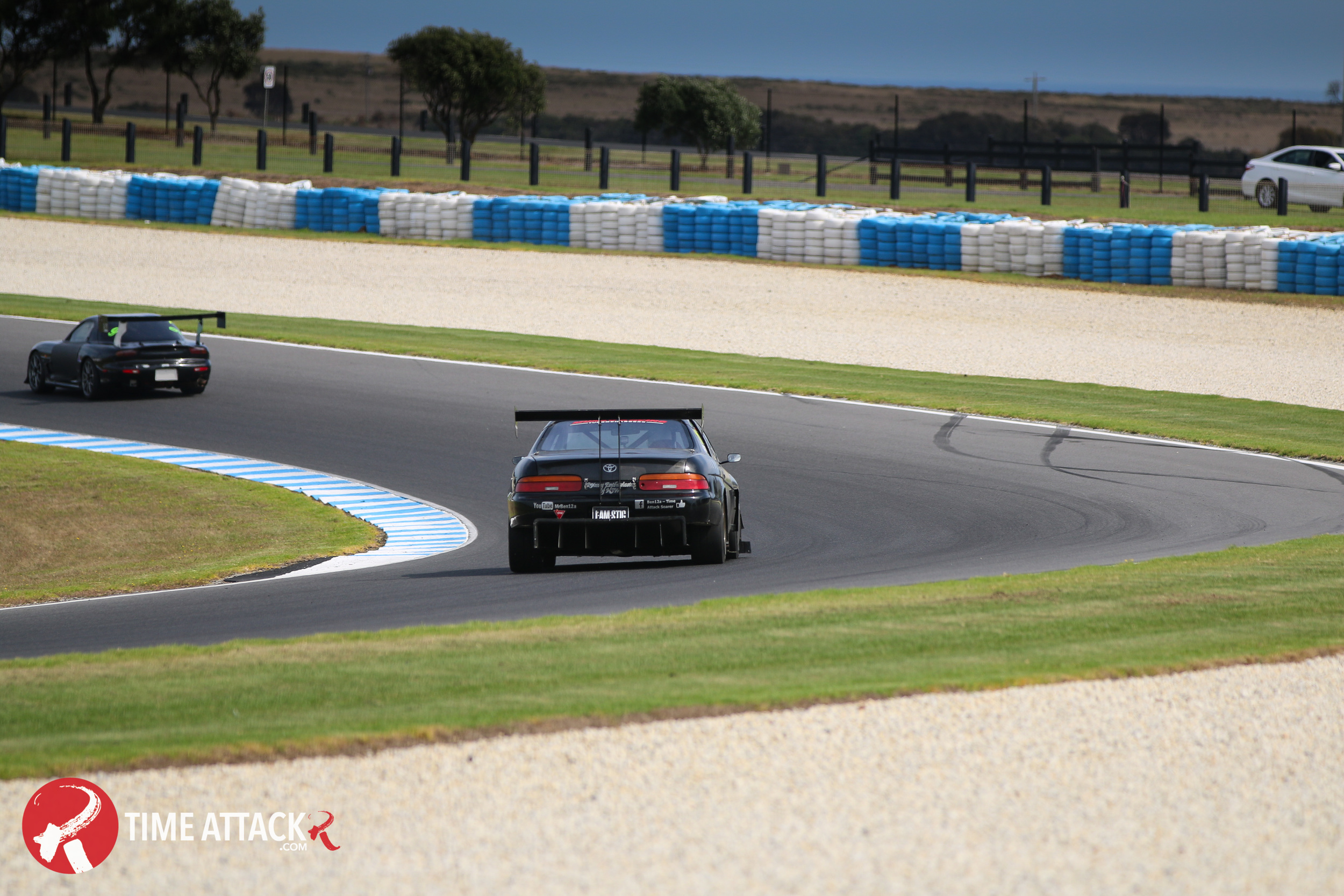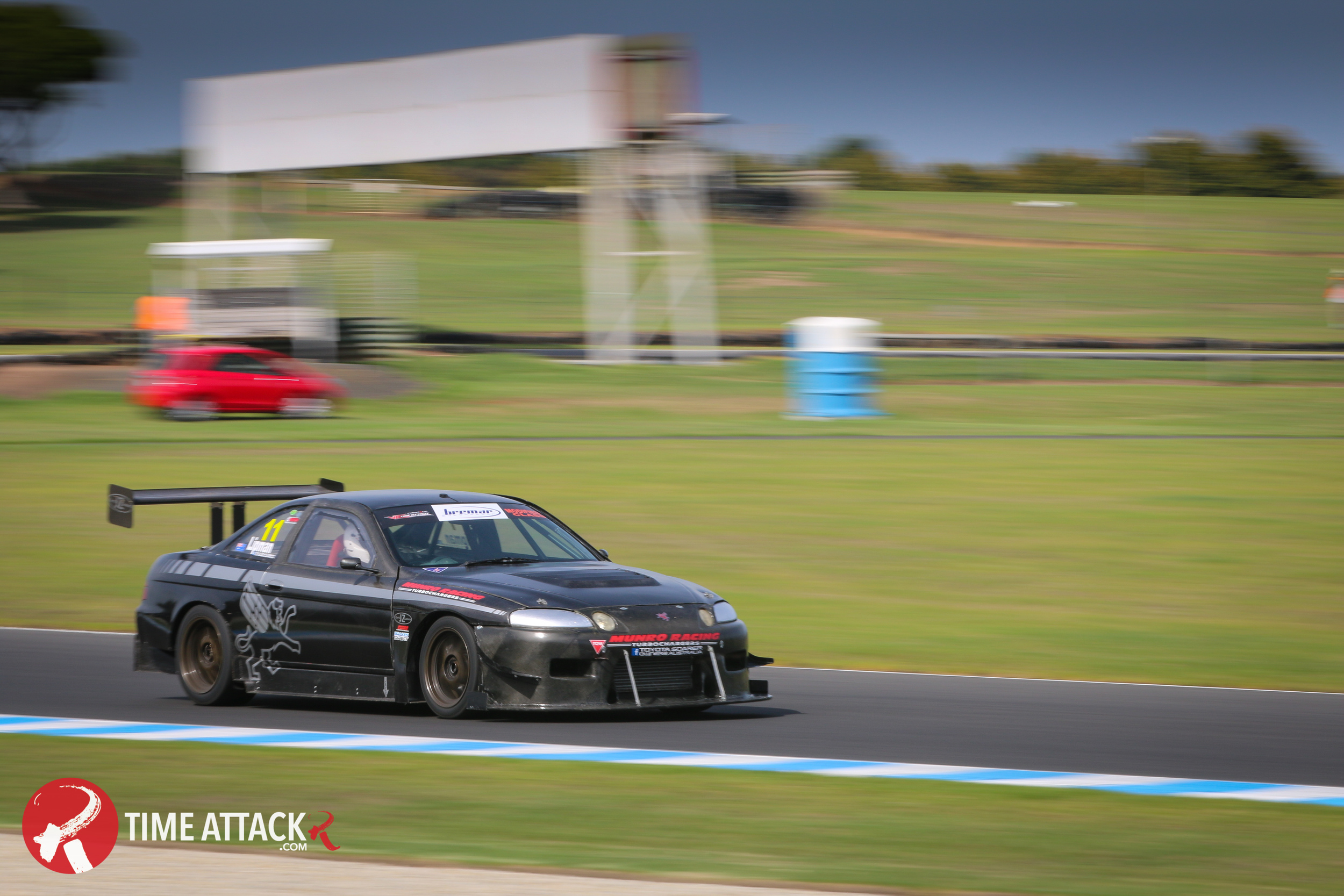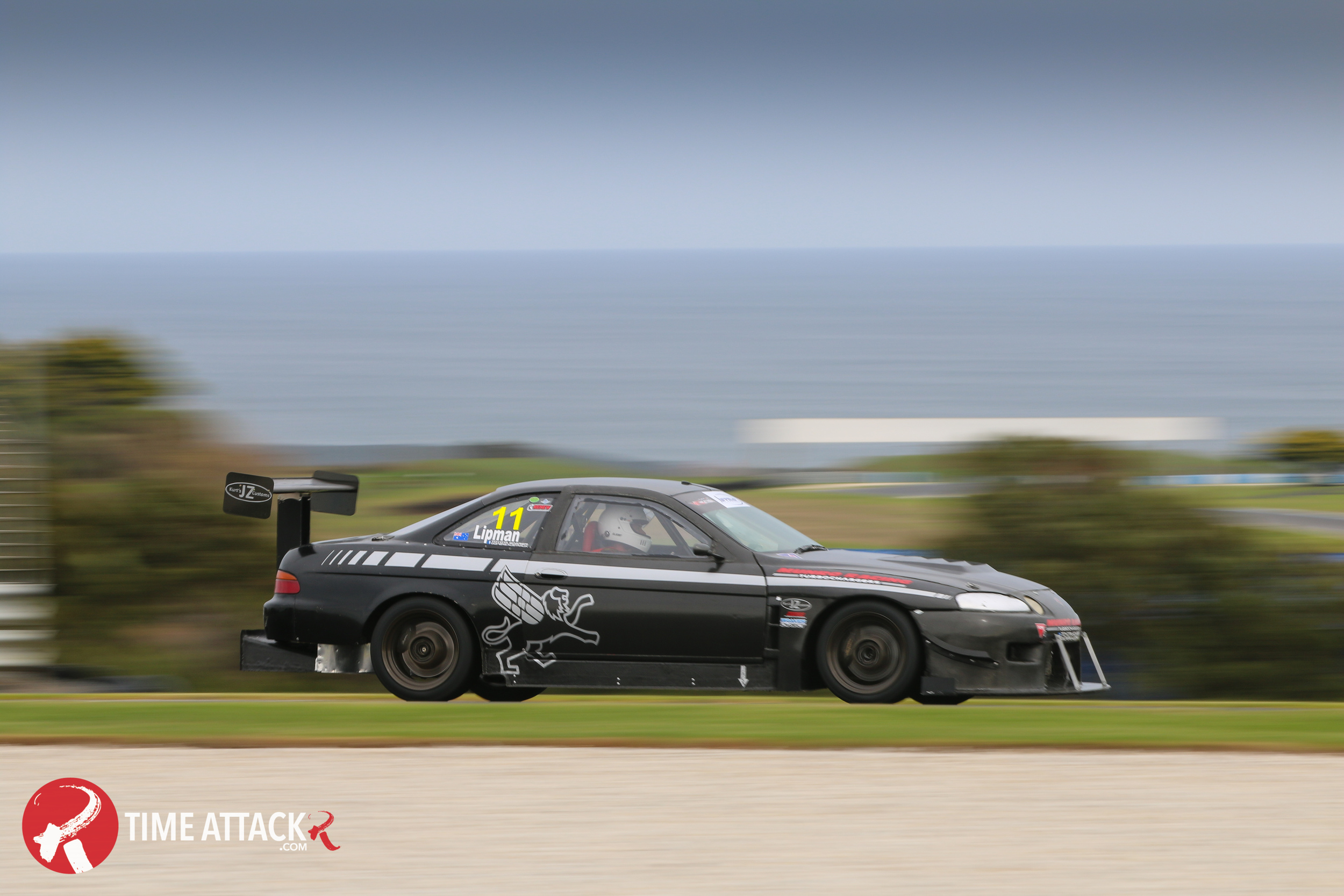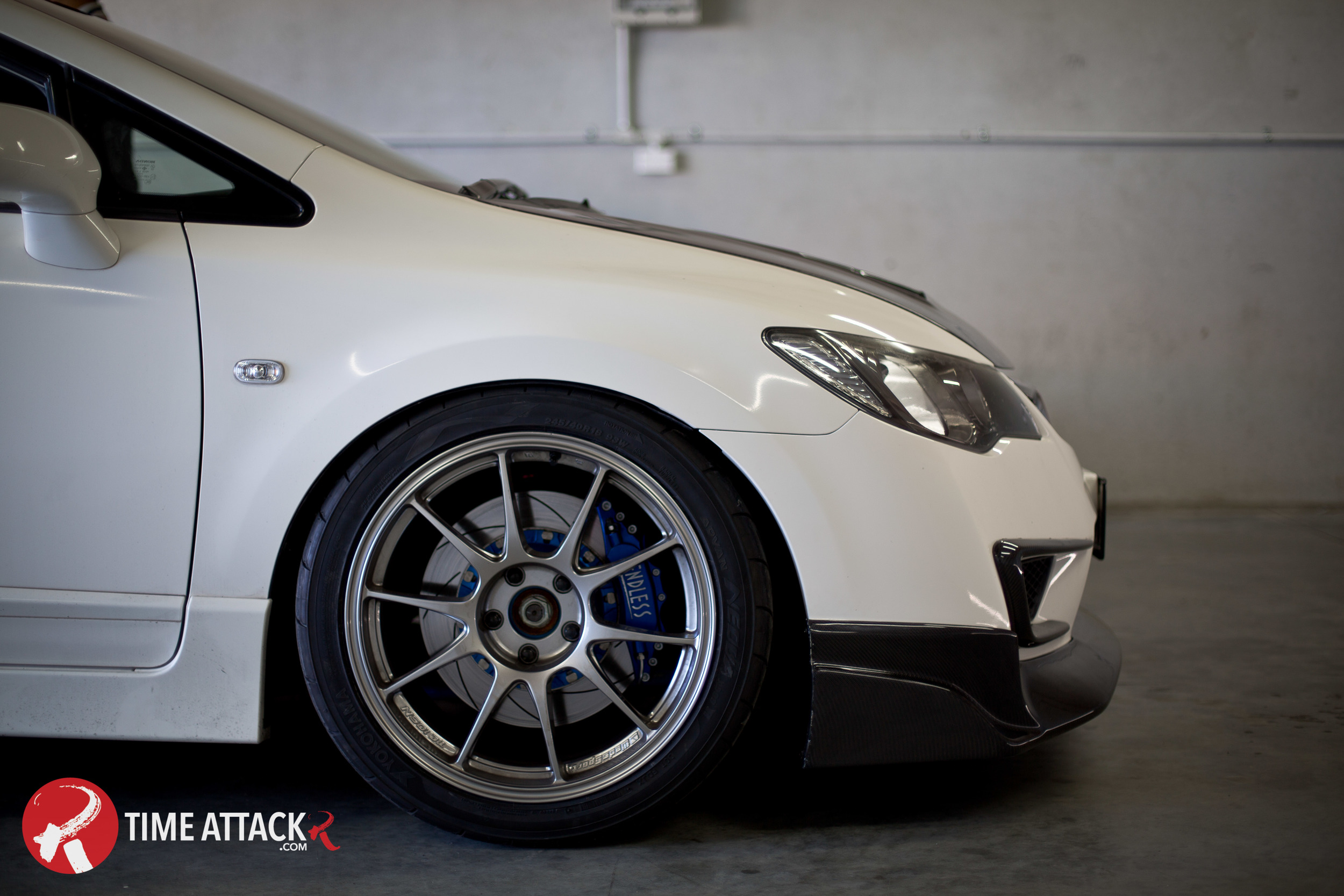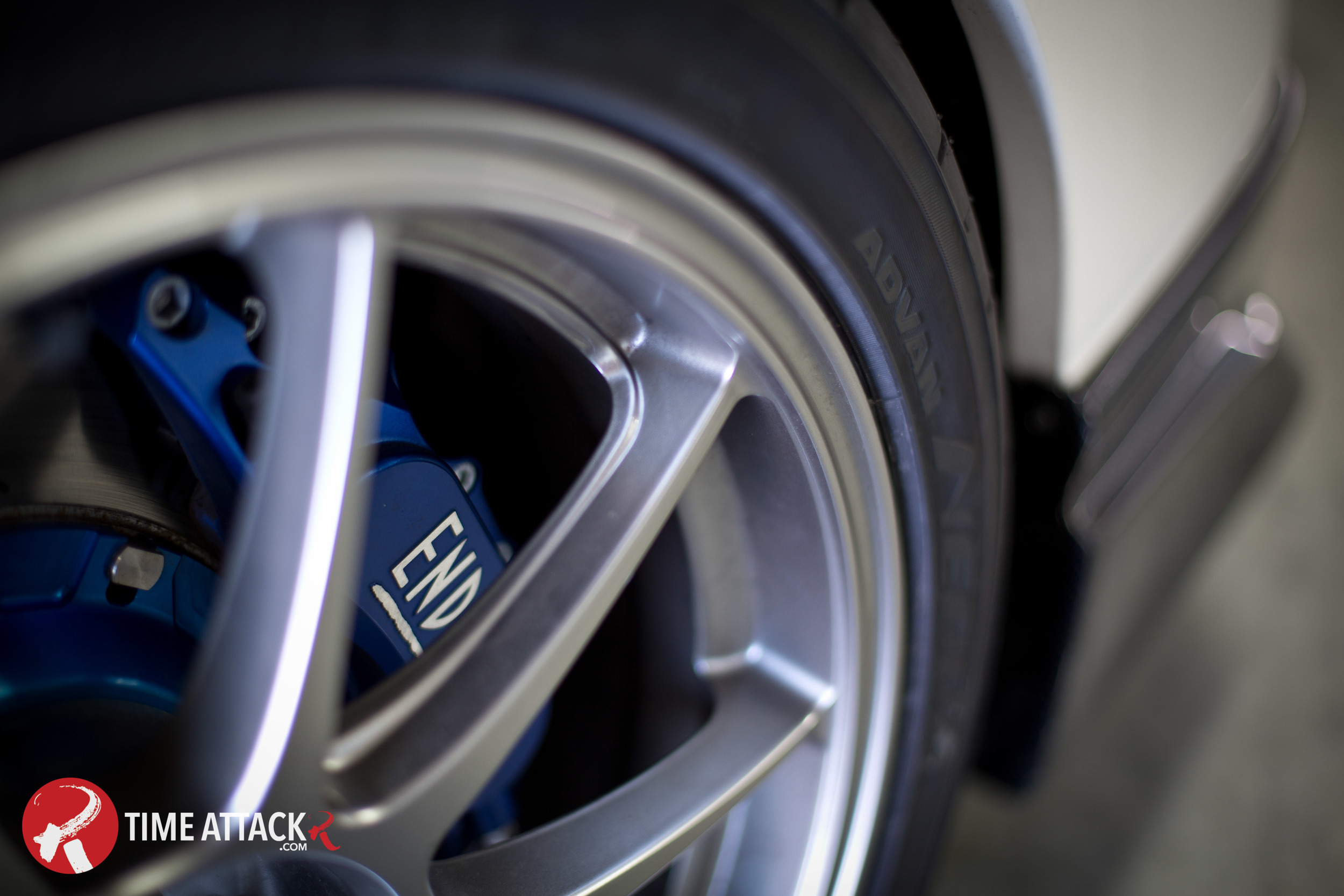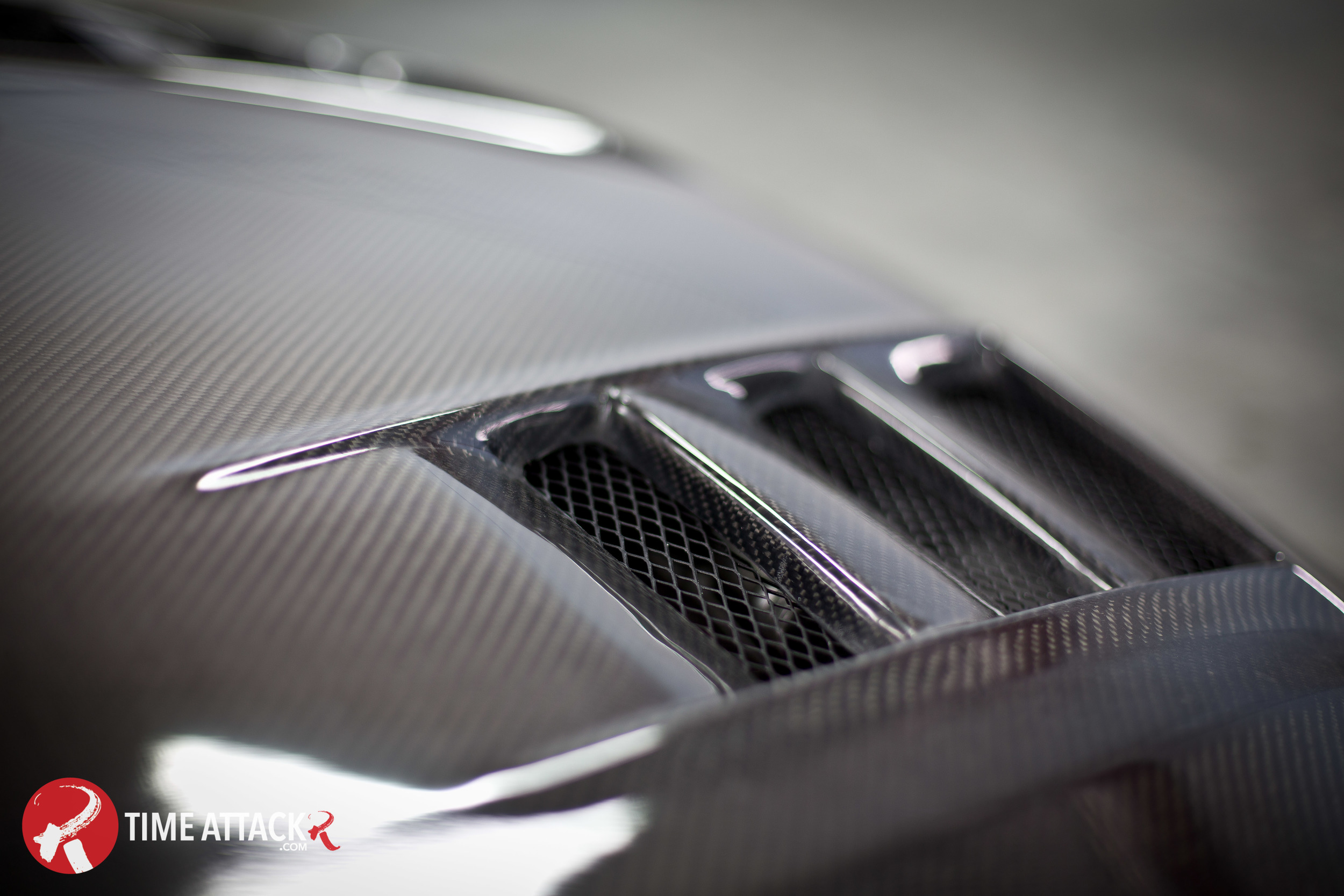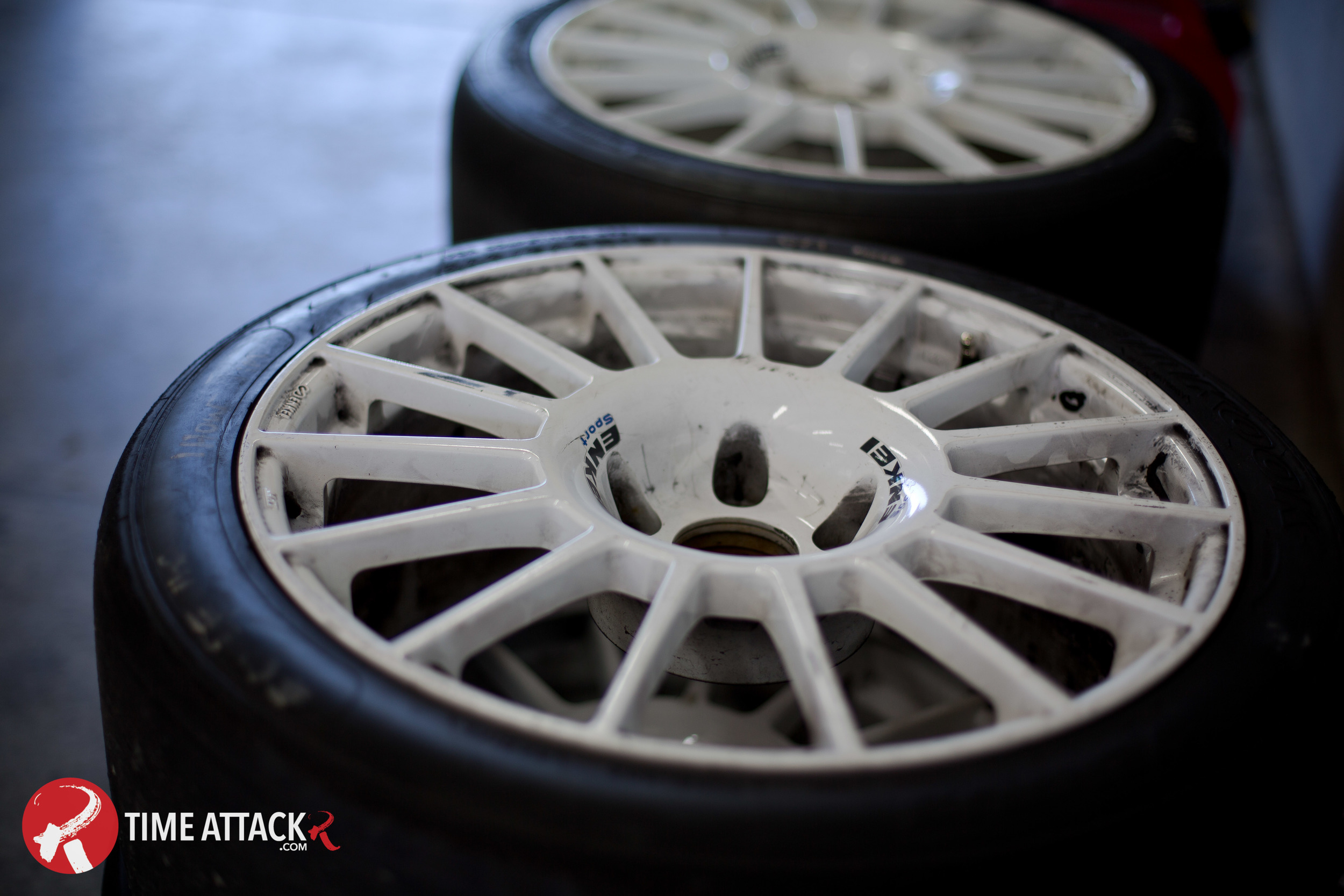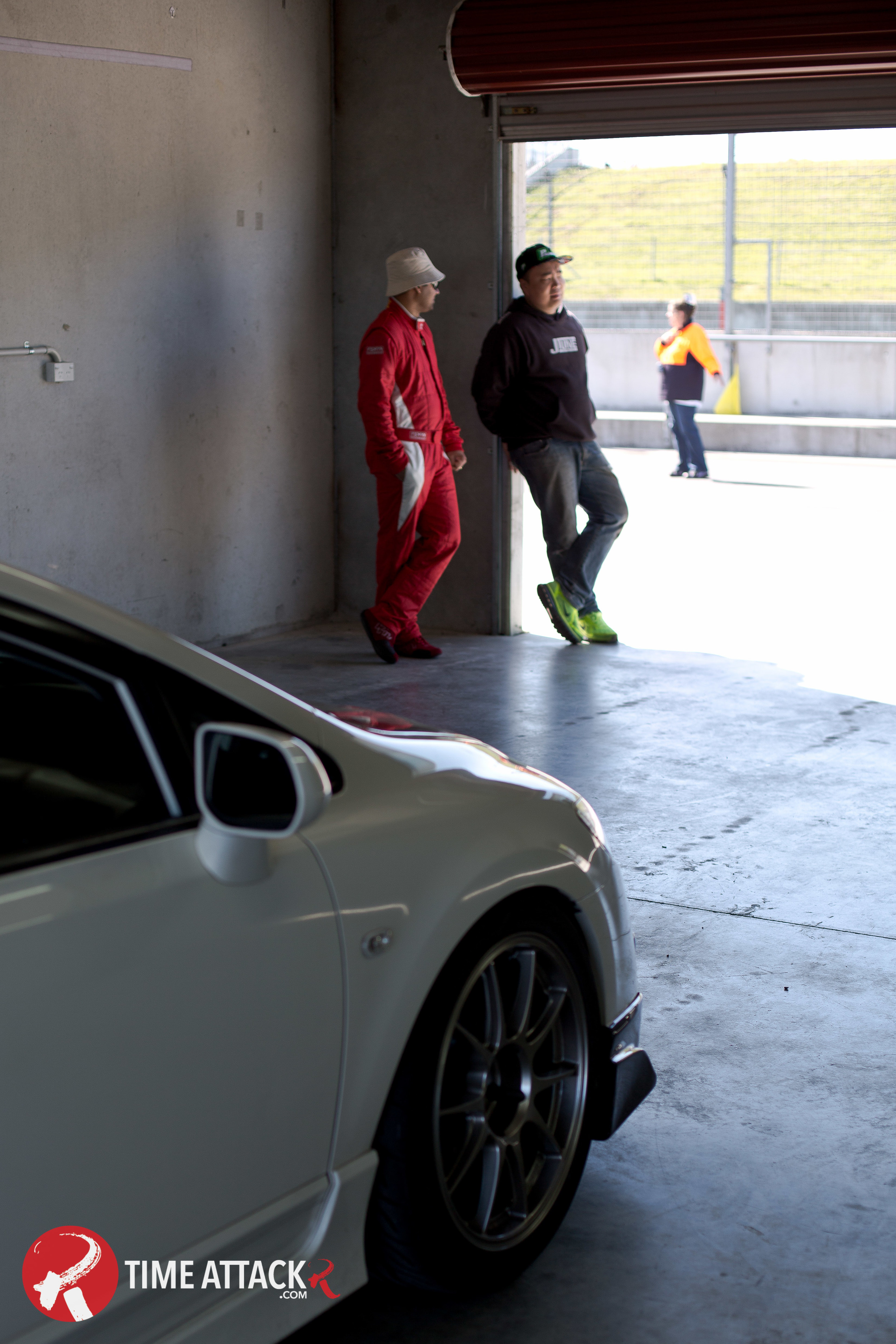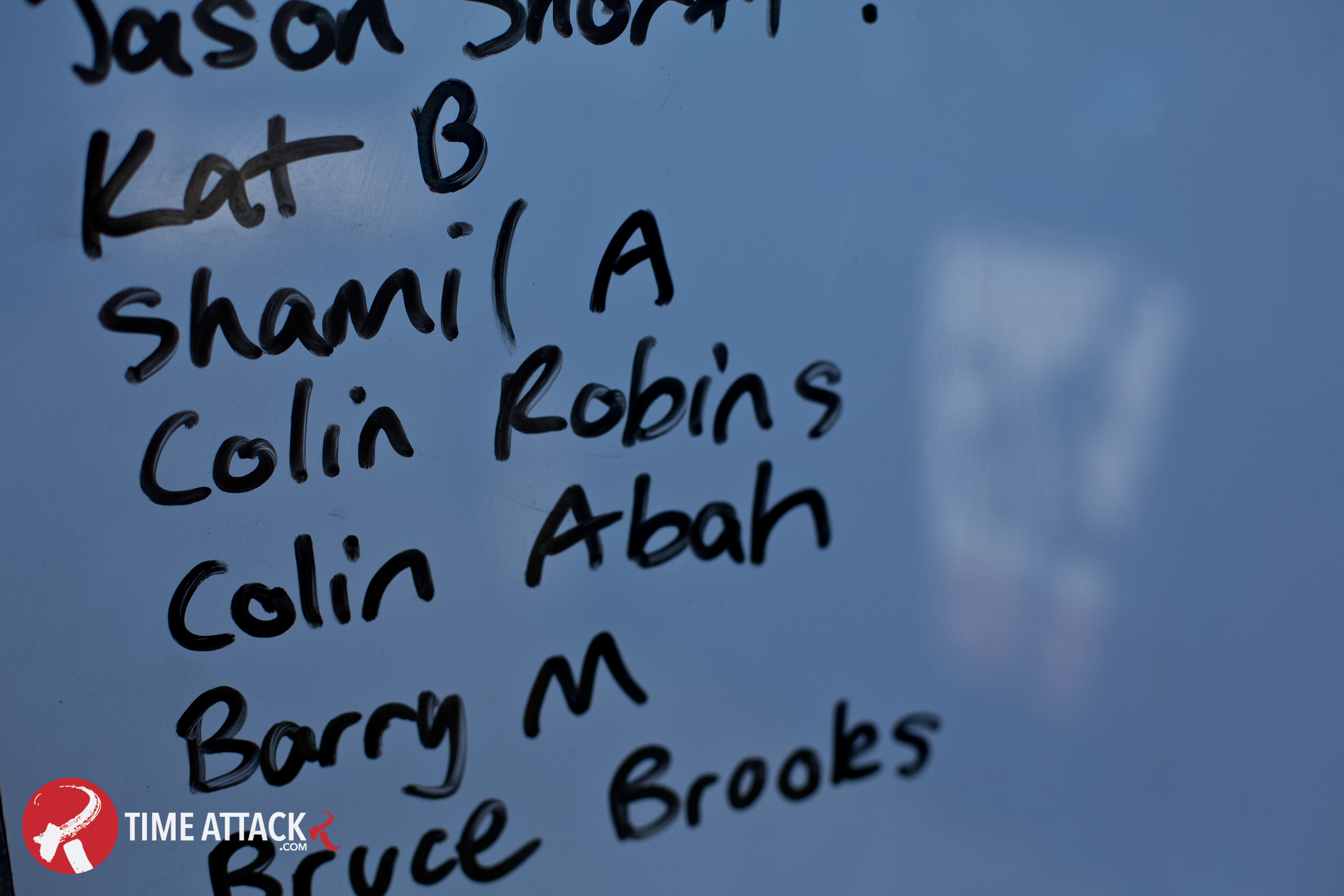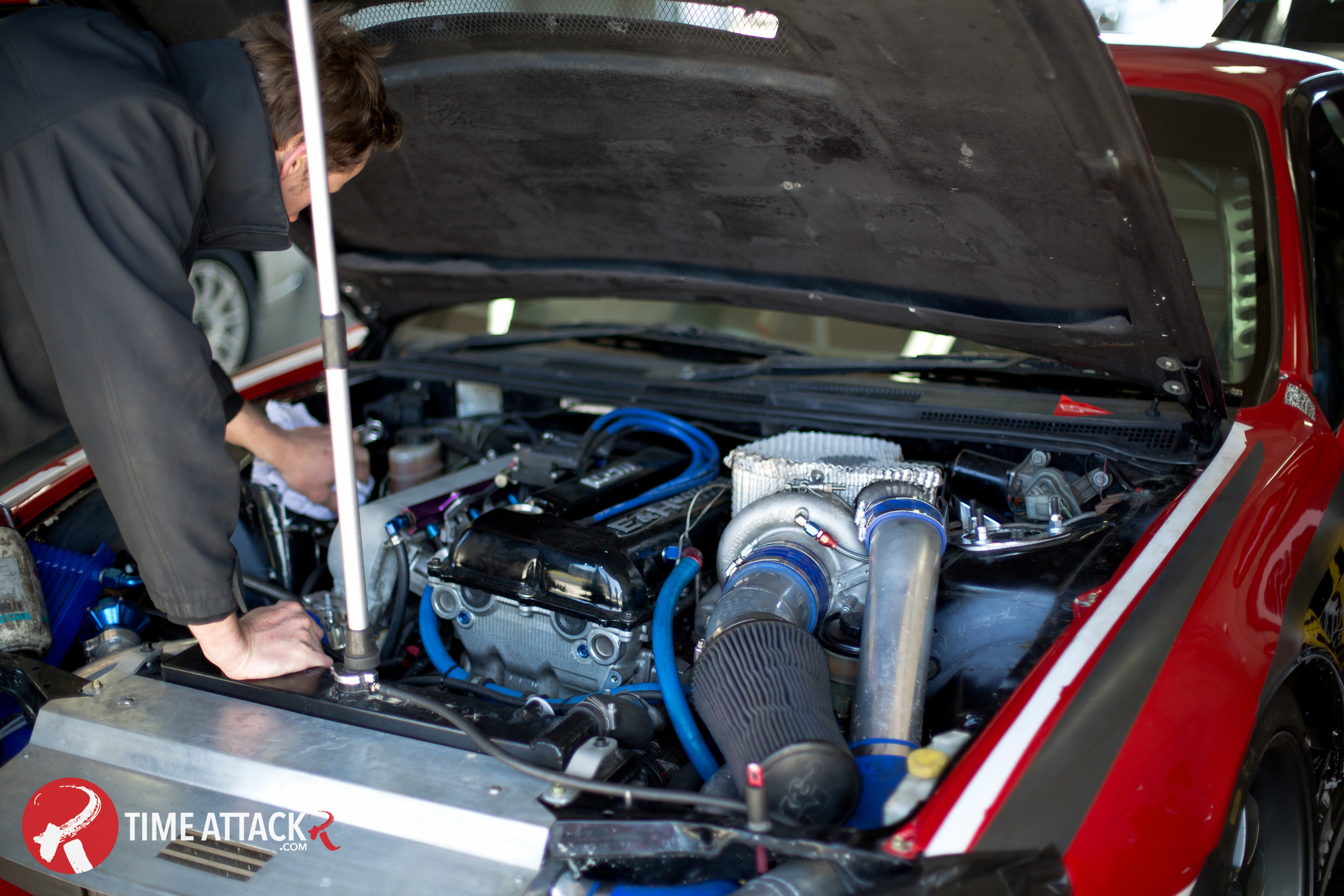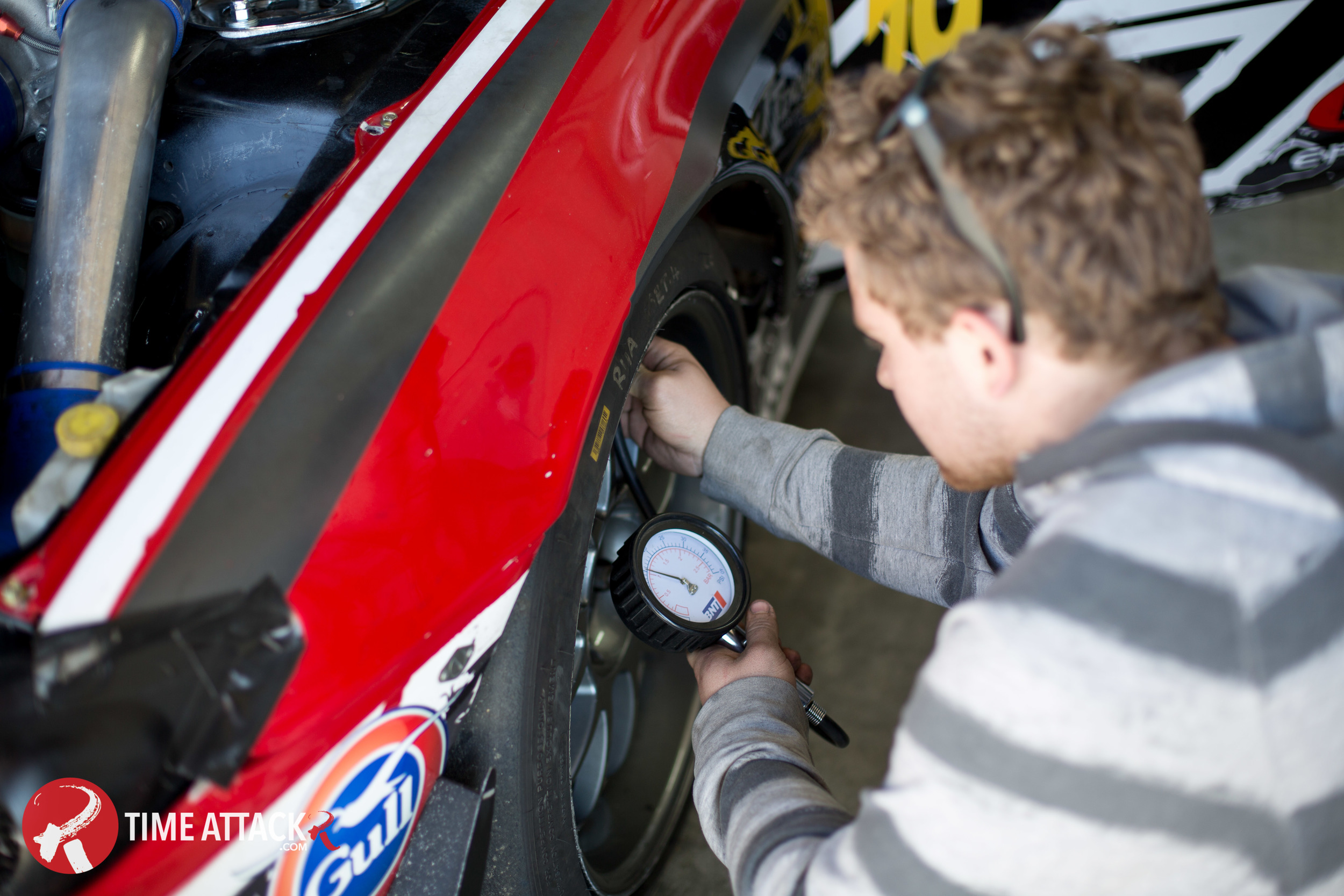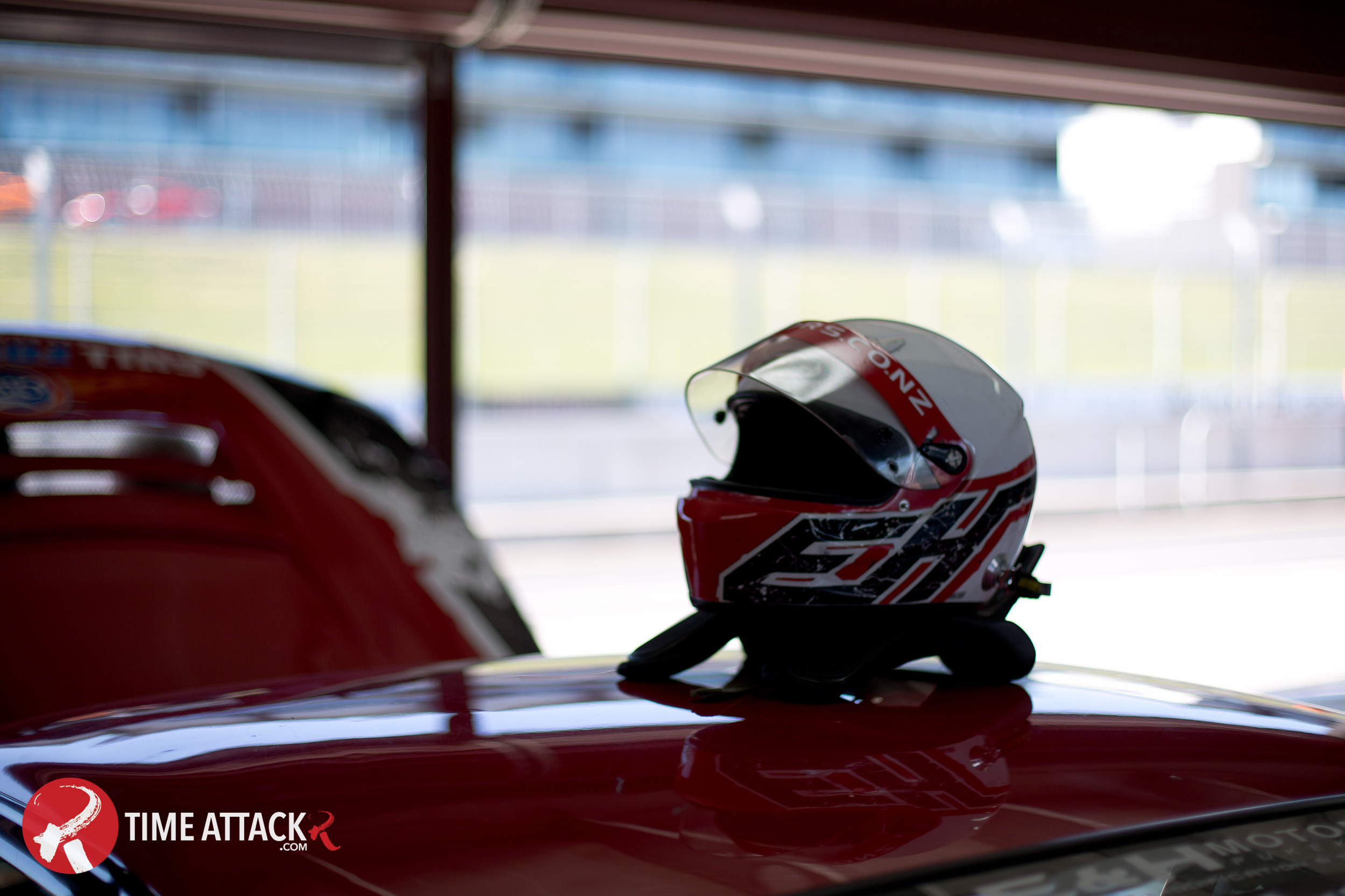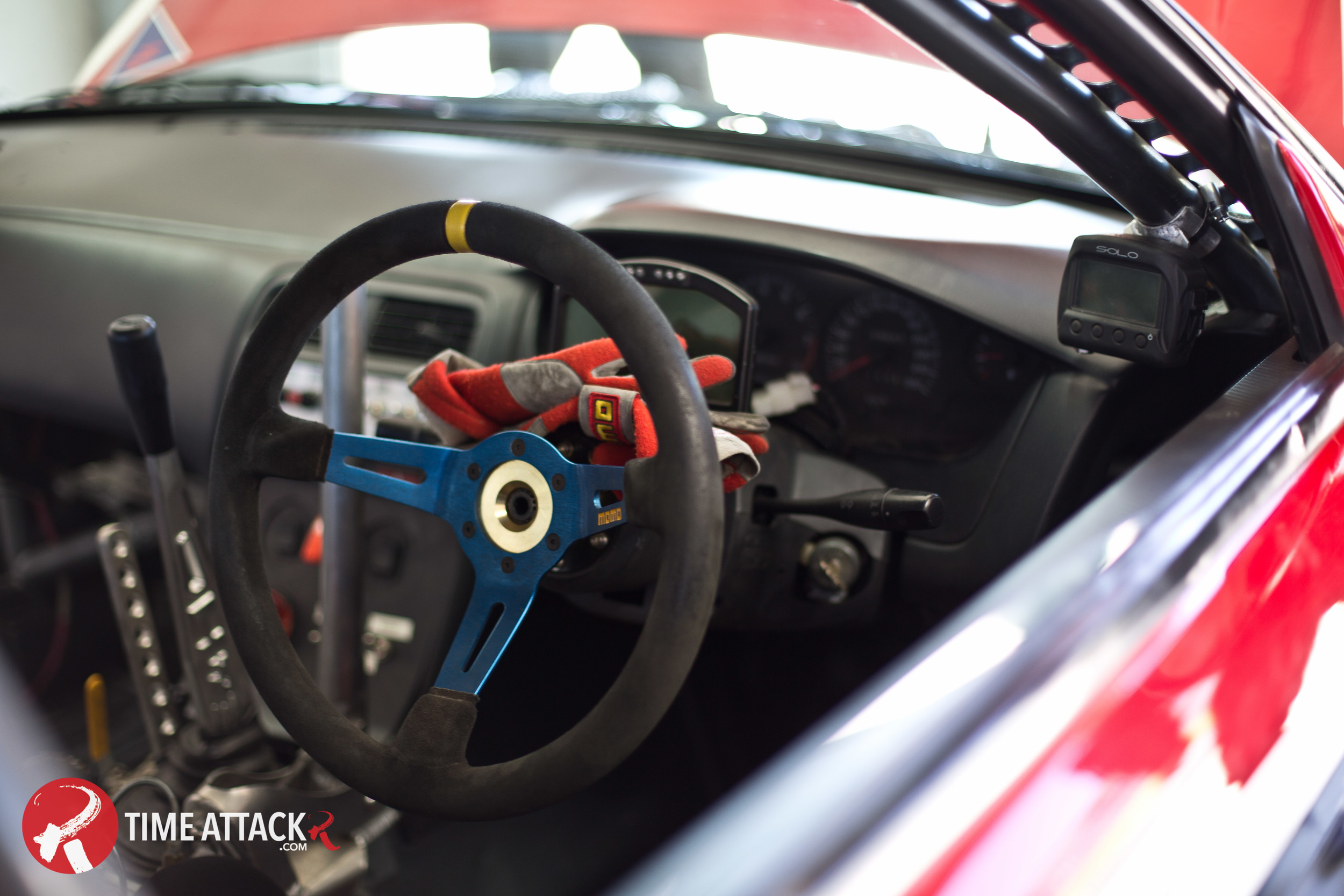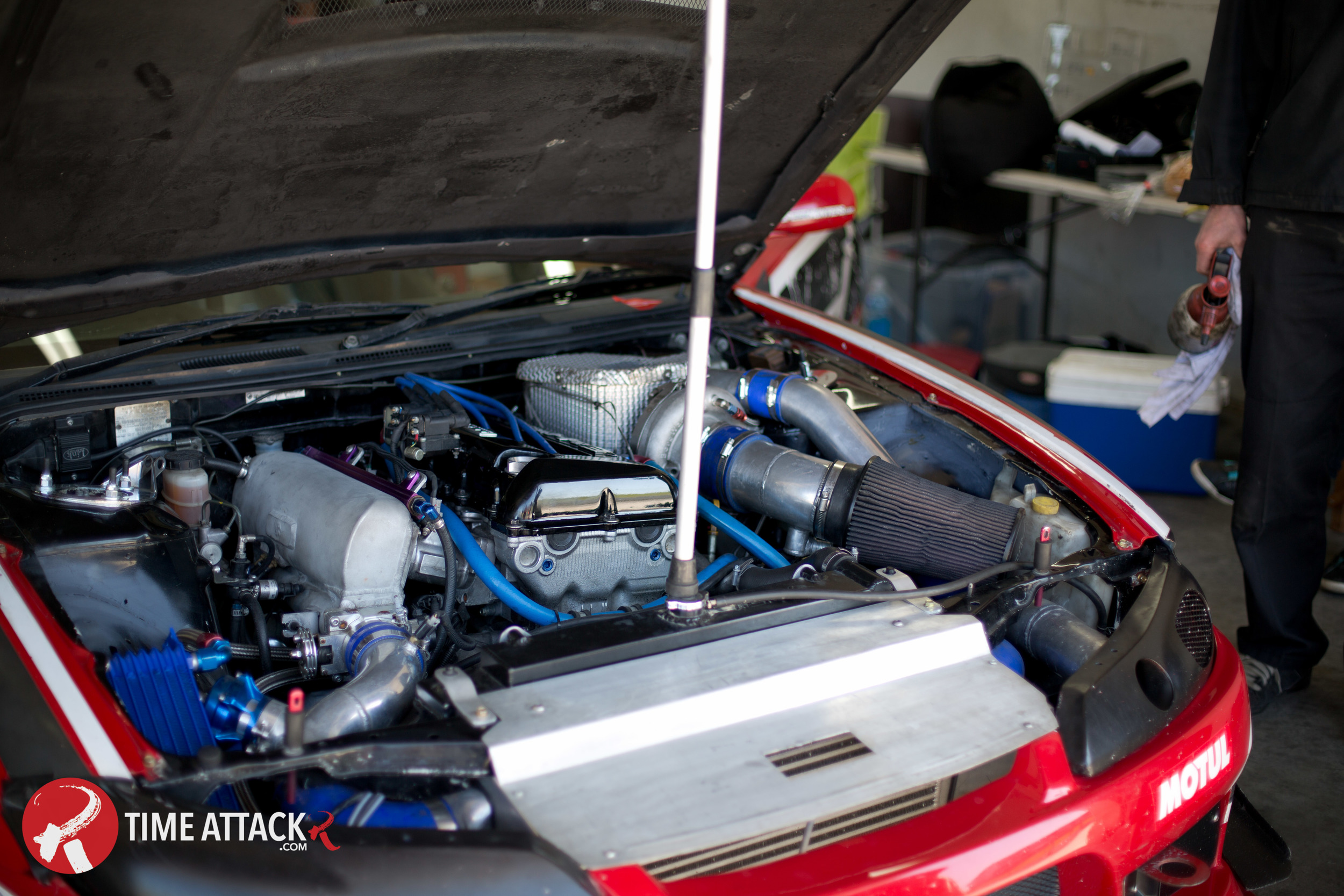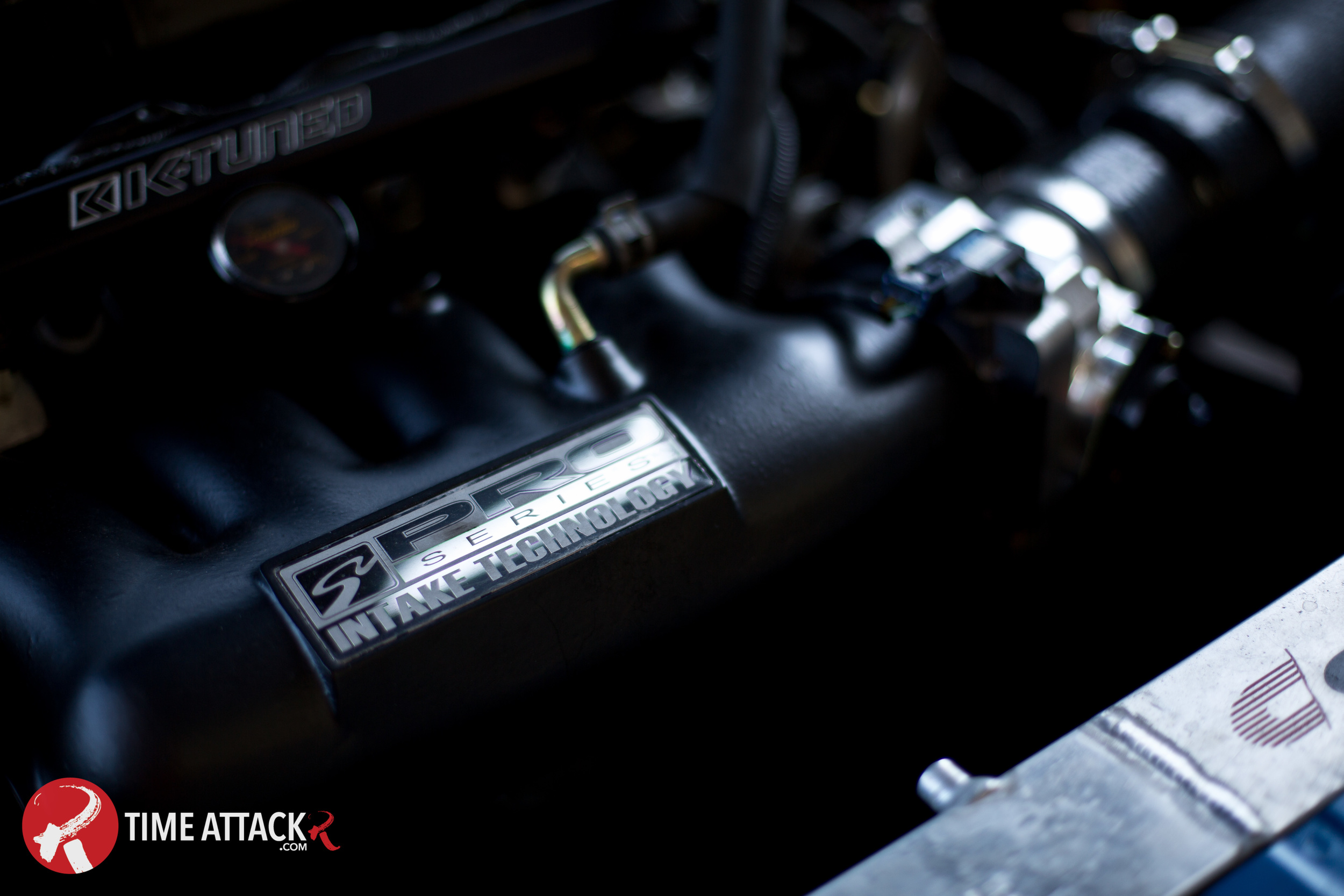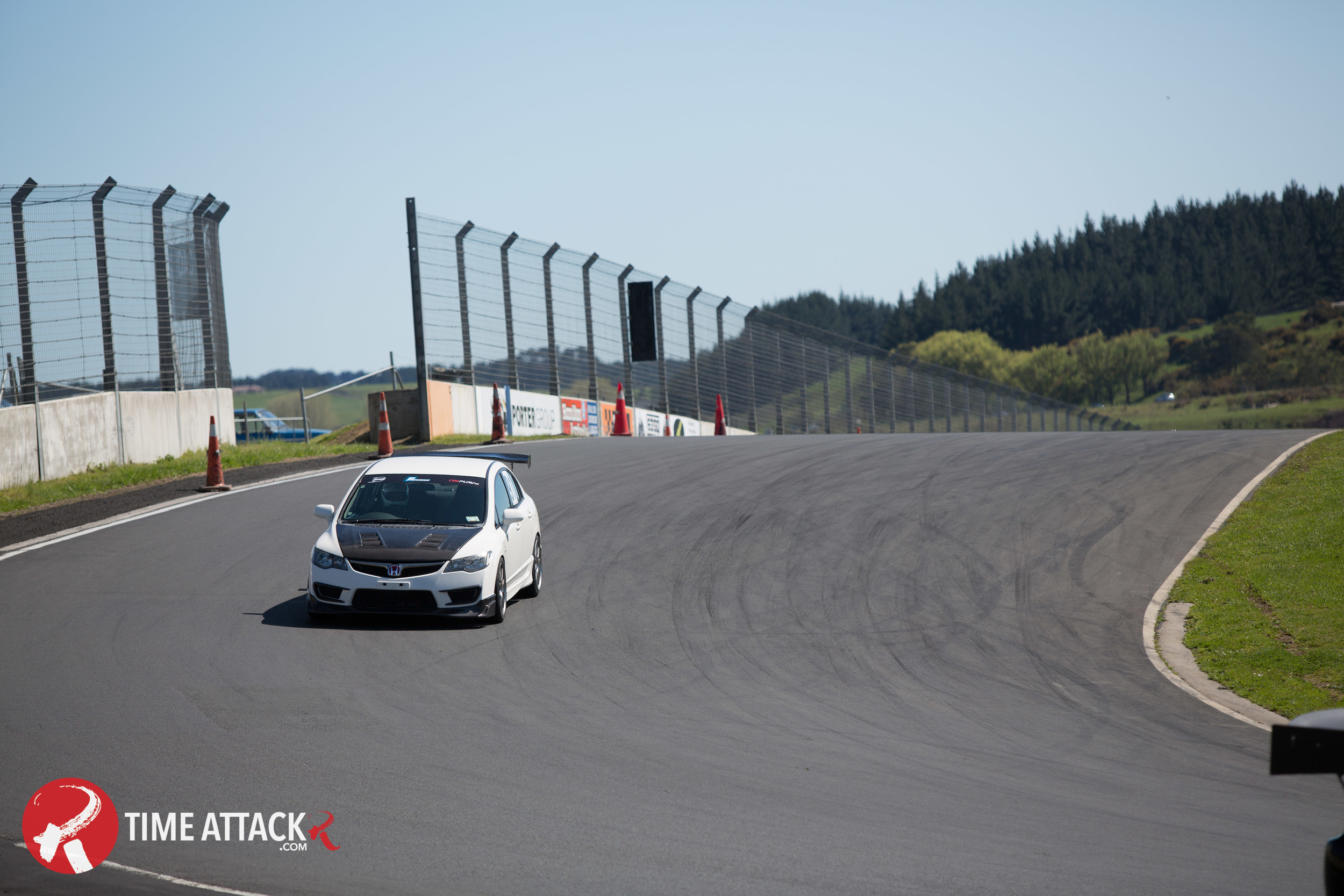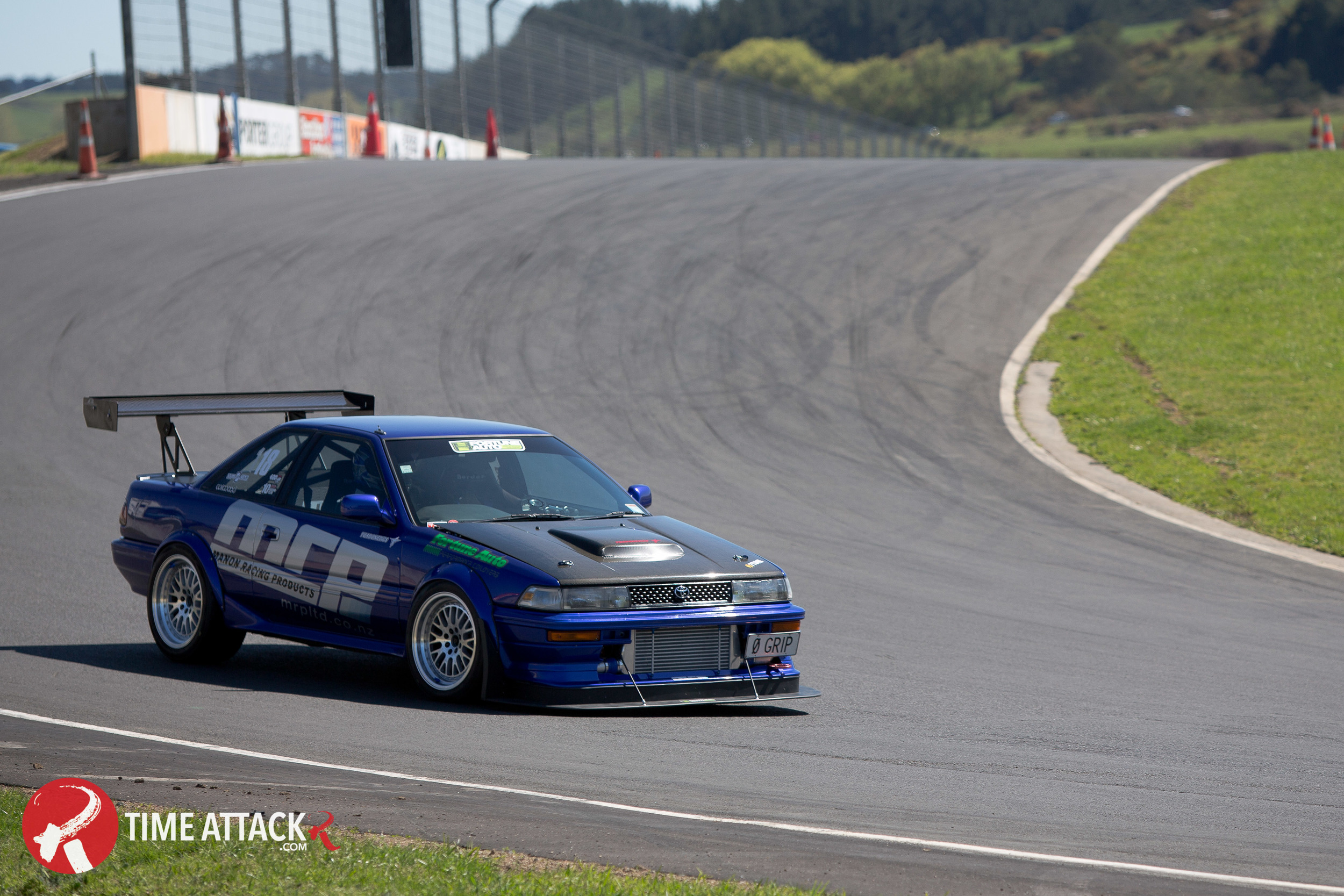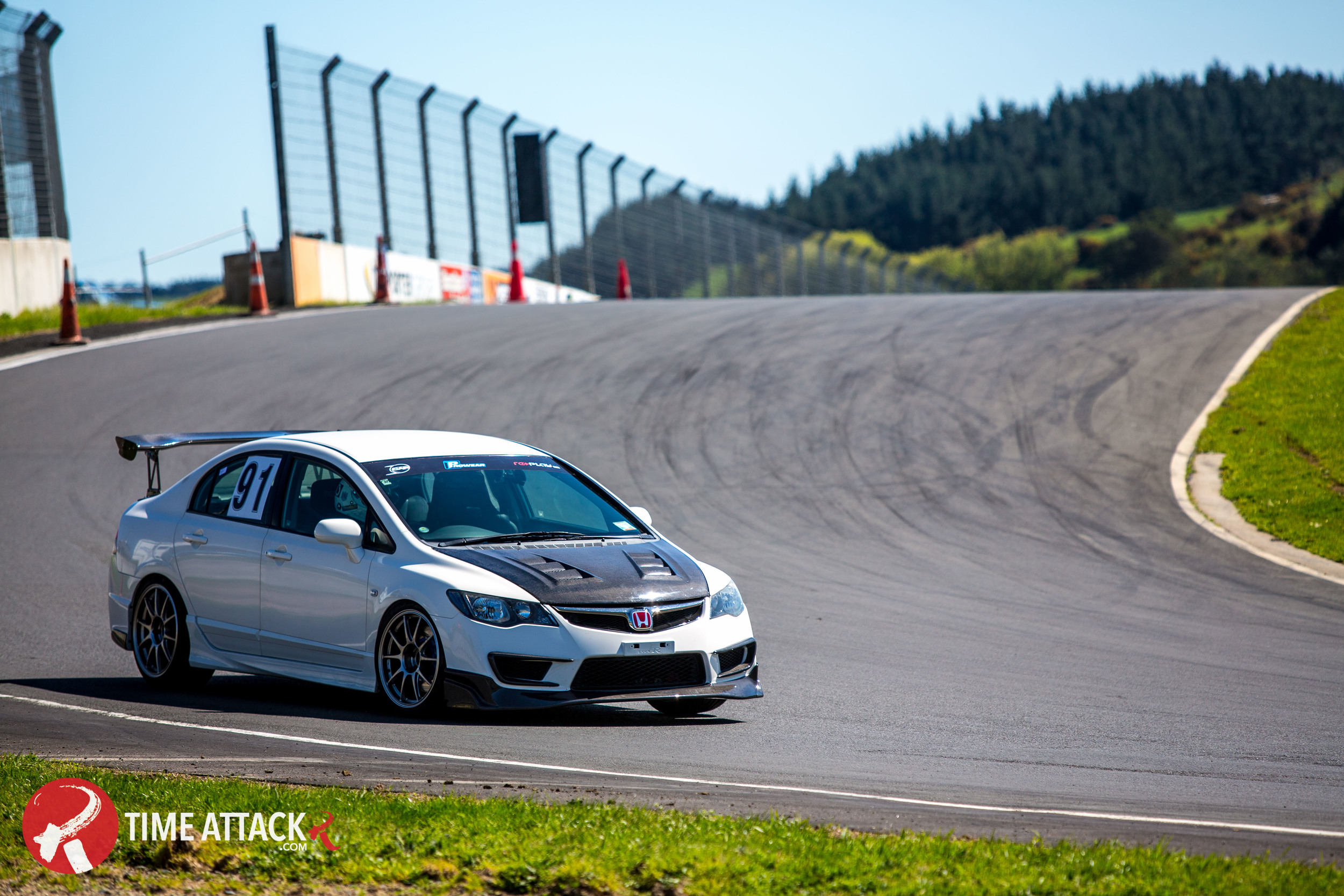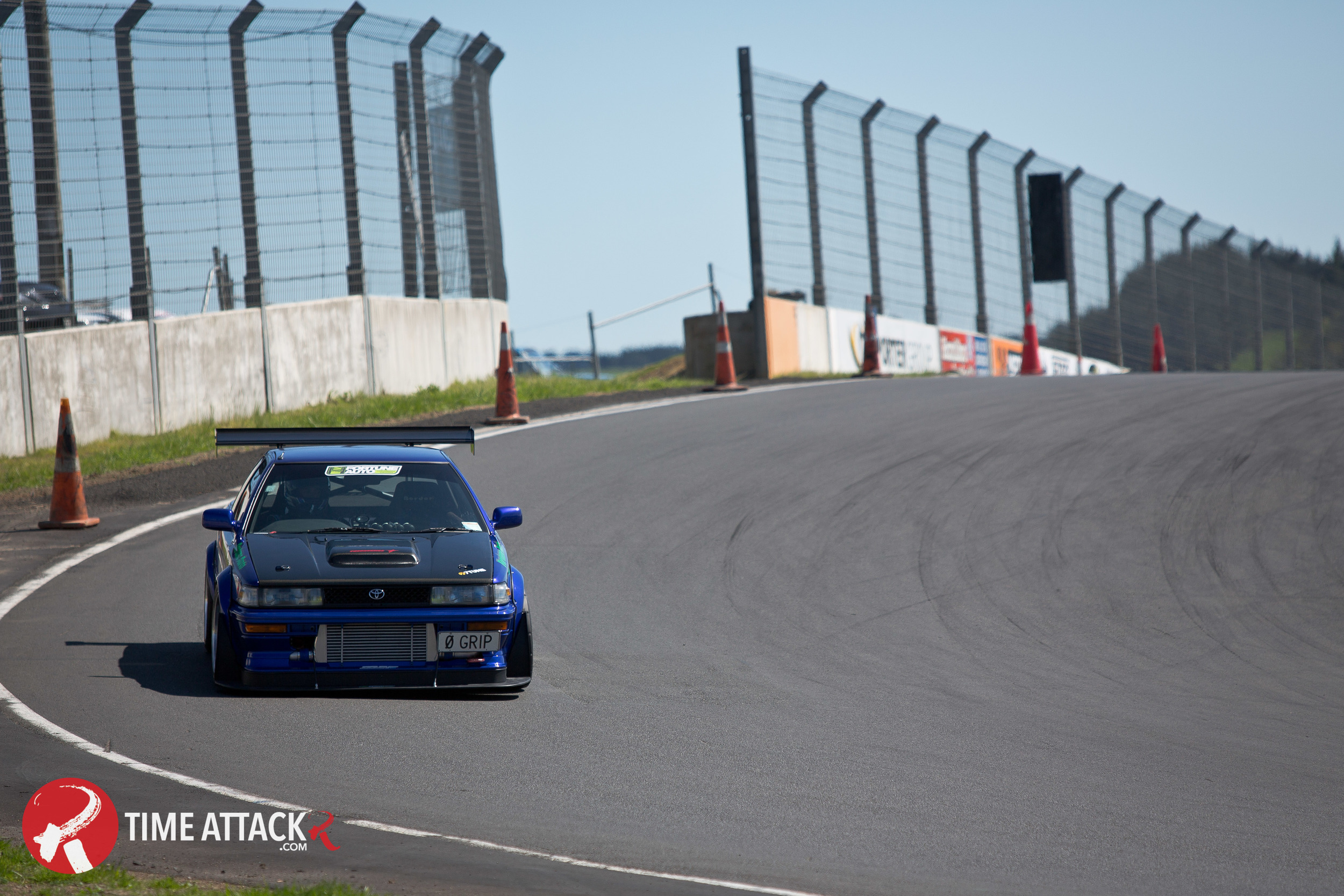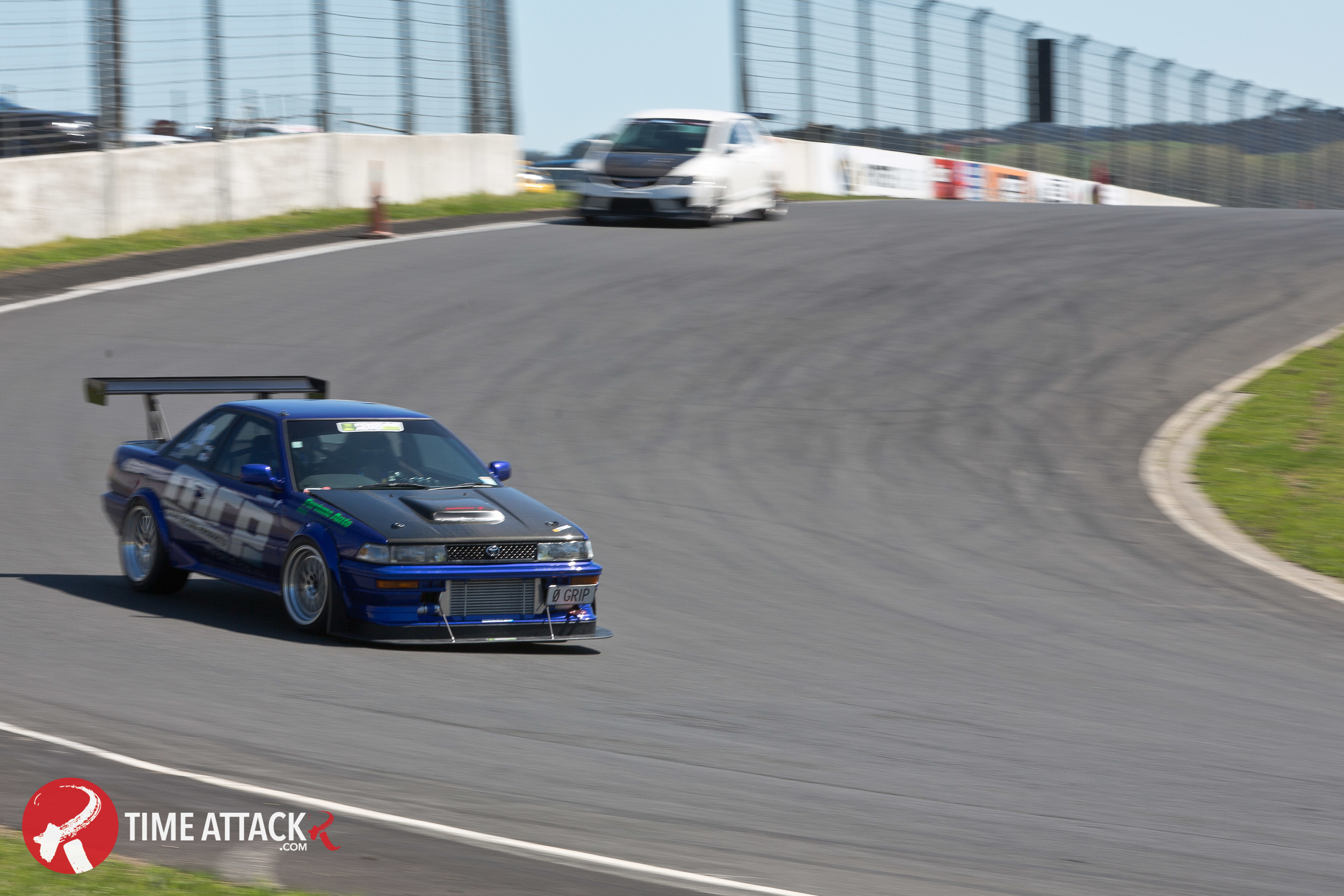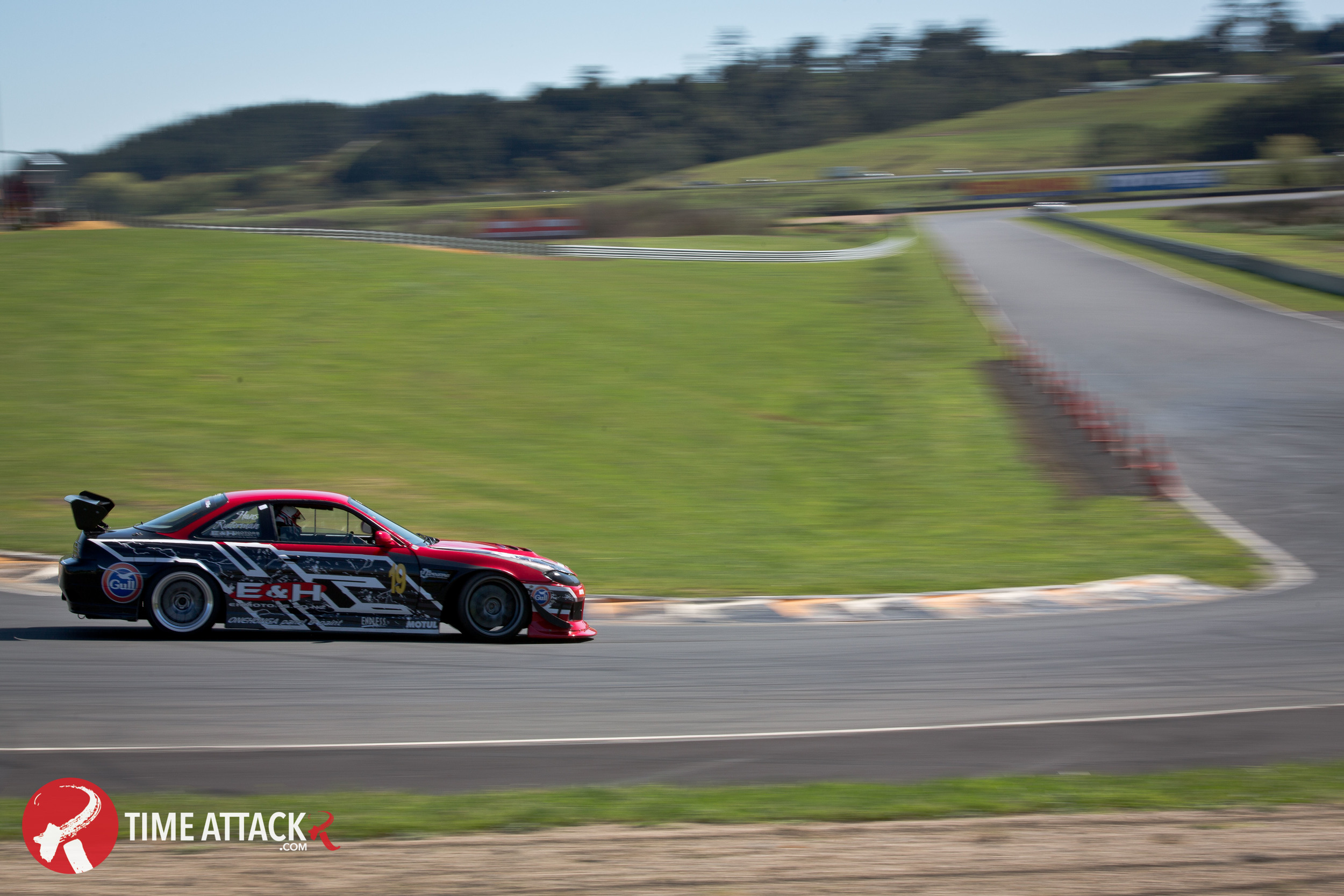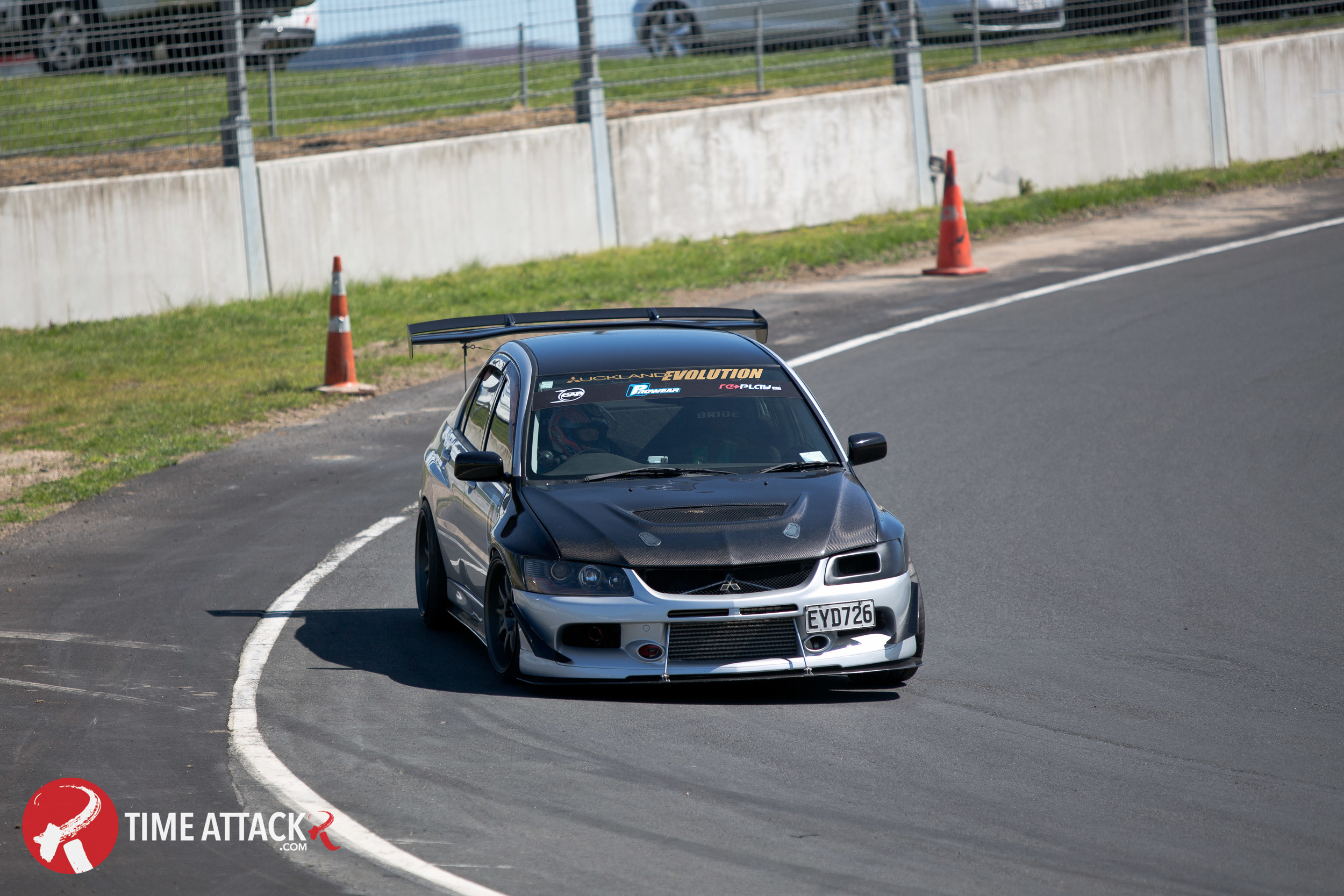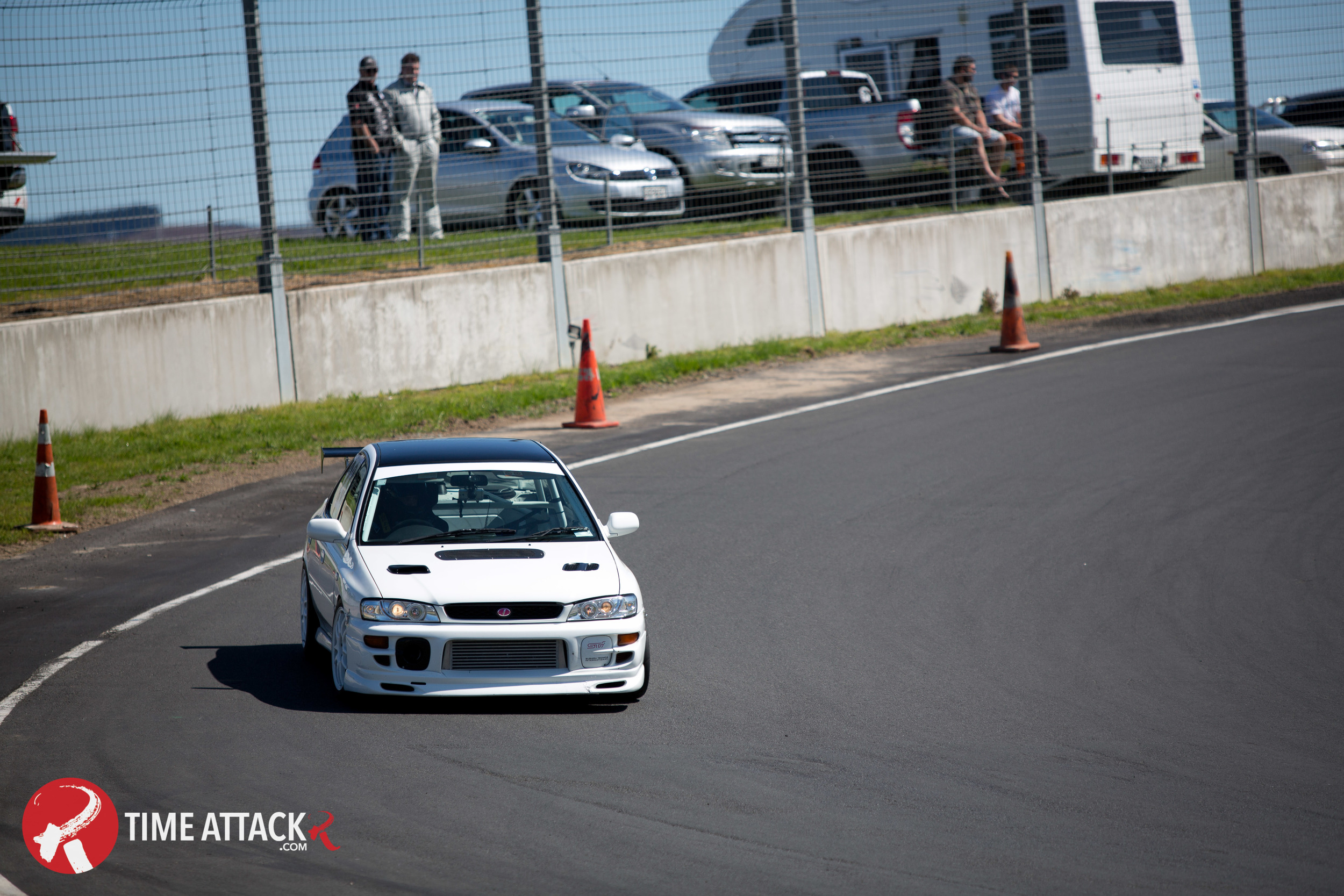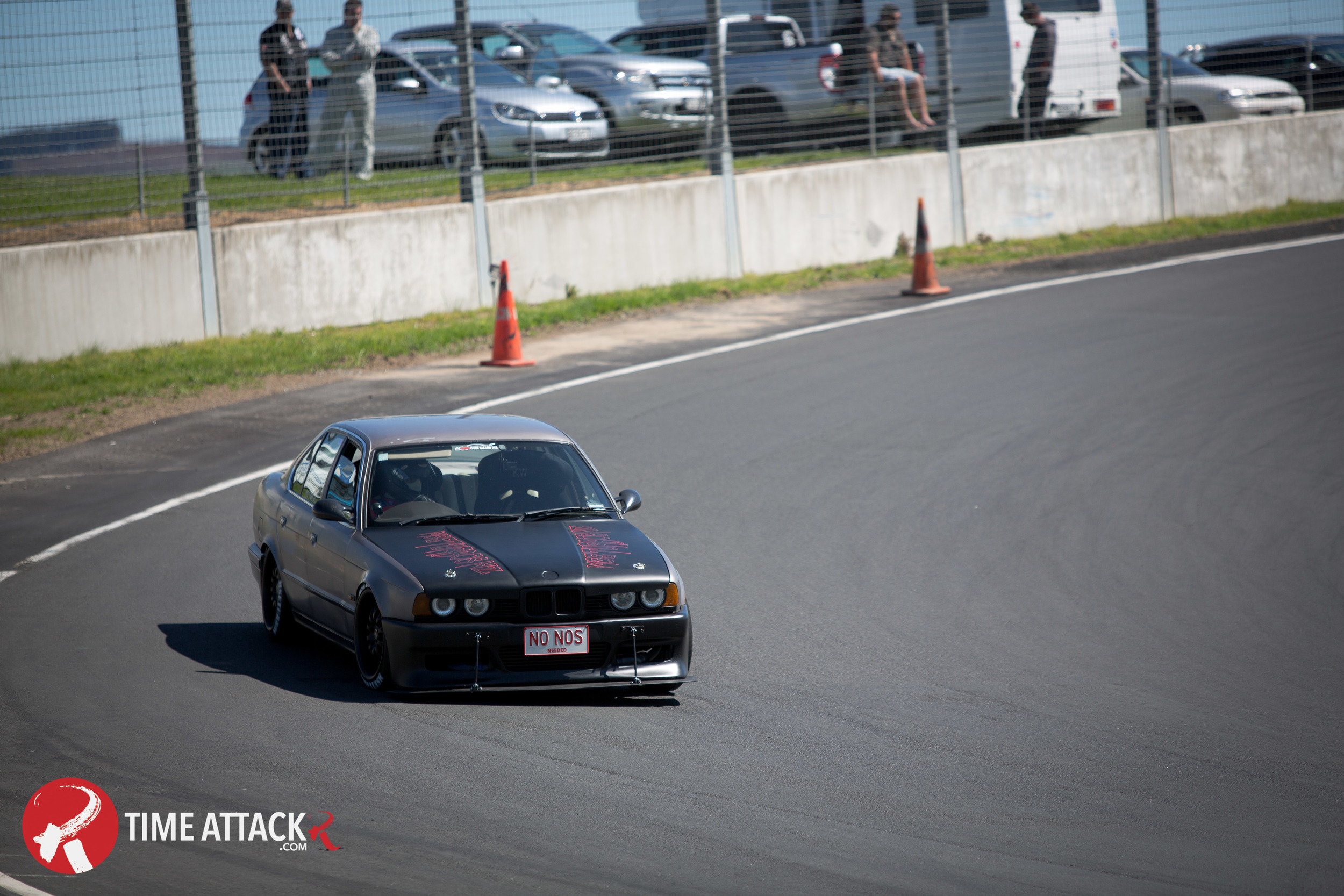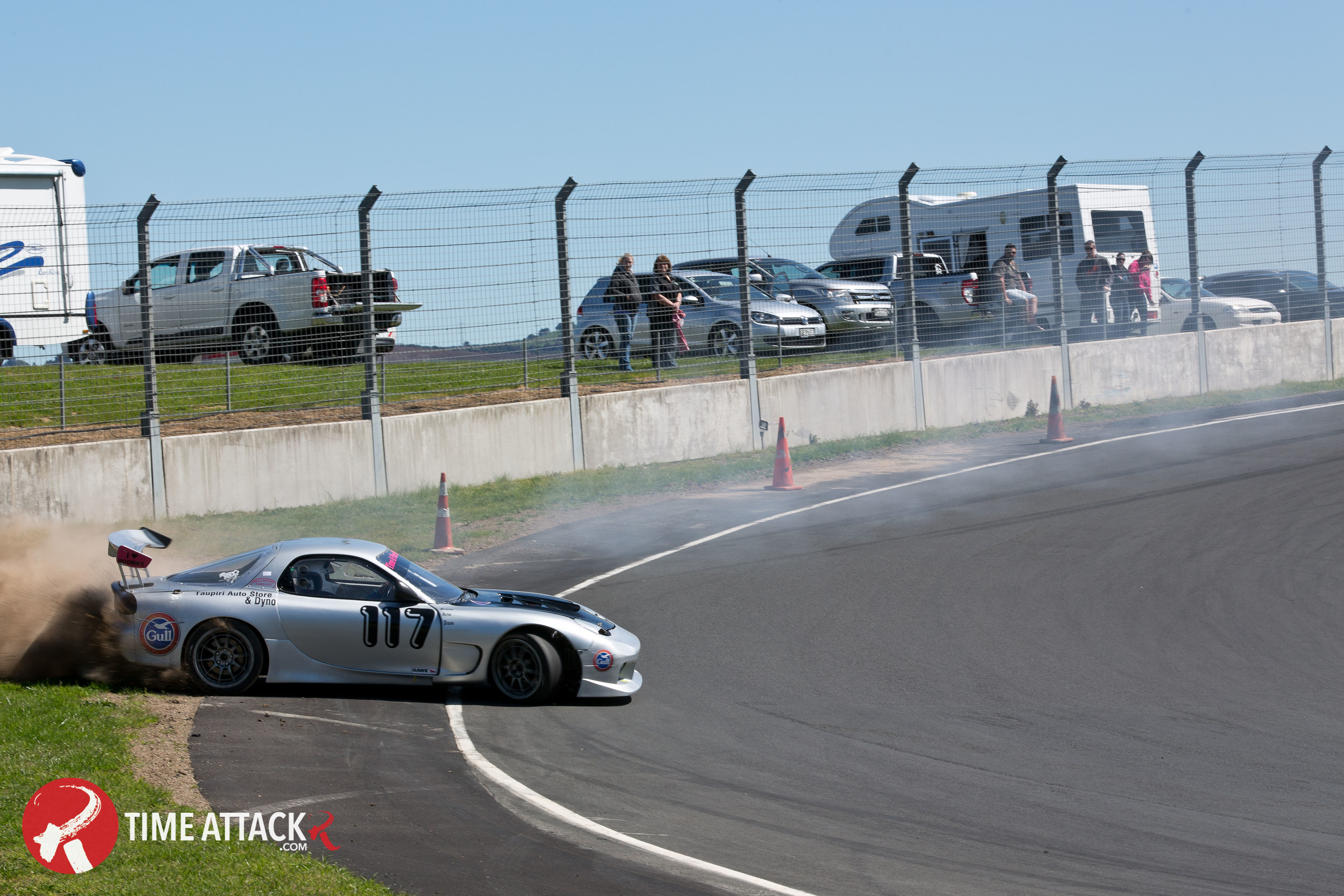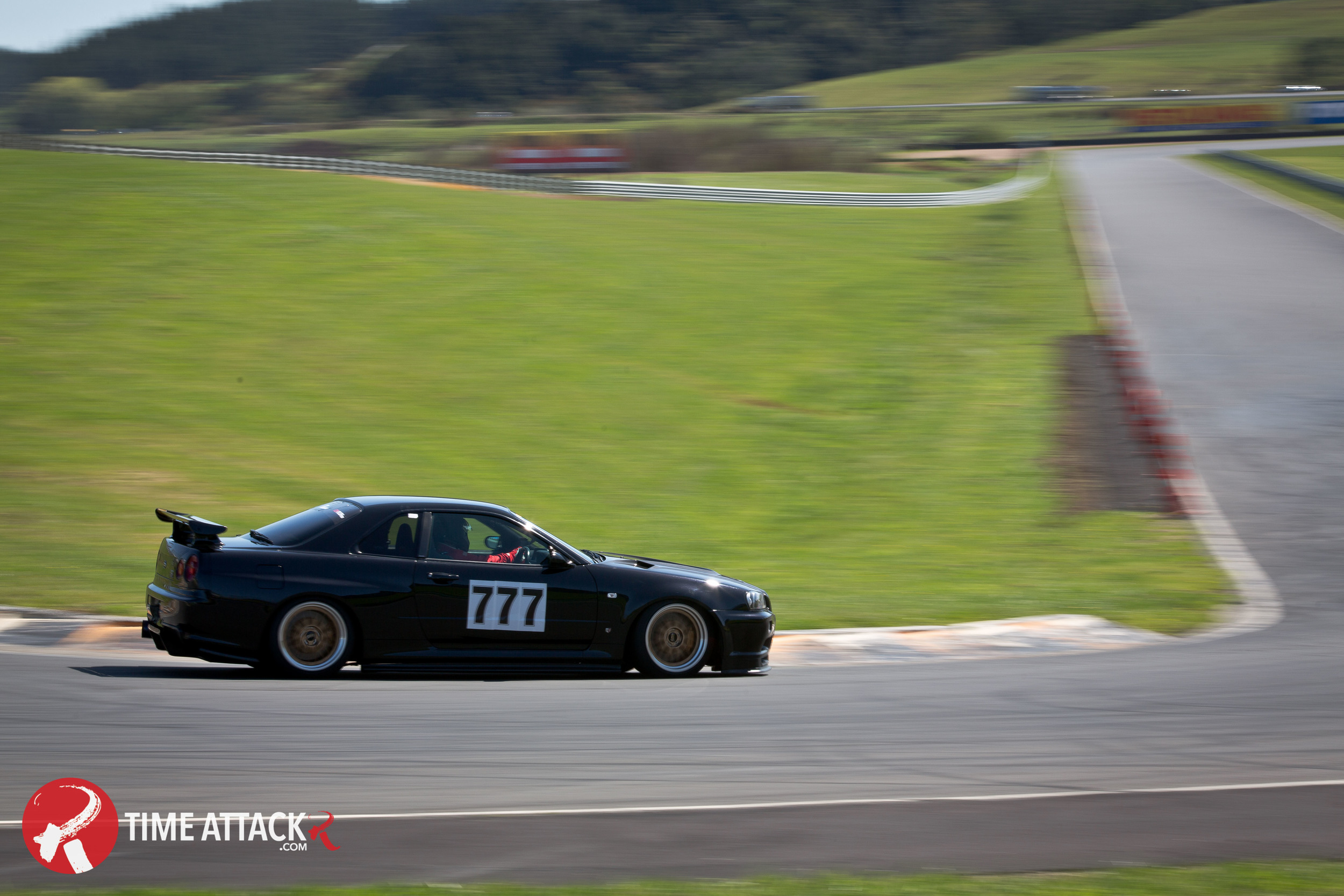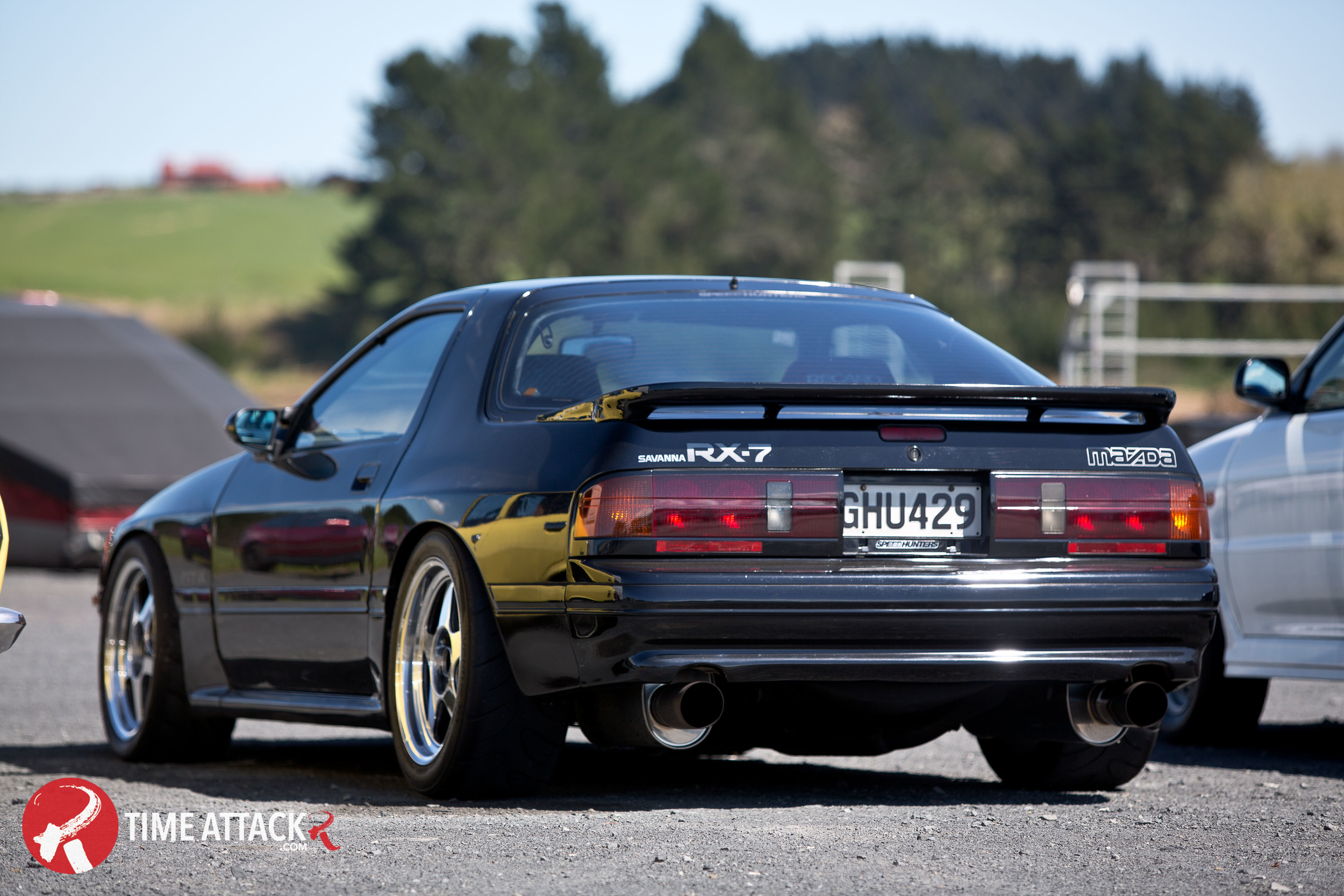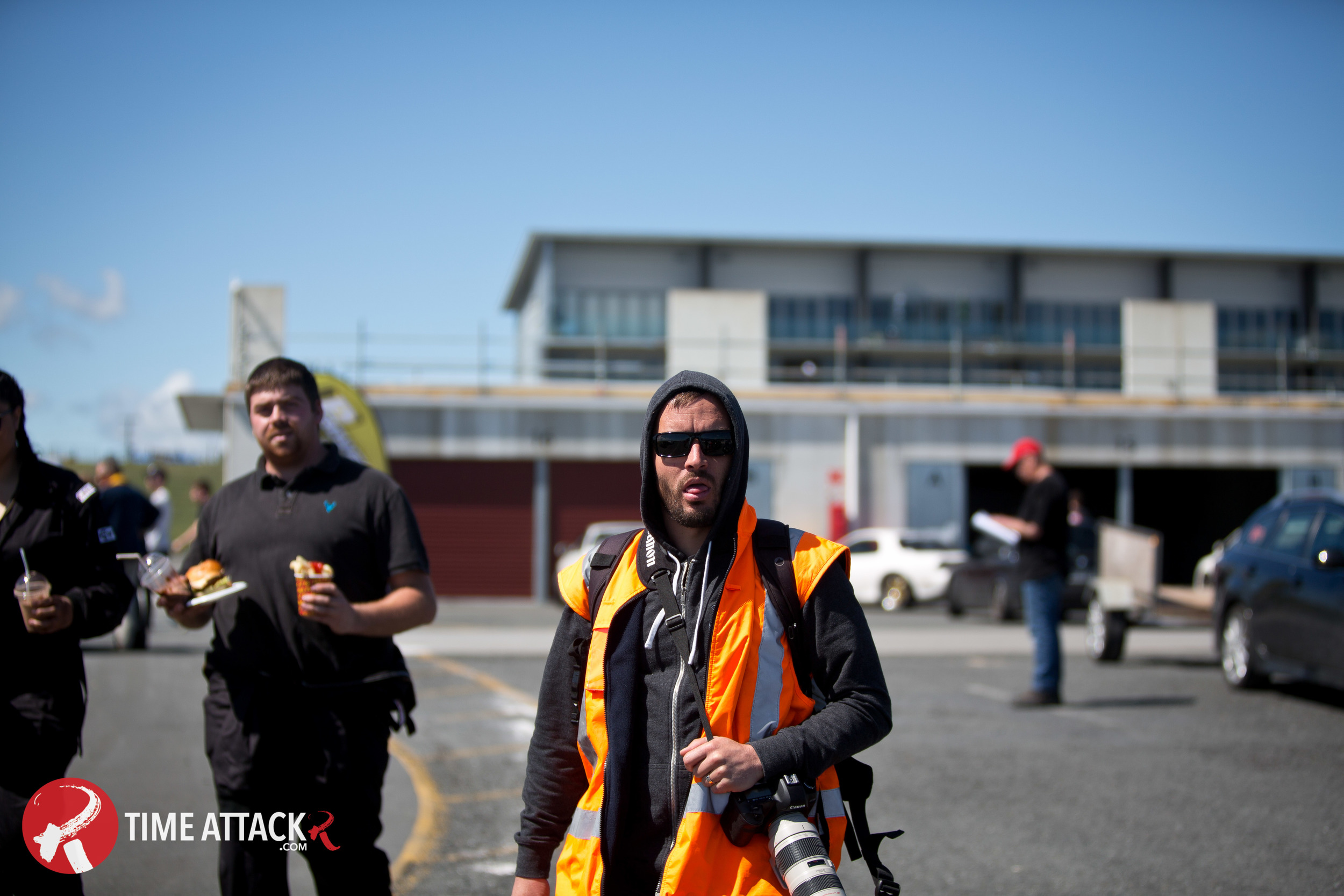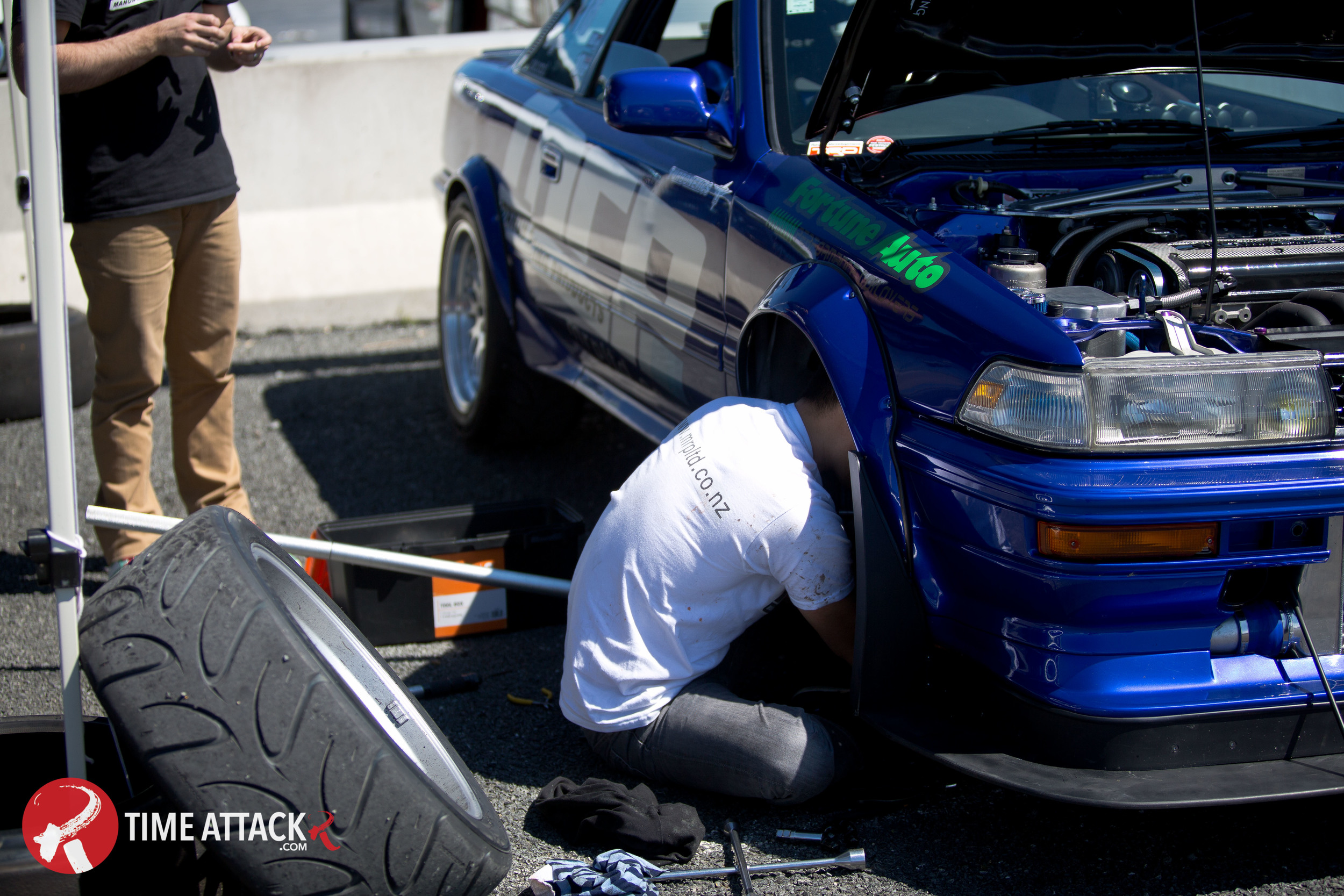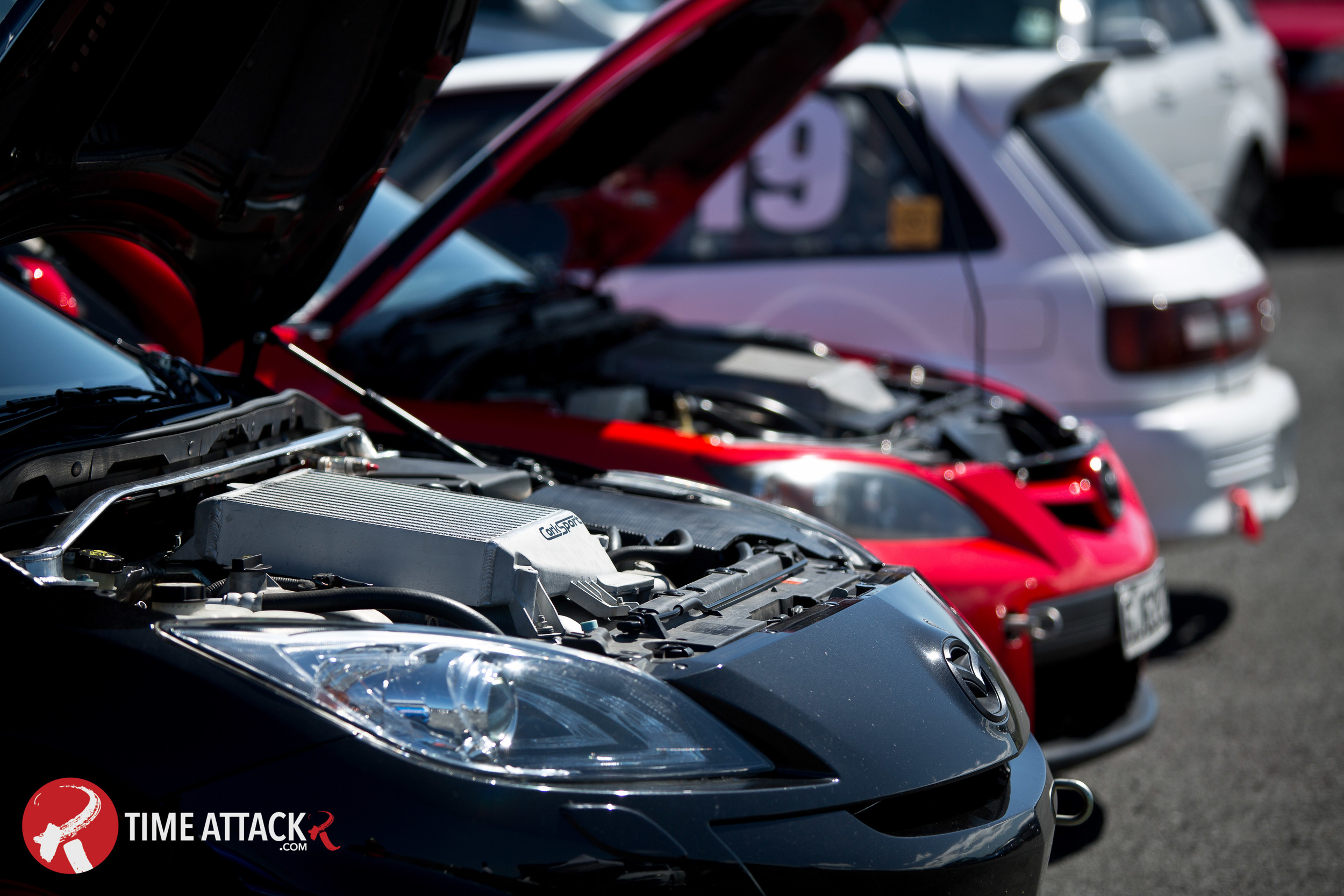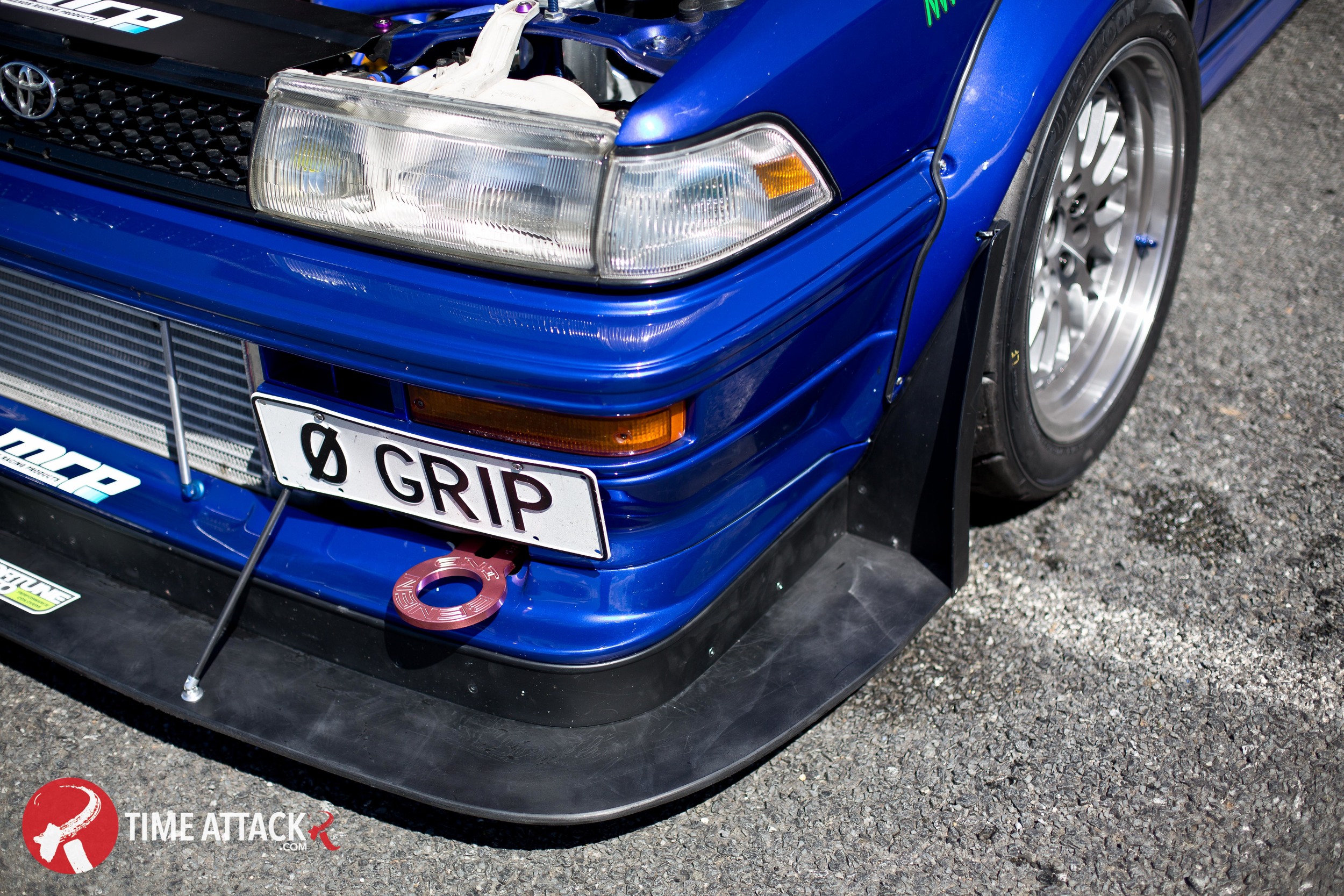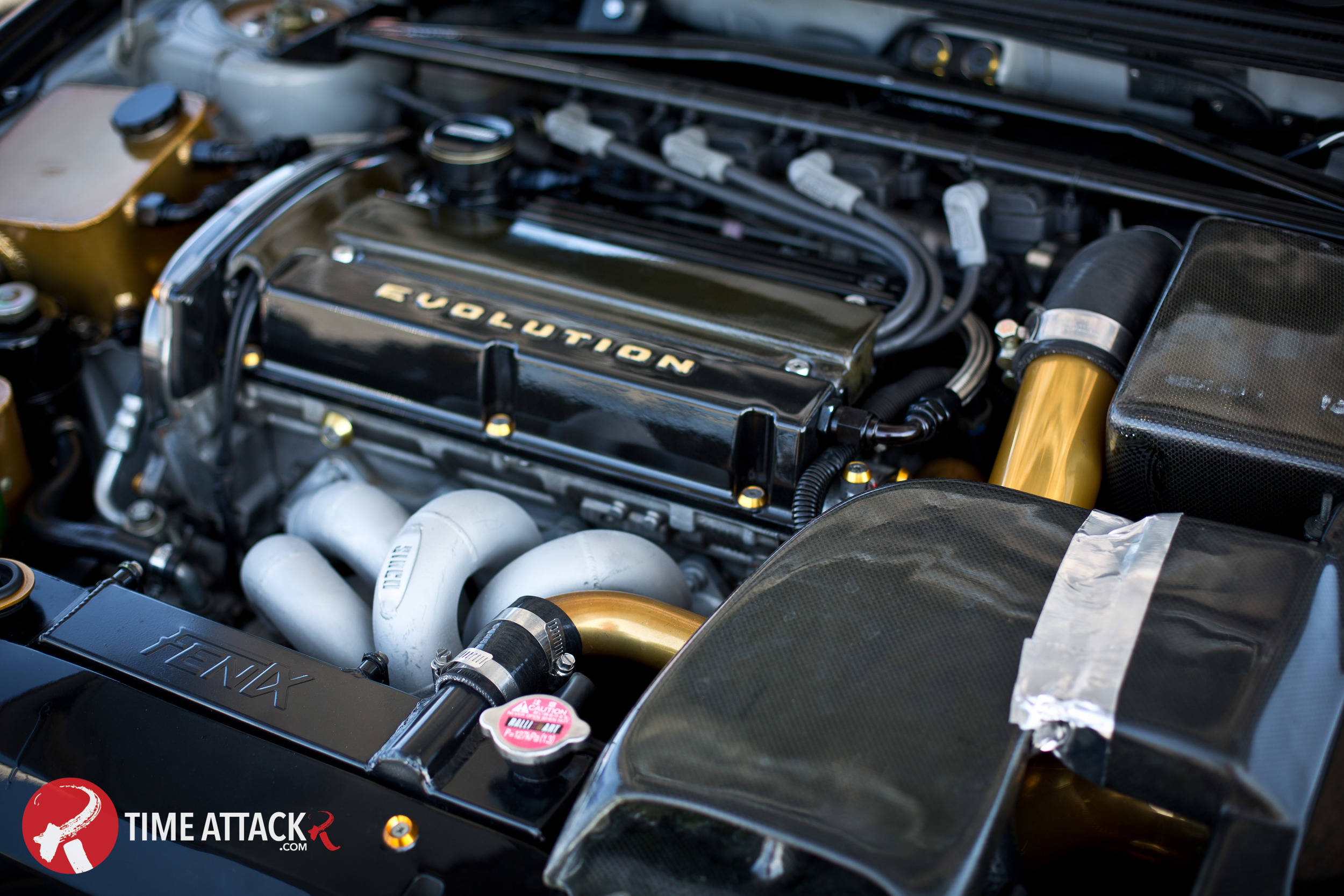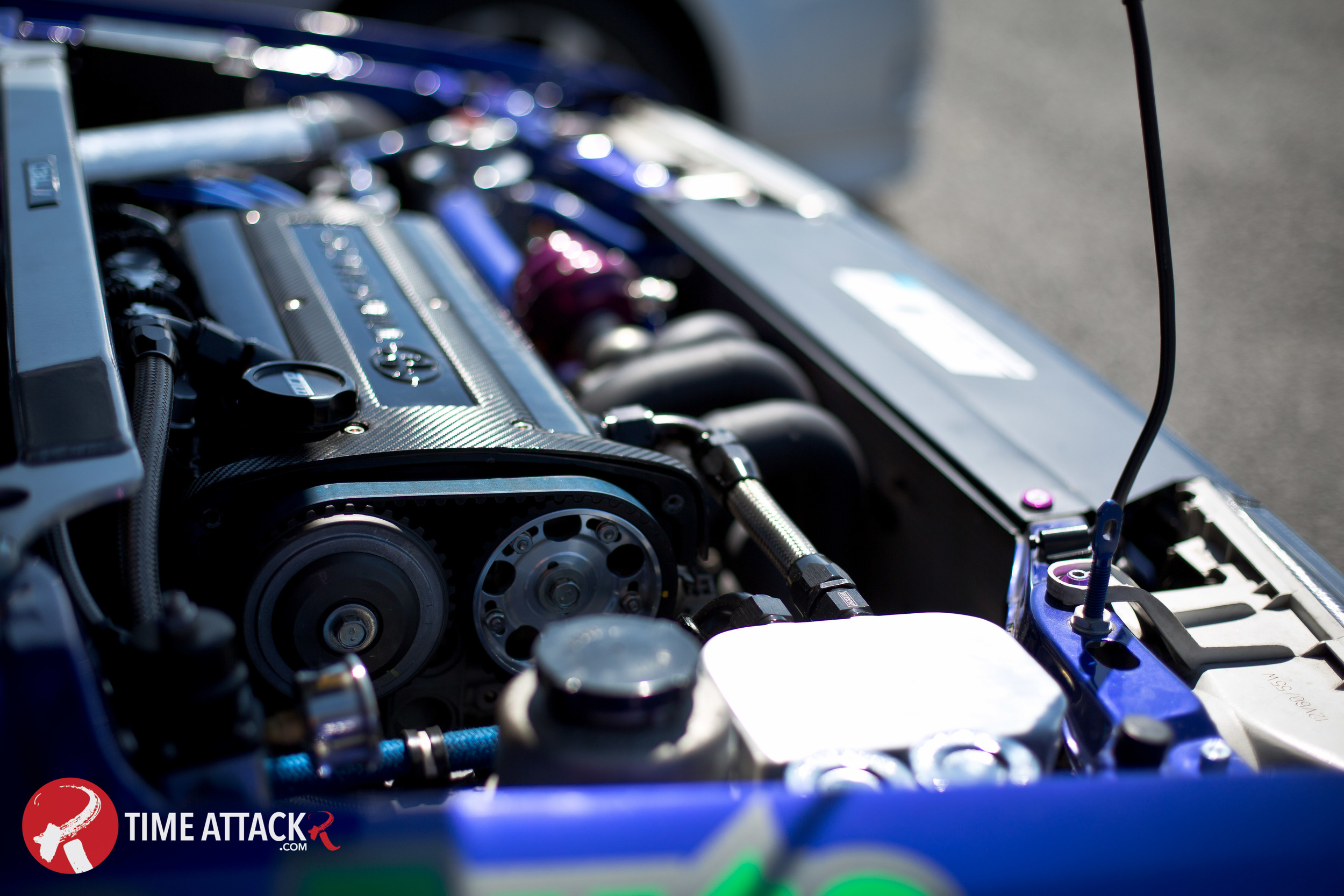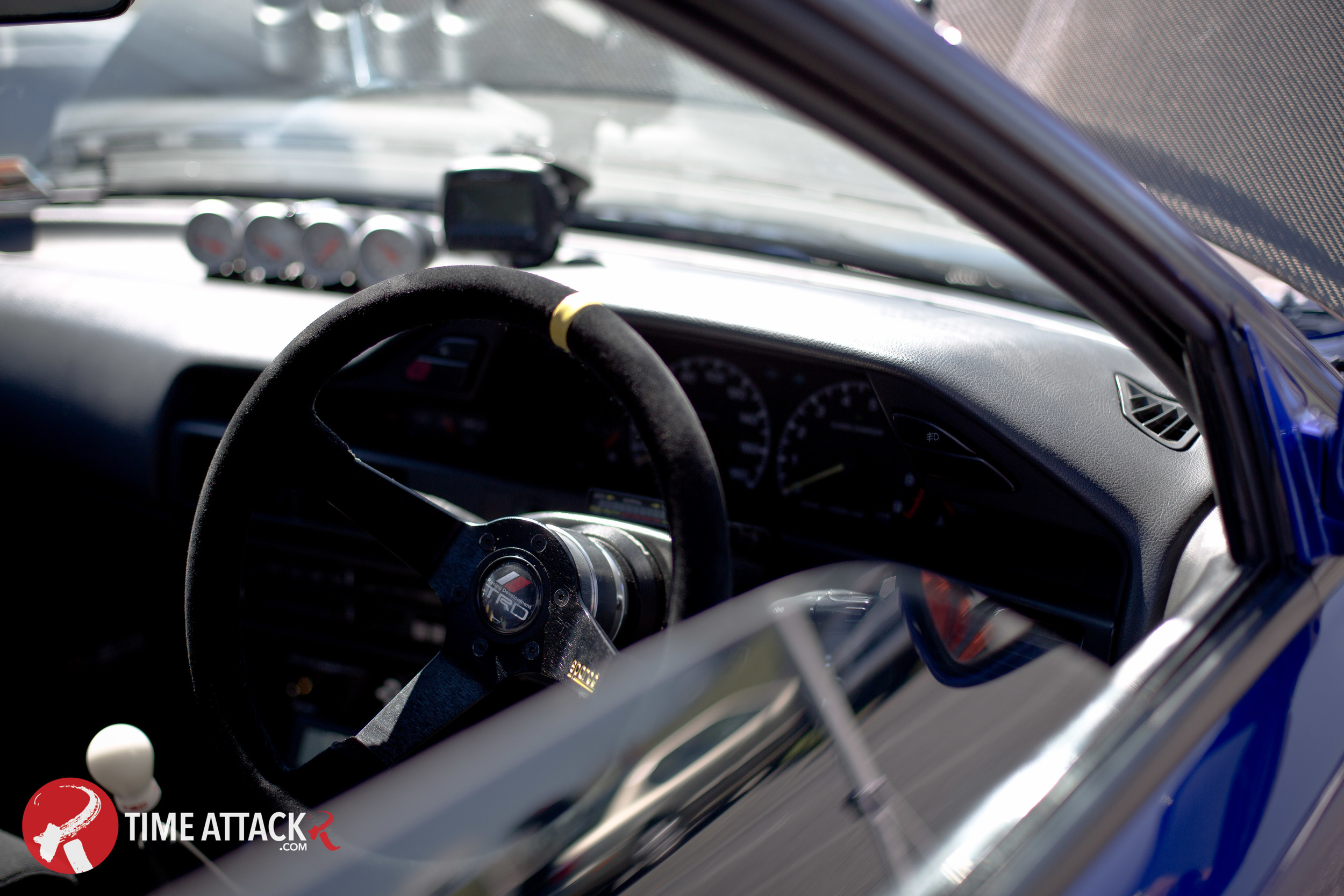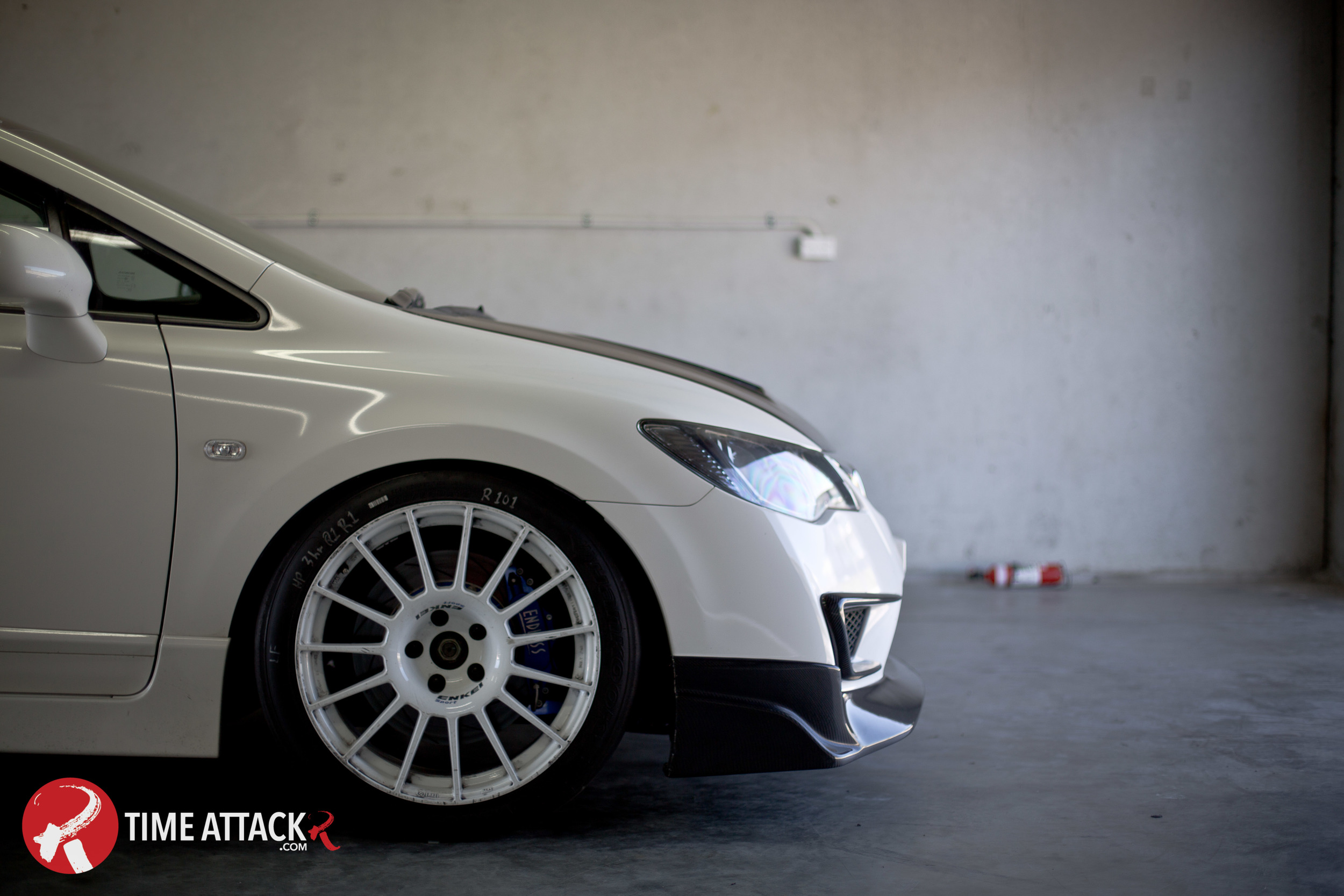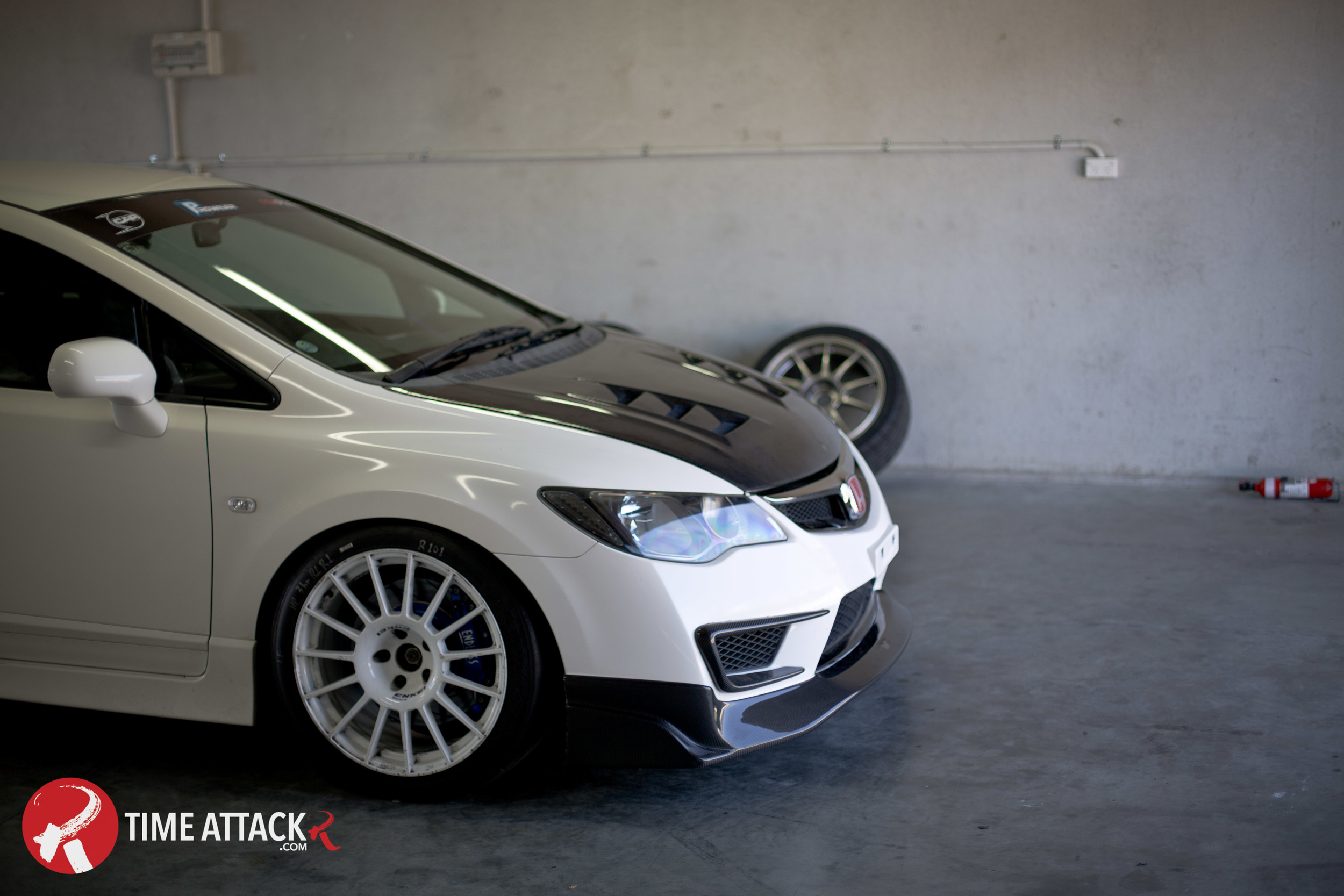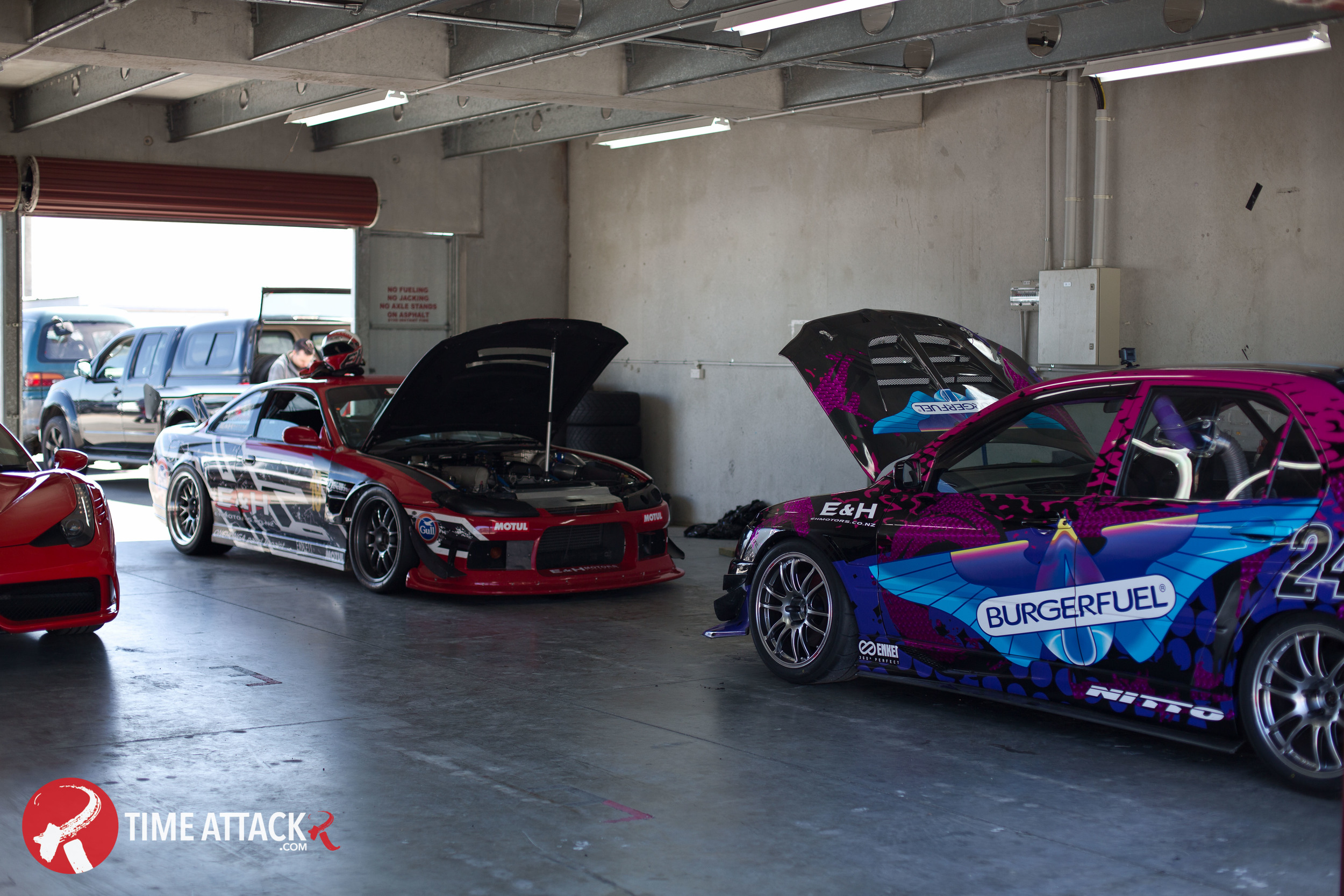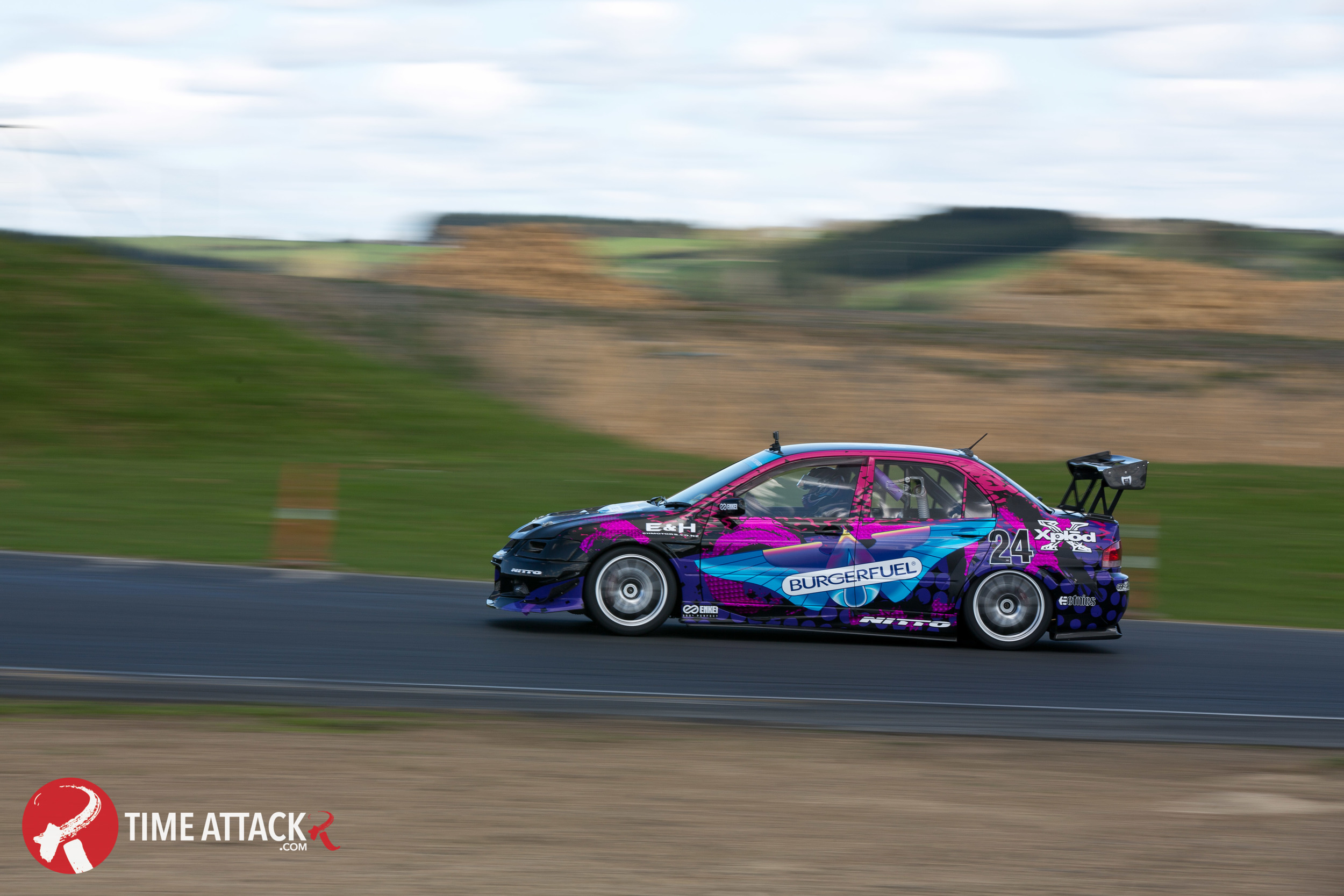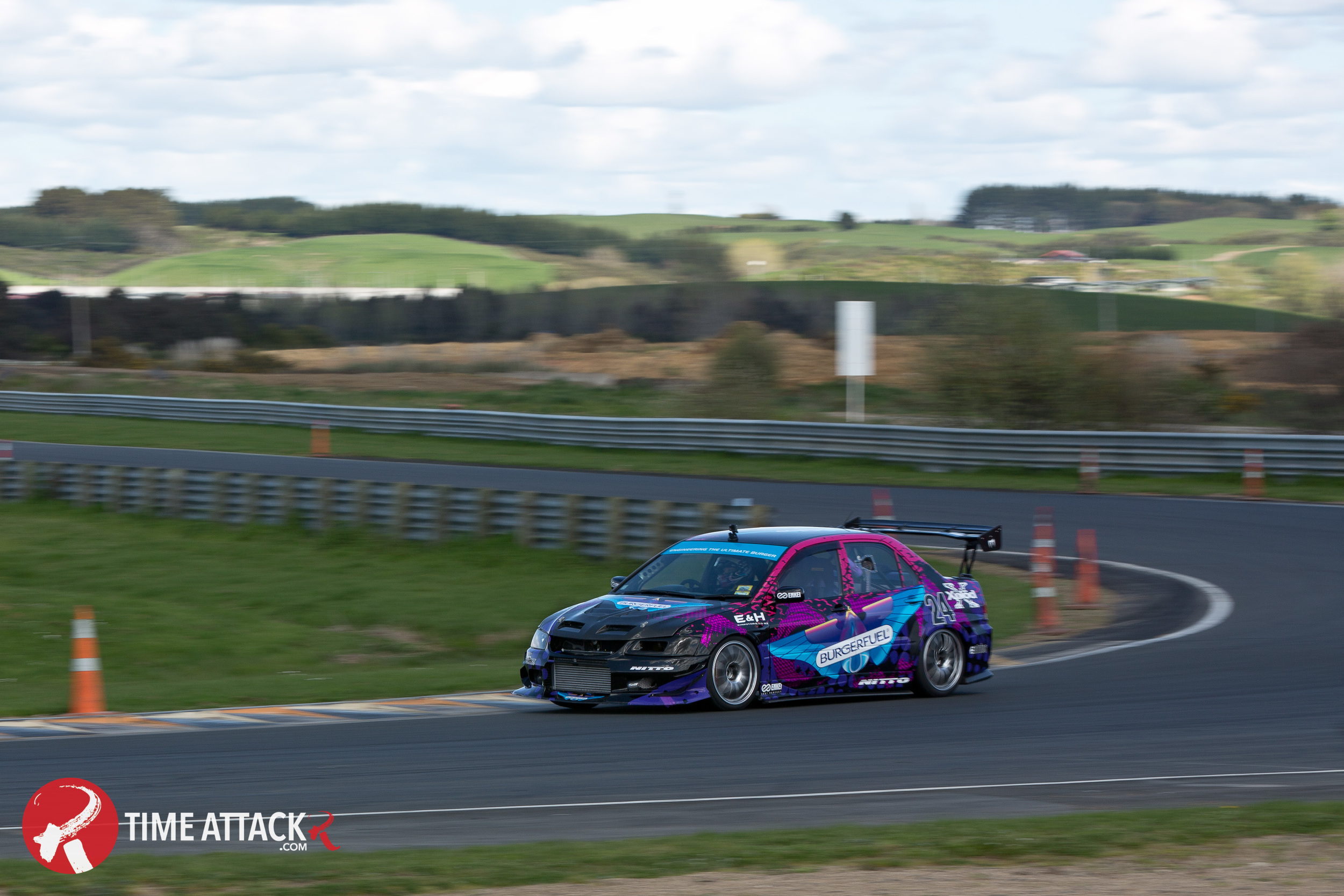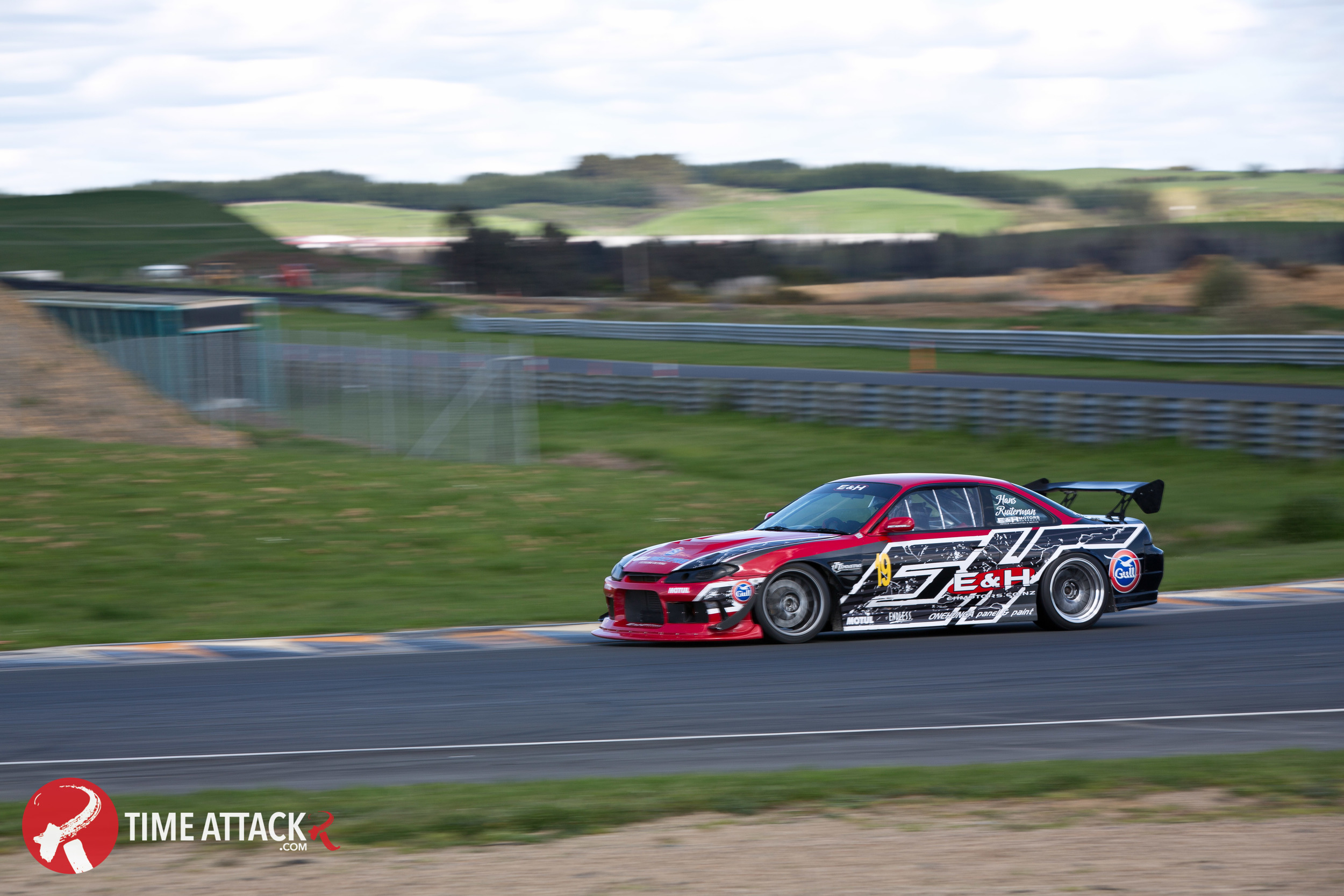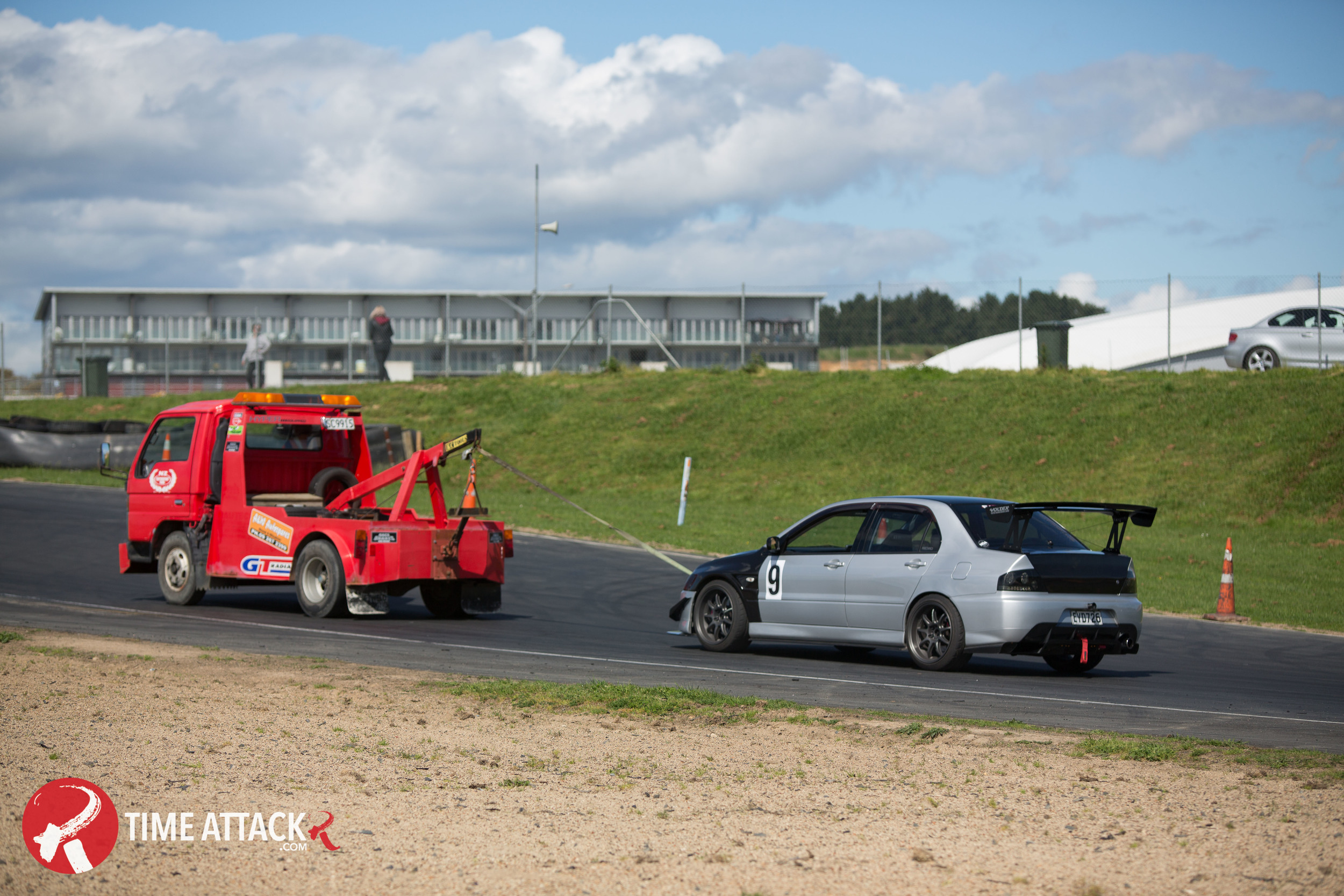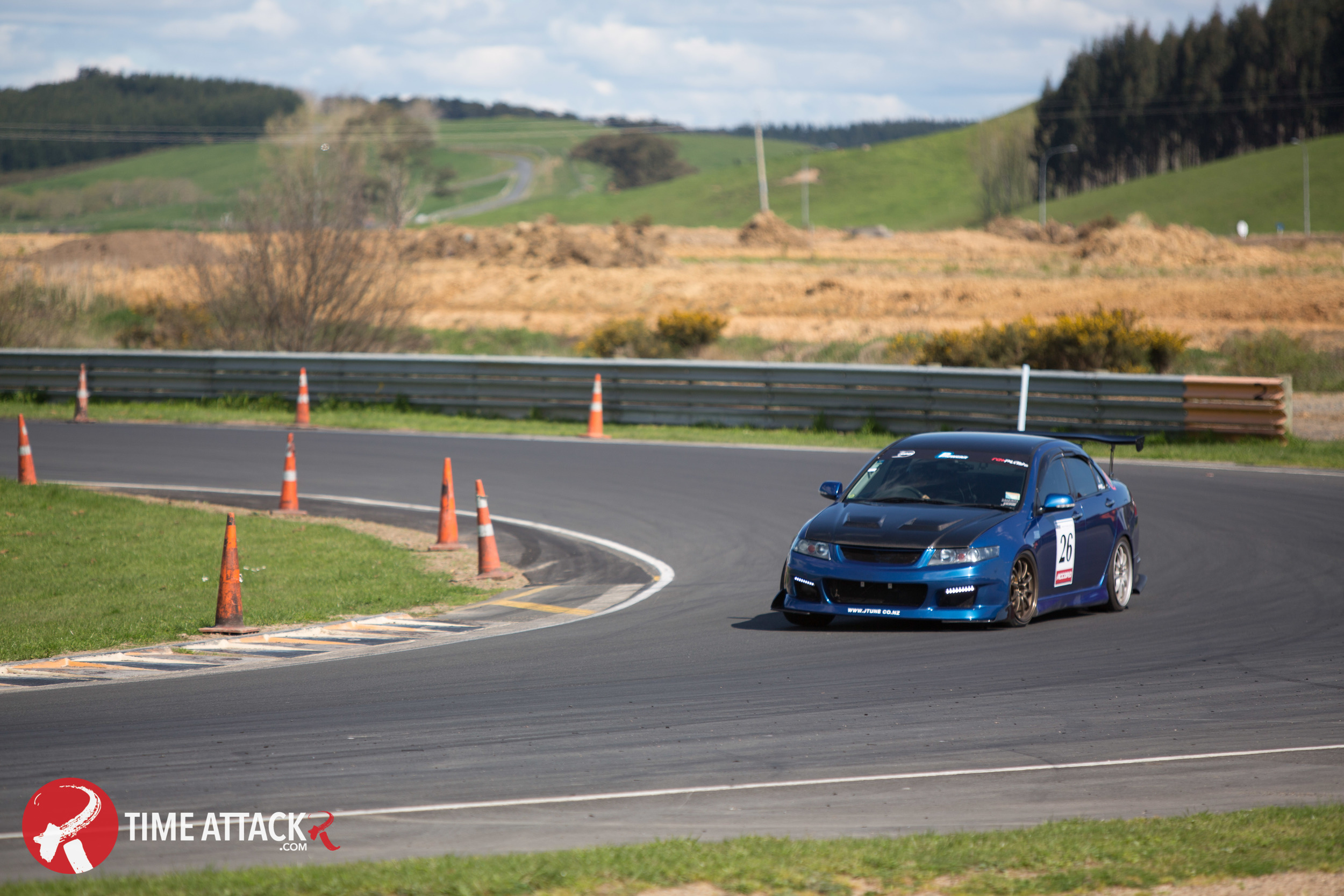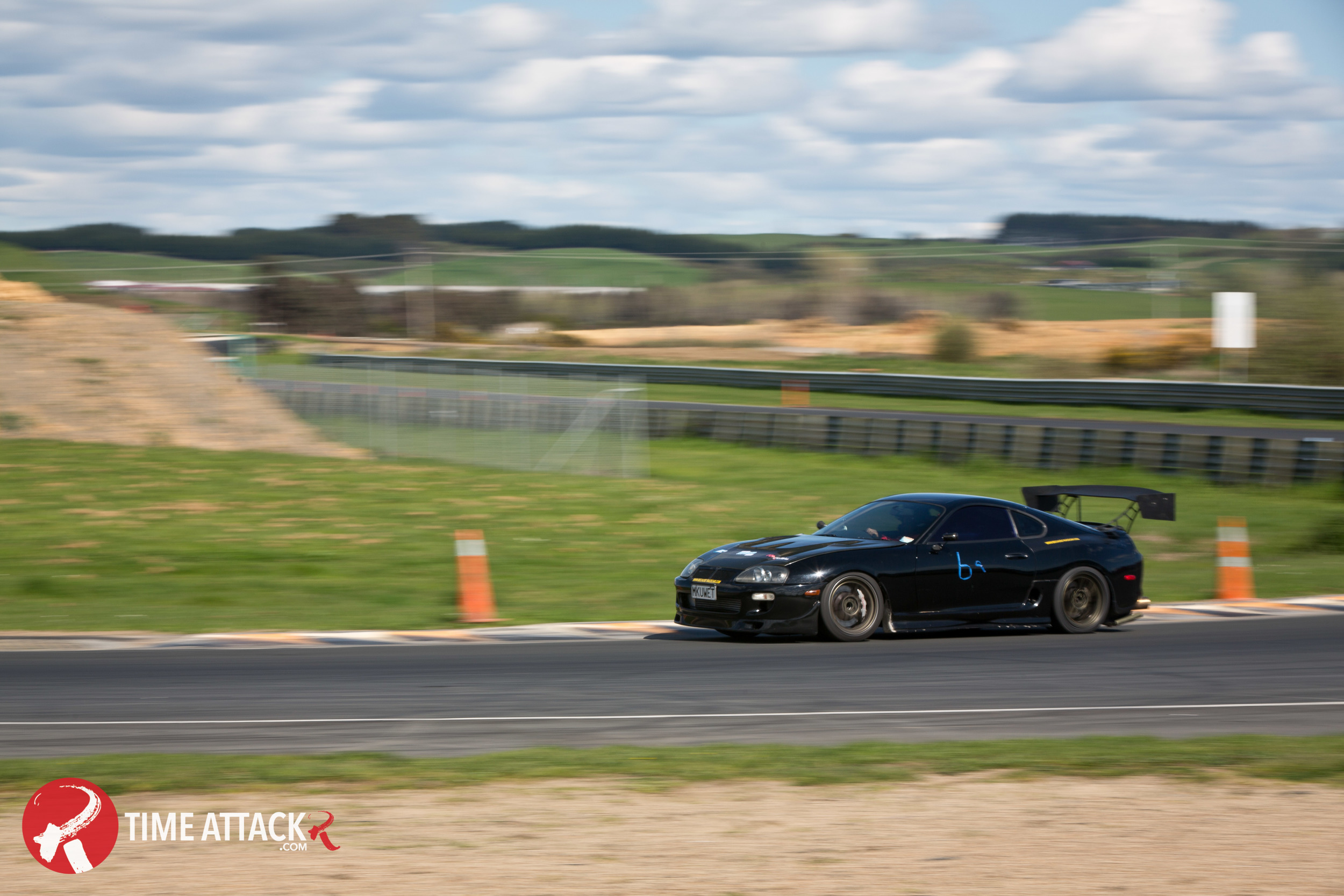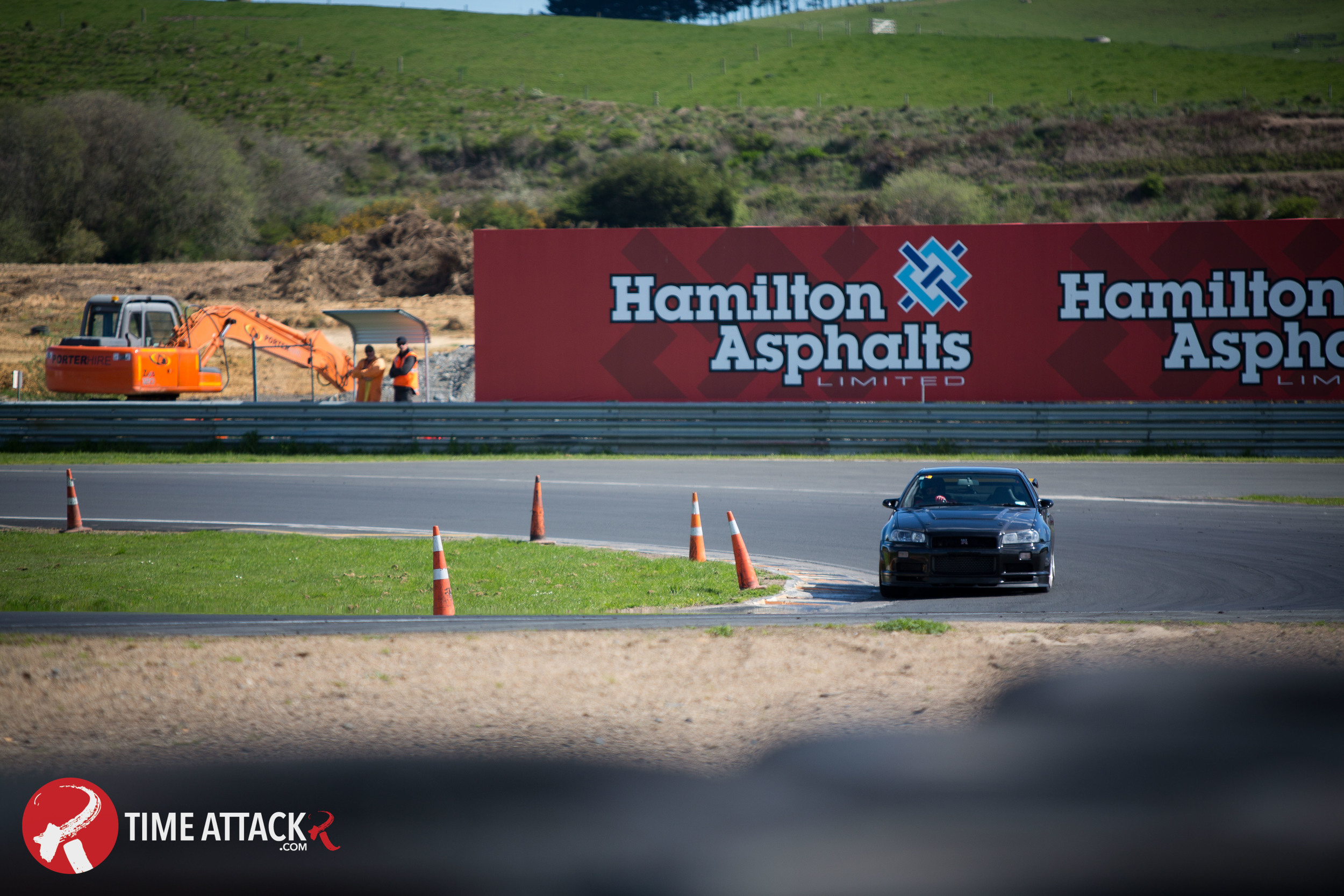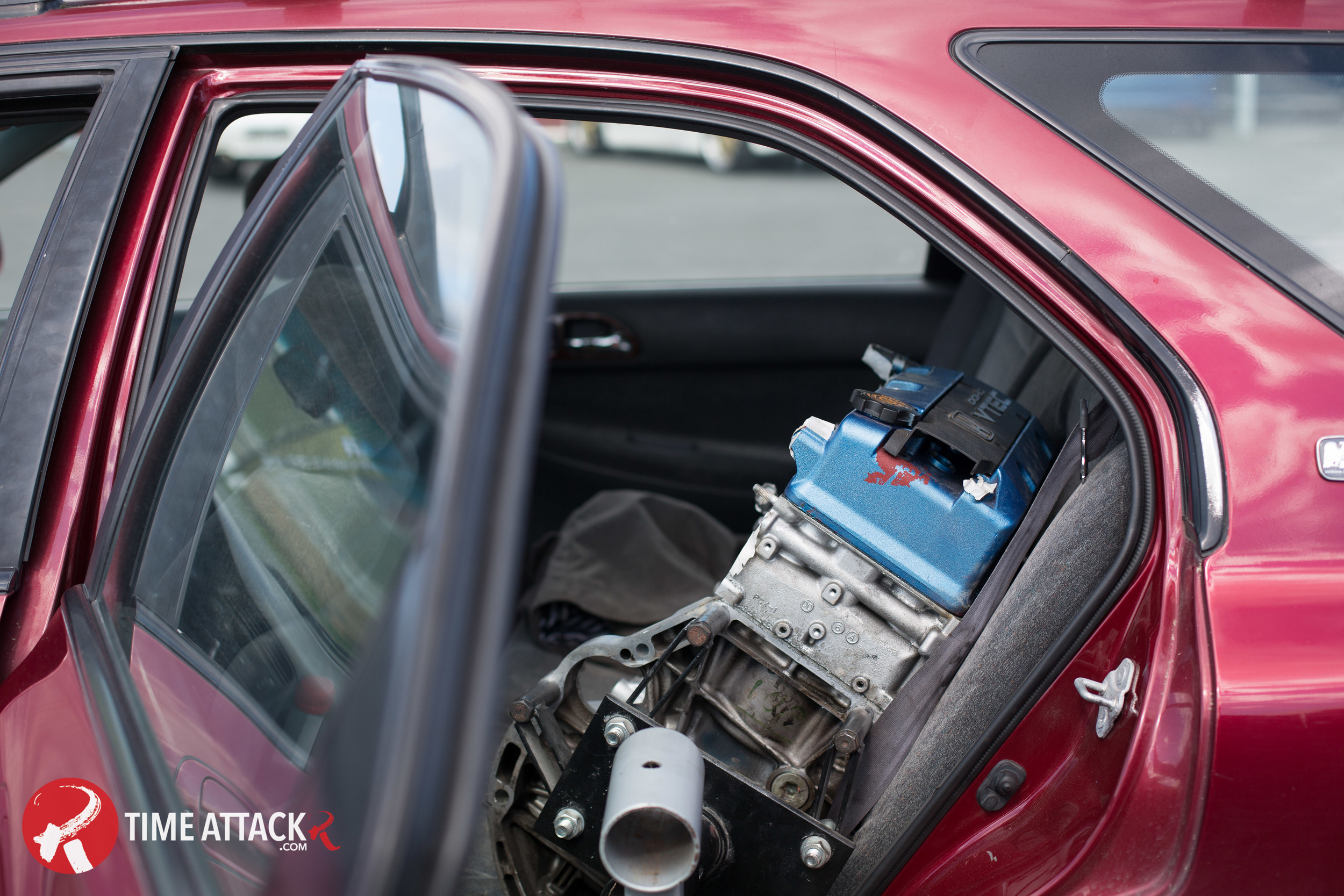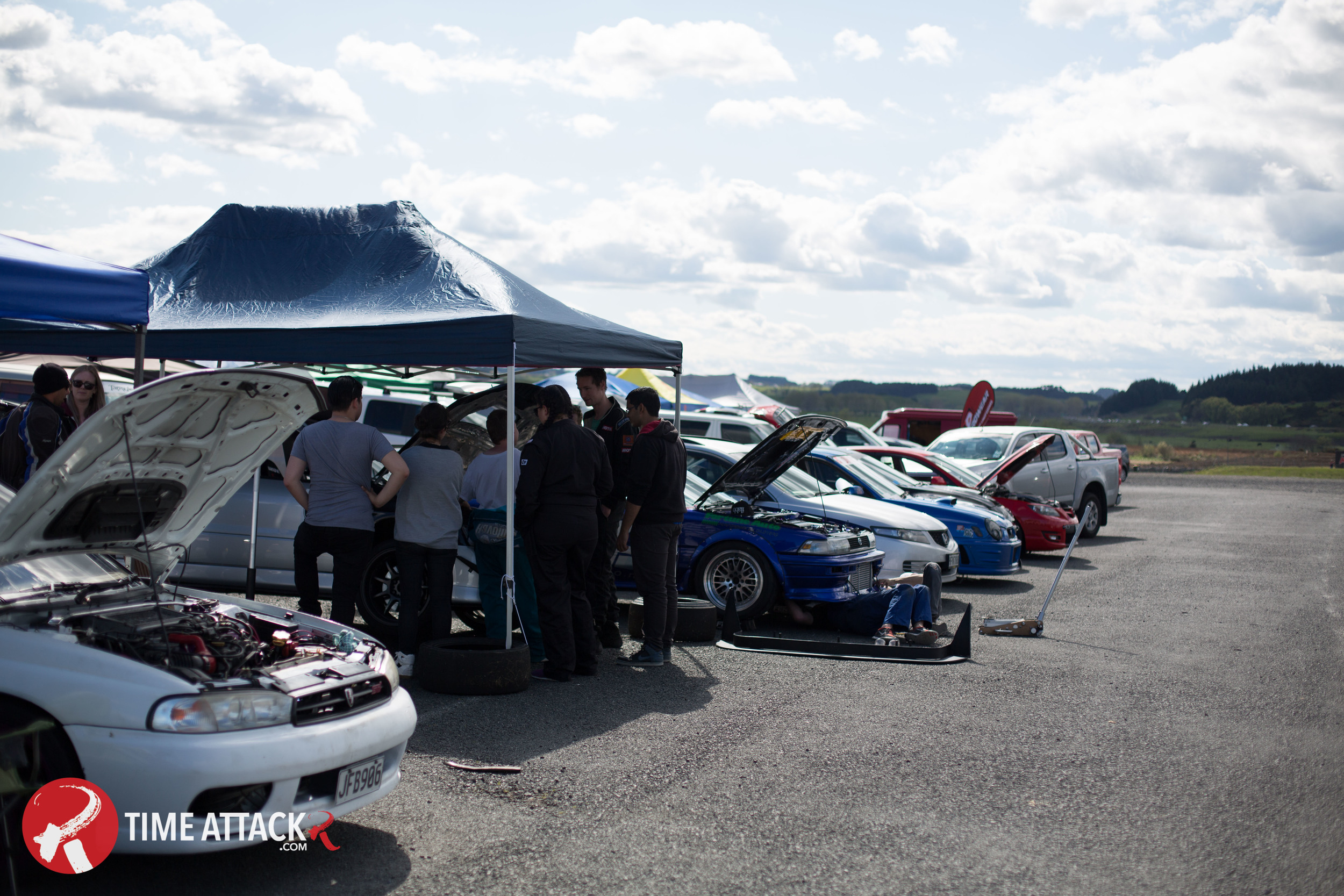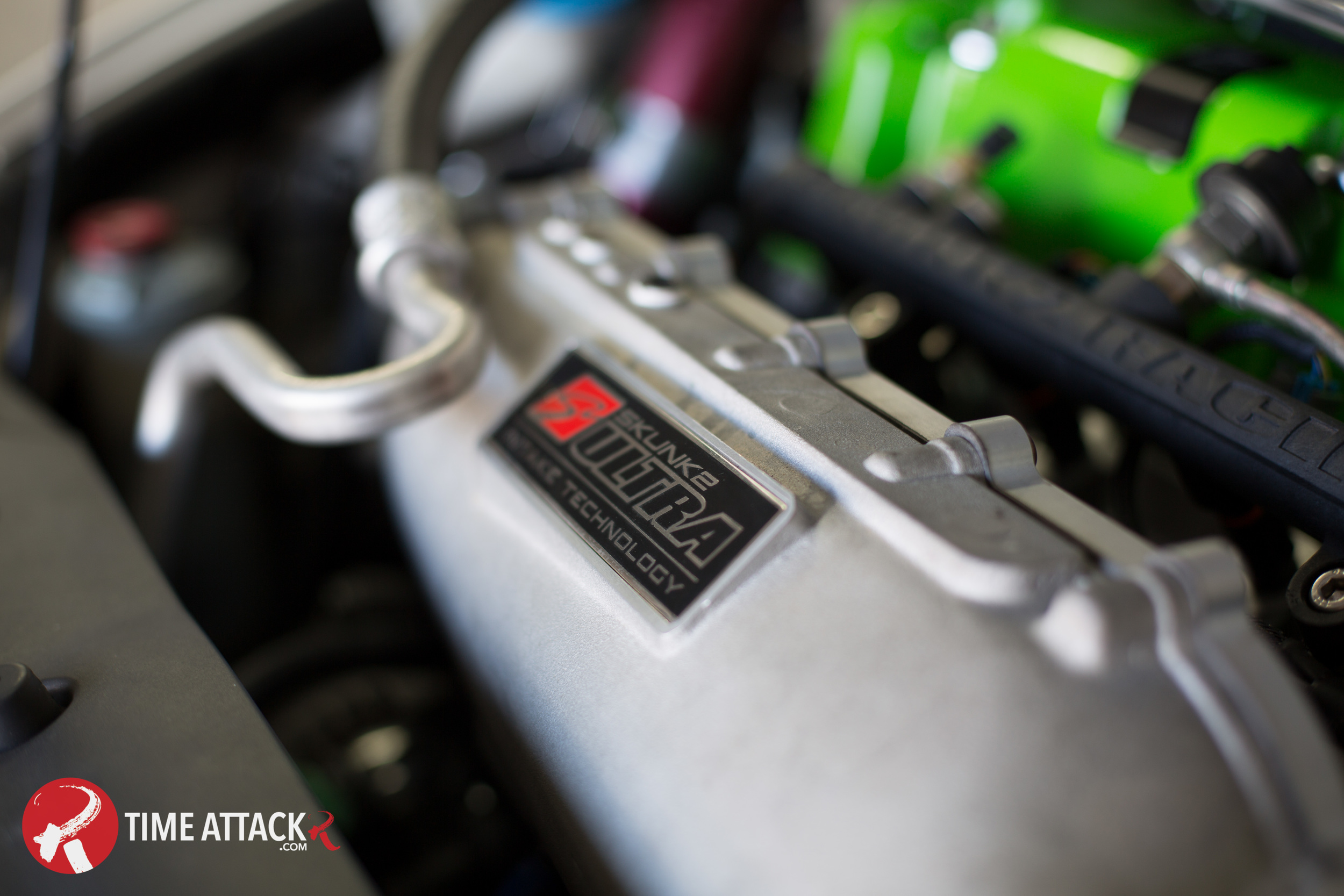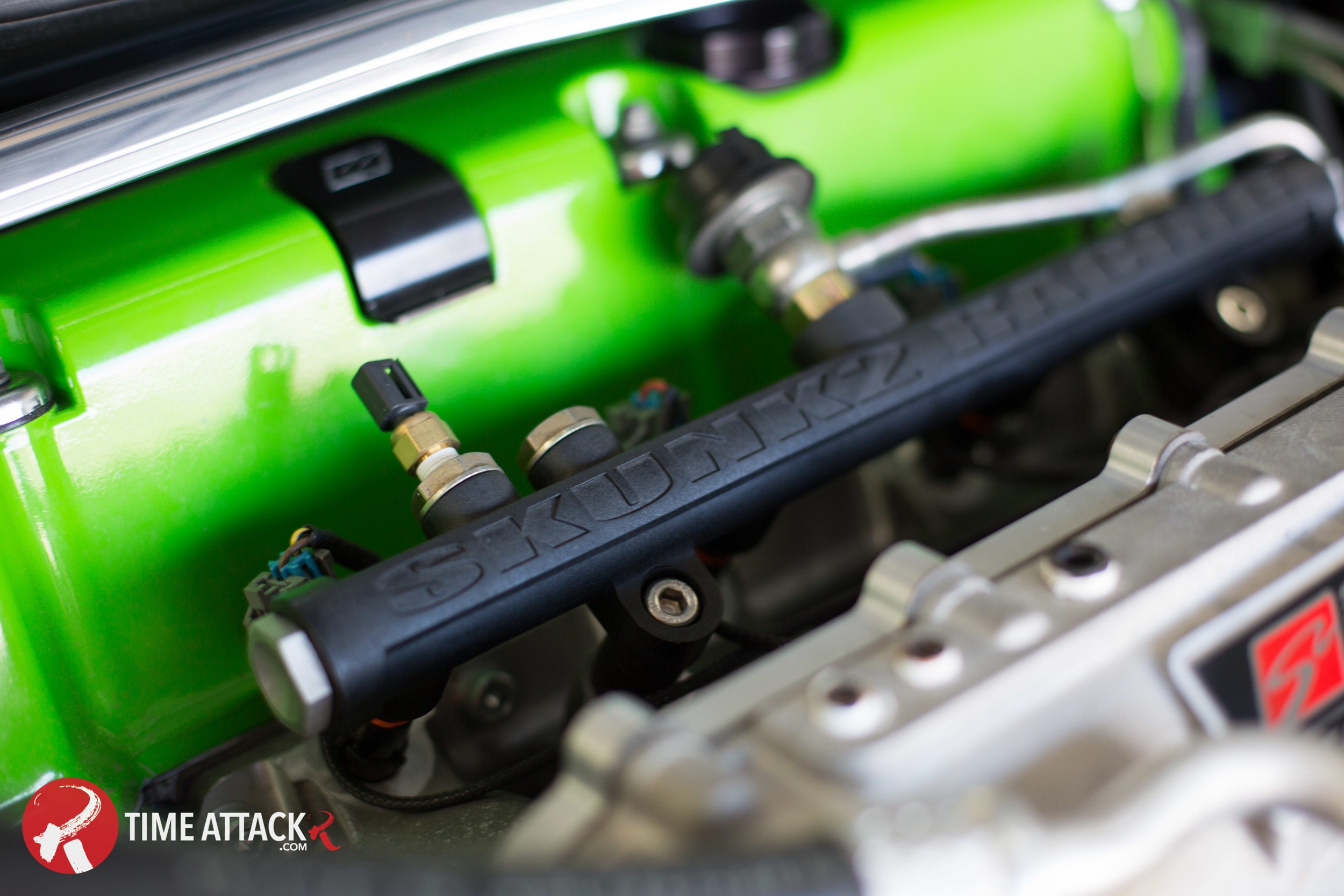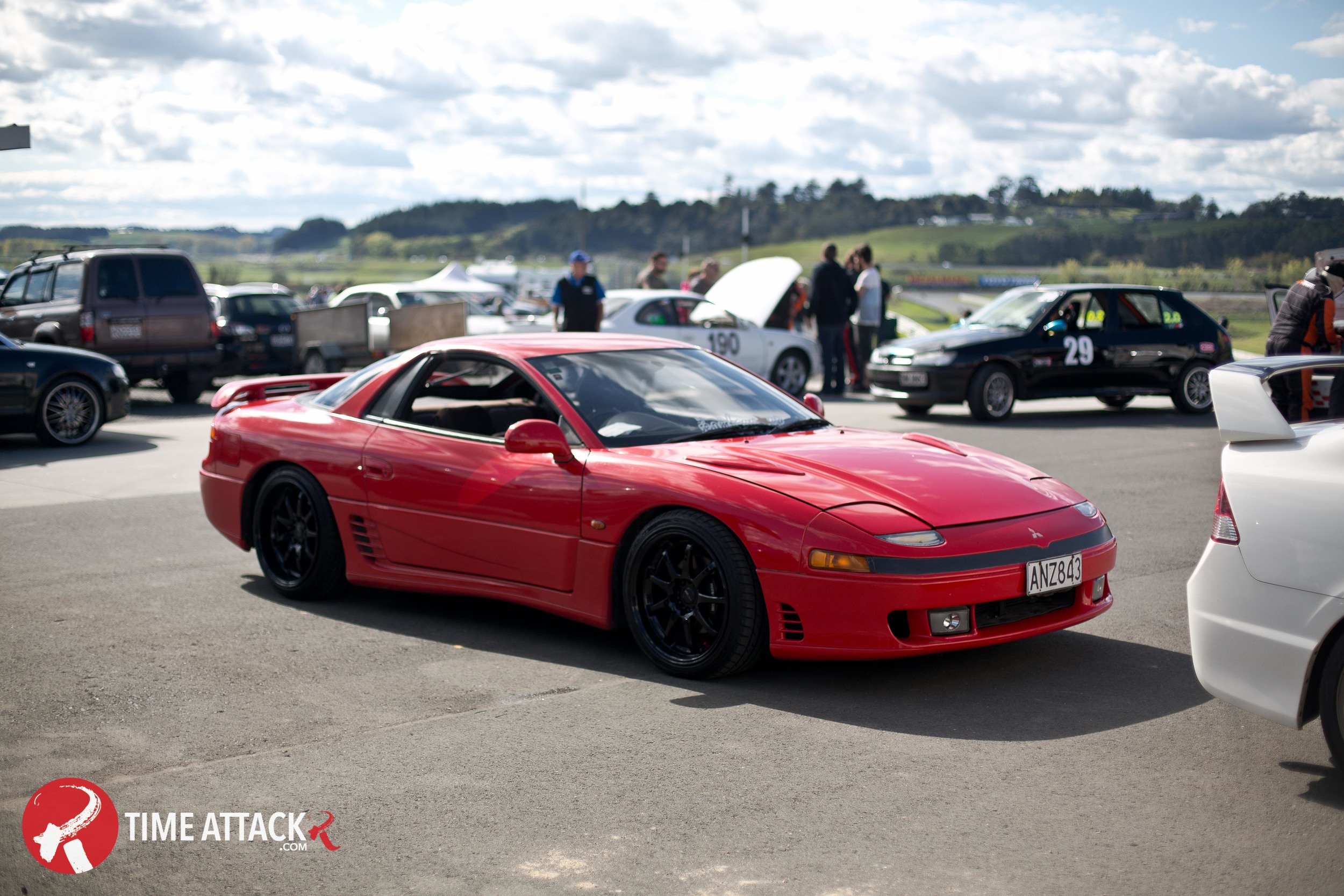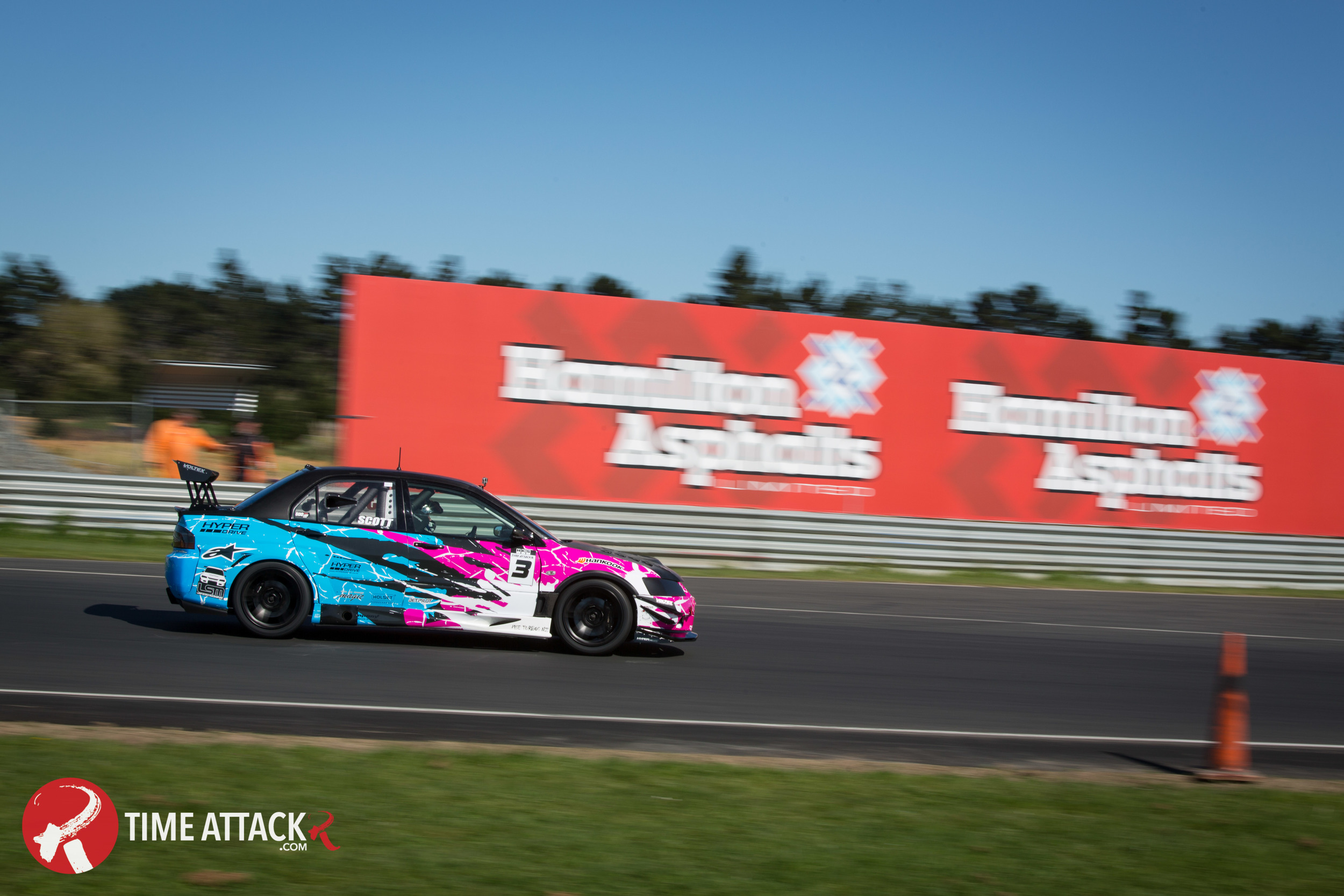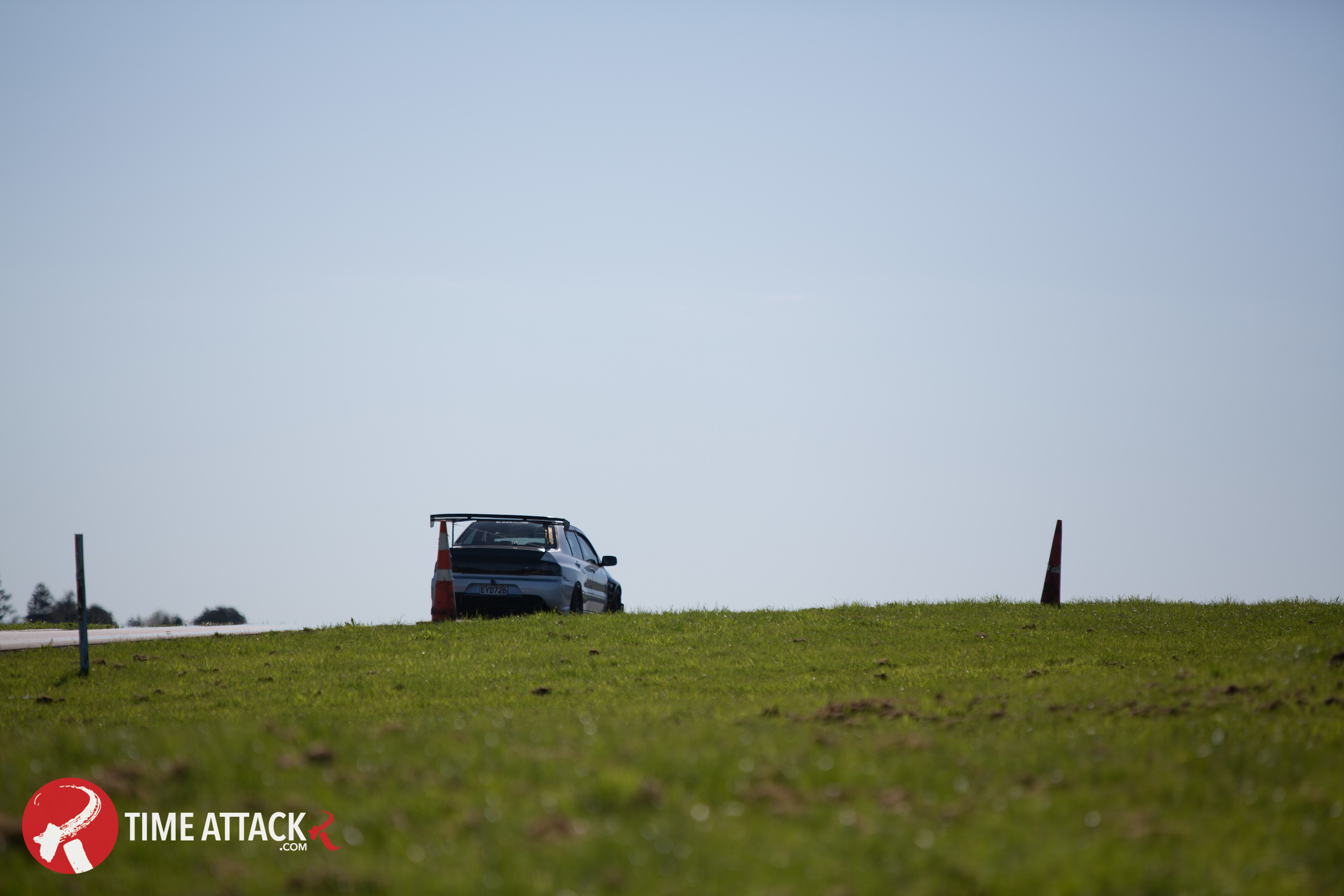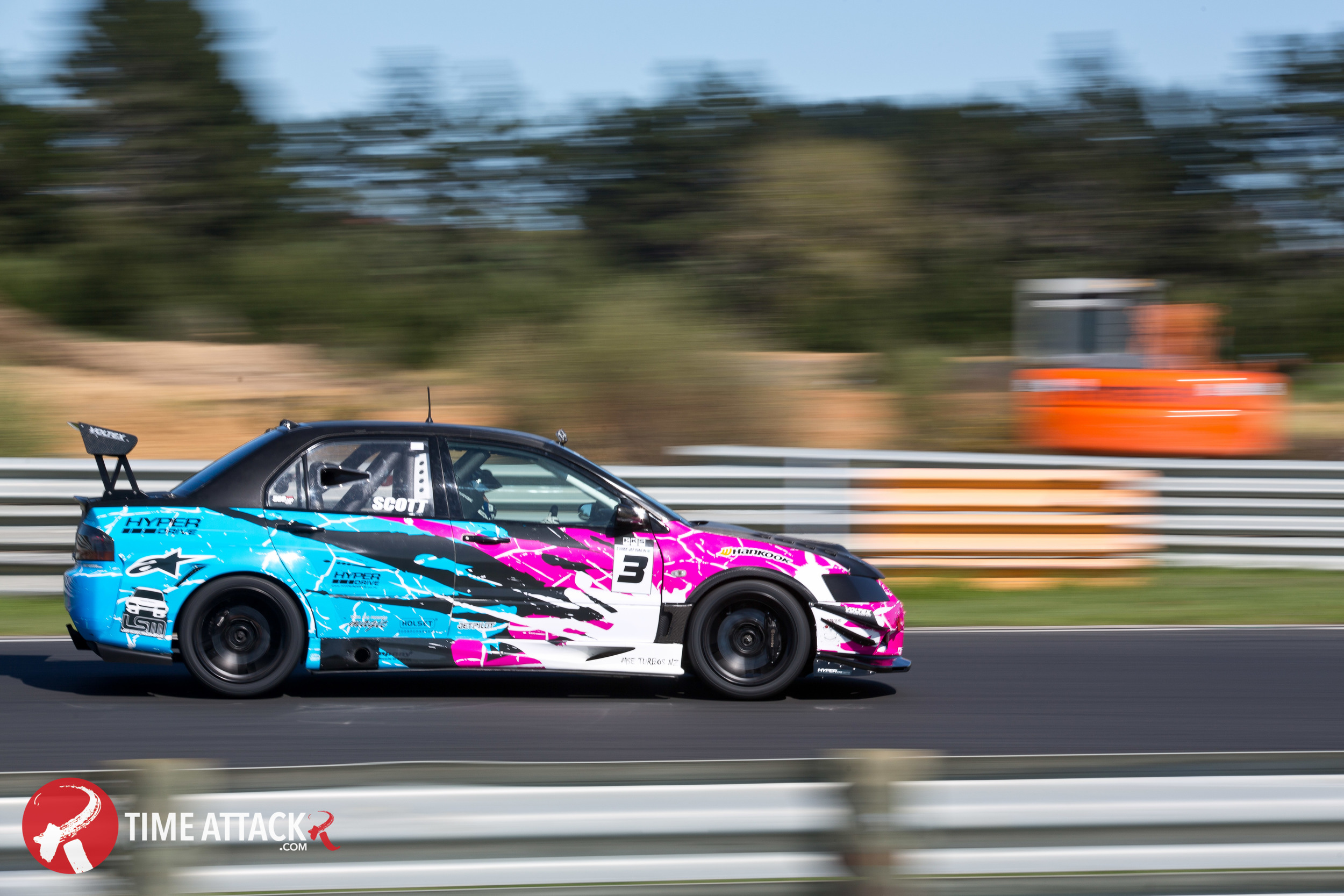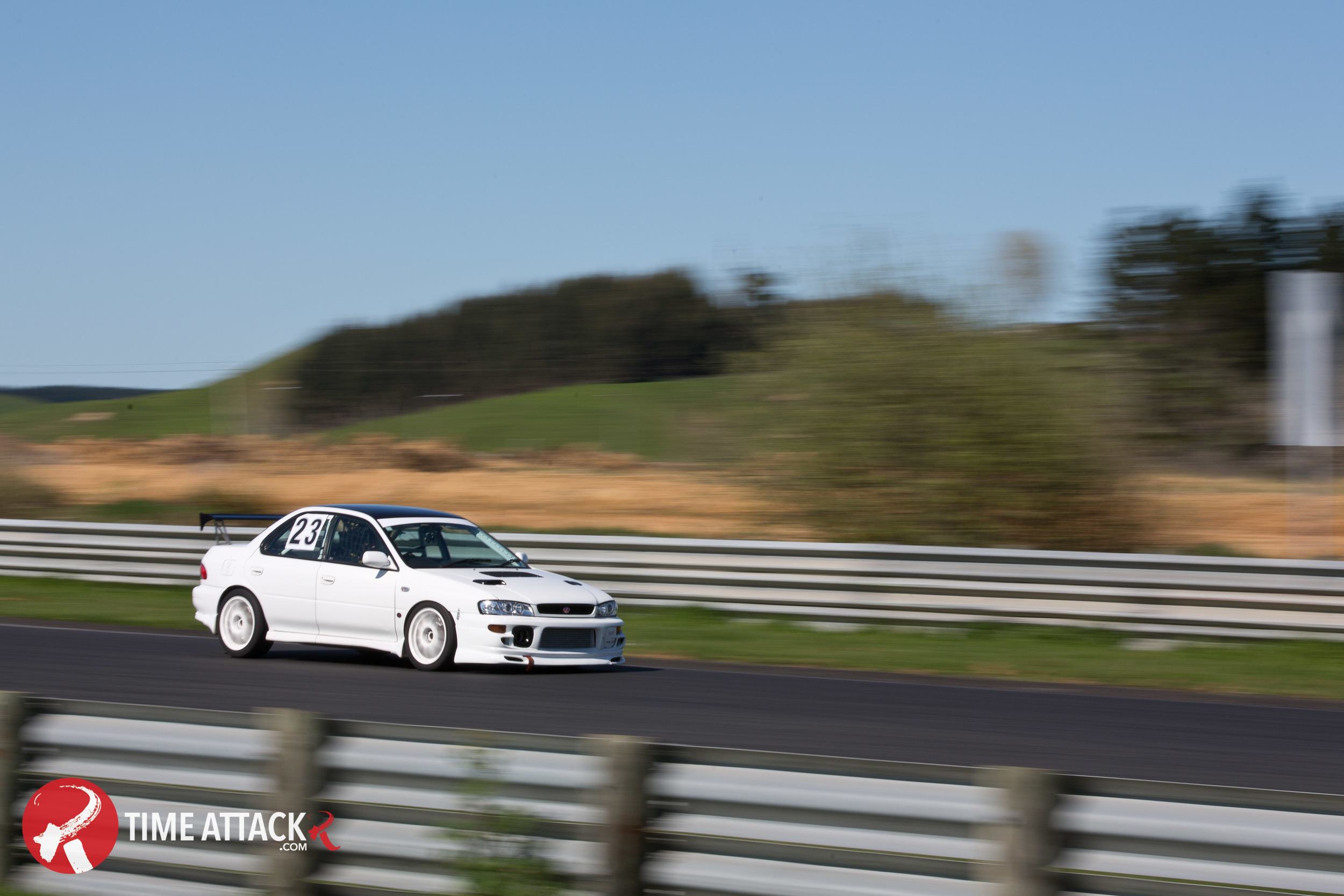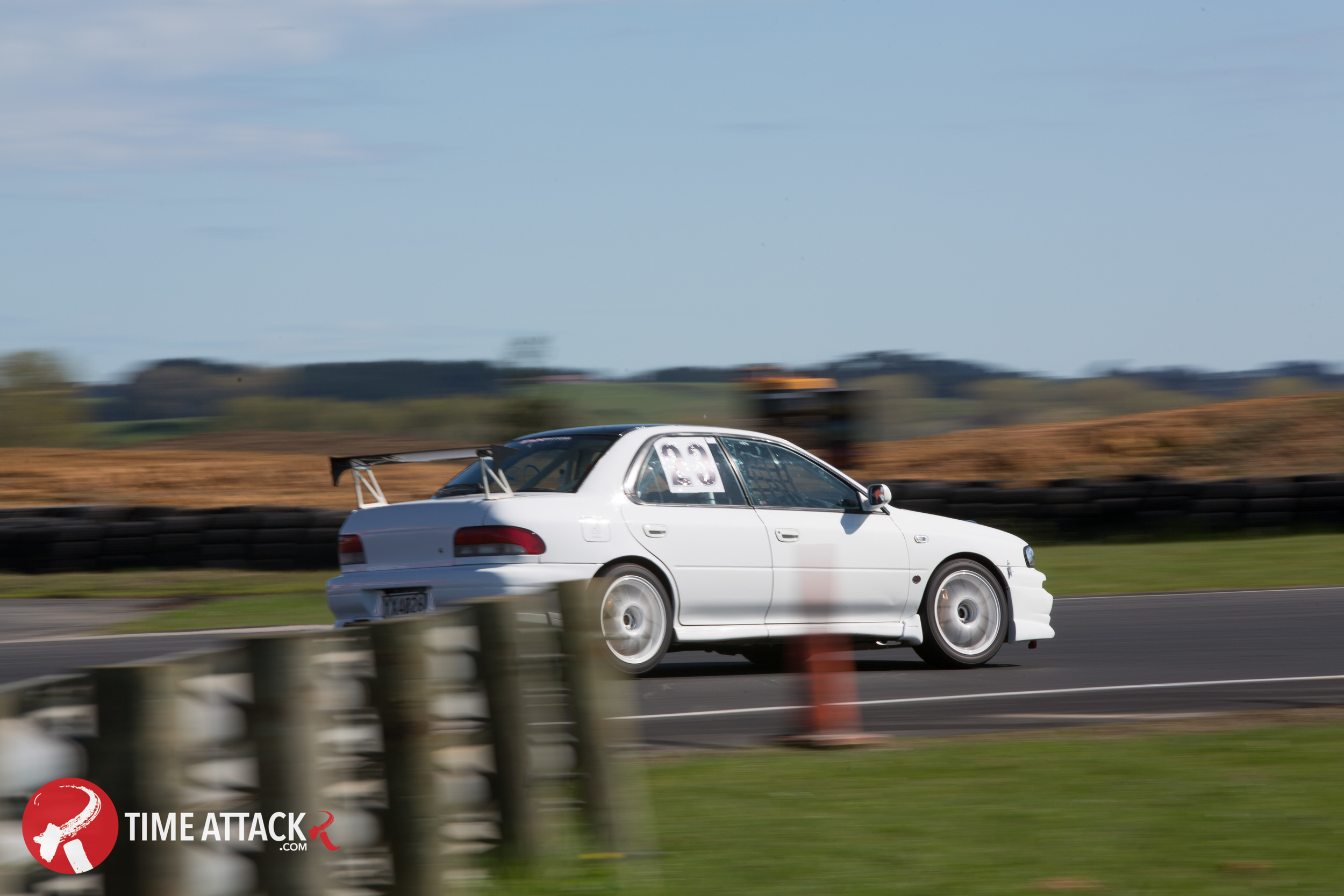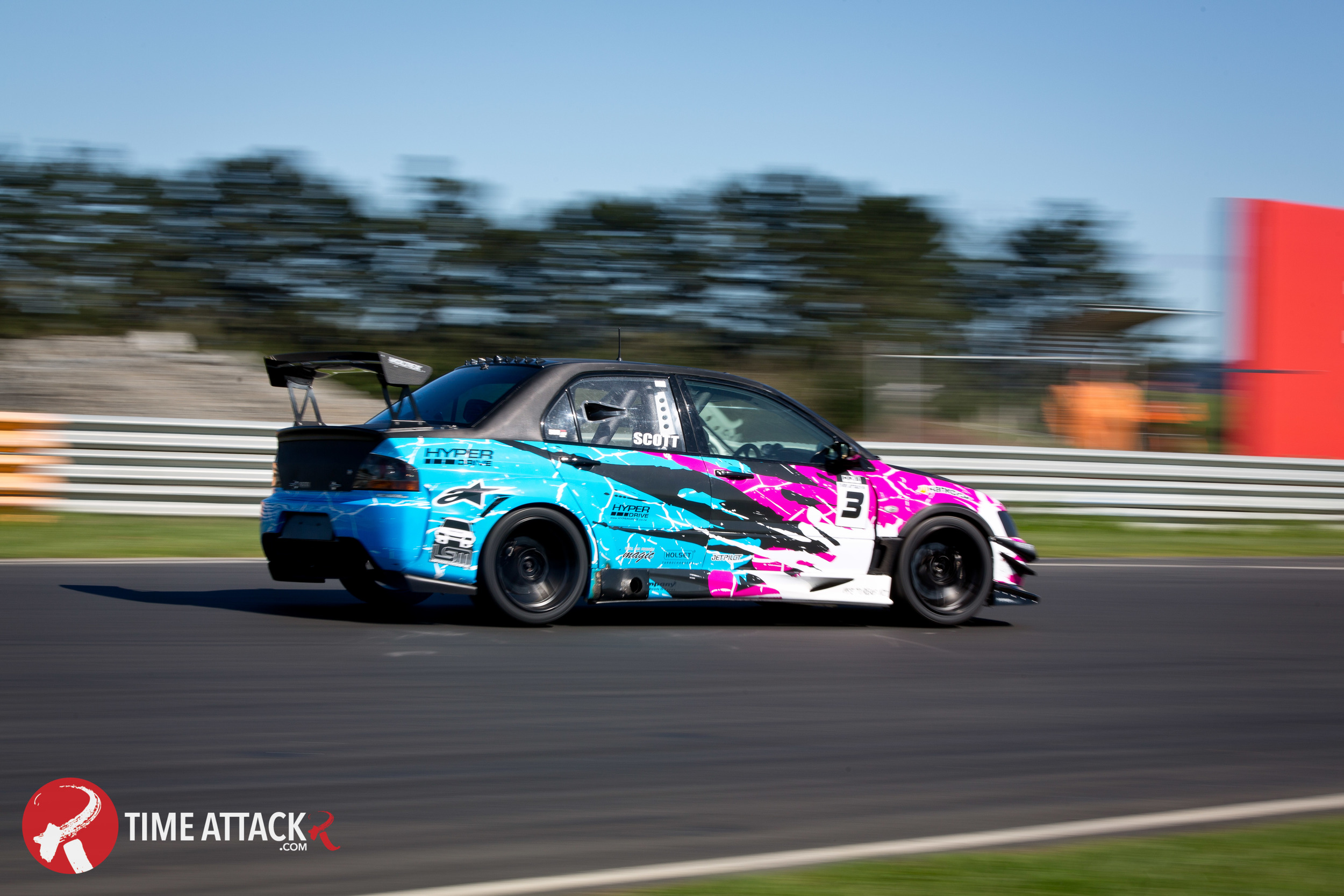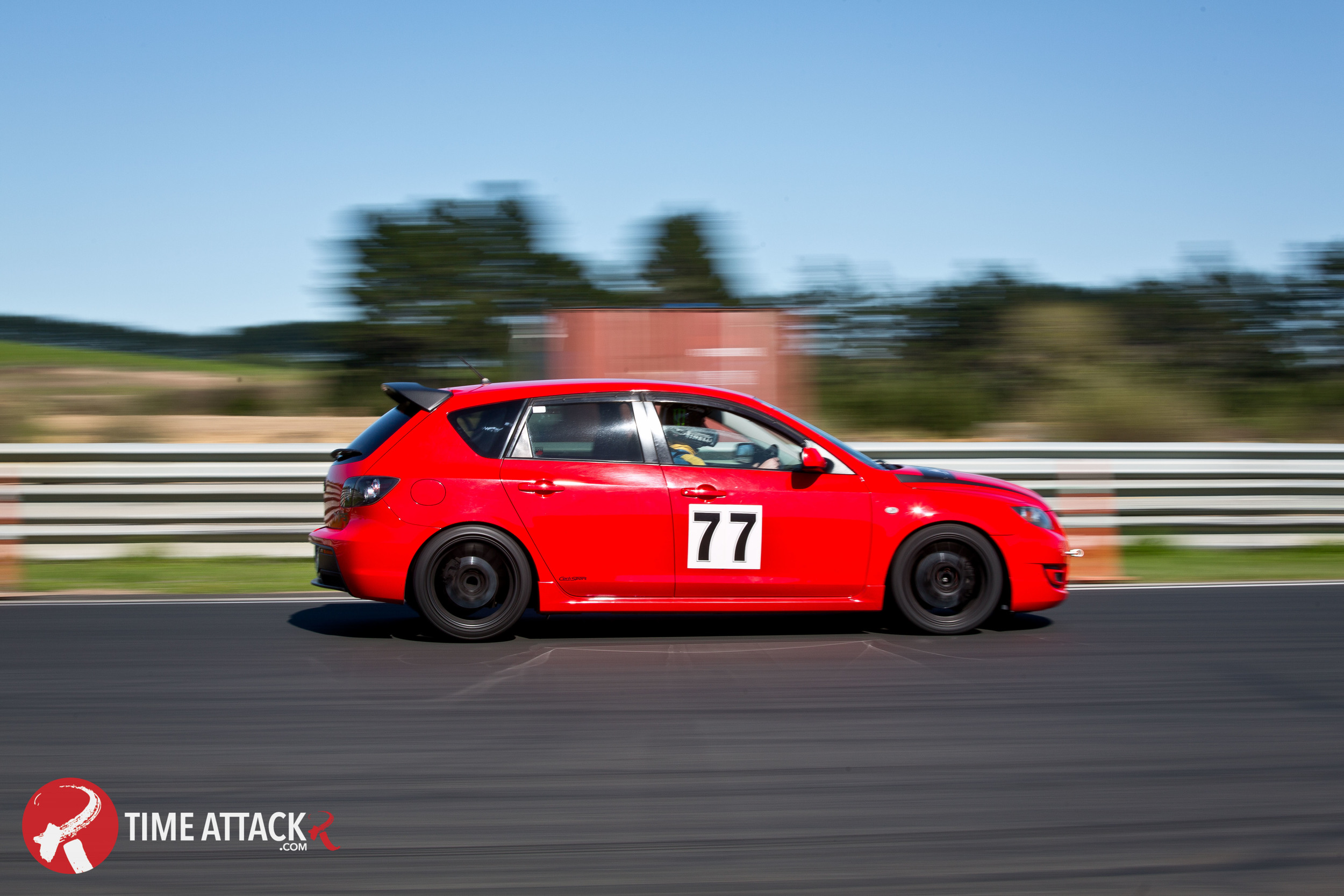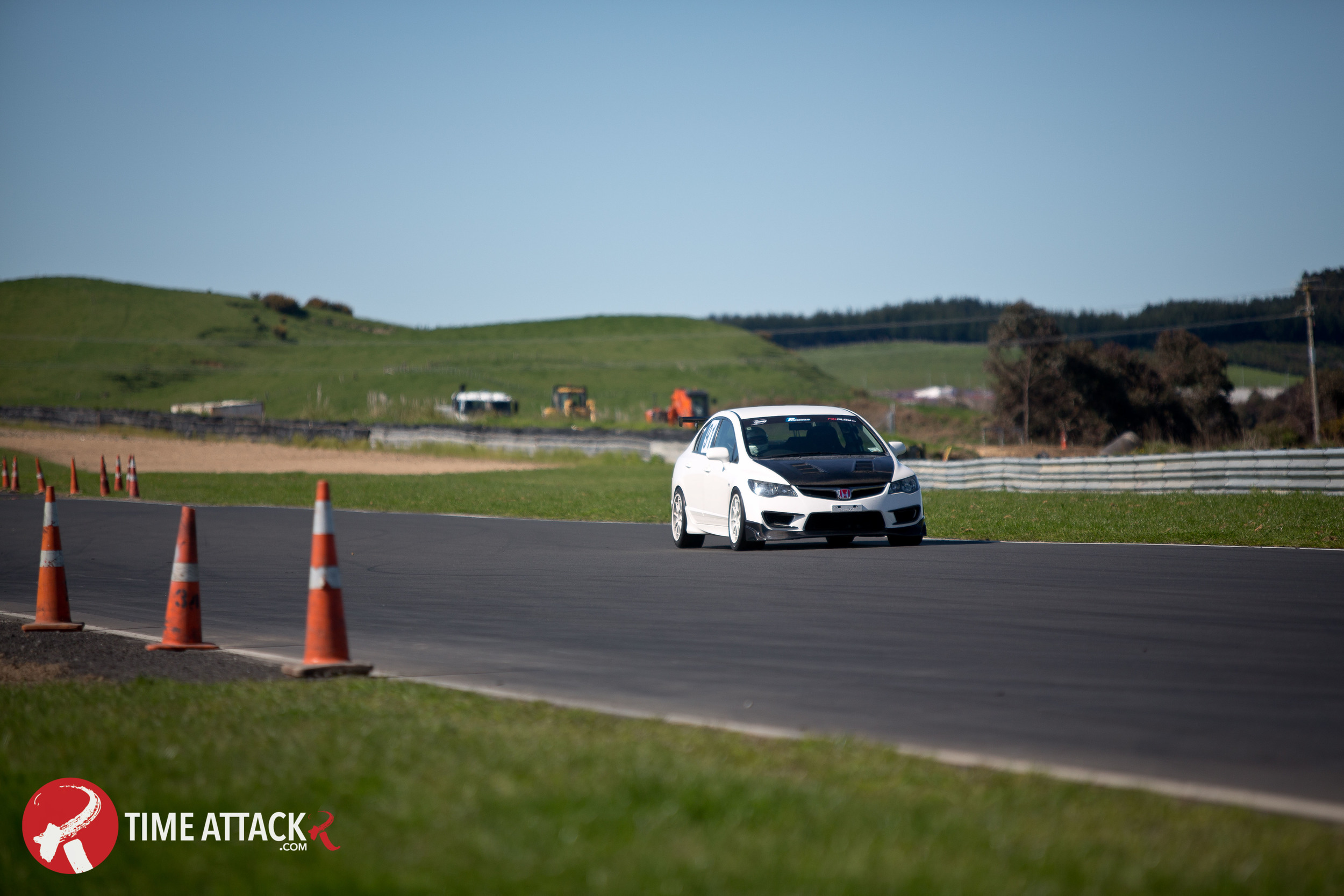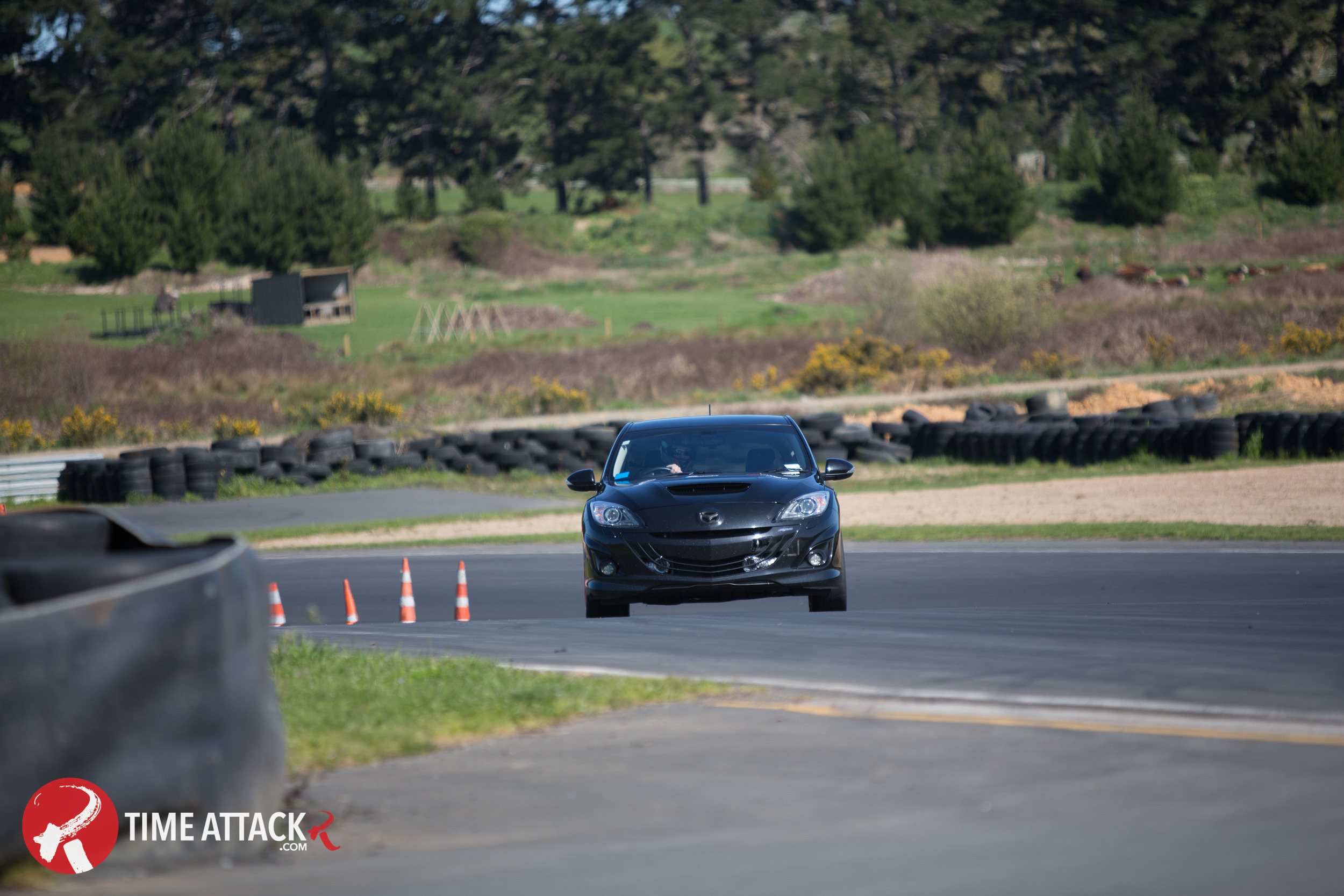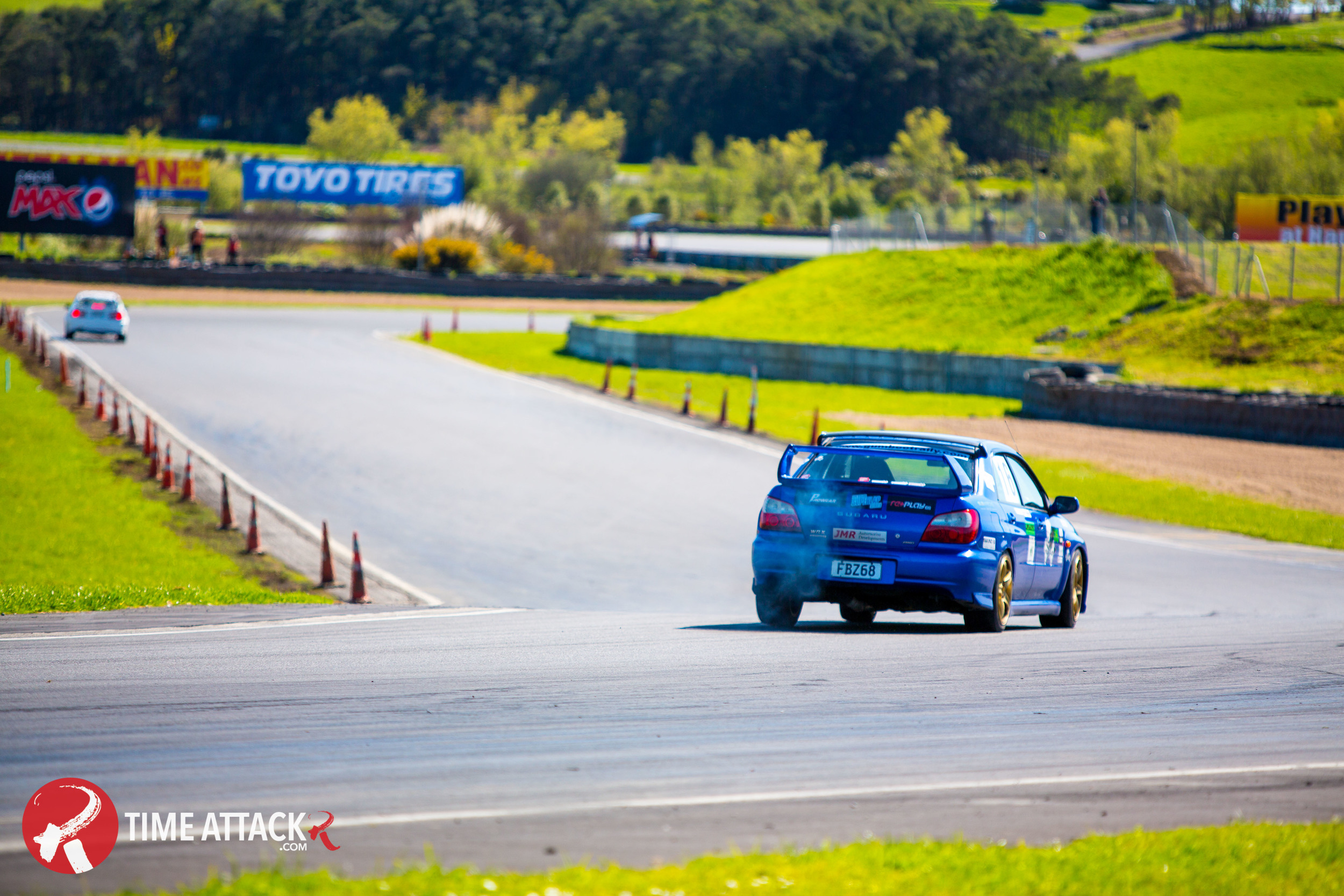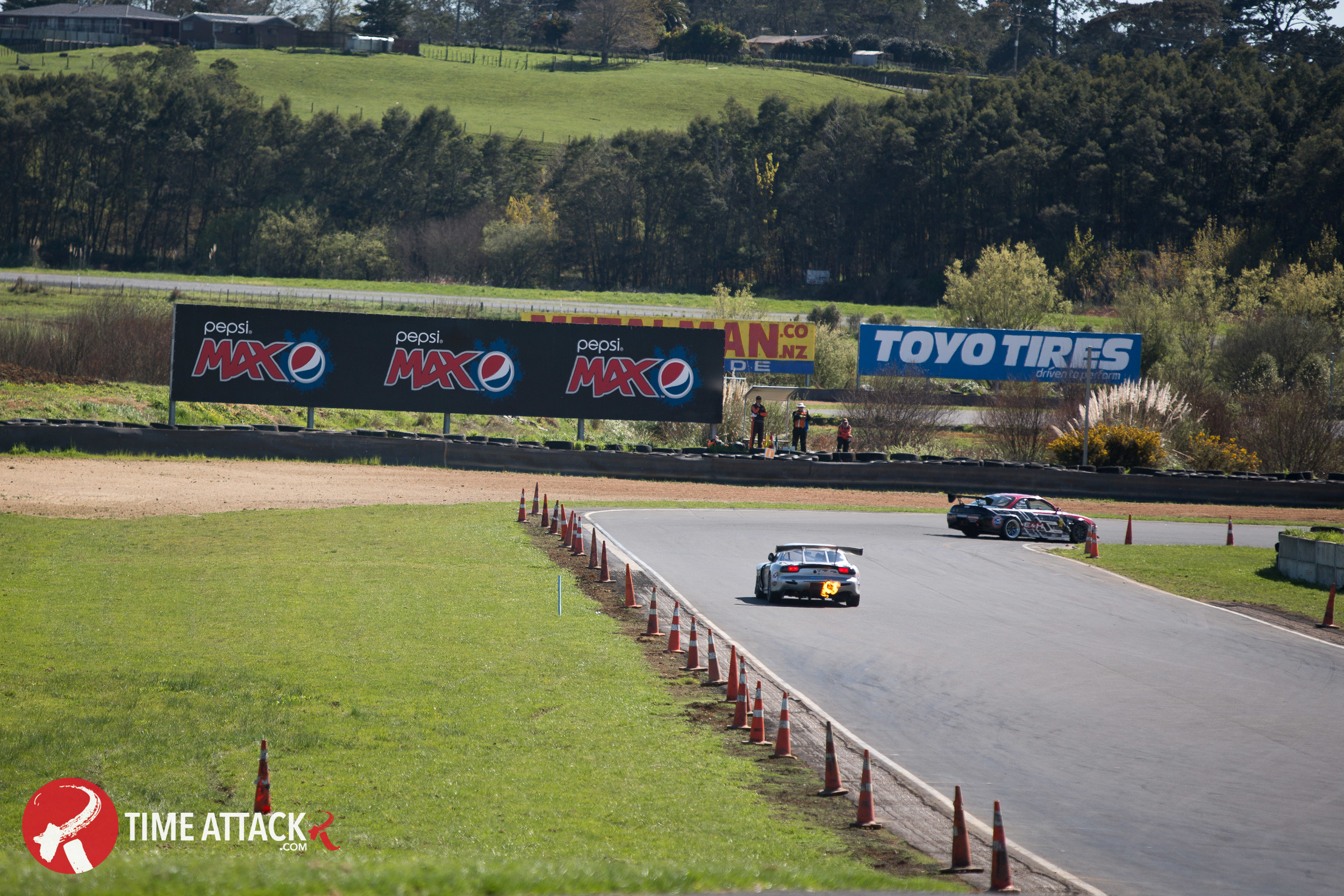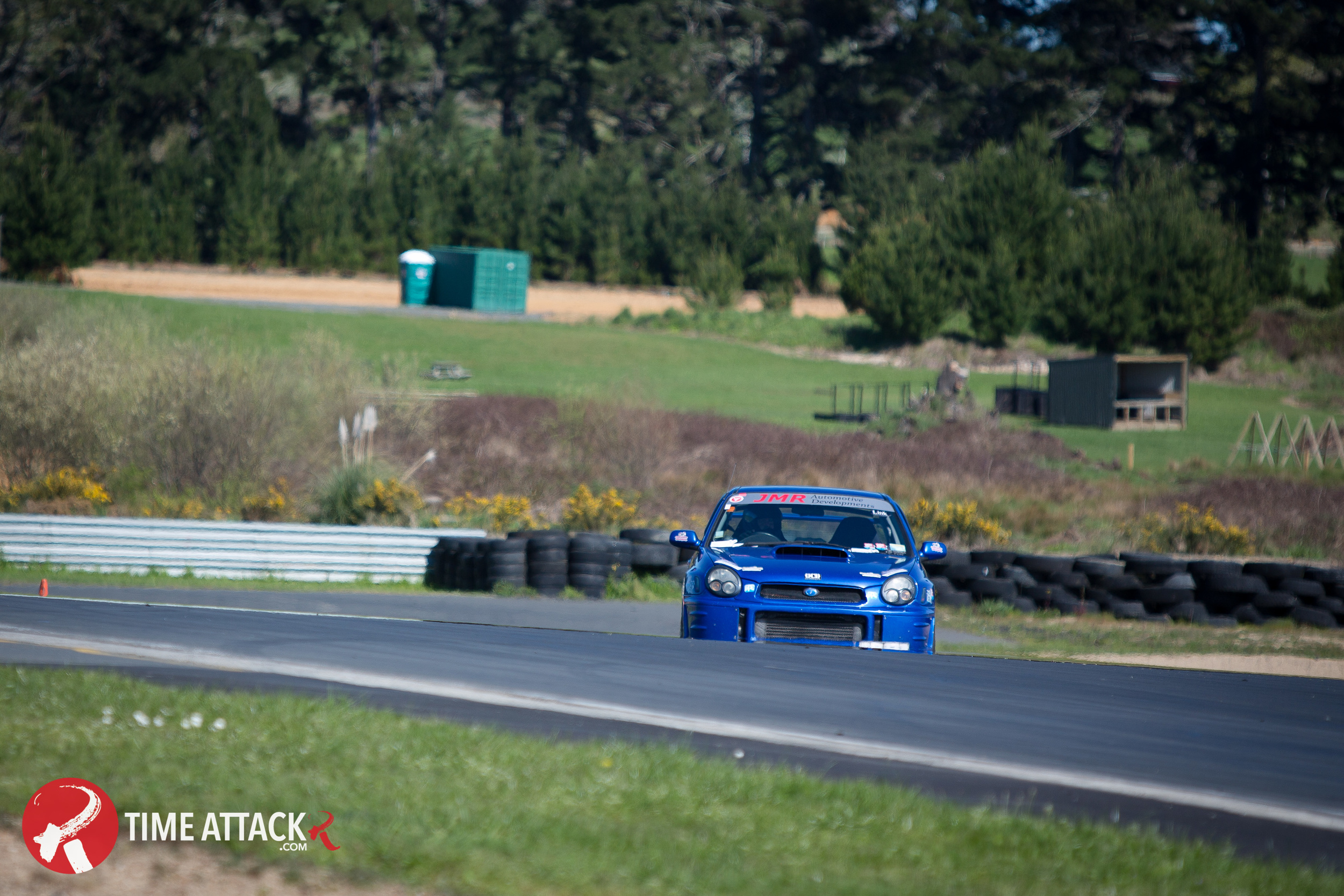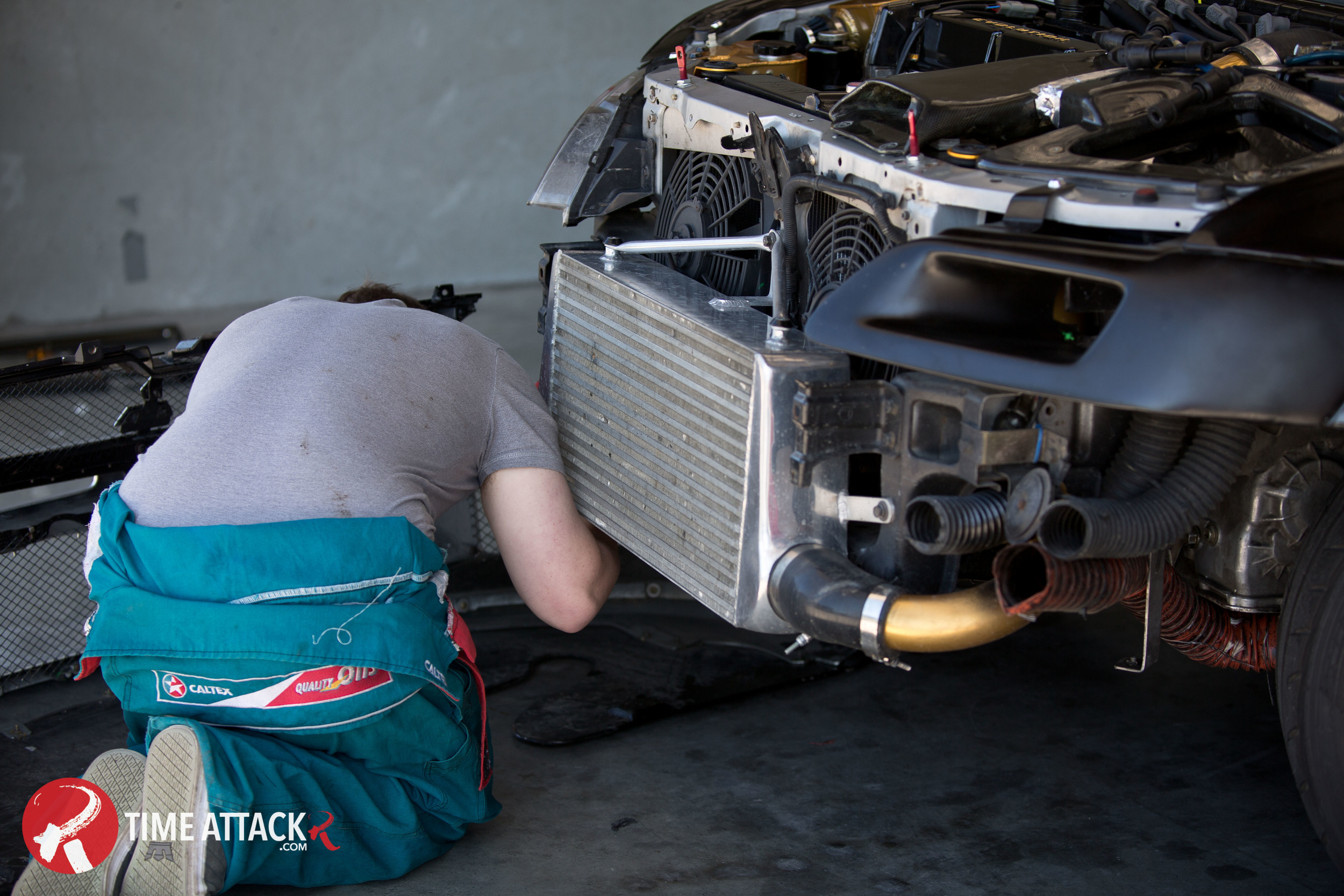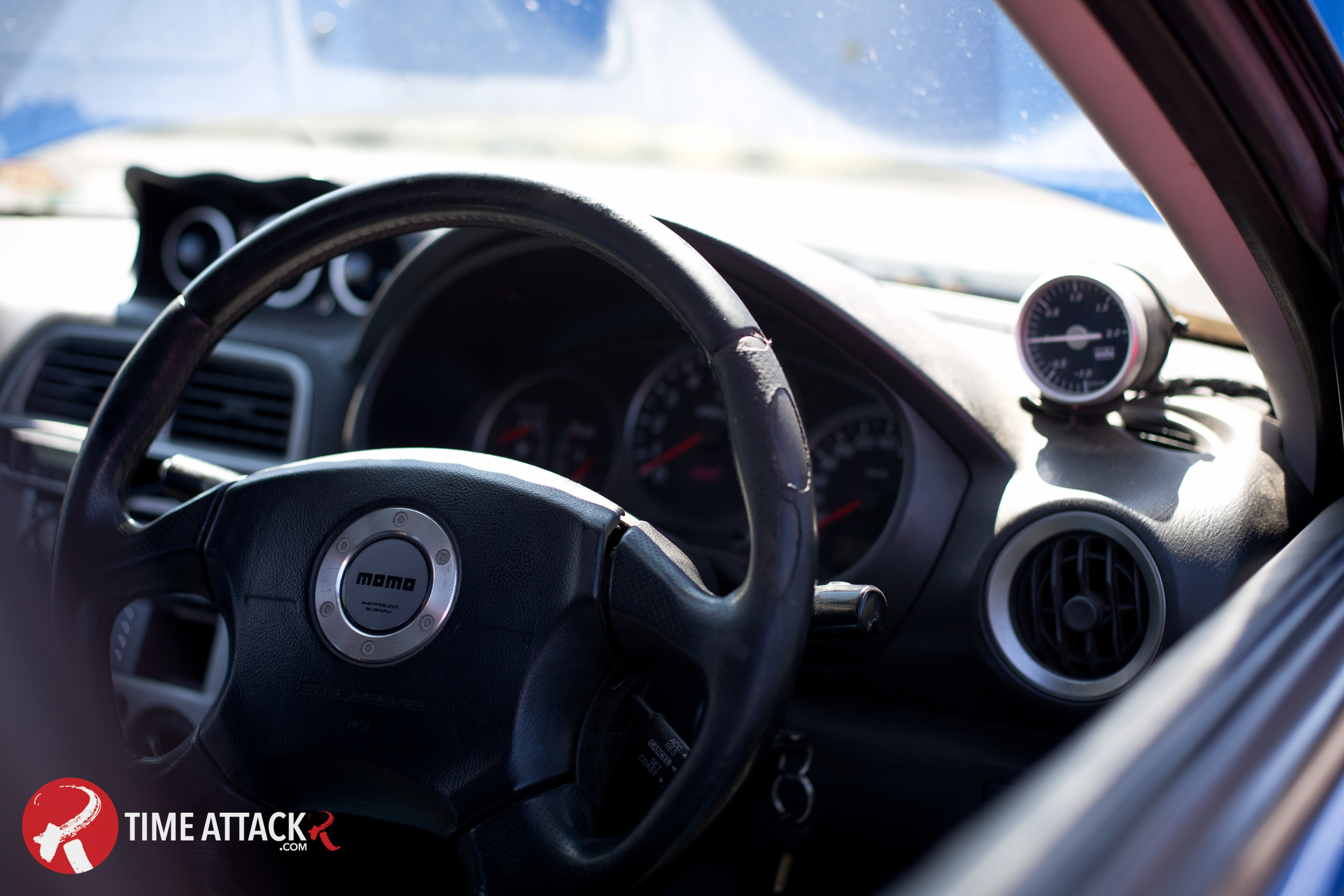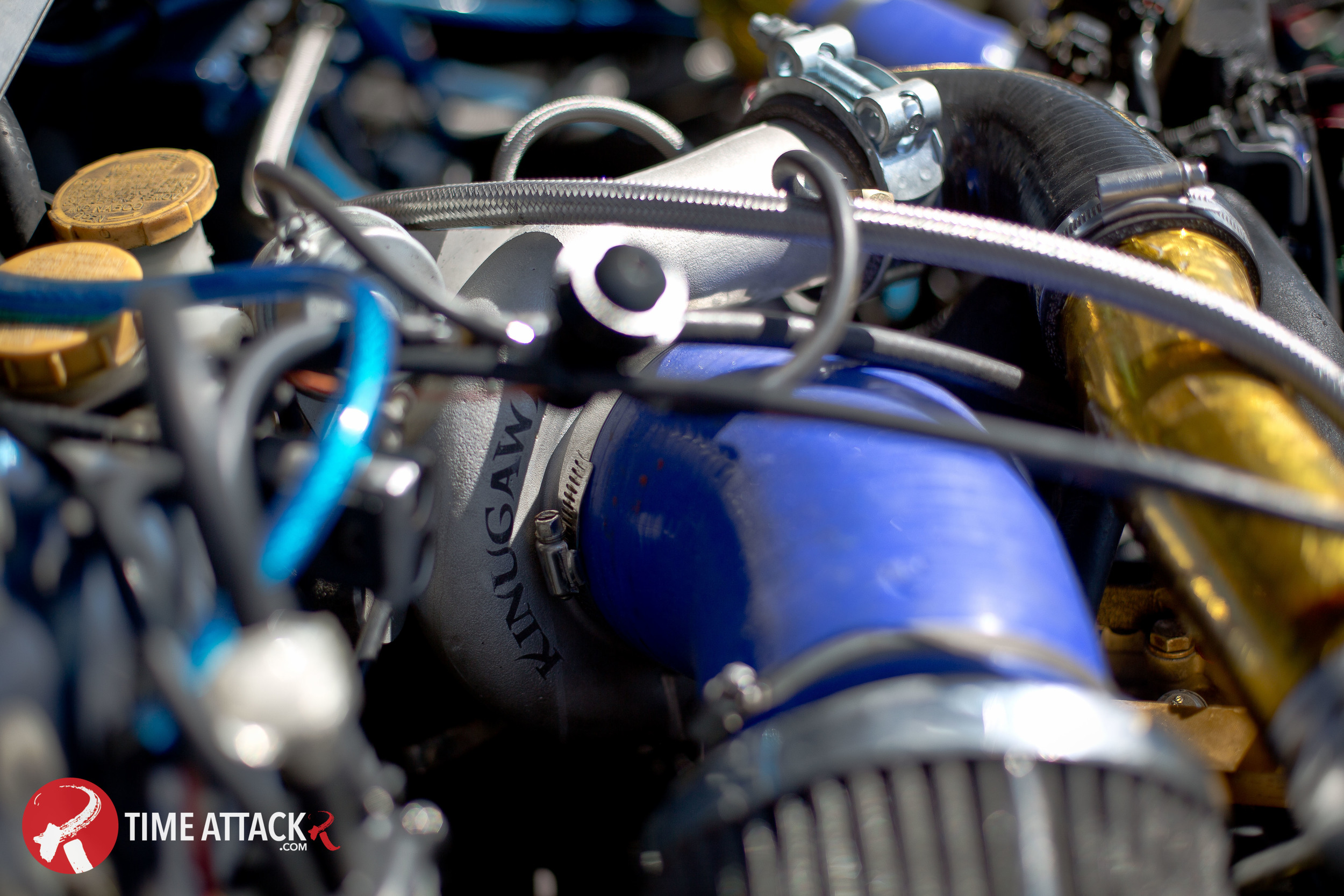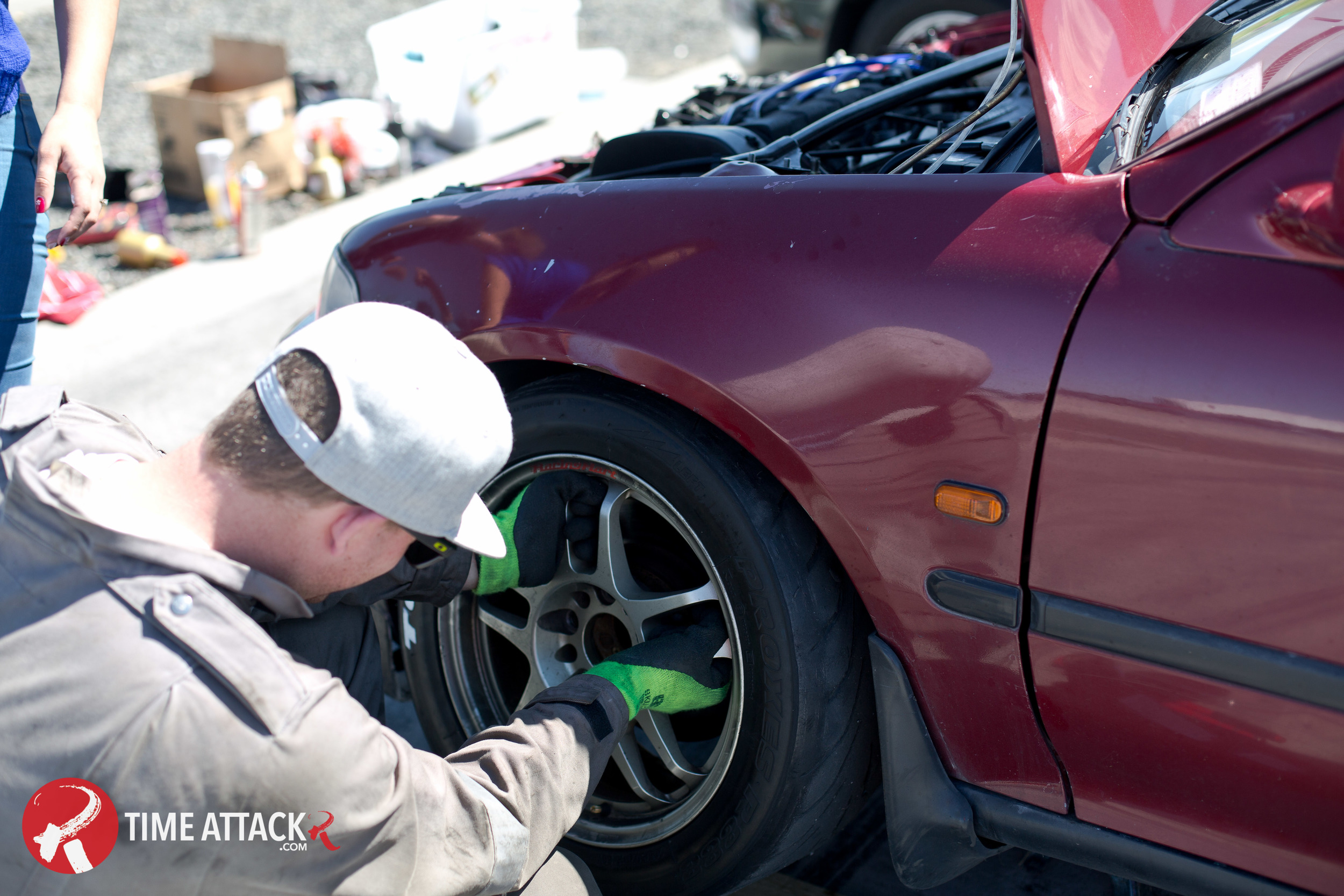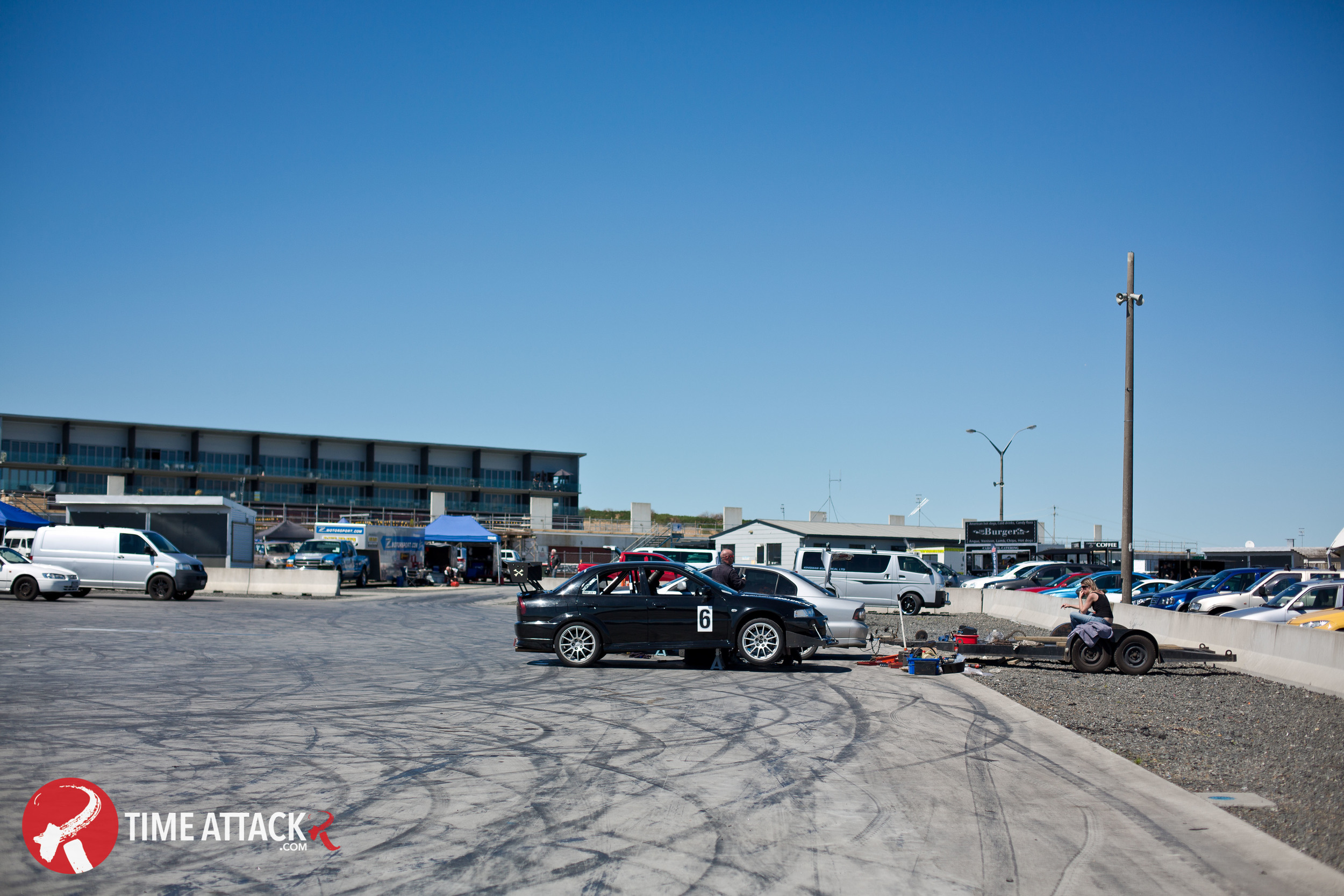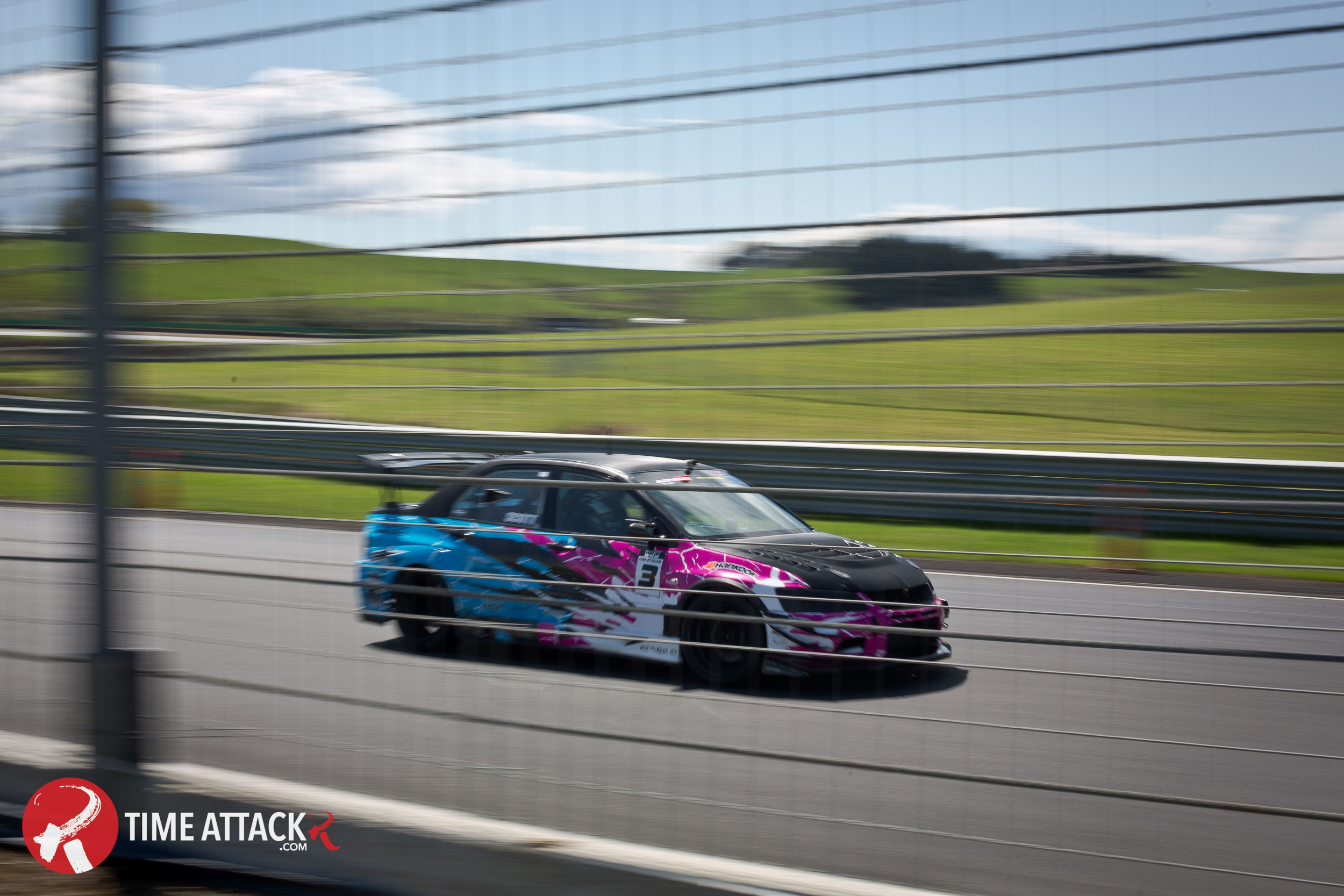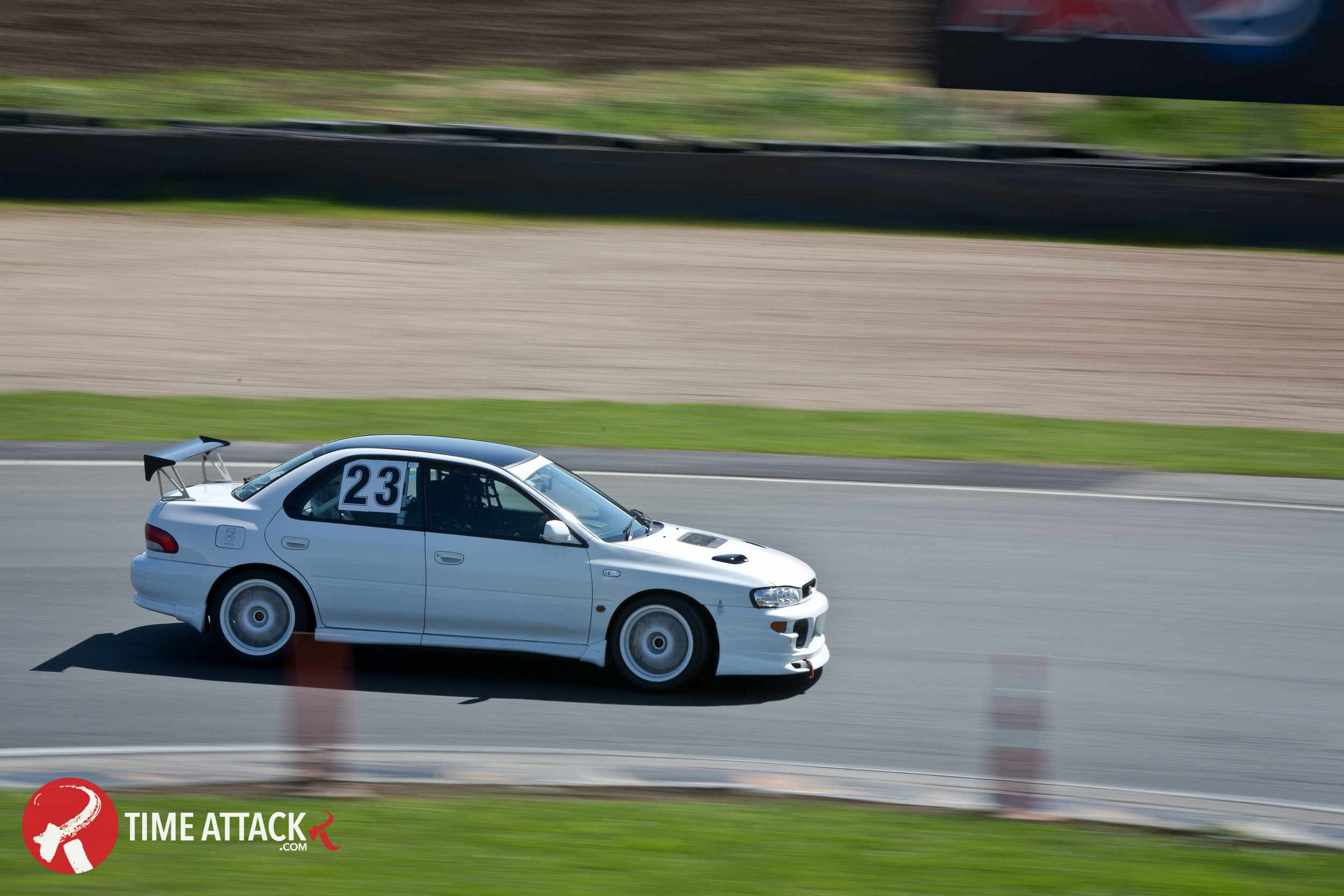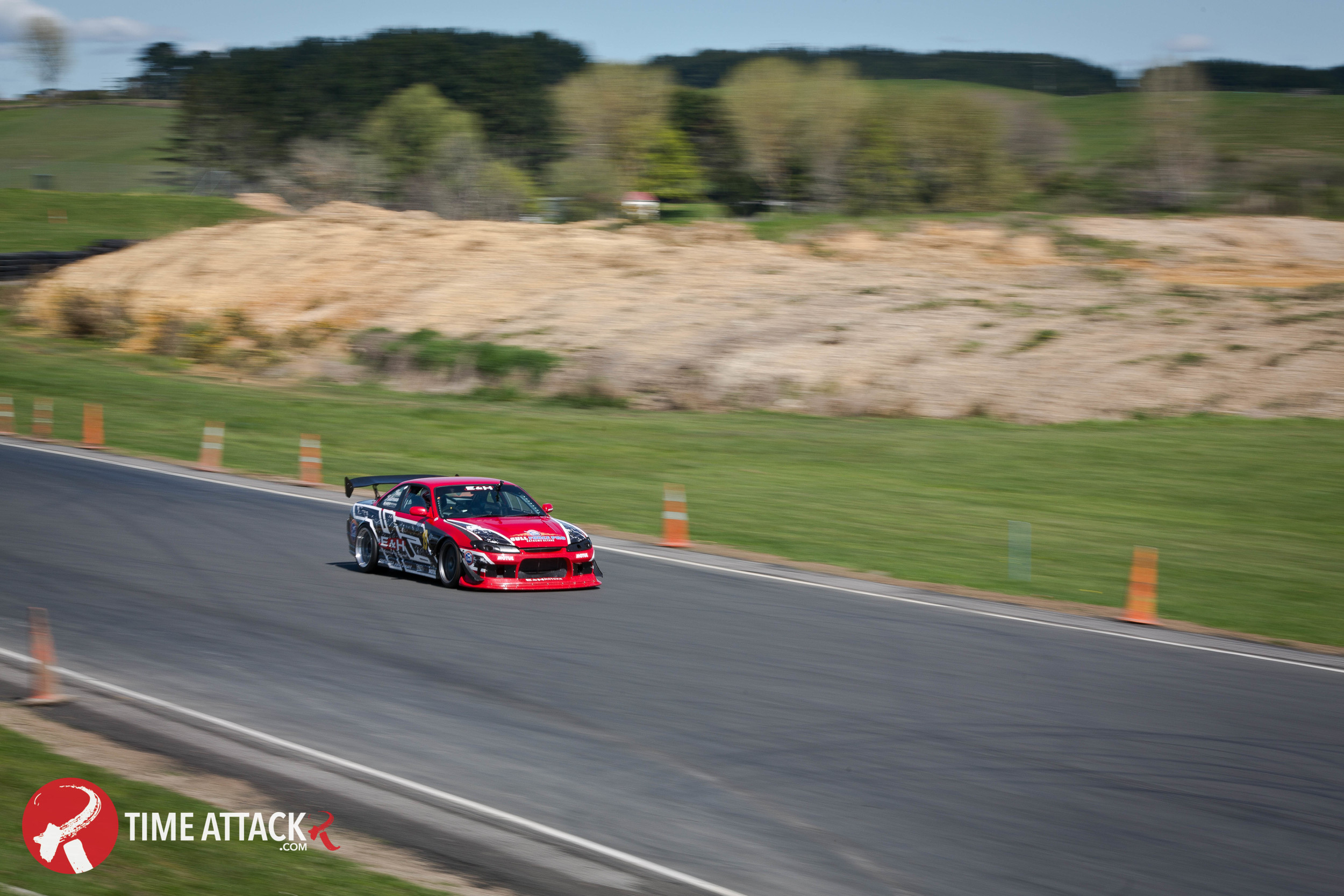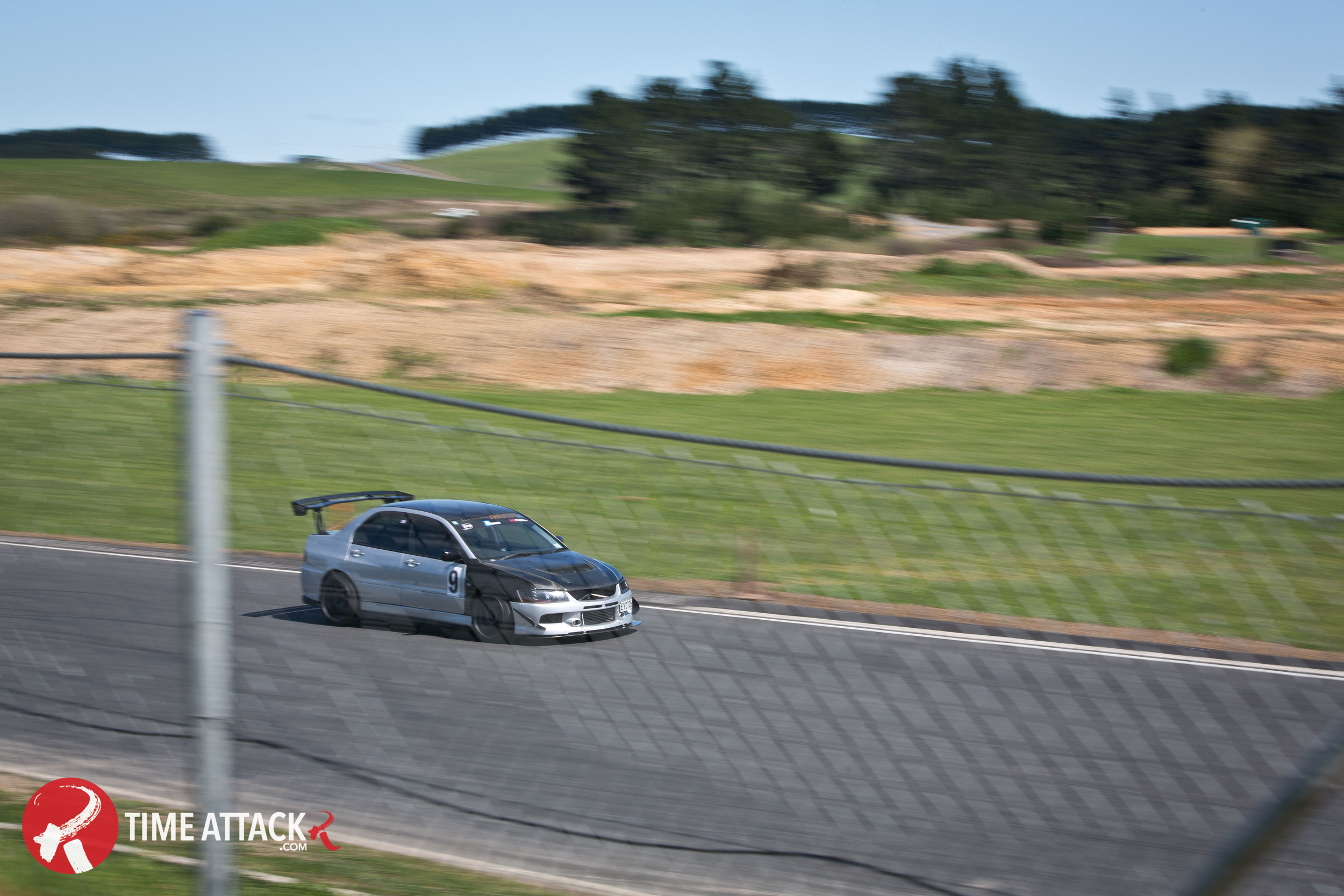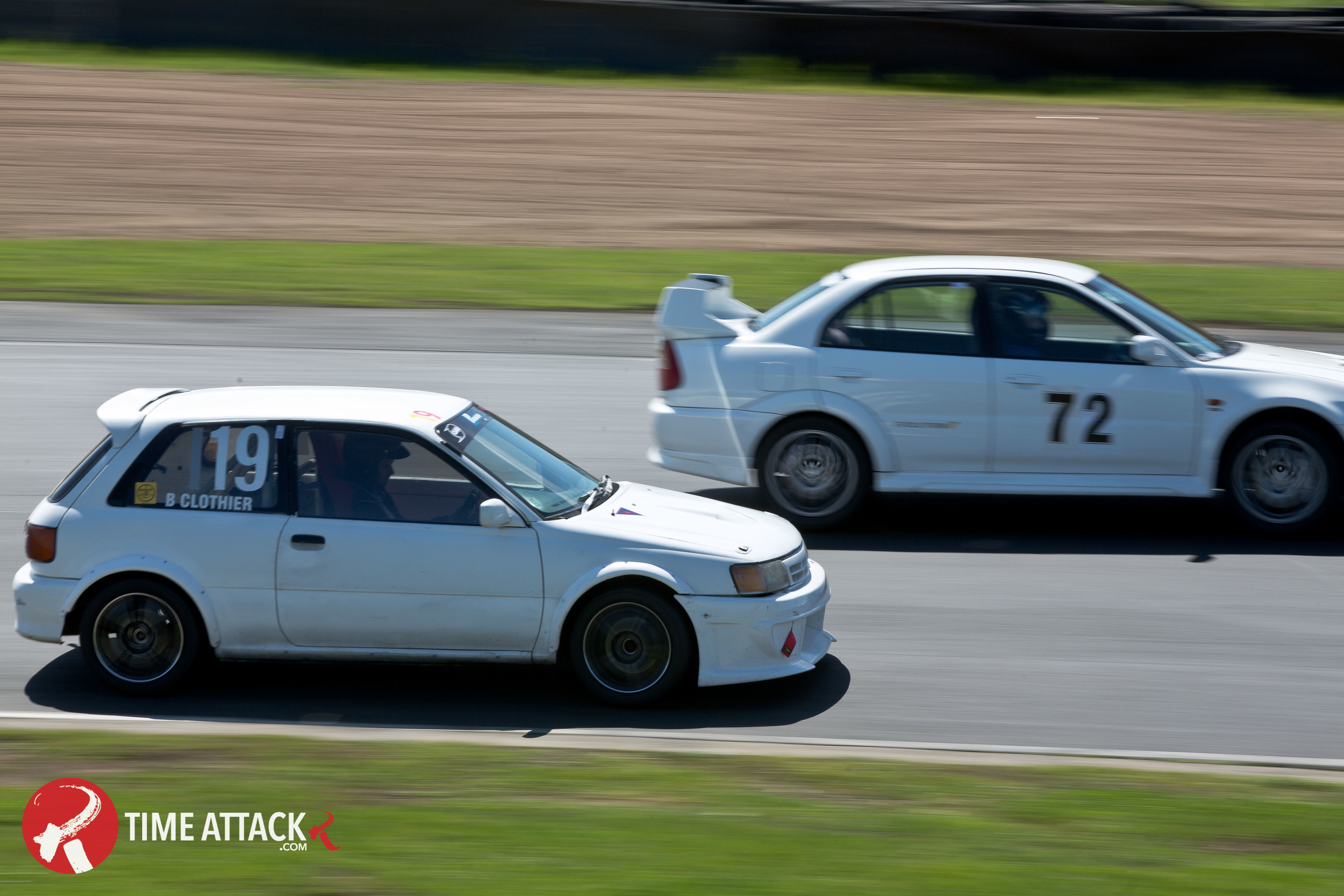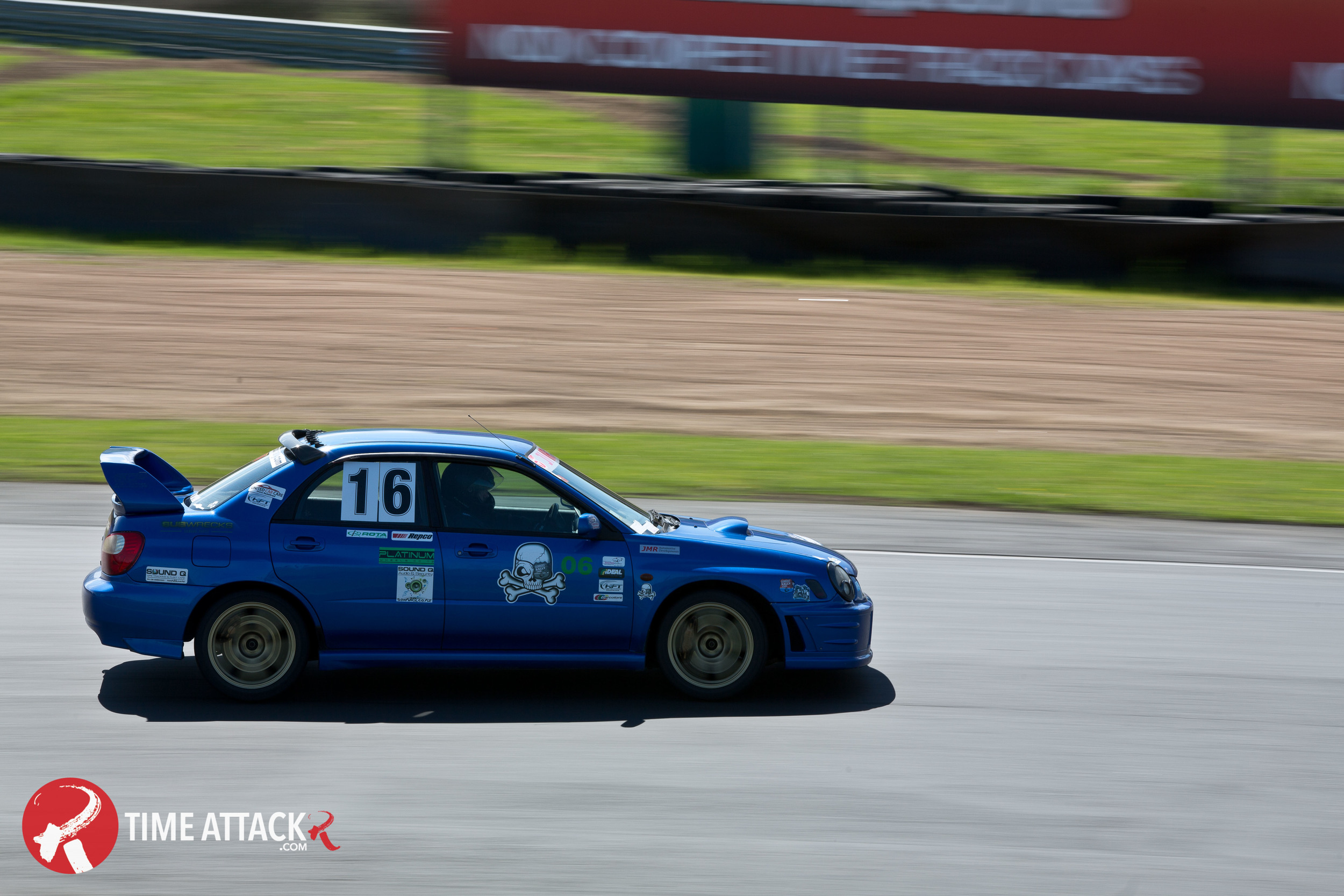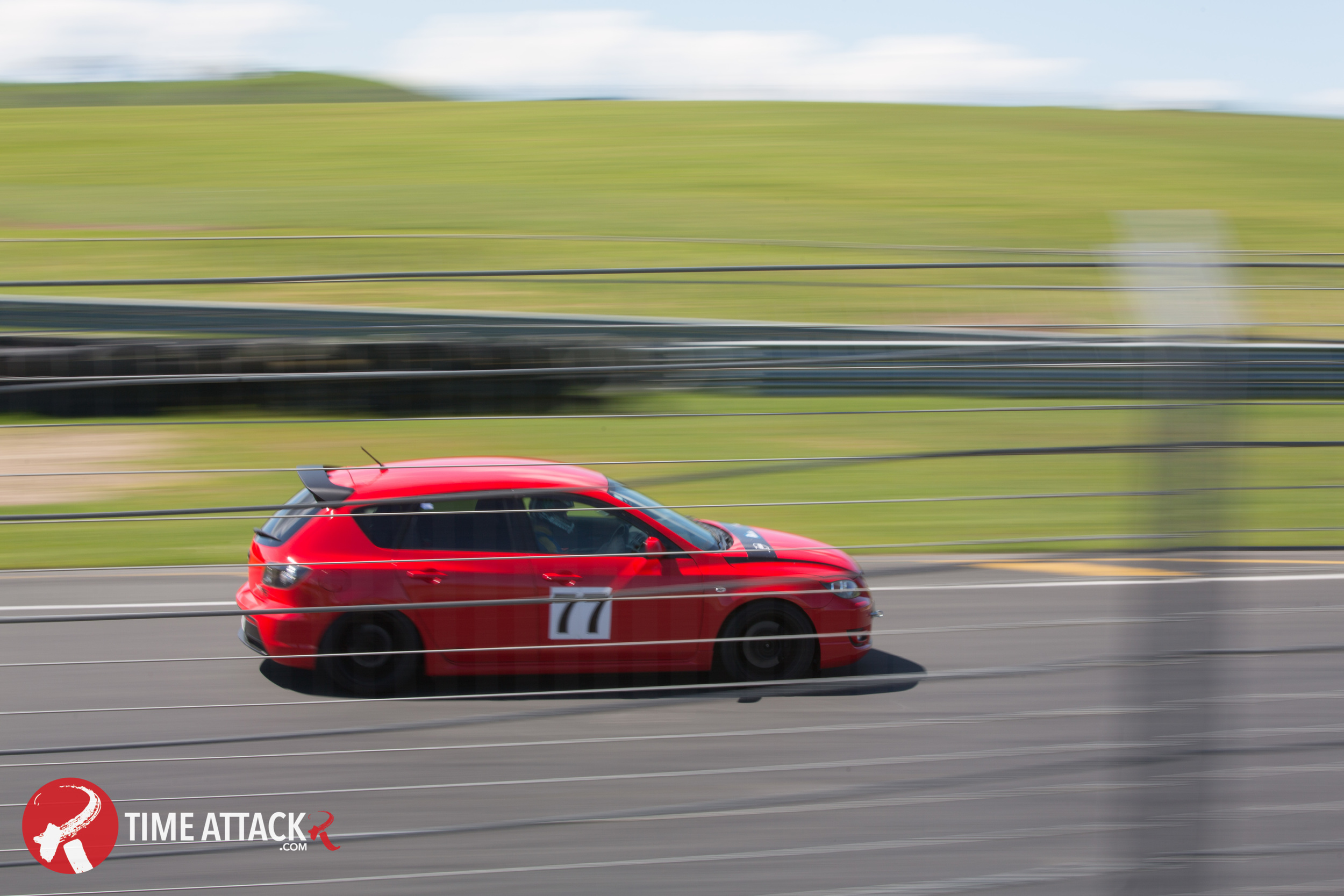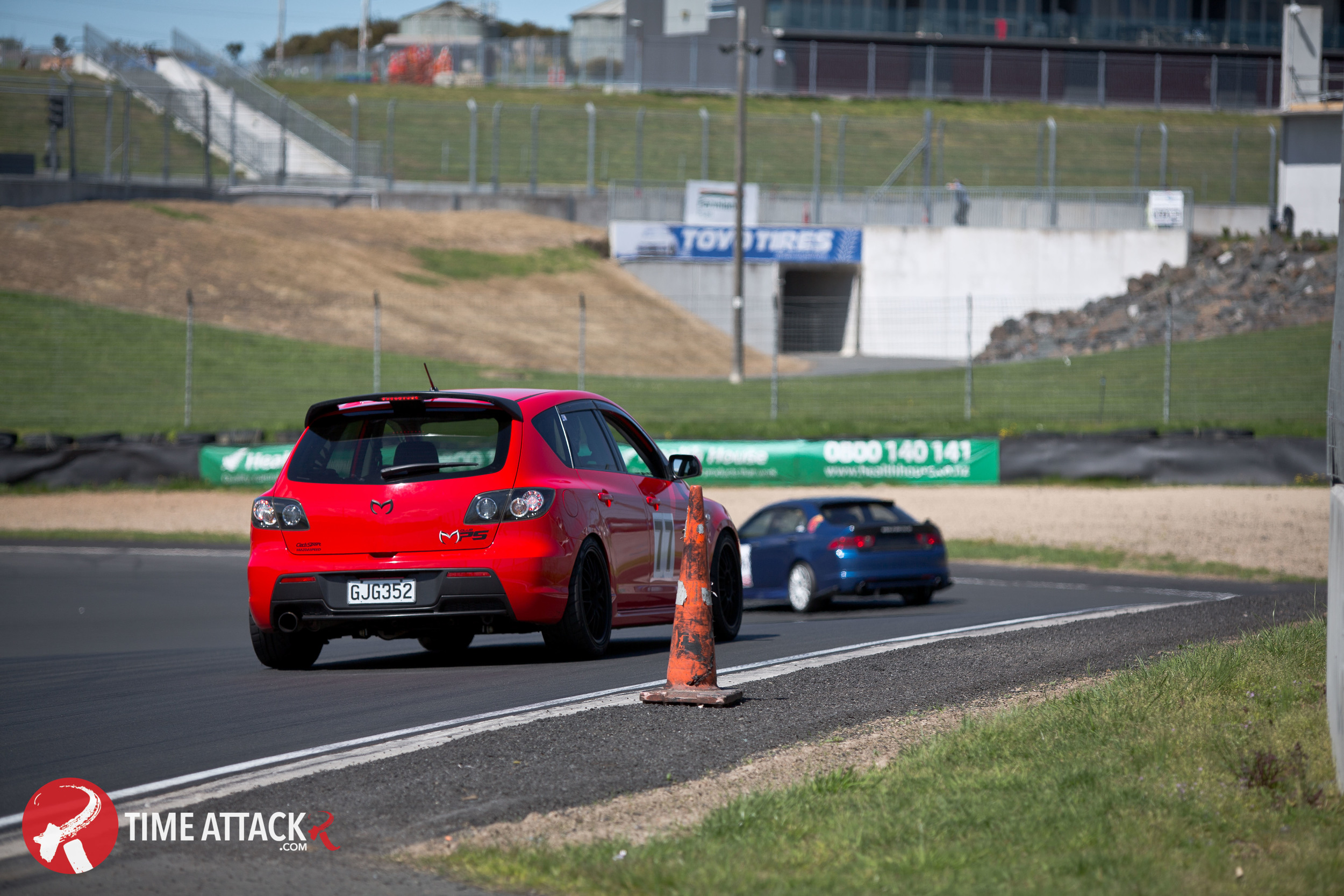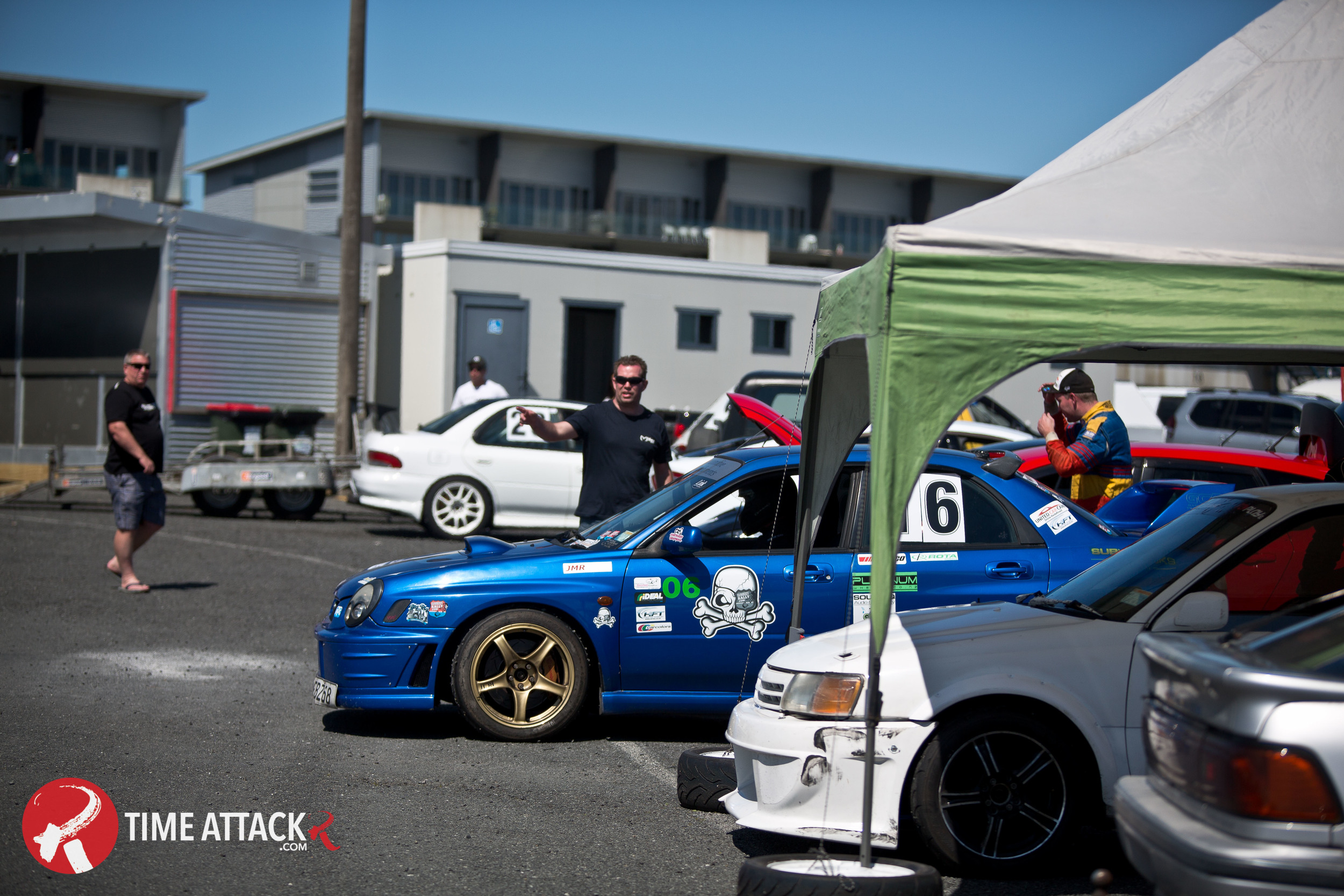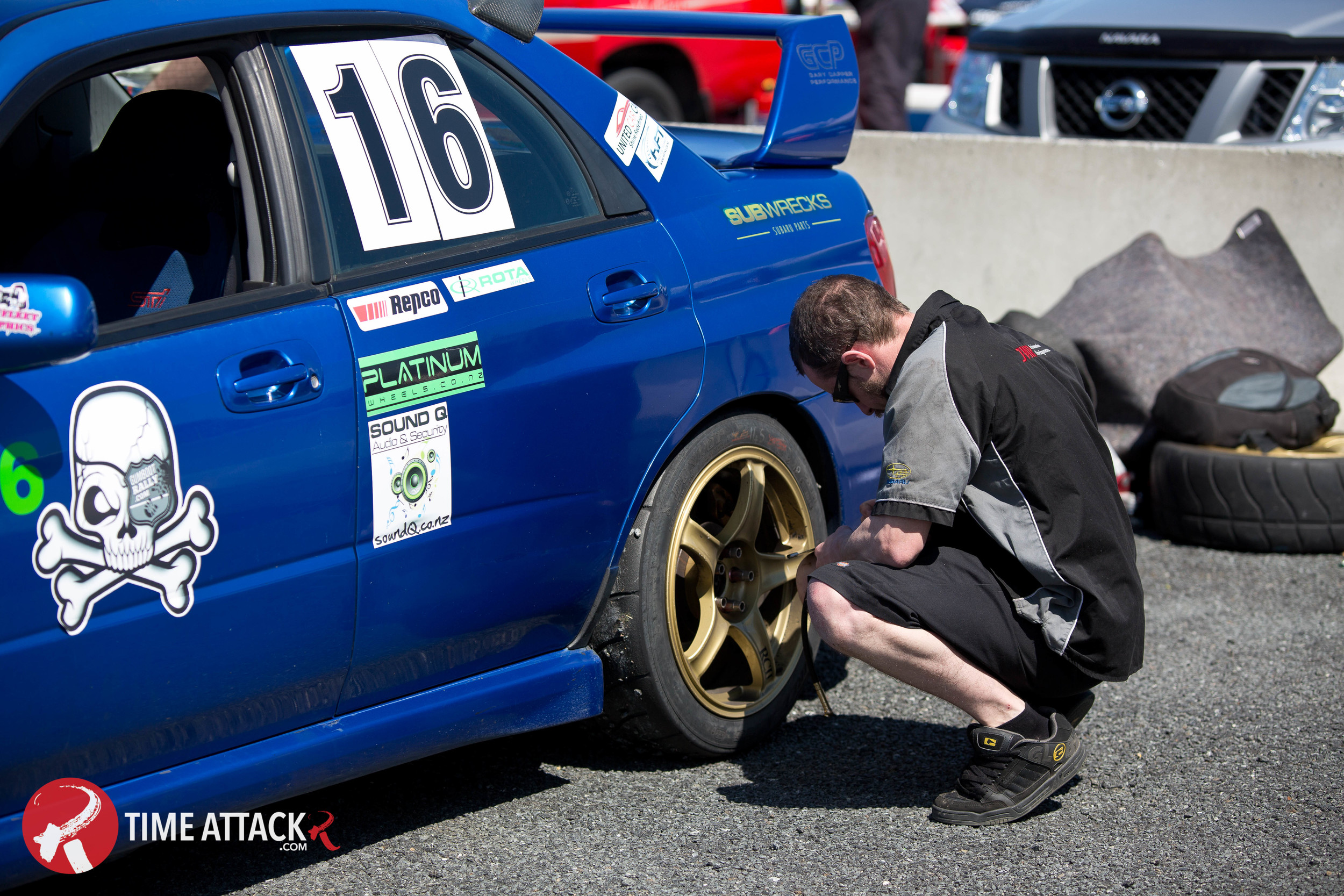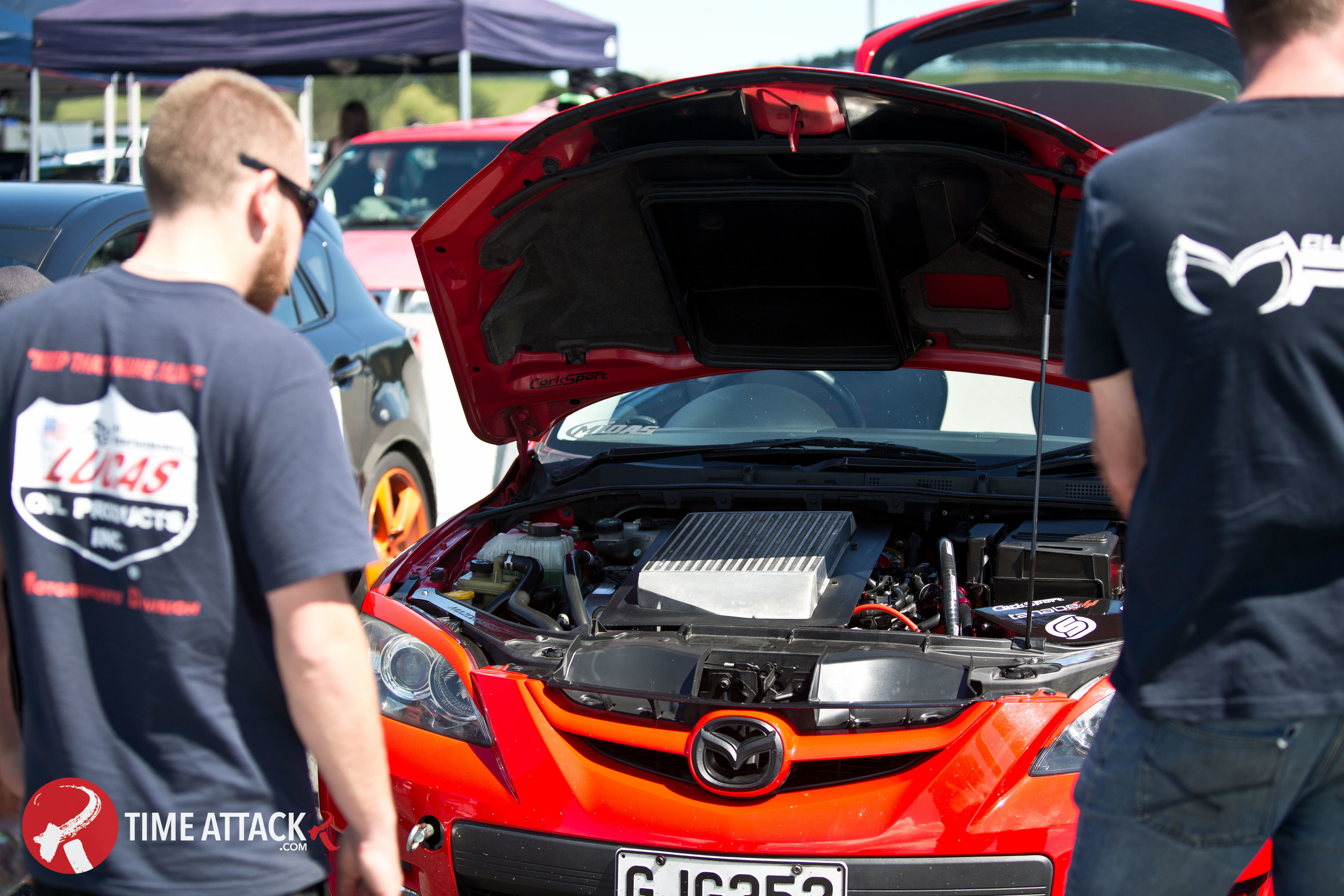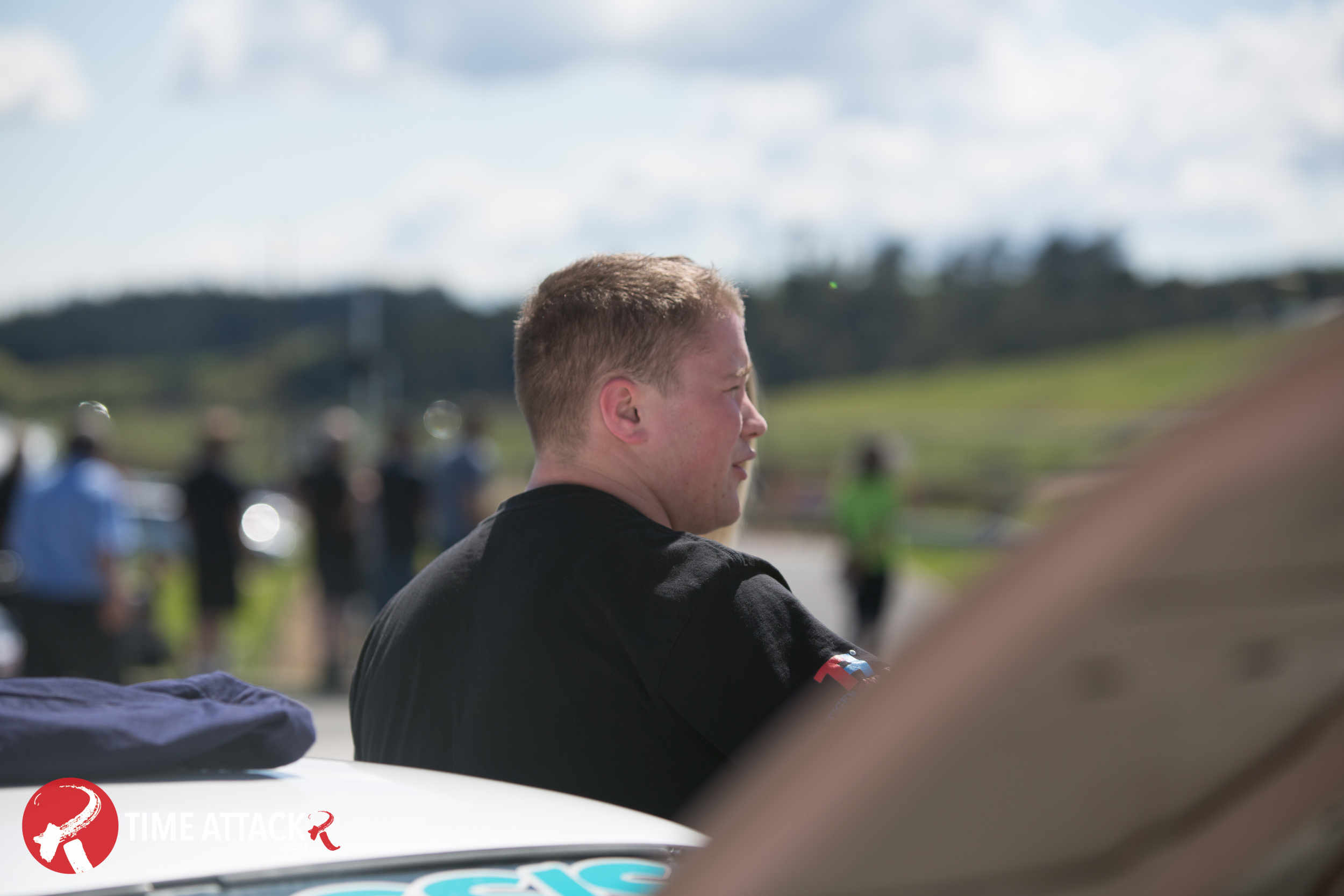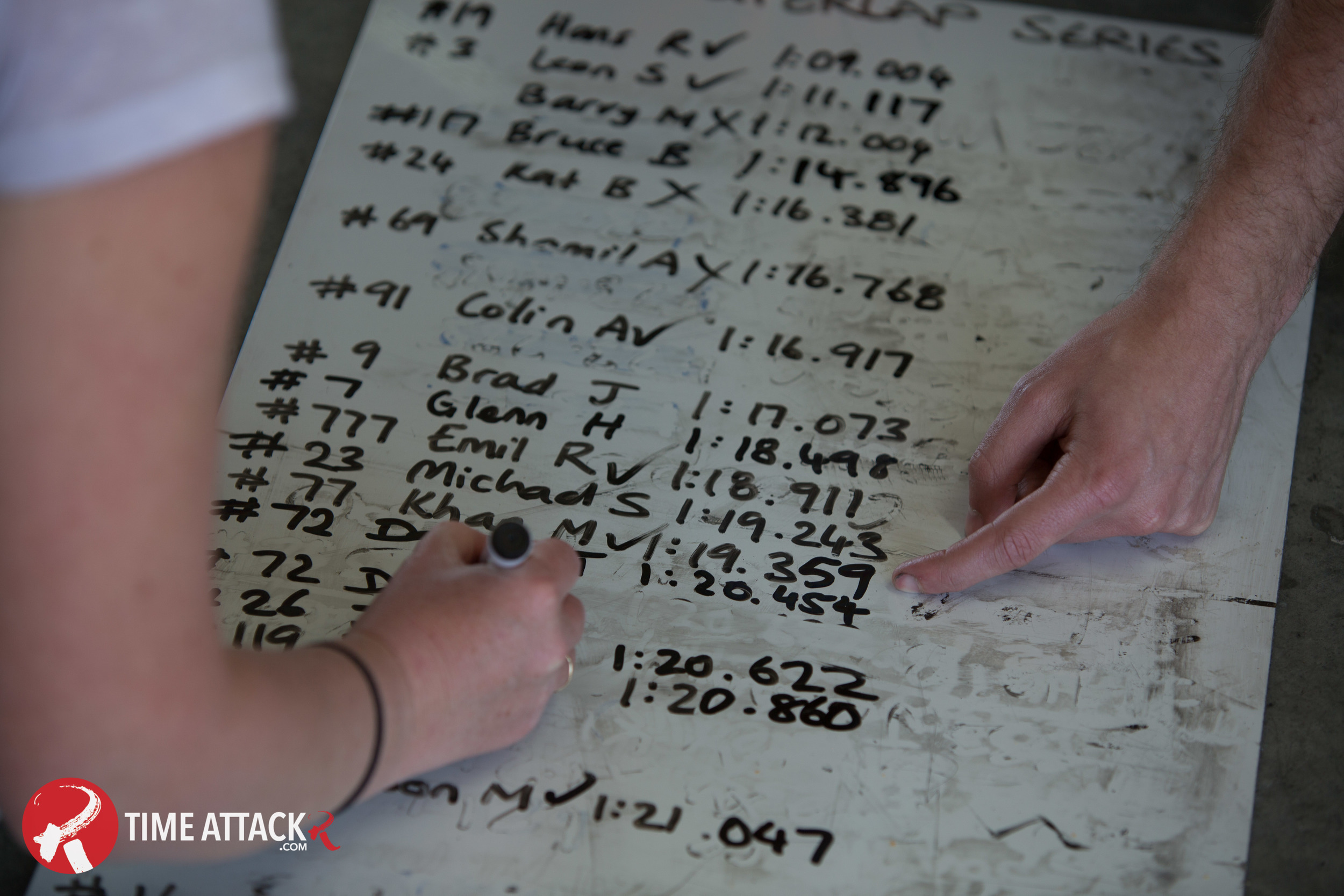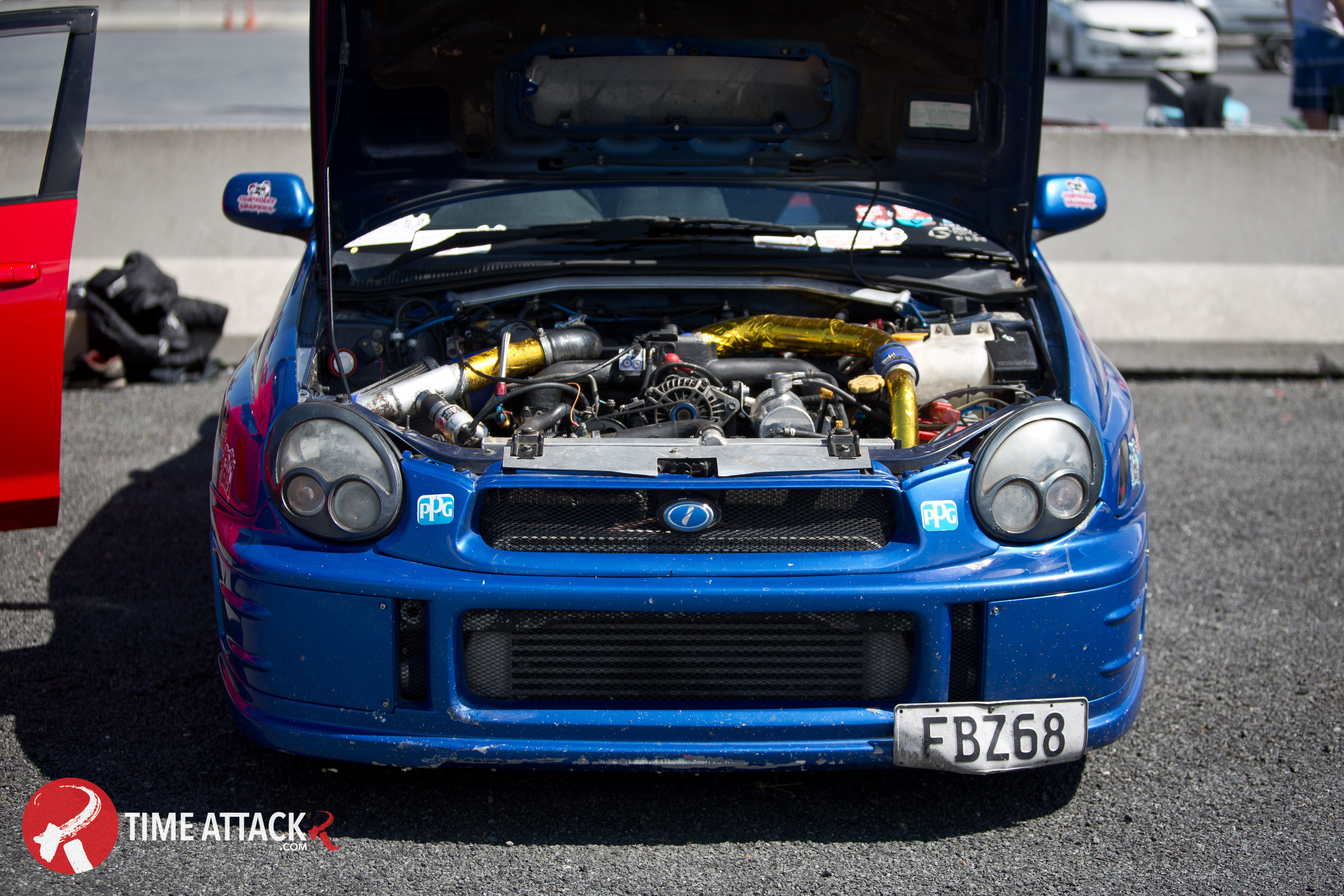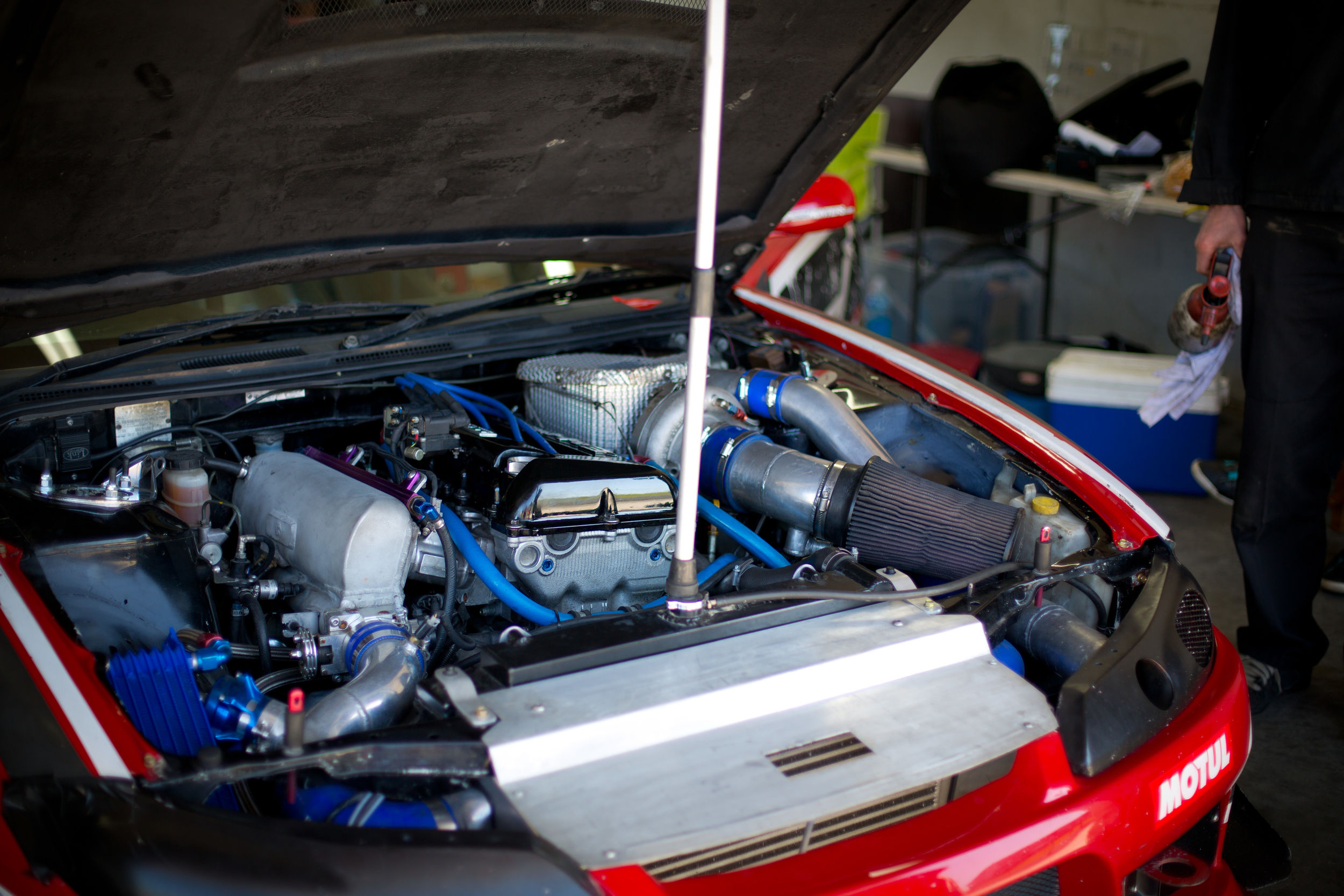“When we first saw Daniel Meredith’s EK Civic out on the racetrack, it was making noises an EK shouldn’t at a pace much faster than expected… We had to know more…”
With time attack racing still somewhat in its infancy compared with other mainstream motorsports, we’re starting to see some pleasantly surprising out of the box thinking from some competitors around the world. Common and effective setups are being thrown out the window in the hope for something extraordinary — something Daniel Meredith knows all too well.
When the time attack bug really bit hard for Daniel, he was the proud owner of this silver Honda Civic EK, complete with a small-capacity rev-happy B16A2 engine. Now, the B16A engine is no slouch in factory trim, but if one were to make an impression in the time attack scene, a serious upgrade would need to take place. The obvious progression in this day and age would most certainly be a K-series engine.
BYP Racing are experts with the K-series engine, Hondas, and time attack racing. Nearly every single vehicle that leaves their workshop flies out the door with a K-swap of sorts, so they were the obvious choice for swapping in a K24/K20 hybrid monster.
First, though, BYP Racing set the Civic up for the extra grunt, with a 4x100 Integra Type R brake upgrade, replaced the suspension bushes throughout, installed a larger rear sway bar and GAB SSR coilovers, and an XT Racing GPX Pro 8 lap timer.
Both Daniel and the Civic were now ready for some track time. With the K-swap completed and a set of 15x7-inch Advan RG wheels wrapped in 205/50R15 AD08R street tyres fitted, Daniel visited Wakefield Park for the final round of the Advan Neova Cup and took out first place in the N/A engine category with a rapid lap time of 1:08.1 seconds. After this win, some drag racing followed, with the little Civic managing an impressive time of 12.3 seconds down the quarter mile and yet another trophy at the 2015 Jamboree.
Following this, only minor cosmetic enhancements came, this time in the form of an immaculate set of blue Volk TE37 wheels measuring 16x8-inches. With the extra width came bigger tyres, with the little Civic now running 225/45R16 Advan AD08R tyres. With the new tyres, Daniel managed to be the fastest front-wheel drive vehicle at the second round of the 2015 Nulon Nationals.
Progression after progression — Daniel was at it again. The entire SPM/PCI aero kit was supplied by the BYP team and installed in-house. Daniel’s times further improved, but most impressively, at Sydney Motorsport Park, by setting the new record for a front-wheel drive equipped with Advan AD08R tyres with a time of 1:46.7 seconds.
With the little EK Civic now performing well above what most would imagine possible for a front-wheel drive vehicle, Daniel still wanted more from the constantly developed chassis. After a lengthy discussion with the BYP Racing team, it was decided that in the lead up to the 2015 Yokohama World Time Attack Challenge, the K24 were to be boosted by means of a Rotrex supercharger kit.
To handle the planned 18psi of boost pressure the Rotrex kit would soon dish out to the K-series engine, the BYP team forged the bottom end. In no time at all, thanks to a relatively straightforward installation process and swift bottom end rebuild, the Civic was on the dyno being tuned. With a result of 330kW at the wheels on 18psi of boost, Daniel knew that another tyre upgrade would be in order to make use of it. Guards were spaced to align with WTAC regulations, and on went a set of 17-inch wheels with 255/40R17 Advan AD08R tyres. This upgrade was enough to beat the outstanding Wakefield AD08R previously held by BYP, with a 1:05.4.
With only two weeks to go until WTAC, the BYP team and Daniel made the decision to reduce weight yet again and dial the setup in during a private testing session at Sydney Motor Sport Park. With the Civic now down to 990kg wet without a driver, the team was confident in its capabilities. During the test day, the BYP team managed to pedal the Civic to an impressive 1:38.9 second lap time, which was faster than the winning 2014 Club Spring time, and 0:0.2 seconds off the Club Sprint record at this circuit.
With the keys handed over after testing, it now up to Daniel to take a handle on the Civic’s new found capabilities and string together the ‘one perfect lap’. Throughout the day, Daniel managed to stay ahead of everyone in the class and proceeded to blow everybody away with the pace of his Civic. With a final time of 1:39.44 he dominated anything and everything in its way.
It was an extreme delight to see Daniel’s EK Civic in action at the Vic Time Attack Challenge because it was a build that really resonated with me. I too owned an EK Civic last year, and if it weren’t for my move to Australia just recently, it would have been my time attack project too. Daniel’s Civic shows what can be achieved with the affordable and lightweight chassis, with a budget some would spend on an engine alone. Our hats go off to Daniel and the entire BYP Racing team for producing something so competitive with just what some would call the basics.
